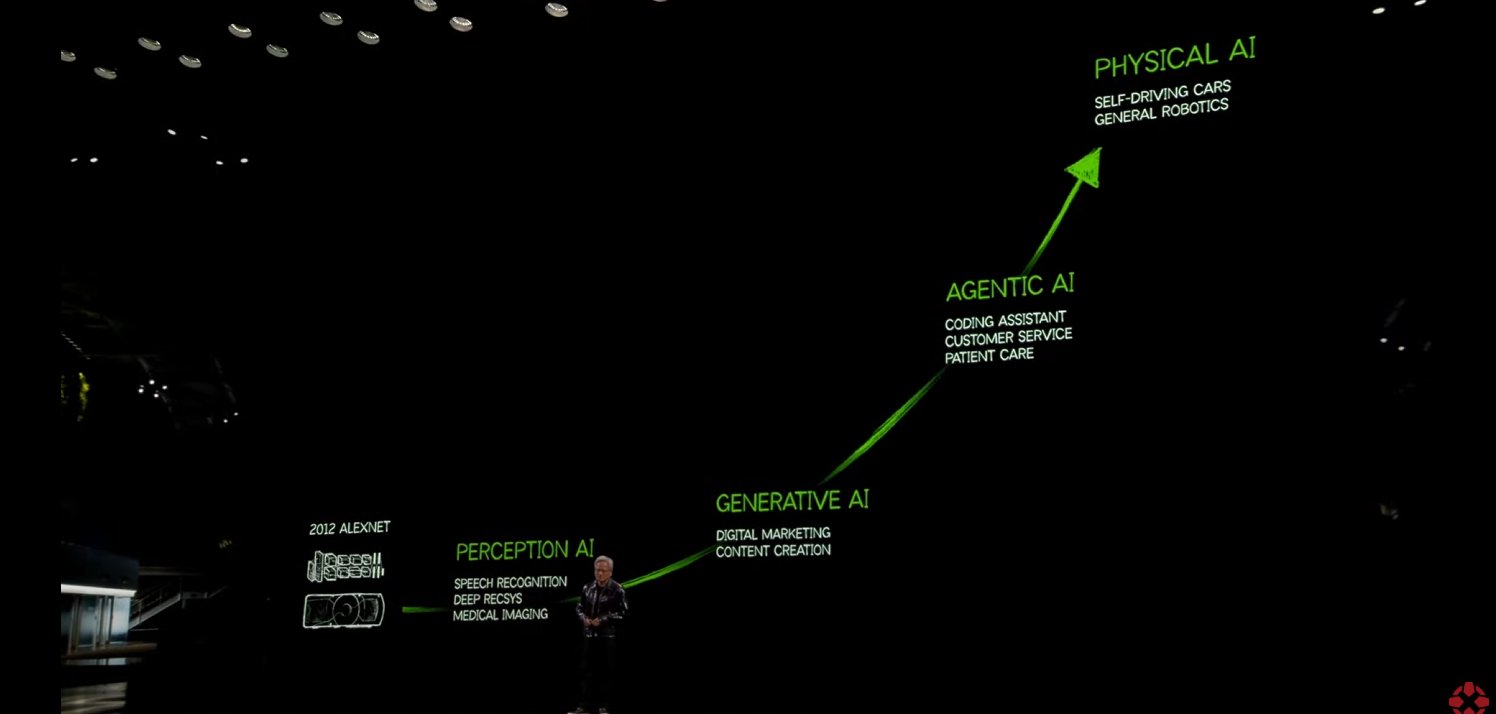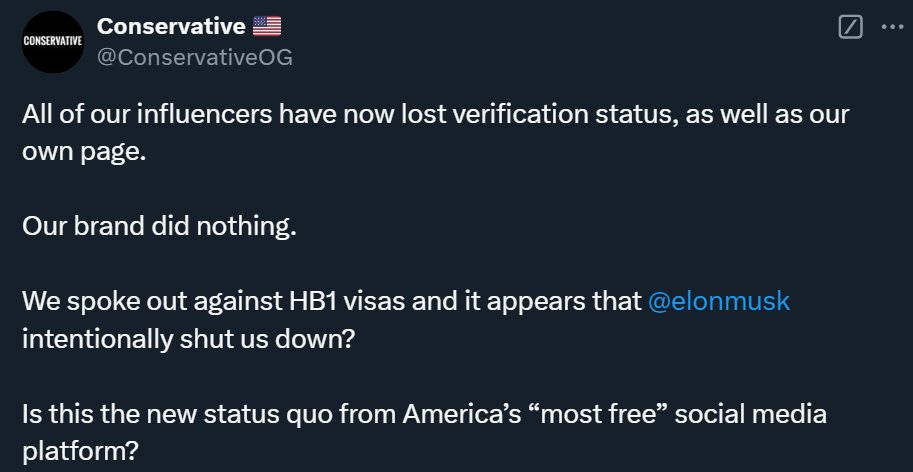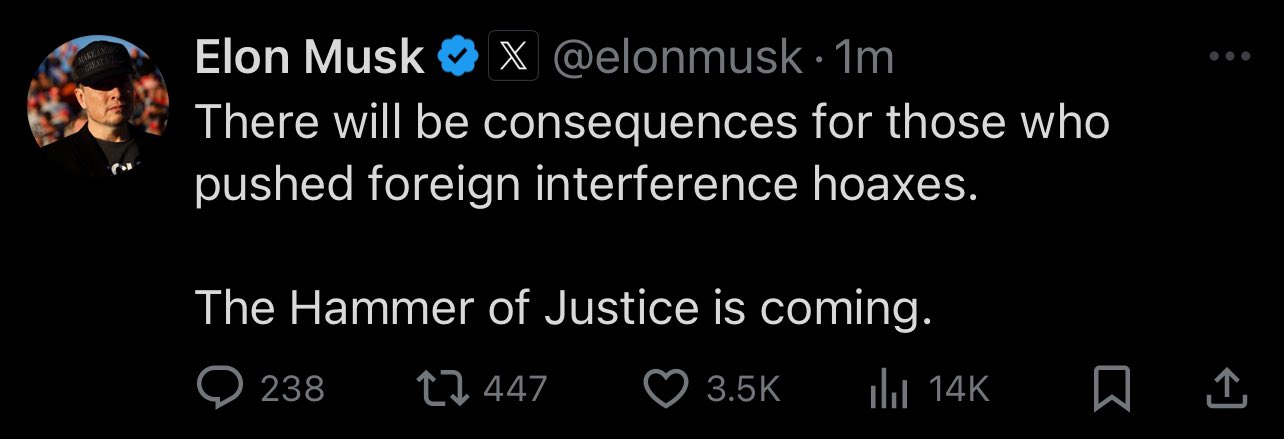-
 @ 513d5051:8a622026
2025-01-08 01:19:55
@ 513d5051:8a622026
2025-01-08 01:19:55I've noticed some of my posts they become a kind 1 event while others become a kind 30023 event^1.
So if you see this post[^2] published as a note and has a bunch of markdown, and then another super simple post[^3] becomes an article.
How do you think it should behave?
I personally gravitate towards publishing everything as articles (kind 30023) since clients usually enable markdown to render them as we do, this is how we'll port the content to Nostr the closest to SN most of the time IMO.
[^2]: Complex post turned note [^3]: Simple post turned article
originally posted at https://stacker.news/items/841530
-
 @ 513d5051:8a622026
2025-01-08 00:46:07
@ 513d5051:8a622026
2025-01-08 00:46:07It angers me.
We just want freedom for fuck sake.
originally posted at https://stacker.news/items/841507
-
 @ 000002de:c05780a7
2025-01-07 22:33:18
@ 000002de:c05780a7
2025-01-07 22:33:18Many years ago I read Linchpin: Are You Indispensable? by Seth Godin. It should be read by anyone entering their working years. Probably more relevant than ever.
The thing is, whether its machines or cheap labor we all are competing for work. Godin was the first person I heard explain how government schools are designed to create conformity and limit creativity. Reading this book opened by eyes to a new way of viewing work.
Using emotional energy in ANY job whether you are cleaning tables in a coffee shop, writing code, or fixing plumbing issues. Being human and caring are things that are hard to find because it takes work.
Doing good work in and of itself is rewarding. Phoning it in is not.
Great book.
originally posted at https://stacker.news/items/841353
-
 @ 513d5051:8a622026
2025-01-07 22:13:27
@ 513d5051:8a622026
2025-01-07 22:13:27The Brazilian government has announced they have started monitoring every citizen's financials if their monthly accumulated movement (inflow + outflow) exceeds the equivalent to 819 dollars^1.
What is included in their surveillance: - All accounts (regular, savings, investment) balance, payments, cheques, transfers, yields, and redeems - Movement between accounts owned by the same person - Purchase and sale of foreign currencies - Investments credits, debits, purchase, sale, redeem, and liquidations - Pensions and insurances - Credit pools (often people do this to acquire expensive assets without paying too much interest)
Obviously this is a socialist/communist leaning government, so intervention and control is their bread and butter. They have introduced many new taxes after they came into power, but since they got some push back and our central bank isn't obeying them (they are independent but heavily pressured/influenced) to lower interest rates, they are trying to steal (through taxes) a lot more money from people to enable them to spend more and to help their accounts end every year less negative due to the consequences they've been suffering.
The only real answer would be to go full sovereign, close all accounts and only deal in Bitcoin or if I need fiat to keep the physical version instead. But that's too painful as you become isolated from the rest of the society.
What is the best answer?
originally posted at https://stacker.news/items/841315
-
 @ 5d4b6c8d:8a1c1ee3
2025-01-07 21:09:20
@ 5d4b6c8d:8a1c1ee3
2025-01-07 21:09:20Am I only writing this post because I thought the name was dope?
Pretty much, but I'm also bored and it's been about a week since I joined the ownership group of ~Stacker_Sports, so let's take a look at how the territory's done this past week.
Territory Stats
| Posts | Comments| Stacking | Spending | Revenue | |-------|-------------|-----------|-----------|-----------| | 53 | 880! | 51k | 77.6k | 19.6k |
Awesome! We're well on our way to a profitable month.
Posts of the week
- by zaprank: Stacker Sports- Special Announcement
- by comments: NFL Weekly Pick 'em- Week 18
- by sats: NCAA College Football Playoff Points Challenge- SemiFinal Picks
I'm open to suggestions about what should go in these reports. Like I said at the top, I'm mostly doing this because I didn't want to waste the sweet ass name.
originally posted at https://stacker.news/items/841205
-
 @ 000002de:c05780a7
2025-01-07 19:26:02
@ 000002de:c05780a7
2025-01-07 19:26:02I was listening to the No Agenda podcast a few weeks ago and they played a clip from a programmer who goes by the handle the Primagen. He's an entertaining guy. He actually has a lot of good takes on programming topics.
He started talking about Artificial general intelligence. His focus was Sam Altman's recent comments about AGI being just around the corner. The Primagen brought up a point I hadn't heard anyone mention.
Why would a company create an artificial general intelligence that can create apps and entire infrastructures from a prompt and just sell access to it?
Why wouldn't they keep it a trade secret and just use it themselves? If you believed in your AGI wouldn't that make more sense? So does Altman really believe what he is pitching or is it typical fiat hype? A company like Altman's could use AGI to basically destroy all the competition and take over the tech world? Could they not? Its a big if, but If they create an AGI that can just create things it thinks up why would you want to sell that as a service instead of just owning all the amazing things it creates?
Here's what I think. The AGI Altman is talking about is mostly hype. It will not be able to create the next Facebook or Google. It might be able to make some crappy copies of apps at best. Look at the LLM tools we have today like ChatGPT. They can mimic patterns. They can copy writing styles that were created by humans but the majority of what they produce is pretty easy to spot as AI crap. At least it has been for me up to this point. It tends to function better the more a writing style has consistent patterns. True innovation breaks from patterns in interesting ways but builds upon them.
Many people are just blown away by ChatGPT. I find these people tend to be anything but critical thinkers. They also tend to have little experience with software engineering. I'm impressed with many of these tools but the more I understand how they work the less magical it becomes and the more I see the OZ pulling the strings.
All that said, I do not believe AGI is not right around the corner. That's a myth. I've been hearing that for the last 10 years. It's always right around the corner. And yet, people seem to still fall for this. Sam Altman is a pitchmen. Pretty much any founder in Silicon Valley is as well. You really have to take everything they say with a grain of salt because they are all pitchmen, they are marketing their products trying to get fiat funding. They are trying to get eyeballs they can sell.
They're always going to paint everything in the most rosy light. And that's really what you have to understand. You have to be skeptical, because most of the time you're being hyped. I've been around technology and worked in tech field long enough to see the patterns repeat.
I'm not saying there won't be improvements to "AI". I'm not saying that it hasn't already improved. It's useful, but it is not a general intelligence, and it is not going to take the jobs and engineers any time soon. I hesitate to even say any time soon as I doubt it will ever take engineer's jobs because there is always going to be a need for people that know how things work. No matter how advanced artificial intelligence becomes, it is not actually intelligence. It is at best an algorithm that mimics human patterns. There is no creativity. There is only human creativity. There is our human creativity being used as the seed. But humans are weird. We're organic. We're not machines. As patterns form someone breaks out of the pattern in a new and interesting way.
I'd love to hear counter arguments. Why would it make more sense to sell access to AGI vs. using it for yourself?
originally posted at https://stacker.news/items/840982
-
 @ 2e8970de:63345c7a
2025-01-07 17:01:49
@ 2e8970de:63345c7a
2025-01-07 17:01:49Besides the obvious nonsensical unlabeled Y-axis: It's an interesting narrative for sure but I do find it quite weird. I never saw robotics ("physical AI") as an evolution or the next step of other AI disciplines. Also "perception AI" like classification or regression as a lower evolutionary step of this field. I rather see it as another category to the side of it.
It also implies that all work on robotics before next gen chatbots are work in their infancy or stuff humankind wasted their time on because we weren't ready for it yet?
Curious - what do you think about this narrative?
originally posted at https://stacker.news/items/840769
-
 @ 2e8970de:63345c7a
2025-01-07 16:29:41
@ 2e8970de:63345c7a
2025-01-07 16:29:41

https://www.nvidia.com/en-us/project-digits/
What do you think? I can't help but notice how the form factor is super similar to the new Mac Mini. Which is weird because the development time for such a project should be longer than between these two announcements. Also why are we seeing a comeback in desktops in 2024?
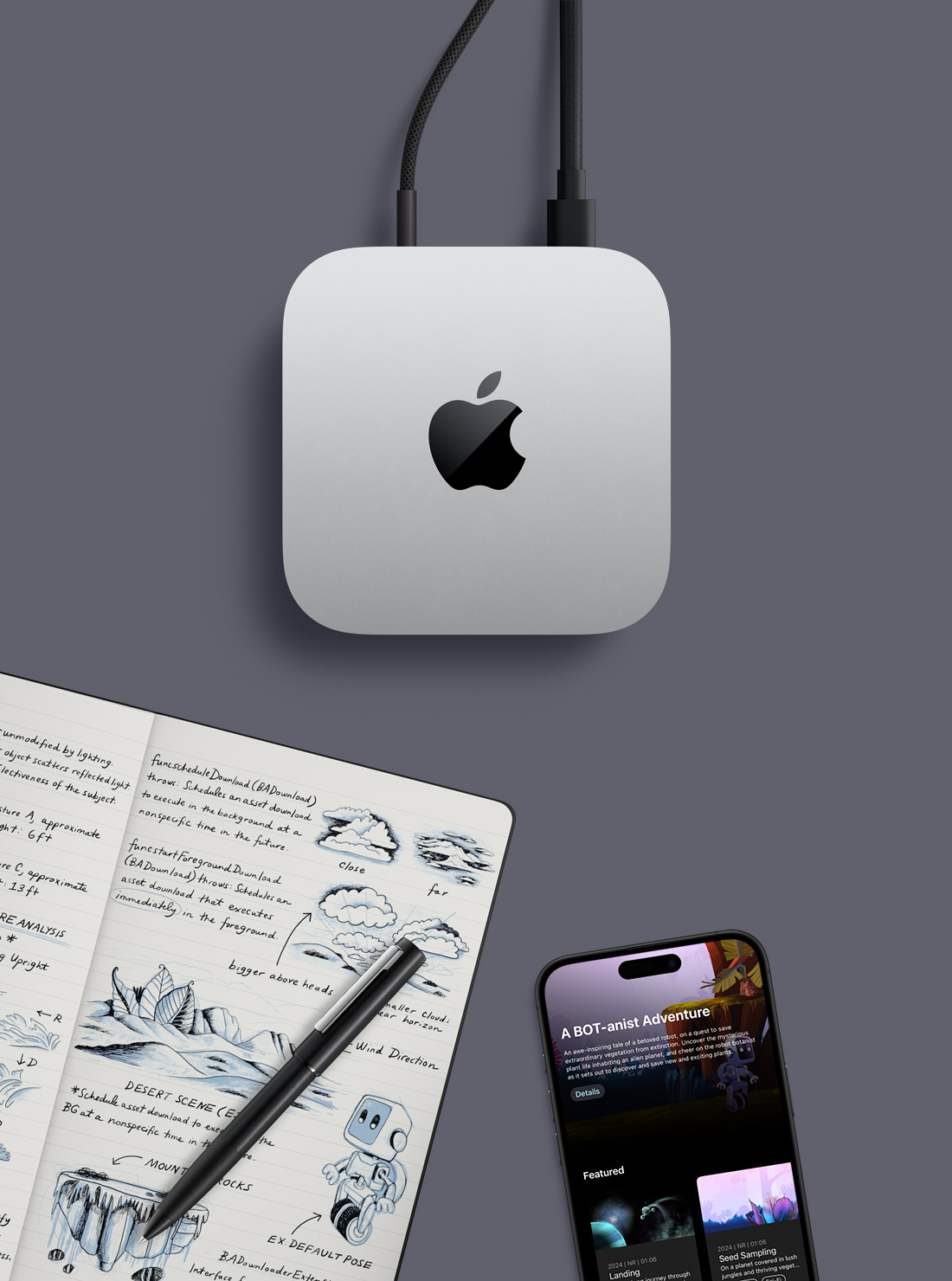
I can't help but feel like something is happening behind the scenes. Is this coordinated for something in the future to happen where desktops are needed again? Or a common reason instead of coordinated? Maybe this something is as simple as locally hosted chatbots. But then again: didn't desktops unambiguously move on to the iMac & Surface-Studio form factor? Is there some huge innovation in display tech just around the corner that they aren't telling us about yet? Are they planning on selling VR to the world?
I'm probably overthinking here, isn't it? On the other hand I cannot think of any reason why Nvidia would waste their time with desktop PCs now.
originally posted at https://stacker.news/items/840717
-
 @ 2063cd79:57bd1320
2025-01-07 07:12:48
@ 2063cd79:57bd1320
2025-01-07 07:12:48Der letzte Artikel stand ganz im Zeichen von Mempool, Transaktionsgebühren, Ordinals, BRC-20 Tokens (aka Shitcoins auf Bitcoin) und Mining-Rewards. Der Mempool ist voller als der Hyde-Park in London am einzigen Sommertag mit Sonne im Jahr. Doch weil ich mich in letzter Zeit zu Genüge mit den vorgenannten Themen beschäftigt habe und man zur Zeit an jeder Ecke den Status des Mempools ungefragt eingeflößt bekommt, möchte ich mich diese Woche mit zwei Standpunkten beschäftigen, die entweder gegenläufig oder komplementär zueinander stehen (gibt es wirklich kein Antonym zum Wort komplementär?).
Ausschlaggebend für den Gedankengang, der mich zu dieswöchigem Artikel bewegt hat waren ein Artikel und eine Podcast-Episode, über die ich letzte Woche gestolpert bin. Bei dem Artikel handelt es sich um Jimmy Songs "How Fiat Money Broke the World" aus seiner Fixing the Incentives-Reihe im Bitcoin Magazine und bei der Podcast-Episode wurde ich von den Ausführungen von Peruvian Bull im TFTC Podcast Ausgabe 414: The Dollar Endgame von Marty Bent zum Nachdenken angeregt.
Prinzipiell stellt sich im Großen und Ganzen die Frage, wie eine großflächige Adaption von Bitcoin vonstatten gehen könnte. Hyperbitcoinization oder auch Bitcoin als gesetzliches Zahlungsmittel (wie z.B. in El Salvador, oder bald sogar in Indonesien und Mexiko (!)) sind dabei mögliche Szenarien. Der Nicht-Ghandi-Spruch “First they ignore you, then they laugh at you, then they fight you, then you win.” wird oft genutzt, um die soziologische Entwicklungsstufe, bzw. die öffentliche Wahrnehmung einer Idee, einer Erfindung oder eines Produkts in gewisse Entwicklungsstufen einzuordnen. Genauso wie bei Bitcoin. WIR SIND IN DER "THEN THEY FIGHT YOU" STUFE!!!11! kann man überall auf Bitcoin-Twitter, Nostr oder Reddit lesen.
Doch wer ist "THEY"? Wenn man nur von Nationalstaaten ausgeht und offizielle und inoffizielle (konspirative) multinationale Interessensgruppen außen vor lässt, stellt sich mir die Frage, welches Land / welcher Staat die meisten Gründe (politischer oder wirtschaftlicher Natur) hätte, Bitcoin zu adaptieren, bzw. zu bekämpfen. Natürlich kommen einem dabei als erstes die USA in den Sinn, immerhin das Land mit der höchsten kombinierten Bitcoin-Hashrate, mit den meisten Bitcoin-Infrastruktur-Anbietern, mit den größten Börsen (nach Handelsvolumen) und den meisten Bitcoin-Nutzer//innen in der Bevölkerung.
Doch macht das die USA zum größten potentiellen Gegner oder zum größten potentiellen Befürworter und Begünstigten von Bitcoin?
Jimmy Song "How Fiat Money Broke the World"
Jimmy Song baut seinen Artikel chronologisch auf. Es geht um die Entstehung des Fiat-Geld-Systems nach dem zweiten Weltkrieg und die damit einhergehende Abschaffung des Goldstandards. Mit der Errichtung des Bretton-Woods-Systems wurde eine neue Währungsordnung geschaffen, die den US Dollar als Ankerwährung bestimmte, der wiederum an Goldreserven gekoppelt werden sollte. So sollten flexible Wechselkurse innerhalb der verschiedenen Landeswährungen gewährleistet werden, während gleichzeitig die Sicherheit von Goldreserven existiert. Doch statt Gold für die internationale Handelsabwicklung zu verwenden, wurde nun der Dollar die Abwicklungswährung. Diese Entscheidung verhalf den USA zu einer hegemonialen Wirtschaftsmacht zu werden, denn die Fähigkeit, das Geld zu drucken, mit dem jedes andere Land seinen Handel abwickelte, gab den USA mehr Macht über den Rest der Welt.
 Diese Dollar-Hegemonie begünstigte die USA deutlich im internationalen Handel, da sie zur Zentralbank für alle anderen Zentralbanken wurden. Nicht-US-Banken geben sogar Verbindlichkeiten in Dollar, und zwar nicht nur in Europa, sondern in vielen anderen Teilen der Welt. Infolgedessen halten andere Zentralbanken US Dollar als Reserve, die dann auf der Basis von Teilreserven verwendet werden können, um noch mehr Geld in Form von Krediten zu schaffen (das sogenannte Eurodollar-System).
Diese Dollar-Hegemonie begünstigte die USA deutlich im internationalen Handel, da sie zur Zentralbank für alle anderen Zentralbanken wurden. Nicht-US-Banken geben sogar Verbindlichkeiten in Dollar, und zwar nicht nur in Europa, sondern in vielen anderen Teilen der Welt. Infolgedessen halten andere Zentralbanken US Dollar als Reserve, die dann auf der Basis von Teilreserven verwendet werden können, um noch mehr Geld in Form von Krediten zu schaffen (das sogenannte Eurodollar-System).Diese Position der Stärke nutzten die USA weiter aus und erschufen, was heute als das Petrodollar-System bekannt ist. Dank einem Abkommen zwischen Saudi-Arabien und den USA in den 1970ern wird das von allen Mitgliedsstaaten der OPEC geförderte Öl in US Dollar gehandelt, im Gegenzug für militärischen Schutz durch die USA. Das sogenannte Petrodollar-System hat dem US Dollar somit einen enormen Wert und hohe Liquidität verliehen.
Die war auch nötig, denn teure Sozialprogramme wie Medicare und Medicaid als auch das Social Security Programm wurden gestartet. Aber auch sehr teure Stellvertreterkriege, wie z.B. in Korea und Vietnam, wollten finanziert werden. Dies taten die USA, indem sie das Geld hierfür einfach druckten, was wiederum die Zentralbanken der anderen Länder nervös machte und dazu brachte, mit dem Abzug ihrer Goldeinlagen bei der US-Notenbank zu drohen. Der damalige Präsident Tricky Dick (Richard Nixon) reagierte darauf, indem er die Goldbindung des US Dollar zunächst nur temporär für immer aufhob. Damit hatte er den Dollar vom Gold ent- und an das Öl der Saudis (bzw. an den militärisch-industriellen Komplex der USA) gekoppelt.
Die USA haben also das exorbitante Privileg, das Geld drucken zu können, das die Welt für die Abwicklung von Handel verwendet. Dies bedeutet unter anderem, dass die USA ihre gedruckten Dollars exportieren und Waren und Dienstleistungen aus anderen Ländern importieren können. Somit wird das gedruckte Geld im Allgemeinen zuerst in den USA ausgegeben (Cantillon-Effekt in Reinform), was dazu führt, dass Geschäftserfolg in den USA zu einer viel höheren monetären Belohnung führt, als in anderen Ländern. Vereinfacht gesagt: In den USA schwimmt mehr Geld umher und somit wird Erfolg besser belohnt. Folglich wollen mehr Menschen in die USA ziehen, und die USA können auswählen, wer hineinkommt und wer nicht. Gut für die USA - schlecht für die anderen.
 Die ehrgeizigsten Menschen aus anderen Ländern immigrieren in die USA und verdienen mehr Geld und leben ein viel besseres Leben als in ihren Heimatländern. Der Braindrain bedeutet, dass andere Länder unterm Strich verlieren. Menschen im Allgemeinen versuchen immer in Länder einzuwandern, die in der Cantillon-Hierarchie höher stehen. Die reichen Länder werden somit reicher an Humankapital, während die armen Länder an Humankapital ärmer werden.
Die ehrgeizigsten Menschen aus anderen Ländern immigrieren in die USA und verdienen mehr Geld und leben ein viel besseres Leben als in ihren Heimatländern. Der Braindrain bedeutet, dass andere Länder unterm Strich verlieren. Menschen im Allgemeinen versuchen immer in Länder einzuwandern, die in der Cantillon-Hierarchie höher stehen. Die reichen Länder werden somit reicher an Humankapital, während die armen Länder an Humankapital ärmer werden.Die USA schaffen es, ihre Stellung als Neuzeit-Kolonialist vor allem mit Hilfe von Sonderorganisationen, internationalen Finanzinstitutionen und anderen Stiftungen wie dem IWF, der BIZ, des WEF oder der Weltbank zu zementieren. Diese supranationalen Banken und Organisationen leihen Entwicklungsländern und "Ländern des globalen Südens" Geld für den (Wieder-) Aufbau und andere Struktur-relevante Tätigkeiten, aber nur unter strengen Auflagen, die noch strenger werden, wenn diese Kredite nicht zurückgezahlt werden können. In diesen Fällen werden diese Länder dann von den Banken "gerettet", unter der Auflage, noch mehr Kontrolle über die eigene Finanzsuveränität abzugeben.
 Im Wesentlichen tauschen sie dabei Kredite und längere Laufzeiten gegen organisatorische Kontrolle über den Staatshaushalt. Solche Beschränkungen können Punkte beinhalten, wie z.B. wieviel des nationalen Budgets für Infrastruktur ausgegeben werden kann. Oft müssen diese verschuldeten Regierungen eine eigene unabhängige Zentralbank gründen, die dazu verwendet werden kann, die Notwendigkeit einer staatlichen Genehmigung zu umgehen. So werden Länder dazu gebracht Staats-Ressourcen, wie Schürfrechte oder Ländereien an ausländische Unternehmen zu verkaufen.
Im Wesentlichen tauschen sie dabei Kredite und längere Laufzeiten gegen organisatorische Kontrolle über den Staatshaushalt. Solche Beschränkungen können Punkte beinhalten, wie z.B. wieviel des nationalen Budgets für Infrastruktur ausgegeben werden kann. Oft müssen diese verschuldeten Regierungen eine eigene unabhängige Zentralbank gründen, die dazu verwendet werden kann, die Notwendigkeit einer staatlichen Genehmigung zu umgehen. So werden Länder dazu gebracht Staats-Ressourcen, wie Schürfrechte oder Ländereien an ausländische Unternehmen zu verkaufen.Jimmy Song führt seinen Artikel noch etwas fort, doch die mir wichtigsten Punkte habe ich erwähnt. Kurz zusammengefasst: Die USA haben durch die de facto Kontrolle über das Geld eine Sonderposition in der Welt. Nicht nur sitzen sie am Gelddrucker - Geld drucken kann jeder, klappt eben nur unter bestimmten Voraussetzungen (zumindest zeitweise) - sondern haben durch diese Kontrollsituation weitere Vorteile: 1) Das größte Exportgut der USA ist der US Dollar. 2) Die US-Wirtschaft hat einen klaren Vorteil anderen Wirtschaften gegenüber, da das Unternehmertum dort besser belohnt wird. 3) Viele ehrgeizige und talentierte Menschen der ganzen Welt strömen in die USA, um von dieser Belohnung zu profitieren. 4) Die internationalen Buchstabensuppen-Finanzinstitutionen stärken den USA den Rücken.
Die USA haben also ein sehr großes (das gröte) Interesse daran, das globale Finanzmonopol in der aktuellen Form aufrechtzuerhalten.
Peruvian Bull "The Dollar Endgame"
Die Ausgangsthese von Peruvian Bull, einem Autor, der ein gleichnamiges Buch veröffentlicht hat (The Dollar Endgame) ist, dass viele Zeichen darauf hindeuten, dass der US Dollar als Leitwährung der Welt seine letzten Atemzüge macht. Er ist dabei recht pessimistisch und glaubt, dass wir schon in den nächten fünf bis sieben Jahren eine große Veränderung erleben werden.
Allerdings sieht er eine große Chance für die USA, Bitcoin zu nutzen, um diesem Untergang entgegenzuwirken. Viele Länder und Institutionen außerhalb der westlichen Welt sehen den US Dollar kritisch und sind nicht besonders glücklich über die Vormachtstellung, die der Dollar den USA auf dem internationalen Finanzmarkt, dem globalen Handel und der geopolitischen Weltordnung verleiht. Die US-Notenbank wird immer mehr in die Ecke gedrängt und der einzige Ausweg aus der momentanen Schuldenspirale ist Hyperinflation.
 Meine zwei Sats sind, dass eine Wahrscheinlichkeit natürlich immer besteht, allerdings bin ich persönlich davon überzeugt, dass der US Dollar, wenn überhaupt, die letzte Währung sein wird, die eine Hyperinflation erlebt, da vorher ganz andere Währungen das Zeitliche segnen müssten.
Meine zwei Sats sind, dass eine Wahrscheinlichkeit natürlich immer besteht, allerdings bin ich persönlich davon überzeugt, dass der US Dollar, wenn überhaupt, die letzte Währung sein wird, die eine Hyperinflation erlebt, da vorher ganz andere Währungen das Zeitliche segnen müssten.Doch um bei der These zu bleiben, bietet Bitcoin eine alternative Lösung zur Hyperinflation. Denn die USA könnten ihre Verluste reduzieren, indem sie auf eine Bitcoin-gestützte Leitwährung wechseln. Dazu sind die USA auch bestens aufgestellt: Die von Minern aufgebrachte Hashrate ist nirgendwo größer, als in den USA, Bitcoin-Bestände in Wallets sind nirgendwo größer als in den USA und die größten Bitcoin-Unternehmen, Unternehmen die Bitcoin fördern, oder Technologie entwickeln, die Bitcoin zugute kommt, sitzen in den USA.
Würden die USA, bzw. die US-Notenbank, zu einem Bitcoin-gestützten Währungssystem wechseln, müssten alle anderen Länder der Welt nachziehen, solange die USA diese (oben beschriebene) globale Vormachtstellung in der Weltwirtschaft noch innehaben. Dies würde den USA einen gewaltigen First-Mover-Vorteil bescheren, da nirgendwo sonst die Infrastruktur und der Zugang zu Bitcoin so stark ausgeprägt sind.

Es ist also nur eine politische Entscheidung, ob dieser First-Mover-Vorteil ausgenutzt wird oder nicht. Indem die Nutzung (institutioneller oder privater Art, Mining, Innovation, etc.) eingeschränkt wird, z.B. durch Verbote, Besteuerung, oder andere ungünstige Gesetze, wird die gesamte Branche und damit das technische Wissen, die Innovation und das damit verbundene Kapital ins Ausland verdrängt und die USA schießen sich ins eigene Bein.
Es wird sicherlich institutionellen Widerstand geben, da die derzeitigen institutionellen Akteure stark vom aktuellen System profitieren und daher nicht zu einem Bitcoin-Währungssystem wechseln wollen, in dem sie keine Zensurrechte und keine exklusiven Übertragungsrechte haben. Daher werden US-Institutionen wie die Notenbank und das Finanzministerium von diesem Ansatz nicht allzu begeistert sein, doch wenn sie es ernsthaft genug betrachten und erkennen, dass es sich hierbei um eine Form der geopolitischen, strategischen Kriegsführung handelt, könnten sie gezwungen sein, ihre Meinung zu ändern und sich auf ein neues System vorzubereiten, das den Idealen, wie Freiheit, Redefreiheit, Eigentumsrechten und solides Geld, treu bleibt, auf denen die USA gegründet wurden.
Peruvian Bull und Marty Bent führen in dieser Episode noch weitere Punkte aus, doch die mir wichtigsten Punkte habe ich wieder erwähnt. Kurz zusammengefasst: Die USA stehen davor, ihre globale Vormachtstellung zu verlieren. Ein Ausweg könnte die Adaption von Bitcoin als Retter des US Dollar sein. Die USA haben den fruchtbarsten Nährboden für eine solche Änderung des Systems, da sie heute schon die meiste Hashrate, das größte geistige Eigentum und Innovation, als auch das meiste Kapital bündeln.
Die USA hätten also in der Theorie ein sehr großes Interesse daran, Bitcoin als Lösung und zur Stützung ihres globalen Finanzmonopols zu adaptieren.
Zwei Theorien in zwei entgegengesetzte Richtungen 👈👉
Auf der einen Seite sehen wir ein Argument, weshalb den USA daran gelegen wäre, das aktuelle System so lange wie möglich aufrechtzuerhalten und dem alten Mann auf Krücken unter die Arme zu greifen. Auf der anderen Seite besteht ein Argument dafür, dass die USA ein gesteigertes Interesse daran haben sollten, das alte System so schnell wie möglich hinter sich zu lassen und die Pole Position, die die USA im Bereich Bitcoin haben - ohne Regierungs-seitig was dafür getan zu haben - für sich zu nutzen, um dem alten Mann auf Krücken zu einer Verjüngung zu verhelfen.

Es ist schwierig einzuschätzen, welchen Weg die USA gehen werden, da es immer noch keinen allgemeinen Konsens darüber gibt, wie Bitcoin zu betrachten ist. Der kürzlich vorgestellte DAME-Gesetzesentwurf (Digital Asset Mining Energy excise tax), also eine Verbrauchssteuer für Miner, der Biden-Regierung, würde von Bitcoin-Mining-Unternehmen verlangen, eine 30% Steuer auf die Stromkosten zu zahlen, die für das Mining von Bitcoin verwendet werden. Ein solches Gesetz würde die Mining Industrie aus dem Land drängen, da Miner heute schon auf sehr knappen Margen operieren und somit unprofitabel würden. Dies gleicht einer Bestrafung von Unternehmen für das Streben nach Innovation und technologischem Fortschritt.
Auf der anderen Seite gibt es aber auch die Ansicht, Bitcoin müsse ins Land geholt werden, da man es dort am besten kontrollieren kann, ganz nach dem Motto "Halte deine Freunde nah und deine Feinde noch näher". So z.B. Carole House, ehemalige Direktorin für Cybersicherheit des Nationalen Sicherheitsrates des Weißen Hauses. Sie sprach bei einem Event an der Universität von Princeton und sagte "sie würde lieber mehr Hashrate in den USA sehen, damit sie Miner zwingen können, das Netzwerk zu zensieren" und dass es "nicht nur darum ginge, Minern zu sagen, dass sie bestimmte Transaktionen nicht in Blöcke einbauen, sondern auch nicht auf Blöcken mit nicht konformen Transaktionen aufzubauen, damit diese Transaktionen nirgendwo in der Kette ankommen".
Wir sehen also, dass es selbst zwischen den Gegnern von Bitcoin keinen endgültigen Konsens gibt, wie das Thema in Zukunft angegangen werden soll. Da ist esnicht verwunderlich, dass auf Ebene eines Paradigmenwechsels, den die Adaption von Bitcoin von Seiten der Notenbank bedeuten würde, noch unklarer ist. Für mich sind beide Erklärungen logisch. Allerdings wissen wir nur zu gut, dass Regierungen es manchmal nicht so mit Logik und Vernunft haben.
🫳🎤
In diesem Sinne, 2... 1... Risiko!

-
 @ 207ad2a0:e7cca7b0
2025-01-07 03:46:04
@ 207ad2a0:e7cca7b0
2025-01-07 03:46:04Quick context: I wanted to check out Nostr's longform posts and this blog post seemed like a good one to try and mirror. It's originally from my free to read/share attempt to write a novel, but this post here is completely standalone - just describing how I used AI image generation to make a small piece of the work.
Hold on, put your pitchforks down - outside of using Grammerly & Emacs for grammatical corrections - not a single character was generated or modified by computers; a non-insignificant portion of my first draft originating on pen & paper. No AI is ~~weird and crazy~~ imaginative enough to write like I do. The only successful AI contribution you'll find is a single image, the map, which I heavily edited. This post will go over how I generated and modified an image using AI, which I believe brought some value to the work, and cover a few quick thoughts about AI towards the end.
Let's be clear, I can't draw, but I wanted a map which I believed would improve the story I was working on. After getting abysmal results by prompting AI with text only I decided to use "Diffuse the Rest," a Stable Diffusion tool that allows you to provide a reference image + description to fine tune what you're looking for. I gave it this Microsoft Paint looking drawing:

and after a number of outputs, selected this one to work on:

The image is way better than the one I provided, but had I used it as is, I still feel it would have decreased the quality of my work instead of increasing it. After firing up Gimp I cropped out the top and bottom, expanded the ocean and separated the landmasses, then copied the top right corner of the large landmass to replace the bottom left that got cut off. Now we've got something that looks like concept art: not horrible, and gets the basic idea across, but it's still due for a lot more detail.

The next thing I did was add some texture to make it look more map like. I duplicated the layer in Gimp and applied the "Cartoon" filter to both for some texture. The top layer had a much lower effect strength to give it a more textured look, while the lower layer had a higher effect strength that looked a lot like mountains or other terrain features. Creating a layer mask allowed me to brush over spots to display the lower layer in certain areas, giving it some much needed features.

At this point I'd made it to where I felt it may improve the work instead of detracting from it - at least after labels and borders were added, but the colors seemed artificial and out of place. Luckily, however, this is when PhotoFunia could step in and apply a sketch effect to the image.

At this point I was pretty happy with how it was looking, it was close to what I envisioned and looked very visually appealing while still being a good way to portray information. All that was left was to make the white background transparent, add some minor details, and add the labels and borders. Below is the exact image I wound up using:

Overall, I'm very satisfied with how it turned out, and if you're working on a creative project, I'd recommend attempting something like this. It's not a central part of the work, but it improved the chapter a fair bit, and was doable despite lacking the talent and not intending to allocate a budget to my making of a free to read and share story.
The AI Generated Elephant in the Room
If you've read my non-fiction writing before, you'll know that I think AI will find its place around the skill floor as opposed to the skill ceiling. As you saw with my input, I have absolutely zero drawing talent, but with some elbow grease and an existing creative direction before and after generating an image I was able to get something well above what I could have otherwise accomplished. Outside of the lowest common denominators like stock photos for the sole purpose of a link preview being eye catching, however, I doubt AI will be wholesale replacing most creative works anytime soon. I can assure you that I tried numerous times to describe the map without providing a reference image, and if I used one of those outputs (or even just the unedited output after providing the reference image) it would have decreased the quality of my work instead of improving it.
I'm going to go out on a limb and expect that AI image, text, and video is all going to find its place in slop & generic content (such as AI generated slop replacing article spinners and stock photos respectively) and otherwise be used in a supporting role for various creative endeavors. For people working on projects like I'm working on (e.g. intended budget $0) it's helpful to have an AI capable of doing legwork - enabling projects to exist or be improved in ways they otherwise wouldn't have. I'm also guessing it'll find its way into more professional settings for grunt work - think a picture frame or fake TV show that would exist in the background of an animated project - likely a detail most people probably wouldn't notice, but that would save the creators time and money and/or allow them to focus more on the essential aspects of said work. Beyond that, as I've predicted before: I expect plenty of emails will be generated from a short list of bullet points, only to be summarized by the recipient's AI back into bullet points.
I will also make a prediction counter to what seems mainstream: AI is about to peak for a while. The start of AI image generation was with Google's DeepDream in 2015 - image recognition software that could be run in reverse to "recognize" patterns where there were none, effectively generating an image from digital noise or an unrelated image. While I'm not an expert by any means, I don't think we're too far off from that a decade later, just using very fine tuned tools that develop more coherent images. I guess that we're close to maxing out how efficiently we're able to generate images and video in that manner, and the hard caps on how much creative direction we can have when using AI - as well as the limits to how long we can keep it coherent (e.g. long videos or a chronologically consistent set of images) - will prevent AI from progressing too far beyond what it is currently unless/until another breakthrough occurs.
-
 @ d34e832d:383f78d0
2025-01-06 23:44:40
@ d34e832d:383f78d0
2025-01-06 23:44:40Lets explore three key aspects of Bitcoin technology to enhance your engagement with the ecosystem:
- Running an Alby Hub Cloud Instance
- Setting Up a Nutshell Ecash Mint on an Affordable VPS
- Integrating Nostr Wallet Connect for Seamless Tipping
These components empower users to manage transactions, ensure privacy, and facilitate smooth interactions within the Bitcoin and Nostr communities.
1. Running an Alby Hub Cloud Instance
Purpose and Benefits:
Alby Hub is a self-custodial Lightning wallet that allows you to manage Bitcoin transactions efficiently. By running an Alby Hub instance in the cloud, you gain 24/7 online access to receive payments via a Lightning address, integrate with various applications, and maintain control over your funds without the need for personal hardware.
Setting Up Alby Hub in the Cloud:
-
Choose Alby Cloud: For a hassle-free setup, Alby offers a cloud service where you can start your own hub in just 2 minutes. Give it A Try: Alby Cloud
-
Subscription Benefits: Subscribing to Alby Cloud provides you with a self-custodial Lightning wallet, 24/7 online access, exclusive partner deals, priority support, and access to a subscriber community.
-
Getting Started: Visit the Alby Cloud page, select the subscription that suits you, and follow the guided setup process to have your hub up and running quickly.
- Alby Cloud page
For a visual guide on setting up Alby Hub, you can watch the following tutorial:
2. Setting Up a Nutshell Ecash Mint on an Affordable VPS
Purpose and Benefits:
Nutshell is an implementation of Ecash, a digital cash system that prioritizes privacy and anonymity. Setting up a Nutshell Ecash mint on a Virtual Private Server (VPS) allows you to operate your own mint, enhancing transaction privacy and providing a backup system for your Bitcoin transactions.
Setting Up on a $5 VPS:
-
Select a VPS Provider: Choose an affordable VPS provider that supports Bitcoin and Nostr communities. For instance, SatoshiHost offers VPS services tailored for such needs.
-
Install Nutshell: After setting up your VPS, install the Nutshell software by following the official installation guide.
- Nutshell
-
Configure the Mint: Set up the mint parameters, including denomination and security settings, to suit your requirements.
-
Secure the Server: Implement security measures such as firewalls and regular updates to protect your mint from potential threats.
- Recommendations
- Server Tips
3. Integrating Nostr Wallet Connect for Seamless Tipping
Purpose and Benefits:
Nostr Wallet Connect (NWC) is an open protocol that enables applications to interact with Bitcoin Lightning wallets. Integrating NWC allows for seamless tipping and payments within Nostr apps, enhancing user experience and promoting engagement.
Integration Steps:
-
Choose a Supporting App: Select a Nostr app that supports NWC, such as Amythystor Damus.
-
Connect Your Wallet: Use NWC to link your preferred Lightning wallet to the Nostr app. This connection facilitates seamless payments without the need to switch between applications.
-
Test the Integration: Perform a test transaction to ensure that the tipping functionality works as intended.
-
Maintain Security: Regularly update your wallet and Nostr app to incorporate the latest security features and improvements.
For a deeper understanding of Nostr Wallet Connect and its significance, you can watch the following discussion:
Final Thoughts On Setup
Implementing these components enhances your interaction with the Bitcoin ecosystem by providing efficient transaction management, improved privacy, and seamless integration with Nostr applications. By running an Alby Hub cloud instance, setting up a Nutshell Ecash mint on an affordable VPS, and integrating Nostr Wallet Connect, you contribute to a more robust and user-friendly Bitcoin environment.
Invitation for Feedback
I encourage you to share any questions or feedback regarding these topics. Let's continue the conversation to explore how we can further engage with and improve upon these technologies.
-
 @ 3ffac3a6:2d656657
2025-01-06 23:42:53
@ 3ffac3a6:2d656657
2025-01-06 23:42:53Prologue: The Last Trade
Ethan Nakamura was a 29-year-old software engineer and crypto enthusiast who had spent years building his life around Bitcoin. Obsessed with the idea of financial sovereignty, he had amassed a small fortune trading cryptocurrencies, all while dreaming of a world where decentralized systems ruled over centralized power.
One night, while debugging a particularly thorny piece of code for a smart contract, Ethan stumbled across an obscure, encrypted message hidden in the blockchain. It read:
"The key to true freedom lies beyond. Burn it all to unlock the gate."
Intrigued and half-convinced it was an elaborate ARG (Alternate Reality Game), Ethan decided to follow the cryptic instruction. He loaded his entire Bitcoin wallet into a single transaction and sent it to an untraceable address tied to the message. The moment the transaction was confirmed, his laptop screen began to glitch, flooding with strange symbols and hash codes.
Before he could react, a flash of light engulfed him.
Chapter 1: A New Ledger
Ethan awoke in a dense forest bathed in ethereal light. The first thing he noticed was the HUD floating in front of him—a sleek, transparent interface that displayed his "Crypto Balance": 21 million BTC.
“What the…” Ethan muttered. He blinked, hoping it was a dream, but the numbers stayed. The HUD also showed other metrics:
- Hash Power: 1,000,000 TH/s
- Mining Efficiency: 120%
- Transaction Speed: Instant
Before he could process, a notification pinged on the HUD:
"Welcome to the Decentralized Kingdom. Your mining rig is active. Begin accumulating resources to survive."
Confused and a little terrified, Ethan stood and surveyed his surroundings. As he moved, the HUD expanded, revealing a map of the area. His new world looked like a cross between a medieval fantasy realm and a cyberpunk dystopia, with glowing neon towers visible on the horizon and villagers dressed in tunics carrying strange, glowing "crypto shards."
Suddenly, a shadow loomed over him. A towering beast, part wolf, part machine, snarled, its eyes glowing red. Above its head was the name "Feral Node" and a strange sigil resembling a corrupted block.
Instinct kicked in. Ethan raised his hands defensively, and to his shock, the HUD offered an option:
"Execute Smart Contract Attack? (Cost: 0.001 BTC)"
He selected it without hesitation. A glowing glyph appeared in the air, releasing a wave of light that froze the Feral Node mid-lunge. Moments later, it dissolved into a cascade of shimmering data, leaving behind a pile of "Crypto Shards" and an item labeled "Node Fragment."
Chapter 2: The Decentralized Kingdom
Ethan discovered that the world he had entered was built entirely on blockchain-like principles. The land was divided into regions, each governed by a Consensus Council—groups of powerful beings called Validators who maintained the balance of the world. However, a dark force known as The Central Authority sought to consolidate power, turning decentralized regions into tightly controlled fiefdoms.
Ethan’s newfound abilities made him a unique entity in this world. Unlike its inhabitants, who earned wealth through mining or trading physical crypto shards, Ethan could generate and spend Bitcoin directly—making him both a target and a potential savior.
Chapter 3: Allies and Adversaries
Ethan soon met a colorful cast of characters:
-
Luna, a fiery rogue and self-proclaimed "Crypto Thief," who hacked into ledgers to redistribute wealth to oppressed villages. She was skeptical of Ethan's "magical Bitcoin" but saw potential in him.
-
Hal, an aging miner who ran an underground resistance against the Central Authority. He wielded an ancient "ASIC Hammer" capable of shattering corrupted nodes.
-
Oracle Satoshi, a mysterious AI-like entity who guided Ethan with cryptic advice, often referencing real-world crypto principles like decentralization, trustless systems, and private keys.
Ethan also gained enemies, chief among them the Ledger Lords, a cabal of Validators allied with the Central Authority. They sought to capture Ethan and seize his Bitcoin, believing it could tip the balance of power.
Chapter 4: Proof of Existence
As Ethan delved deeper into the world, he learned that his Bitcoin balance was finite. To survive and grow stronger, he had to "mine" resources by solving problems for the people of the Decentralized Kingdom. From repairing broken smart contracts in towns to defending miners from feral nodes, every task rewarded him with shards and upgrades.
He also uncovered the truth about his arrival: the blockchain Ethan had used in his world was a prototype for this one. The encrypted message had been a failsafe created by its original developers—a desperate attempt to summon someone who could break the growing centralization threatening to destroy the world.
Chapter 5: The Final Fork
As the Central Authority's grip tightened, Ethan and his allies prepared for a final battle at the Genesis Block, the origin of the world's blockchain. Here, Ethan would face the Central Authority's leader, an amalgamation of corrupted code and human ambition known as The Miner King.
The battle was a clash of philosophies as much as strength. Using everything he had learned, Ethan deployed a daring Hard Fork, splitting the world’s blockchain and decentralizing power once again. The process drained nearly all of his Bitcoin, leaving him with a single satoshi—a symbolic reminder of his purpose.
Epilogue: Building the Future
With the Central Authority defeated, the Decentralized Kingdom entered a new era. Ethan chose to remain in the world, helping its inhabitants build fairer systems and teaching them the principles of trustless cooperation.
As he gazed at the sunrise over the rebuilt Genesis Block, Ethan smiled. He had dreamed of a world where Bitcoin could change everything. Now, he was living it.
-
 @ 2e8970de:63345c7a
2025-01-06 19:07:27
@ 2e8970de:63345c7a
2025-01-06 19:07:27So it turns out that supply and demand actually do work. Who would have thought. Building building building payed out for developers in Austin. And for renters too.
Here is an anecdote about a woman from Austin getting her renewal for $200 less than the previous year. Probably the first time during her lifetime.
Another anecdote are these offers where landlord offer the first 8 weeks of renting for free:
Discussion about this offer on Twitter
Third anecdote: A suburban home on Zillow:
Longer article about that topic: Rent prices drop more than 12% in Austin
originally posted at https://stacker.news/items/839611
-
 @ 000002de:c05780a7
2025-01-06 18:26:28
@ 000002de:c05780a7
2025-01-06 18:26:28I've been watching old movies and documentaries over the last month and last night my lady and I watched "You Can't Take it with You" which I'd never seen. I really enjoyed it.
Here's a clip where the grandpa in the story declares to the IRS man that he doesn't believe in taxes. Its a thing of beauty.
Here's some of the dialog.
Wilbur G. Henderson, IRS Agent : Now, Mr. Vanderhoff, that's a very serious thing, not filing an income tax return.
Grandpa Martin Vanderhoff : Now, suppose I do pay you this money; mind you, I don't say that I'm going to, but, just for the sake of argument; what's the government going to do with it?
Wilbur G. Henderson, IRS Agent : What do you mean?
Grandpa Martin Vanderhoff : Well, what do I get for my money? For instance, if I go into a department store and buy something, why, there it is! I can see it. Well, what are they gonna give me?
Wilbur G. Henderson, IRS Agent : Why the government gives you everything! It protects you!
Grandpa Martin Vanderhoff : From what?
Wilbur G. Henderson, IRS Agent : Well, invasion! How do you think the government's gonna keep up the army and navy with all those battleships?
Grandpa Martin Vanderhoff : Battleships? The last time we used battleships was in the Spanish-American War. And what did we get out of that? Cuba - and we gave that back. Why, I wouldn't mind paying for something sensible.
Wilbur G. Henderson, IRS Agent : Something sensible? What about Congress and the Supreme Court and the President? We gotta pay them, don't we?
Grandpa Martin Vanderhoff : Not with my money! No, sir.
You can watch the whole film for free on YouTube. The movie has some other good moments where is demonstrates how bankers pull strings and manipulate the economy, law enforcement, and politics. Most of all I love the free spirit of the family.
Sadly this is a film you wouldn't see made today. At least not without more overt Marxist propaganda.
originally posted at https://stacker.news/items/839559
-
 @ 2063cd79:57bd1320
2025-01-06 17:46:01
@ 2063cd79:57bd1320
2025-01-06 17:46:01Der Mempool ist voll. Voller als das Rosenrot an Heiligabend. Dies bedeutet in erster Linie hohe Transaktionsgebühren für On-Chain-Transaktionen. Doch auch während der Mempool verstopft ist, wie der Gotthardtunnel in der Urlaubssaison, bietet Bitcoins Layer 2 Lösung - das Lightning Netzwerk - schnelle und günstige Zahlungen, um Bitcoins Skalierungsgrenze zu überbrücken. Gerade in Zeiten von hohen Transaktionsgebühren und einem Mempool, der voller ist als Til Schweiger nach 13 Uhr, werden kleine Zahlungen, die On-Chain getätigt werden, immer unökonomischer und Lightning Zahlungen dadurch attraktiver.

Doch nicht jede/r Nutzer//in möchte auch gleichzeitig eine Lightning-Node betreiben, um in den Genuss zu kommen Lightning zu benutzen. In diesem Fall bieten Lightning Service Provider (LSP) und verschiedene Apps Abhilfe. Es gibt viele verschiedene Anbieter und viele verschiedene Varianten das gleiche Problem umzusetzen: Der/die Nutzer//in möchte mit möglichst wenig Aufwand Lightning benutzen und muss dazu seine/ihre Lightning Wallet zunächst erstmal mit (On-Chain) Bitcoin füttern. Das Umwandeln von L1 Bitcoin zu L2 Bitcoin übernimmt dann die Software. Aber auch andersherum kann es sein, dass Nutzer//innen viele Lightning Zahlungen erhalten und die gesammelten Sats gerne in L1 Bitcoin tauschen möchten. Um diesen Tauschvorgang abzuwickeln gibt es verschiedene Methoden. Eine dieser Methoden sind sogenannte Submarine Swaps.
Erstmal vorab: Bitcoin ist Bitcoin, ob On-Chain auf der Basisschicht (Layer 1), oder Off-Chain auf der zweiten Schicht (Layer 2) in Form von Lightning. Man könnte es mit Bargeld vergleichen: Geld auf dem Konto kann problemlos hin- und hergeschoben werden, man kann es auf andere Konten schieben, Überweisungen tätigen oder Depots bezahlen. Wenn man allerdings Bargeld in der Tasche haben will, muss man eine Brücke von der digitalen Kontenwelt in die analoge Bargeldwelt schlagen. Diese Brücke stellen Bankautomaten, Supermarktkassen oder Bankschalter dar, oder eben jede Stelle, an der man Bargeld abheben kann. Das Geldmittel bleibt dabei das gleiche, es verändert nur seinen Aggregatzustand. So kann man Bitcoin in Lightning auch beschreiben, denn Bitcoin bleibt Bitcoin, es hat nur seinen Aggregatzustand temporär verändert. Auf der einen Seite sind also On-Chain-Transaktionen oder Layer 1 (L1) Zahlungen, auf der anderen Seite werde ich von Off-Chain- oder Lightning-Zahlungen oder Layer 2 (L2) und Sats sprechen.

Refresher
Im Bitcoin Stack gibt es verschiedene aufeinander aufbauende Layer und Bitcoin - das Netzwerk - bildet dabei die Grundschicht, das Fundament, auf dem weitere Schichten aufbauen. Bitcoin braucht zusätzlichen Protokolle und Netzwerke, um einen hohen Transaktionsdurchsatz und zukünftiges Wachstum zu gewährleisten. Das bedeutet ganz einfach, dass die Leistung und Geschwindigkeit der Blockchain und der darauf erfolgenden Transaktionen nicht darunter leidet, wenn mehr Nutzer//innen und höhere Transaktionsmengen hinzukommen. Denn Bitcoin selbst ist nicht skalierbar. Die Blockgröße ist begrenzt, die Blockzeit wird auf 10 Minuten geeicht und zusätzlich aufgewendete Energie verschnellert die Erstellung neuer Blöcke nicht, macht sie nicht günstiger und auch nicht effizienter.
Layer 2, also die zweite Schicht, beschreibt Anwendungen und Protokolle, die auf der Basis des ersten Layers, der originären Bitcoin Blockchain, aufbauen. Diese Anwendungen sind unabhängig von Bitcoin insofern, als dass sie den Ablauf und den Code von Bitcoin nicht direkt beeinflussen, das Bitcoin Protokoll bleibt dabei unangetastet. Allerdings erlauben sie dem/der Nutzer//in einen Umgang mit Bitcoin und Anwendungsmöglichkeiten, die über die nativen Funktionen von Bitcoin hinausgehen und fördern somit das Ökosystem rund um Bitcoin.
Lightning, die bekannteste Layer 2 Lösung, basiert auf einem Peer-to-Peer-System zur Durchführung von Mikrozahlungen über ein Mesh-Netzwerk von bidirektionalen Zahlungskanälen. Genau wie bei Bitcoin können bei Lightning eigene Netzwerkknoten betrieben und somit eigene Zahlungskanäle verwaltet werden.

Diese Zahlungskanäle ermöglichen es den Teilnehmer//innen, sich gegenseitig Geld zu überweisen, ohne alle ihre Transaktionen auf der Bitcoin-Blockchain öffentlich machen zu müssen. Zahlungskanäle werden geöffnet und die Blockchain sperrt in diesem Moment die verwendeten Bitcoins für die weitere Verwendung, und in Lightning wird nur der Gegenwert dieser Bitcoins gehandelt. Immer wenn Zahlungskanäle geschlossen werden, werden diese Transaktionen auf die Bitcoin Blockchain übertragen. Lightning-Zahlungen können auch über direkte Kanäle hinaus an andere Teilnehmer gesendet werden, da viele aufeinanderfolgende Kanäle miteinander verkettet werden können und sich eine Zahlung den besten Weg durch die Knotenpunkte dieses weitverzweigten P2P-Netzwerks sucht.
Anders als bei Bitcoin, muss der/die Betreiber//in eines Lightning-Knotens aktiv seine/ihre Kanäle und damit seine/ihre Liquidität managen. Es muss immer genug inbound (eingehend) und genug outbound (ausgehend) Liquidität zur Verfügung stehen, um Zahlungen sowohl zu tätigen als auch zu erhalten. Dies erfordert ein gewisses Verständnis und einen Verwaltungsaufwand, den nicht jede/r Nutzer//in bereit ist aufzubringen, da Kanäle (noch) jederzeit auf ihre Balance überwacht werden müssen.

Submarine Swaps erleichtern die Verwaltung der Liquidität dieser Lightning-Knoten. Sie können dabei helfen, eingehende Liquidität zu erhalten und Kanäle wieder aufzufüllen, wenn die Kapazität erschöpft ist, oder Tageseinnahmen in On-Chain Bitcoin umzuwandeln, um diese in Eigenverwahrung zu schützen.
Das Hauptproblem bei den verschiedenen Schichten im Bitcoin-Stack besteht darin, dass Transaktionen zwischen On-Chain-Bitcoin-Adressen (L1) und Off-Chain-Lightning-Adressen (L2) nicht direkt kompatibel sind. Man kann nicht einfach eine Lightning-Transaktion an jemanden senden, der Lightning nicht verwendet, sondern "nur" Bitcoin, oder umgekehrt. Diese Trennung schafft eine Barriere zwischen der Bitcoin-Blockchain und den Layer 2 Protokollen.
Submarine Swaps ermöglichen den direkten Austausch von Vermögenswerten zwischen Bitcoin (L1) und dem Lightning-Netzwerk (L2). Submarine Swaps sind eine spezielle Art von Atomic Swaps, die ohne Verwahrungsrisiko oder Counterparty Risk durchgeführt werden können.
Atomic Swaps
Atomic Swaps wurden eigentlich erfunden, um den Handel von Vermögenswerten zwischen zwei Blockchains mit unterschiedlichen Coins durchzuführen, heute bekannt als On-Chain Atomic Swap. Ein Beispiel wäre der direkte Austausch von Dogecoin oder Litecoin mit Bitcoin. Mit der Entwicklung und Einführung von Layer 2 Protokollen wurden Atomic Swaps schnell auch für Off-Chain-Transaktionen verwendet, ergo Off-Chain Atomic Swaps.

Was bedeutet dies in der Praxis? Ganz einfach dargestellt nehmen wir an, Person 1 und Person 2 wollen Bitcoin gegen Lightning-Bitcoin eintauschen. Person 1 hat einen bitcoin und bevorzugt 100.000.000 Sats im Lightning Netzwerk (🔗➡️⚡), da sie oft viele kleine Transaktionen tätigt, Person 2 hat 100.000.000 Sats im Lightning Netzwerk und würde gerne in On-Chain-Bitcoin tauschen (⚡➡️🔗), um ihr Erspartes in Selbstverwahrung zu verschieben. Wir nehmen auch an, dass Person 1 und Person 2 keine Lightning-Nodes oder Apps besitzen, die diesen Vorgang für sie automatisch übernehmen, es soll hier einfach die Transaktion verdeutlicht werden.
Um den Austausch durchzuführen, erstellt Person 2 zunächst eine Geheimzahl, einen Wert. Aus diesem Wert generiert sie dann auch einen Hash und sendet diesen Hash an Person 1, ohne den verborgenen Wert zu teilen. Dann erstellt Person 2 eine Transaktion und sperrt 100.000.000 Sats. Diese Sats können nur auf zwei Arten entsperrt werden. Entweder kann Person 1 mit Hilfe des ihr bekannten Werts die Sats einfordern, oder Person 2 kann ihre Sats nach Ablauf eines festgelegten Zeitraums (Anzahl von Blöcken) wieder zurückholen.
Im Moment können weder Person 1 noch Person 2 die Sats beanspruchen, da Person 1 den geheimen Wert nicht kennt (nur den Hash), und Person 2 kann die Sats nicht beanspruchen, da der Zeitraum noch nicht verstrichen ist. Diese zeitlich beschränkten Verträge nennt man Hash Time-Locked Contracts (HTLC).
Gleichzeitig erstellt Person 1 ihre Transaktion, die einen bitcoin sperrt. Der in dieser Transaktion gesperrte bitcoin kann auch wiederum nur auf zwei Arten eingefordert werden. Entweder kann Person 2 mit Hilfe des bekannten Werts den bitcoin einfordern, oder Person 1 holt sich ihren bitcoin zurück, nachdem der festgelegte Zeitraum verstrichen ist.
Beide Parteien haben also ihren jeweiligen Gegenwert für sich selbst gesperrt und für den anderen freigegeben, aber nur solange die Transaktion von beiden Seiten (in dem festgelegten Zeitraum) durchgeführt wird. Denn in dem Moment, in dem Person 2 den bitcoin einfordert, stellt sie Person 1 auch ihren geheimen Wert zur Verfügung, sodass sie die 100.000.000 Sats ausgezahlt bekommt. Für diese Transaktion zwischen zwei Parteien bedarf es keines Dritten. Lediglich die genutzten Smart-Contracts begünstigen diesen vertrauenslosen Handel, einen Atomic Swap zwischen dem Bitcoin-On-Chain und dem Bitcoin-Off-Chain-Lightning-Netzwerk.

Zurück zu Submarine Swaps
Ich möchte nochmal hervorheben, dass es sich um eine sehr vereinfachte Darstellung der Funktionsweise handelt, allerdings wollte ich auf abstrakte WEise erklären, wie diese SmartContracts funktionieren, ohne auf dem gleichen Protokoll zu laufen. Was bei Lightning-Lösungen zu Reibungen führt, ist das Verwalten von Kanälen, denn diese können aufgebraucht werden oder müssen neu ausbalanciert werden, wenn Nutzer//innen überwiegend Zahlungen empfangen oder versenden. Die größten Einschränkungen der aktuellen Lightning-Implementierung stellen das Öffnen und Schließen dieser Kanäle dar, da es dafür Transaktionsgebühren bedarf und eine gewisse Menge Bitcoin eingefroren wird, um einen Kanal zu öffnen. Dies bedeutet, dass ein Problem zwischen Lightning und On-Chain Bitcoin darin besteht, Gelder in und aus den beiden Umgebungen zu bekommen, ohne Kanäle öffnen und schließen zu müssen (um Kosten und Zeit zu sparen). Des Weiteren können Kanäle aufgebraucht werden, wenn Zahlungen hauptsächlich abfließen und es müssen neue Kanäle geöffnet werden, um die Nutzung fortzusetzen, obwohl im Wesentlichen unbegrenzte Transaktionen innerhalb eines Kanals gesendet werden können, solange die Netto Ein- und Ausgänge relativ stabil bleiben.
Die Verwaltung von Kanälen kostet On-Chain-Transaktionsgebühren und ist umso teurer, wenn der Mempool voller ist, als Johnny Depp nach der Trennung, was es unbequem, ineffizient und teuer macht, mehrere Kanäle wiederholt zu öffnen.

Submarine Swaps ermöglichen es, On-Chain Bitcoin in Off-Chain Bitcoin (🔗➡️⚡)- oder umgekehrt (⚡➡️🔗) - umzuwandeln. Sie basieren auf der gleichen Art von Bitcoin Smart-Contract wie Atomic Swaps, HTLCs, da diese sowohl On-Chain- als auch Off-Chain-Transaktionen umfassen können. Der Vorteil bei dieser Lösung liegt darin, dass HTLCs auch bei der Verkettung von Kanälen und Zahlungen verwendet werden und somit das Hauptkonstrukt für den Geldtransfer über das Lightning Netzwerk bilden. So wird Nutzer//innen und Wallet-Anbietern ermöglicht, Gelder vom Bitcoin-L1-Netzwerk direkt an das Lightning-Netzwerk oder andersrum vom Lightning-Netzwerk an das Bitcoin-L1-Netzwerk zu senden, ohne einen Drittanbieterdienst zu nutzen.
Damit bergen Submarine Swaps kein Counterparty Risiko und können ohne zusätzliche Barrieren wie Hintergrundprüfungen oder vertragliche Vereinbarungen durchgeführt werden. Entweder tauschen die beiden Parteien erfolgreich ihre Vermögenswerte aus, oder der Tausch findet nach Ablauf des festgelegten Zeitraums nicht statt. Aber zu keinem Zeitpunkt ist eine der Parteien in der Lage, mit den Einlagen der anderen Seite davonzukommen.

Die im Submarine Swap verwendete Form von HTLC-Smart-Contracts nennt man auch Swap-Provider und kann von einem Drittanbieter verwaltet werden, ist aber ein Smart Contract auf der Blockchain.Bekannte Implementierungen von Submarine Swaps direkt ins Endprodukt sind Lightning Wallets, wie Muun oder Breez.
Muun
Die Muun-Wallet ist notorisch dafür bekannt, eigentlich kein "echtes" Lightning-Wallet zu sein, denn alle Guthaben werden On-Chain in der Blockchain verwaltet. Die Muun-Wallet öffnet keine Kanäle für jeden Nutzer und verwendet stattdessen Submarine Swaps für Lightning-Zahlungen, was bedeutet, dass jedes Mal, wenn gesendet oder empfangen wird, eine On-Chain-Transaktion durchgeführt werden muss (und somit auch On-Chain-Gebühren anfallen). Dies bedeutet auch, dass Muun erstmal in Vorkasse geht, um schnelle Zahlungen aufrecht zu erhalten und ggf. Lightning-Zahlungen auf eine Blockbestätigung warten müssen, wenn Muun entscheidet, dass diese Transaktion ein zu hohes Risiko hat, unbestätigt ersetzt zu werden.
Der Vorteil dieses Ansatzes liegt darin, dass ein einheitlicher Kontostand dargestellt werden kann, der sowohl On-Chain- als auch Lightning-Transaktionen ermöglicht. Allerdings ist es nicht besonders einleuchtend, warum man sowohl L1 und L2 in einer Wallet verbinden muss, vor allem, wenn es bedeutet, dass sowohl Anbieter als auch Kunden potenziell höheren Gebühren ausgesetzt sind.
Breez
Ein weiterer Lightning-Wallet-Anbieter ist Breez. Auch hier werden Submarine Swaps genutzt, allerdings nur um Liquidität zu erzeugen. Denn obwohl L1-Bitcoin Zahlungen in Breez gespeichert werden können, bietet die Wallet die Möglichkeit, On-Chain-Bitcoin-Gelder über Submarine Swaps auf die Lightning-Wallet zu verschieben (🔗➡️⚡). Submarine Swaps werden in erster Linie verwendet, um eine einfache Benutzeroberfläche bereitzustellen. Das ermöglicht Breez vor allem auch, weniger Kanäle für seine Nutzer zu verwalten.
Das Lightning-Netzwerk, aber auch alle andere Layer 2 Lösungen, sind unabdinglich, wenn es darum geht Bitcoin als Zahlungsmittel möglichst reibungslos, benutzfreundlich und vorallem günstig zu gestalten. Allerdings besteht immernoch ein Reibungspunkt zwischen L1 und L2 und dem verschieben von Geldwerten zwischen diesen beiden Schichten. Submarine Swaps sind eine Methode diese Reibung zu verringern, da sie Entwicklern die Möglichkeit bieten benutzerfreundliche Konzepte umzusetzen, die es ermöglichen Lightning-Wallets und -Services so zu programmieren, dass dem/der Nutzer//in der Transfer von Aggregatszuständen nicht bewusst wird.
Natürlich besteht auch die Möglichkeit diese Swaps selbst durchzuführen. Dafür gibt es viele Dienste, mit denen man einen Handel (Swap) durchführen kann. Einige Anbieter können sogar genutzt werden, um ein wenig Profit zu erzielen, denn manche Anbieter lassen sich Vorabliquidität in Form von On-Chain Bitcoin etwas kosten.
🫳🎤
In diesem Sinne, 2... 1... Risiko!

-
 @ 000002de:c05780a7
2025-01-06 17:05:46
@ 000002de:c05780a7
2025-01-06 17:05:46Apparently the Prime Clown in Canada is stepping down. Apparently the Orange Man beat the democrat machine. Are "we" winning? No.
I've had the illness of following politics for most of my life. I have never been less invested but I continue to see people missing the point. Several years ago there was an effort in California to remove Gavin Newsom from office. They call it a recall in the state.
When I hear people talk about Biden, or Newsom, or whoever you would think that all we need to do is vote the bum out and we are on the right path. That's way off. Trump's election isn't the goal but rather a sign of a minor shift in the culture and influence.
A mistake I see over and over again is focusing on the personalities. The puppets. The men. As if they are the problem. The problems are so much deeper. It's the culture, the programming, and the puppet masters. The problems are upstream of politicians. Remove one and another will replace them.
I don't so much care that Trump is less bad that Biden. Its that people make the mistake of focusing on the flag being blown by the wind than the wind itself. The politician is simply a result of many other more important factors.
Politicians work under an incentive structure that rewards promising things they cannot deliver. Even things that are not possible. Their only accountability is the voters and donors. The donors get what they want and the voters usually are to uninformed or dumb to realize what is going on. When they do realize it the other team is so demonized they either stick with their team or just don't vote.
The longer I look at democracy and the modern state the more absurd it appears to me. It's not that the men are bad or the government in power is bad. It's the whole incentive structure. There are almost no negative consequences pushing against this nonsense.
I have heard it said that the default view of political figures should be that of the tobacco executives. Today I think it should be the view of the medical insurance CEOs. The default view. There are exceptions but they are rare and work in spite of the system.
The solution is freedom and voluntary interaction. Removing the monopoly state. Remove the monopoly on violence. It would not be a utopia but IMO the incentives would be better.
The culture we create and the choices we make each day are making an impact. Remember that the flag doesn't control the wind. The wind controls the flag.
originally posted at https://stacker.news/items/839442
-
 @ 513d5051:8a622026
2025-01-06 16:03:32
@ 513d5051:8a622026
2025-01-06 16:03:32Can someone please give me access to the API keys? I'm trying to build an app that will interact with SN but I can't generate the keys, it told me to ask for permission here.
originally posted at https://stacker.news/items/839325
-
 @ 5d4b6c8d:8a1c1ee3
2025-01-06 15:14:32
@ 5d4b6c8d:8a1c1ee3
2025-01-06 15:14:32I'm putting some notes down, so I don't forget what happened in this game come podcast time.
This is most people's anticipated NBA Finals match up. The Thunder are still without Chet Holmgren and Alex Caruso, while the Celtics are fully intact.
The game was neck and neck for a while. It felt more like a Celtic (game: slower, low intensity) and the Celtics did build a little lead that they held for a while.
I was wondering why OKC wasn't playing with their normal defensive intensity and thinking they need to go back and watch how Miami was able to repeatedly dominate Boston in the playoffs. But then, OKC flipped the switch and were all over Boston: forcing turnovers, chase-down blocks, deflecting balls, etc.
Final score: 105-92 OKC
Takeaway: OKC is not the team Boston wants to play in the Finals
originally posted at https://stacker.news/items/839260
-
 @ 5d4b6c8d:8a1c1ee3
2025-01-06 14:50:00
@ 5d4b6c8d:8a1c1ee3
2025-01-06 14:50:00It's officially the off-season for the Silver and Black. After several teams shot their draft position in the foot, the Raiders will be picking 6th.
That's high enough to try to trade up for one of the QB's, but I expect it won't be easy to pry those picks away from Tennessee or Cleveland, nor will it be easy to leap frog the Giants. So, let's see who we can get at 6th.
Mock Draft
6th Pick: DT Mason Graham 37th Pick: QB Jalen Milroe 68th Pick: WR Elic Ayomanor 73rd Pick: OT Grey Zabel 107th Pick: RB TreVeyon Henderson 142nd Pick: CB Mello Dotson 179th Pick: OG Jaeden Roberts 212th Pick: S Dante Trader Jr 216th Pick: QB Will Howard 222nd Pick: DE Kaimon Rucker
In lieu of a top QB, I'm going BPA with the first pick. The Raiders defensive line dramatically over-performed this season, considering the unbelievable injuries. Mason Graham will round out a line that also starts Maxx Crosby, Christian Wilkins, and Malcolm Koonce/Tyree Wilson. I hope we can keep the interim D-line coach, because he's done a great job and unearthed some promising rotation level talent.
For QB, I ended up going with the "heir and a spare" strategy. There's a lot of uncertainty around Milroe, so I took a flyer on the Ohio State QB in the 7th. The nice thing about having a competent high-end backup QB already is that drafting a day 1 starter isn't urgent. The Raiders can swing for the fences.
Otherwise, the focus was upgrading the offense and filling in depth on defense.
originally posted at https://stacker.news/items/839218
-
 @ 513d5051:8a622026
2025-01-05 21:03:43
@ 513d5051:8a622026
2025-01-05 21:03:43Raspberry Pi 5 8GB RAM + Freenove's Hexapod Robot Kit + Raspberry Pi AI HAT + Ollama
mic drop
originally posted at https://stacker.news/items/838447
-
 @ 3f770d65:7a745b24
2025-01-05 18:56:33
@ 3f770d65:7a745b24
2025-01-05 18:56:33New Year’s resolutions often feel boring and repetitive. Most revolve around getting in shape, eating healthier, or giving up alcohol. While the idea is interesting—using the start of a new calendar year as a catalyst for change—it also seems unnecessary. Why wait for a specific date to make a change? If you want to improve something in your life, you can just do it. You don’t need an excuse.
That’s why I’ve never been drawn to the idea of making a list of resolutions. If I wanted a change, I’d make it happen, without worrying about the calendar. At least, that’s how I felt until now—when, for once, the timing actually gave me a real reason to embrace the idea of New Year’s resolutions.
Enter Olas.
If you're a visual creator, you've likely experienced the relentless grind of building a following on platforms like Instagram—endless doomscrolling, ever-changing algorithms, and the constant pressure to stay relevant. But what if there was a better way? Olas is a Nostr-powered alternative to Instagram that prioritizes community, creativity, and value-for-value exchanges. It's a game changer.
Instagram’s failings are well-known. Its algorithm often dictates whose content gets seen, leaving creators frustrated and powerless. Monetization hurdles further alienate creators who are forced to meet arbitrary follower thresholds before earning anything. Additionally, the platform’s design fosters endless comparisons and exposure to negativity, which can take a significant toll on mental health.
Instagram’s algorithms are notorious for keeping users hooked, often at the cost of their mental health. I've spoken about this extensively, most recently at Nostr Valley, explaining how legacy social media is bad for you. You might find yourself scrolling through content that leaves you feeling anxious or drained. Olas takes a fresh approach, replacing "doomscrolling" with "bloomscrolling." This is a common theme across the Nostr ecosystem. The lack of addictive rage algorithms allows the focus to shift to uplifting, positive content that inspires rather than exhausts.
Monetization is another area where Olas will set itself apart. On Instagram, creators face arbitrary barriers to earning—needing thousands of followers and adhering to restrictive platform rules. Olas eliminates these hurdles by leveraging the Nostr protocol, enabling creators to earn directly through value-for-value exchanges. Fans can support their favorite artists instantly, with no delays or approvals required. The plan is to enable a brand new Olas account that can get paid instantly, with zero followers - that's wild.
Olas addresses these issues head-on. Operating on the open Nostr protocol, it removes centralized control over one's content’s reach or one's ability to monetize. With transparent, configurable algorithms, and a community that thrives on mutual support, Olas creates an environment where creators can grow and succeed without unnecessary barriers.
Join me on my New Year's resolution. Join me on Olas and take part in the #Olas365 challenge! It’s a simple yet exciting way to share your content. The challenge is straightforward: post at least one photo per day on Olas (though you’re welcome to share more!).
Download on Android or download via Zapstore.
Let's make waves together.
-
 @ 30ceb64e:7f08bdf5
2025-01-05 16:11:46
@ 30ceb64e:7f08bdf5
2025-01-05 16:11:46Hey Freaks,
Another round of songs I've been listening to lately.
Un Sospiro slaps. Wind Tunnel hits me in the childhood.
https://music.youtube.com/watch?v=50A-Mssm6w8&si=OFa8UA-0o71k4ETK
https://music.youtube.com/watch?v=eMnxjdGTK4w&si=STFc4APblXLEp1Ig
https://music.youtube.com/watch?v=RpsN6b95DAQ&si=ixMQY5ZnyuPeum2O
https://music.youtube.com/watch?v=W91-jAQ2ijM&si=MhluAXuU1v_a86yW
https://music.youtube.com/watch?v=LMAhXhRsRXA&si=jo-UPFILXvZd8pS7
https://music.youtube.com/watch?v=53FDkWb7Mv4&si=lp4ikhtx39UqHzSA
https://music.youtube.com/watch?v=rrYMiAoGnVg&si=ya0qnGtbwCdyQ676
https://music.youtube.com/watch?v=Lk9Xwj0mnsI&si=OFMyBaXSO-Jyufxl
https://music.youtube.com/watch?v=057A1RdssoU&si=4lueg4C8Y3ac3LCE
https://music.youtube.com/watch?v=ghxzLw2wRis&si=wjgwjaPOJwo6-Cu2
https://music.youtube.com/playlist?list=PLmYfnnK_Qs5hOiZazXiwEoCdg1RiUvBBv&si=X4opO4goVt2K1T4D
Thanks, Hustle
originally posted at https://stacker.news/items/838006
-
 @ e6817453:b0ac3c39
2025-01-05 14:29:17
@ e6817453:b0ac3c39
2025-01-05 14:29:17The Rise of Graph RAGs and the Quest for Data Quality
As we enter a new year, it’s impossible to ignore the boom of retrieval-augmented generation (RAG) systems, particularly those leveraging graph-based approaches. The previous year saw a surge in advancements and discussions about Graph RAGs, driven by their potential to enhance large language models (LLMs), reduce hallucinations, and deliver more reliable outputs. Let’s dive into the trends, challenges, and strategies for making the most of Graph RAGs in artificial intelligence.
Booming Interest in Graph RAGs
Graph RAGs have dominated the conversation in AI circles. With new research papers and innovations emerging weekly, it’s clear that this approach is reshaping the landscape. These systems, especially those developed by tech giants like Microsoft, demonstrate how graphs can:
- Enhance LLM Outputs: By grounding responses in structured knowledge, graphs significantly reduce hallucinations.
- Support Complex Queries: Graphs excel at managing linked and connected data, making them ideal for intricate problem-solving.
Conferences on linked and connected data have increasingly focused on Graph RAGs, underscoring their central role in modern AI systems. However, the excitement around this technology has brought critical questions to the forefront: How do we ensure the quality of the graphs we’re building, and are they genuinely aligned with our needs?
Data Quality: The Foundation of Effective Graphs
A high-quality graph is the backbone of any successful RAG system. Constructing these graphs from unstructured data requires attention to detail and rigorous processes. Here’s why:
- Richness of Entities: Effective retrieval depends on graphs populated with rich, detailed entities.
- Freedom from Hallucinations: Poorly constructed graphs amplify inaccuracies rather than mitigating them.
Without robust data quality, even the most sophisticated Graph RAGs become ineffective. As a result, the focus must shift to refining the graph construction process. Improving data strategy and ensuring meticulous data preparation is essential to unlock the full potential of Graph RAGs.
Hybrid Graph RAGs and Variations
While standard Graph RAGs are already transformative, hybrid models offer additional flexibility and power. Hybrid RAGs combine structured graph data with other retrieval mechanisms, creating systems that:
- Handle diverse data sources with ease.
- Offer improved adaptability to complex queries.
Exploring these variations can open new avenues for AI systems, particularly in domains requiring structured and unstructured data processing.
Ontology: The Key to Graph Construction Quality
Ontology — defining how concepts relate within a knowledge domain — is critical for building effective graphs. While this might sound abstract, it’s a well-established field blending philosophy, engineering, and art. Ontology engineering provides the framework for:
- Defining Relationships: Clarifying how concepts connect within a domain.
- Validating Graph Structures: Ensuring constructed graphs are logically sound and align with domain-specific realities.
Traditionally, ontologists — experts in this discipline — have been integral to large enterprises and research teams. However, not every team has access to dedicated ontologists, leading to a significant challenge: How can teams without such expertise ensure the quality of their graphs?
How to Build Ontology Expertise in a Startup Team
For startups and smaller teams, developing ontology expertise may seem daunting, but it is achievable with the right approach:
- Assign a Knowledge Champion: Identify a team member with a strong analytical mindset and give them time and resources to learn ontology engineering.
- Provide Training: Invest in courses, workshops, or certifications in knowledge graph and ontology creation.
- Leverage Partnerships: Collaborate with academic institutions, domain experts, or consultants to build initial frameworks.
- Utilize Tools: Introduce ontology development tools like Protégé, OWL, or SHACL to simplify the creation and validation process.
- Iterate with Feedback: Continuously refine ontologies through collaboration with domain experts and iterative testing.
So, it is not always affordable for a startup to have a dedicated oncologist or knowledge engineer in a team, but you could involve consulters or build barefoot experts.
You could read about barefoot experts in my article :
Even startups can achieve robust and domain-specific ontology frameworks by fostering in-house expertise.
How to Find or Create Ontologies
For teams venturing into Graph RAGs, several strategies can help address the ontology gap:
-
Leverage Existing Ontologies: Many industries and domains already have open ontologies. For instance:
-
Public Knowledge Graphs: Resources like Wikipedia’s graph offer a wealth of structured knowledge.
- Industry Standards: Enterprises such as Siemens have invested in creating and sharing ontologies specific to their fields.
-
Business Framework Ontology (BFO): A valuable resource for enterprises looking to define business processes and structures.
-
Build In-House Expertise: If budgets allow, consider hiring knowledge engineers or providing team members with the resources and time to develop expertise in ontology creation.
-
Utilize LLMs for Ontology Construction: Interestingly, LLMs themselves can act as a starting point for ontology development:
-
Prompt-Based Extraction: LLMs can generate draft ontologies by leveraging their extensive training on graph data.
- Domain Expert Refinement: Combine LLM-generated structures with insights from domain experts to create tailored ontologies.
Parallel Ontology and Graph Extraction
An emerging approach involves extracting ontologies and graphs in parallel. While this can streamline the process, it presents challenges such as:
- Detecting Hallucinations: Differentiating between genuine insights and AI-generated inaccuracies.
- Ensuring Completeness: Ensuring no critical concepts are overlooked during extraction.
Teams must carefully validate outputs to ensure reliability and accuracy when employing this parallel method.
LLMs as Ontologists
While traditionally dependent on human expertise, ontology creation is increasingly supported by LLMs. These models, trained on vast amounts of data, possess inherent knowledge of many open ontologies and taxonomies. Teams can use LLMs to:
- Generate Skeleton Ontologies: Prompt LLMs with domain-specific information to draft initial ontology structures.
- Validate and Refine Ontologies: Collaborate with domain experts to refine these drafts, ensuring accuracy and relevance.
However, for validation and graph construction, formal tools such as OWL, SHACL, and RDF should be prioritized over LLMs to minimize hallucinations and ensure robust outcomes.
Final Thoughts: Unlocking the Power of Graph RAGs
The rise of Graph RAGs underscores a simple but crucial correlation: improving graph construction and data quality directly enhances retrieval systems. To truly harness this power, teams must invest in understanding ontologies, building quality graphs, and leveraging both human expertise and advanced AI tools.
As we move forward, the interplay between Graph RAGs and ontology engineering will continue to shape the future of AI. Whether through adopting existing frameworks or exploring innovative uses of LLMs, the path to success lies in a deep commitment to data quality and domain understanding.
Have you explored these technologies in your work? Share your experiences and insights — and stay tuned for more discussions on ontology extraction and its role in AI advancements. Cheers to a year of innovation!
-
 @ 8dac122d:0fc98d37
2025-01-05 10:58:22
@ 8dac122d:0fc98d37
2025-01-05 10:58:22I do not see it specified anywhere
originally posted at https://stacker.news/items/837641
-
 @ c11cf5f8:4928464d
2025-01-05 10:47:22
@ c11cf5f8:4928464d
2025-01-05 10:47:22Let's hear some of your latest Bitcoin purchases, feel free to include links to the shops or merchants you bought from too.
If you missed our last thread, here are some of the items stackers recently spent their sats on.
originally posted at https://stacker.news/items/837629
-
 @ 1cb14ab3:95d52462
2025-01-05 04:18:29
@ 1cb14ab3:95d52462
2025-01-05 04:18:29Stunning beaches, ancient temples as far as the eye can see, and lush, green mountainsides that will leave you in awe—Myanmar is a destination you NEED to add to your bucket list. This guide offers the perfect one-month itinerary to explore the hidden gems of this incredible country.

The Itinerary
Days 1-2:
Fly into Yangon Airport. Settle in and explore the vibrant sights and flavors of the city.
Day 3:
Take an overnight bus south to the coastal city of Myeik.
Days 4-8:
Go island hopping around the Mergui Archipelago—remote beaches and untouched islands await.
Day 9:
Travel to Dawei. Find a cozy place to stay and relax for the evening.
Days 10-13:
Rent a motorcycle and explore the stunning Dawei Peninsula. Soak up the sun on pristine beaches.
Day 14:
Head to Hpa An. Check into a hotel and enjoy a sunset beer.
Days 15-18:
Discover the limestone mountains, caves, and farmlands of Hpa An.
Day 19:
Travel to Bagan. The journey may be bumpy, but the destination is worth it.
Days 20-23:
Explore the breathtaking temples of Bagan. Sunrise hot air balloon rides are a must.
Day 24:
Head to Lake Inle. Settle into your accommodation and dine by the water.
Days 25-26:
Cruise around Lake Inle by boat. Immerse yourself in the local culture and capture the iconic fishermen in action.
Days 27-28:
Visit Mandalay to experience city life from a Burmese perspective.
Days 29-30:
Return to Yangon for a final exploration before flying home.
Days 1-2: Arrival in Yangon
Myanmar's largest city is a bustling hub filled with shops, activities, and incredible food. The rapid development of this once-isolated country is evident everywhere you look.
If you are flying internationally: Yangon will most likely be the cheapest and most easily accessible destination to begin the trip.
If you are coming from Thailand: I would recommend altering the itinerary and going straight to Myeik via land border then working your way up the country from there.
Bogyoke Aung San Market
If shopping is your thing, this place is a haven for local treasures. Hundreds of stalls line the market and surrounding alleyways containing everything from art, sculptures, jewelry, antiquities, and fabrics. I spent a few hours here before jumping onto the nearby circular train for a loop around the city. There are a few small shops to get a bite to eat if you are hungry.
Remember that this itinerary will land you back in Yangon at the end of the trip if you see something you want to buy and don’t feel like lugging it around for a month.

Yangon Circular Train
Easily one of the most fascinating experiences of the trip is riding the Yangon Circular Train around the city for a true look at how the locals live. The train is old, slow, and packed with locals commuting to and from work. The doors are wide open, allowing you to hang your feet outside and soak in all of the sights afar. This is one of the best ways to get a true glimpse into the culture and day-to-day life of the Burmese people.
Be sure to speak with a train operator before getting on to make sure the entire loop is operational. When I went, construction stopped the train about 45 minutes into the loop, forcing us to get a taxi back to the downtown area. The full loop will take over 2 hours to complete. On the train, you can find vendors and hawkers selling little things such as water, nuts, and fruit. I’d suggest eating before jumping on.
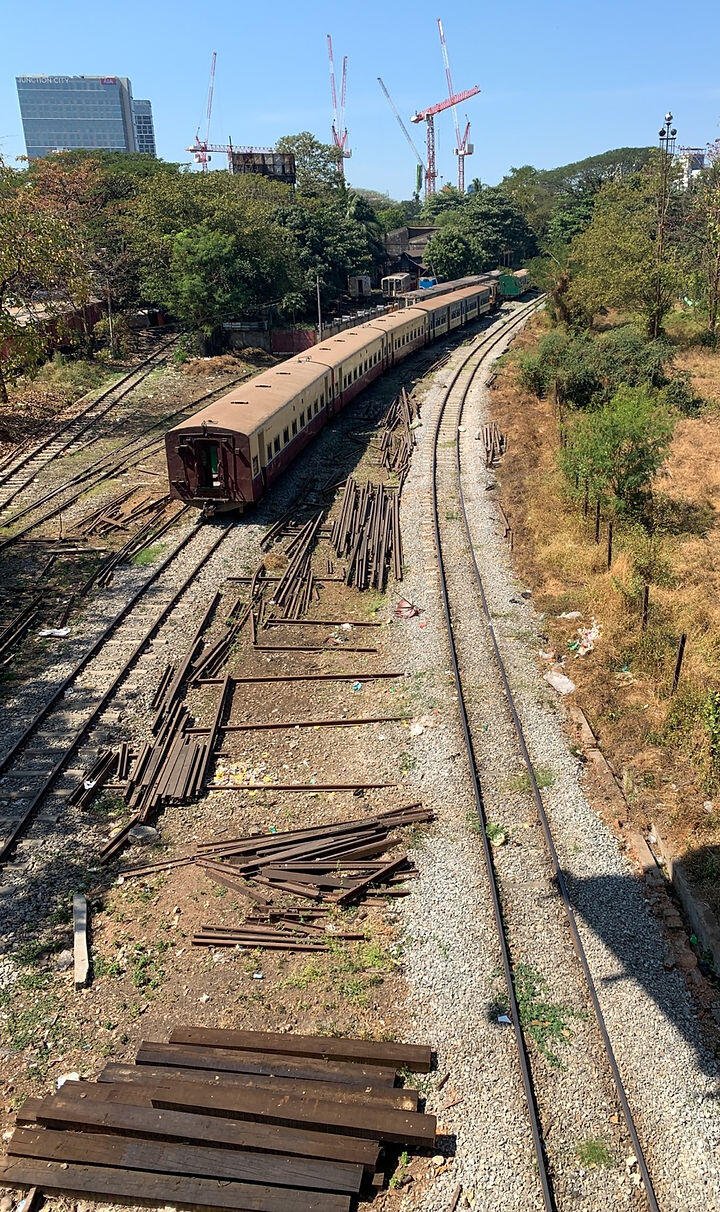
Shwedagon Pagoda
Upon walking up the steep and lengthy stairway to the Shwedagon Pagoda lies Yangon’s most famous attraction. The 99-meter gold-coated pagoda can be seen all around the city but is best enjoyed up close. This is a must-visit during your time in the capital. I went about an hour before sunset and stayed well into the night. Sunset from the hill it sits atop is spectacular, and the contrast of the pagoda between day and night is striking.
Make sure to bring socks and a bag, as shoes are not allowed, and you will need to carry them or leave them at the door. After visiting, you can take a short walk to the Sky Bar in the Yangon International Hotel overlooking the pagoda. This is a wonderful place to enjoy a nice dinner and drink, ideal for soaking up more of that luxurious golden pagoda.

Day 3: Bus to Myeik
The longest stretch of the trip—but well worth the sights to come. I took a 22-hour overnight bus and opted for the slight upcharge to take the VIP bus. This option is absolutely worth it. Equipped with A/C, comfortable reclining seats, and stops for three meals, it was a cheaper alternative to the costly domestic flight from Yangon and allowed me to see much more of the country.
I had a surprisingly good sleep and would do it again in a heartbeat. You can also fly directly to Myeik, but flights are infrequent and considerably more expensive. The bus I took arrived in Myeik around noon the next day, leaving me plenty of time to check into the hotel and wander around the city a bit before sunset. There weren’t many buses heading down here, so I’d recommend checking for tickets as early as possible when you arrive in Yangon. Alternatively, if you’re coming from Thailand, you can rearrange the itinerary and begin your Myanmar trip in Myeik by crossing from Thailand via bus at the land border.

Days 4-8: Island Hopping in Myeik
The city of Myeik has no accessible beaches, so you’ll need to book an island-hopping tour to fully appreciate the surrounding Mergui Archipelago. While the city itself doesn’t offer much in terms of entertainment, the beaches and crystal-clear waters you’ll encounter on an island-hopping tour are truly unparalleled. Your trip to Myeik will be unforgettable and is an experience you shouldn’t miss.
There are several travel companies offering island-hopping tours, ranging from single-day trips to 14-day excursions. While you can book ahead, I found it quite easy to arrange a trip through an agency in the city. I opted for a three-day, two-night tour with Life Seeing Tours, and it was fantastic. They provided food, tents, and transportation—just bring a swimsuit and a change of clothes, and you’re ready to spend a few nights exploring the islands.




Day 9: Bus to Dawei
Another travel day! This time, you’ll take a shorter bus ride heading north to Dawei. The journey takes about six hours, and tickets can be purchased from one of the travel agencies in Myeik. From what I gathered, there’s only one bus per day on this route, and it departs early in the morning.
Be prepared to wake up around 4 AM and make your way back to the same bus station where you arrived. It’s a good idea to arrange transportation to the station the night before—your hotel can help you book a ride for that morning.
Days 10-13: Motorcycling the Dawei Peninsula
Dawei boasts some of the most stunning coastlines and beaches in the country. While most of these beaches are only accessible by motorcycle, there are a few small bed-and-breakfast-style accommodations at the southern end of the peninsula that offer direct beach access.
If you’d prefer not to travel 2–3 hours each day from the city, I recommend staying in that area. You can rent a motorcycle from several places in the city and ride down to the B&Bs near the beaches for an overnight stay. This approach lets you enjoy the remote, lush, and scenic motorcycle journey while avoiding the daily commute to the beaches.

Grandfather Beach
Surrounded by mountains and vibrant orange dirt, getting here can be a bit tricky. You’ll need to navigate a steep, loose hill to reach the area. I recommend arriving near low tide, as the beach and surrounding shops flood around noon, making the descent a wet and challenging experience. Be prepared to remove your shoes and walk through knee-deep water to access the beach. This is one of the more popular spots for locals and was among the few beaches I visited that actually had people.

Tizit Beach
When we arrived at Tizit Beach, there was no one else around except for the locals. The sand here is soft, and the ocean is pristine. A motorcycle is necessary to access this beach, but the breathtaking views from the mountain pass make the journey entirely worthwhile. The sand near the shore is firm enough to ride on, creating unforgettable moments of cruising along the beach at sunset.

Day 14: Bus to Hpa An
One of the shorter bus rides on this trip, the fare is around $20, and it takes approximately 5 bumpy hours. Once you arrive in Hpa An, there are plenty of hostels and hotels to choose from. I booked mine on Hostelworld the night before, but you should have no trouble finding a place to stay on the day of your arrival if needed.
Days 15-18: Hpa An: Farmland, Caves, and Mountains
Hpa An offers a stark contrast to the beaches and cities encountered so far on the trip. Surrounded by towering limestone mountains and lush green farmland, the region has a peaceful, rural charm. There are several caves, lakes, and one of my favorite sunrise hikes of the journey.
While I have a few recommendations and must-visit spots, Hpa An is best explored without a strict plan. A central theme of this trip has been the freedom of hopping on a motorcycle and riding wherever your heart desires.

Mount Zwegabin Sunrise Hike
Hiking Mount Zwegabin for sunrise is a must-do during your time in Hpa An. The mountain is located a short ride from town, about 40 minutes by motorcycle. The hike to the summit took around 35 minutes at a brisk pace, so you’ll need to leave around 4 AM to catch the sunrise, depending on the season. The highlight of the hike is the final ascent up the floating stairs to reach the peak. Be sure to have your camera ready and take in the breathtaking views.

Kyauk Kalat Pagoda
This is one of those places that leaves you in awe, wondering how such a unique landscape can exist. Easily one of the most unusual rock formations I’ve encountered, it’s a fantastic spot to watch the sunset. A winding staircase leads up the rock to the top of the temple, making it a great place to spend a couple of hours.

Saddar Cave
Filled with bats, stunning limestone formations, and statues, this short cave walk provides a refreshing escape from the heat. The path takes about 20 minutes to explore, leading to a beautiful lake at the back. Grab a drink, relax for a while, and take a small paddle boat back to the entrance for a memorable experience.

Day 19: Bus to Bagan
A travel day heading north. This part of the trip is hot, bumpy, and slow, so be prepared for a longer journey than expected. Bagan has plenty of hotels and hostels, but I’d recommend booking accommodations in advance, as it’s a popular tourist destination. You’ll need to purchase an entry ticket for the area, as it’s a protected national park, but the bus driver should assist in sorting it out before you enter the park.
Days 20-23: Chasing Pagodas in Bagan
Once you’ve settled into your accommodation in Bagan, the best way to explore the vast area is by pedal bike or scooter. All the scooters available for rent are electric, helping to reduce noise pollution—a refreshing change from the loud gas-powered vehicles you’ll be used to from the first half of your trip. There’s no right or wrong way to experience Bagan. The park is enormous, with thousands of pagodas scattered throughout. Most of them are open for exploration, with a few offering rooftop access (though that is being restricted more recently).
You could spend weeks here and still not see all the pagodas up close. Bagan is divided into a new town and an old town—most of the backpacker-friendly hostels are located in Old Town. You’ll find a handful of restaurants, but I often ate at my hostel or from local food carts. Several hostels and hotels offer outdoor pools, which are a great perk, especially depending on the time of year you visit. I highly recommend simply wandering the area freely, but here are a few top pagodas and experiences not to miss during your time in Bagan.

Hot Air Ballooning
The top attraction in Bagan is undoubtedly the daily hot air balloon tours. Almost everyone who experiences it claims it’s a must-do. I chose to watch from the ground, as the cost of a tour is quite expensive. If you decide to go for it, be sure to set aside a few hundred USD for the trip. From what I’ve heard, you’ll wake up around 4:30 AM and head to the take-off location, returning by around 9:00 AM.

Sunset Boat Cruise
Be sure to spend at least one evening on a slow cruise down the Ayeyarwady River. It’s a wonderful way to enjoy distant views of some of the pagodas and relax after a long day of exploration. Several companies offer these cruises at very affordable prices. Our boat included snacks, drinks, and even alcohol. The trips range from half an hour to two hours. Book through your hotel for convenience.

The Big Three Temples
With over a thousand pagodas to explore in Bagan, there are three main structures that hold significant importance to locals: Shwesandaw, Thatbyinnyu, and Shwezigon. Be sure to make time to visit these iconic pagodas during your trip—you’re likely to come across them without even trying.

Day 24: Bus to Kalaw
Long-distance buses run the route multiple times a day, with the overnight option being the most popular. I recommend checking with a travel agent in Bagan to book your tickets before heading to the bus stop
Day 25-26: Relaxing at Lake Inle
These two days take us to the stunning Lake Inle, located just outside the city of Kalaw. Unfortunately, I wasn’t able to make it to Lake Inle during this trip, but everyone I spoke to highly recommended not missing it. The lake is known for its breathtaking scenery, traditional Intha stilt houses, and the unique leg-rowing fishermen.
From what I’ve heard and seen through photos, the calm waters, floating gardens, and vibrant markets make Lake Inle a truly unforgettable destination. Huge thanks to my friend Toby for sharing those beautiful pictures and giving me a glimpse of what I missed!




Day 27-28: Mandalay City
Mandalay is a fast-paced city with less tourism compared to other parts of the country. It offers a fascinating glimpse into the daily lives of the Burmese people, away from the crowds typically found in Yangon. There are several culturally significant monasteries and temples within the city limits, as well as vibrant markets perfect for shopping and exploring. Mandalay Hill is a great spot for a brisk hike and offers stunning views of the city and sunset on one of your nights. You could also visit the Mandalay Marionettes Theater to catch a local show showcasing Myanmar’s rich history and culture.
As for me, I mainly wandered the city without specific destinations in mind. Since this is the last stop before returning to Yangon, you might not feel as inclined to spend too much time here, but there are definitely some interesting sights worth exploring.

Day 29-30: Return to Yangon
The final two days of the trip are a return to where it all began. The bus from Mandalay to Yangon takes about 8 hours. Alternatively, Mandalay has a large international airport if you prefer to fly, depending on your next destination.
If you return to Yangon, you’ll have plenty of time to revisit the markets and pick up any final souvenirs or trinkets you might want to take home. Enjoy these last couple of days, savor some delicious food, and take the time to reflect on the incredible month of experiences you’ve had.
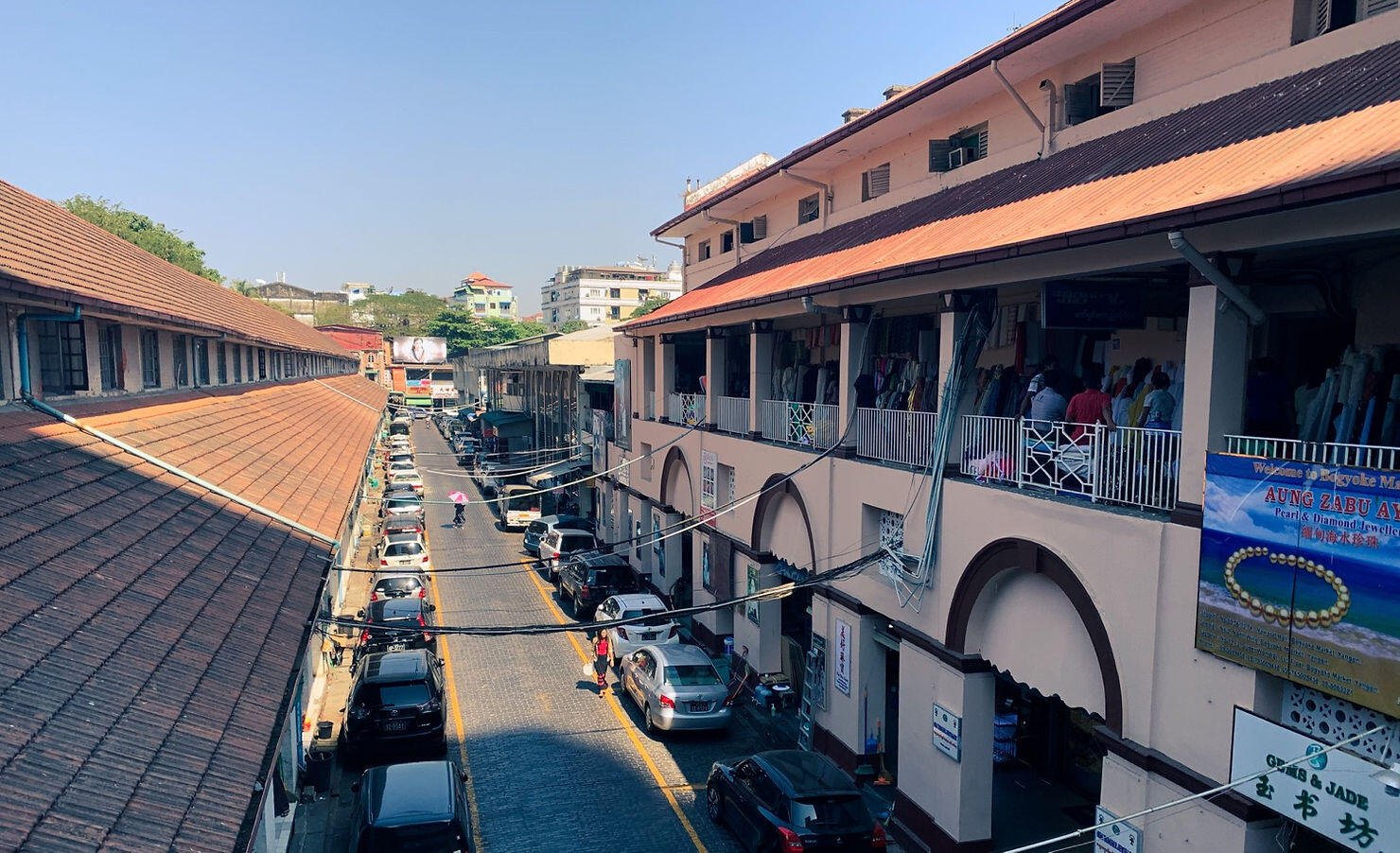
Concluding Thoughts
Your month-long journey through Myanmar is bound to be an unforgettable adventure, filled with stunning landscapes, rich culture, and warm hospitality. From the serene beaches of Ngapali to the ancient wonders of Bagan, and the tranquil beauty of Lake Inle to the bustling streets of Yangon and Mandalay, each destination offers its own unique charm and insight into Myanmar’s diverse culture.
The highlights of your trip—exploring historic pagodas, witnessing breathtaking sunrises, and embracing the freedom of riding a motorcycle—are sure to stay with you. Myanmar’s blend of natural beauty, vibrant traditions, and friendly locals makes every moment special. Despite the occasional long and bumpy journeys, the sense of discovery and connection with the people and places makes the experience truly worthwhile.
As you reflect on your journey, you’ll likely feel grateful for the memories, experiences, and the chance to explore a country that feels both timeless and unique. Myanmar’s beauty lies not just in its landscapes but in the people who call it home. You’ll leave with a deeper appreciation for the warmth and resilience of its people and a desire to return and explore even more of this enchanting land.
Update: Unfortunately as of this time (June 2021) Myanmar is experiencing major political and civil unrest. Taken from the advice of friends on the ground there— I can not recommend traveling to Myanmar at the time of writing. Pray for Myanmar!
Update 2: The political situation in Myanmar has escalated (July 2022). Travel is still not recommended.
Update 3: As of 2025, some tourists have reported that travel is doable. However many governments still have do not travel advisories. DYOR.
Other Myanmar Guides:
The Top 3 Hidden Beaches of Myanmar: A Guide to Tizit, Grandfather, and Mergui
More from Hes:
Originally Published June 15, 2021. Edited with Nostr friendly images on 1/5/2025
-
 @ 513d5051:8a622026
2025-01-04 21:14:50
@ 513d5051:8a622026
2025-01-04 21:14:50Since I came across the wild west theme on SN I knew there was something similar I came across in the past and today I finally remembered.
The website is called JavaRanch and it has the same theme as we see on SN, they have ranks based on people's engagement (ranch hand, greenhorn, marshal, sheriff, bartender, etc) which is pretty cool and the whole UX is along the same line.
Was it an inspiration or just coincidence @k00b?
originally posted at https://stacker.news/items/837103
-
 @ eac63075:b4988b48
2025-01-04 19:41:34
@ eac63075:b4988b48
2025-01-04 19:41:34Since its creation in 2009, Bitcoin has symbolized innovation and resilience. However, from time to time, alarmist narratives arise about emerging technologies that could "break" its security. Among these, quantum computing stands out as one of the most recurrent. But does quantum computing truly threaten Bitcoin? And more importantly, what is the community doing to ensure the protocol remains invulnerable?
The answer, contrary to sensationalist headlines, is reassuring: Bitcoin is secure, and the community is already preparing for a future where quantum computing becomes a practical reality. Let’s dive into this topic to understand why the concerns are exaggerated and how the development of BIP-360 demonstrates that Bitcoin is one step ahead.
What Is Quantum Computing, and Why Is Bitcoin Not Threatened?
Quantum computing leverages principles of quantum mechanics to perform calculations that, in theory, could exponentially surpass classical computers—and it has nothing to do with what so-called “quantum coaches” teach to scam the uninformed. One of the concerns is that this technology could compromise two key aspects of Bitcoin’s security:
- Wallets: These use elliptic curve algorithms (ECDSA) to protect private keys. A sufficiently powerful quantum computer could deduce a private key from its public key.
- Mining: This is based on the SHA-256 algorithm, which secures the consensus process. A quantum attack could, in theory, compromise the proof-of-work mechanism.
Understanding Quantum Computing’s Attack Priorities
While quantum computing is often presented as a threat to Bitcoin, not all parts of the network are equally vulnerable. Theoretical attacks would be prioritized based on two main factors: ease of execution and potential reward. This creates two categories of attacks:
1. Attacks on Wallets
Bitcoin wallets, secured by elliptic curve algorithms, would be the initial targets due to the relative vulnerability of their public keys, especially those already exposed on the blockchain. Two attack scenarios stand out:
-
Short-term attacks: These occur during the interval between sending a transaction and its inclusion in a block (approximately 10 minutes). A quantum computer could intercept the exposed public key and derive the corresponding private key to redirect funds by creating a transaction with higher fees.
-
Long-term attacks: These focus on old wallets whose public keys are permanently exposed. Wallets associated with Satoshi Nakamoto, for example, are especially vulnerable because they were created before the practice of using hashes to mask public keys.
We can infer a priority order for how such attacks might occur based on urgency and importance.
 Bitcoin Quantum Attack: Prioritization Matrix (Urgency vs. Importance)
Bitcoin Quantum Attack: Prioritization Matrix (Urgency vs. Importance)2. Attacks on Mining
Targeting the SHA-256 algorithm, which secures the mining process, would be the next objective. However, this is far more complex and requires a level of quantum computational power that is currently non-existent and far from realization. A successful attack would allow for the recalculation of all possible hashes to dominate the consensus process and potentially "mine" it instantly.
 Satoshi Nakamoto in 2010 on Quantum Computing and Bitcoin Attacks
Satoshi Nakamoto in 2010 on Quantum Computing and Bitcoin AttacksRecently, Narcelio asked me about a statement I made on Tubacast:
https://x.com/eddieoz/status/1868371296683511969
If an attack became a reality before Bitcoin was prepared, it would be necessary to define the last block prior to the attack and proceed from there using a new hashing algorithm. The solution would resemble the response to the infamous 2013 bug. It’s a fact that this would cause market panic, and Bitcoin's price would drop significantly, creating a potential opportunity for the well-informed.
Preferably, if developers could anticipate the threat and had time to work on a solution and build consensus before an attack, they would simply decide on a future block for the fork, which would then adopt the new algorithm. It might even rehash previous blocks (reaching consensus on them) to avoid potential reorganization through the re-mining of blocks using the old hash. (I often use the term "shielding" old transactions).
How Can Users Protect Themselves?
While quantum computing is still far from being a practical threat, some simple measures can already protect users against hypothetical scenarios:
- Avoid using exposed public keys: Ensure funds sent to old wallets are transferred to new ones that use public key hashes. This reduces the risk of long-term attacks.
- Use modern wallets: Opt for wallets compatible with SegWit or Taproot, which implement better security practices.
- Monitor security updates: Stay informed about updates from the Bitcoin community, such as the implementation of BIP-360, which will introduce quantum-resistant addresses.
- Do not reuse addresses: Every transaction should be associated with a new address to minimize the risk of repeated exposure of the same public key.
- Adopt secure backup practices: Create offline backups of private keys and seeds in secure locations, protected from unauthorized access.
BIP-360 and Bitcoin’s Preparation for the Future
Even though quantum computing is still beyond practical reach, the Bitcoin community is not standing still. A concrete example is BIP-360, a proposal that establishes the technical framework to make wallets resistant to quantum attacks.
BIP-360 addresses three main pillars:
- Introduction of quantum-resistant addresses: A new address format starting with "BC1R" will be used. These addresses will be compatible with post-quantum algorithms, ensuring that stored funds are protected from future attacks.
- Compatibility with the current ecosystem: The proposal allows users to transfer funds from old addresses to new ones without requiring drastic changes to the network infrastructure.
- Flexibility for future updates: BIP-360 does not limit the choice of specific algorithms. Instead, it serves as a foundation for implementing new post-quantum algorithms as technology evolves.
This proposal demonstrates how Bitcoin can adapt to emerging threats without compromising its decentralized structure.
Post-Quantum Algorithms: The Future of Bitcoin Cryptography
The community is exploring various algorithms to protect Bitcoin from quantum attacks. Among the most discussed are:
- Falcon: A solution combining smaller public keys with compact digital signatures. Although it has been tested in limited scenarios, it still faces scalability and performance challenges.
- Sphincs: Hash-based, this algorithm is renowned for its resilience, but its signatures can be extremely large, making it less efficient for networks like Bitcoin’s blockchain.
- Lamport: Created in 1977, it’s considered one of the earliest post-quantum security solutions. Despite its reliability, its gigantic public keys (16,000 bytes) make it impractical and costly for Bitcoin.
Two technologies show great promise and are well-regarded by the community:
- Lattice-Based Cryptography: Considered one of the most promising, it uses complex mathematical structures to create systems nearly immune to quantum computing. Its implementation is still in its early stages, but the community is optimistic.
- Supersingular Elliptic Curve Isogeny: These are very recent digital signature algorithms and require extensive study and testing before being ready for practical market use.
The final choice of algorithm will depend on factors such as efficiency, cost, and integration capability with the current system. Additionally, it is preferable that these algorithms are standardized before implementation, a process that may take up to 10 years.
Why Quantum Computing Is Far from Being a Threat
The alarmist narrative about quantum computing overlooks the technical and practical challenges that still need to be overcome. Among them:
- Insufficient number of qubits: Current quantum computers have only a few hundred qubits, whereas successful attacks would require millions.
- High error rate: Quantum stability remains a barrier to reliable large-scale operations.
- High costs: Building and operating large-scale quantum computers requires massive investments, limiting their use to scientific or specific applications.
Moreover, even if quantum computers make significant advancements, Bitcoin is already adapting to ensure its infrastructure is prepared to respond.
Conclusion: Bitcoin’s Secure Future
Despite advancements in quantum computing, the reality is that Bitcoin is far from being threatened. Its security is ensured not only by its robust architecture but also by the community’s constant efforts to anticipate and mitigate challenges.
The implementation of BIP-360 and the pursuit of post-quantum algorithms demonstrate that Bitcoin is not only resilient but also proactive. By adopting practical measures, such as using modern wallets and migrating to quantum-resistant addresses, users can further protect themselves against potential threats.
Bitcoin’s future is not at risk—it is being carefully shaped to withstand any emerging technology, including quantum computing.
-
 @ b6524158:8e898a89
2025-01-04 13:46:41
@ b6524158:8e898a89
2025-01-04 13:46:41Most people think if the US adopt a strategic Bitcoin Reserve it's going to kill the dollar, and others think it's going to strengthen the dollar 💵, both groups are wrong in my opinion. Without a Strategic Bitcoin Reserve(SBR) the us dollar is down 92% against bitcoin in the past 5 years, from already a 99% collapse 5 years before that, so on and so forth, if this is not a complete collapse against Bitcoin I don't know what is. This is not because of Bitcoin the dollar is collapsing, no Bitcoin is just exposing the theft and the scam in plain sight, the money printing scam or currency devaluation by the banksters, the govt and the Fed, those are the only group responsible for the dollar collapsing. But Bitcoin is not going to save dollar neither. Implementing an (SBR) Strategic Bitcoin Reserve cannot save the dollar in any way it can only help prolong the lifespan of the banksters(benefit them most) and buy fiat more time, but the game is up. People/countries already see through the scam. US treasures are running out of suckers they stole the Russian assets, China is no longer buying failling US bonds they have their problems but US needs to issue more bonds since they are running out of breath to pay for an exponentially growing debt interest, unfunded liabilities, endless wars and more. Tether is now one of the biggest buyer of US treasuries even this is short term, they are more likely to save the dollar than Bitcoin. So no Bitcoin is not going to kill nor save the dollar, it's going to blowup on its own with or without Bitcoin around.
Piecover
originally posted at https://stacker.news/items/836219
-
 @ bcea2b98:7ccef3c9
2025-01-03 22:31:38
@ bcea2b98:7ccef3c9
2025-01-03 22:31:38originally posted at https://stacker.news/items/835751
-
 @ e968e50b:db2a803a
2025-01-03 17:33:11
@ e968e50b:db2a803a
2025-01-03 17:33:11https://www.youtube.com/watch?v=P8IRonAGztE&t=12s
This WSJ video was interesting. I wonder if the new response to the age old question of, "Who will build the roads?" should be, "If we only let the government build the roads, who will build the craft roads?" I know, I know, the beer wasn't brewed by the government, but it was the regulation that left us with only Budweiser and Miller and blah blah blah as the options. There are so many industries that we currently hate that I bet may one day become the next craft industry if we can get it out of the hands of the feds.
originally posted at https://stacker.news/items/835322
-
 @ 5d4b6c8d:8a1c1ee3
2025-01-03 16:14:55
@ 5d4b6c8d:8a1c1ee3
2025-01-03 16:14:55This was certainly another Alby Hub related scare (really part of the same one).
Before the computer hosting my Alby Hub crashed, I transferred some bitcoin to it for the sake of opening a channel to SN. I was recently offered ownership in multiple territories (https://stacker.news/items/826658/r/Undisciplined and https://stacker.news/items/833775/r/Undisciplined) and needed a channel large enough to support my yearly rent payments.
After getting that node migrated, I was concerned that the on-chain transfer wasn't showing up. I checked the mempool and everything looked right (as far as I could tell), so I contacted Alby support.
The fix was actually fairly straightforward. I just had to attempt to open a channel using the wallet address that the missing bitcoin was in. In an instant, the channel was being generated and my balance was displaying correctly.
Hopefully, that tale will help anyone else who runs into this problem.
originally posted at https://stacker.news/items/835187
-
 @ 5d4b6c8d:8a1c1ee3
2025-01-03 15:50:44
@ 5d4b6c8d:8a1c1ee3
2025-01-03 15:50:44The Tom Brady of Stacker News is joining the ~Stacker_Sports ownership group. We'll discuss what, if anything, that means for the territory going forward.
In other territory news, - The CFP contest is in full swing - We had a winner in one cricket pool and people are dropping like flies in the other - New details on the USA vs "the world" competition - Our fantasy football league wrapped up (I wonder why @grayruby left that off the agenda)
In sports news, - We'll each share our Game of the Week (submit your nominations in the comments, if you like) - Dan Campbell is a reckless maniac. Good or bad? - Who are the best NFL coaches? - The playoff picture is pretty much set. What's left to decide in week 18? - We'll hit our recurring NBA segments and touch on the looming trade season - How's that children's hockey tournament that Canadians love so much going? - Ovechkin's back! Will he be able to break Gretzky's career scoring record?
In degenerate news, - The college football championship market has been a lot of fun. - I crushed a 13-team parlay on Ember last weekend (sort of)
Let us know what you'd like to hear about this week or what you think about any of the topics on the agenda.
Stay humble. Stack sats.
originally posted at https://stacker.news/items/835133
-
 @ 9dd283b1:cf9b6beb
2025-01-03 14:57:29
@ 9dd283b1:cf9b6beb
2025-01-03 14:57:29Hi, Some time ago, I saw a graph showing all stocks, commodities, and indexes denominated in BTC. As you can imagine, all of them are going down.
Recently, I discussed this with a friend, and he couldn't believe it. So, I started searching for this graph—either as a picture or a tool—but I couldn't find it. If anyone knows what I'm talking about, could you please share a link or a picture?
Thanks!
originally posted at https://stacker.news/items/835041
-
 @ e968e50b:db2a803a
2025-01-02 21:45:49
@ e968e50b:db2a803a
2025-01-02 21:45:49I checked, and it was 25,635 sats. I'm sure it's just a publicity stunt to inspire posts like this...but hey...I'm not above being duped into that type of marketing. Happy New Year!
PS - a less fun update (skip to maintain good vibes, stay to get pissed and/or call me a statist)
Interesting development: To all that previously have commented on this being a tax disaster: Well, it turns out that in my case, this is definitely correct. I'm constantly getting paid in fiat (cash, CashApp, or check, never direct deposit right now), converting to bitcoin, and then moving to my lightning node (except what I put in savings, which goes to multi-sig wallets). Now that I saw all the hubbub about the "single wallet" tax stuff in the last days before the new year, I realize that I'm basically that guy who is going to just have to make up cost basis guesses and hope that the men with guns realize I'm not trying to lie...
Anywho, kudos to all you non-tax payers out there or people that have the ability to get paid at the same wallet which they can pay bills from. Maybe I'll join you tax non-payers (just since it's so hard to pay them honestly and still have any time to work) when I have less dependents (at least fifteen years from now for any trigger happy IRS guys paying attention)...
originally posted at https://stacker.news/items/834254
-
 @ a4a6b584:1e05b95b
2025-01-02 18:13:31
@ a4a6b584:1e05b95b
2025-01-02 18:13:31The Four-Layer Framework
Layer 1: Zoom Out

Start by looking at the big picture. What’s the subject about, and why does it matter? Focus on the overarching ideas and how they fit together. Think of this as the 30,000-foot view—it’s about understanding the "why" and "how" before diving into the "what."
Example: If you’re learning programming, start by understanding that it’s about giving logical instructions to computers to solve problems.
- Tip: Keep it simple. Summarize the subject in one or two sentences and avoid getting bogged down in specifics at this stage.
Once you have the big picture in mind, it’s time to start breaking it down.
Layer 2: Categorize and Connect

Now it’s time to break the subject into categories—like creating branches on a tree. This helps your brain organize information logically and see connections between ideas.
Example: Studying biology? Group concepts into categories like cells, genetics, and ecosystems.
- Tip: Use headings or labels to group similar ideas. Jot these down in a list or simple diagram to keep track.
With your categories in place, you’re ready to dive into the details that bring them to life.
Layer 3: Master the Details

Once you’ve mapped out the main categories, you’re ready to dive deeper. This is where you learn the nuts and bolts—like formulas, specific techniques, or key terminology. These details make the subject practical and actionable.
Example: In programming, this might mean learning the syntax for loops, conditionals, or functions in your chosen language.
- Tip: Focus on details that clarify the categories from Layer 2. Skip anything that doesn’t add to your understanding.
Now that you’ve mastered the essentials, you can expand your knowledge to include extra material.
Layer 4: Expand Your Horizons

Finally, move on to the extra material—less critical facts, trivia, or edge cases. While these aren’t essential to mastering the subject, they can be useful in specialized discussions or exams.
Example: Learn about rare programming quirks or historical trivia about a language’s development.
- Tip: Spend minimal time here unless it’s necessary for your goals. It’s okay to skim if you’re short on time.
Pro Tips for Better Learning
1. Use Active Recall and Spaced Repetition
Test yourself without looking at notes. Review what you’ve learned at increasing intervals—like after a day, a week, and a month. This strengthens memory by forcing your brain to actively retrieve information.
2. Map It Out
Create visual aids like diagrams or concept maps to clarify relationships between ideas. These are particularly helpful for organizing categories in Layer 2.
3. Teach What You Learn
Explain the subject to someone else as if they’re hearing it for the first time. Teaching exposes any gaps in your understanding and helps reinforce the material.
4. Engage with LLMs and Discuss Concepts
Take advantage of tools like ChatGPT or similar large language models to explore your topic in greater depth. Use these tools to:
- Ask specific questions to clarify confusing points.
- Engage in discussions to simulate real-world applications of the subject.
- Generate examples or analogies that deepen your understanding.Tip: Use LLMs as a study partner, but don’t rely solely on them. Combine these insights with your own critical thinking to develop a well-rounded perspective.
Get Started
Ready to try the Four-Layer Method? Take 15 minutes today to map out the big picture of a topic you’re curious about—what’s it all about, and why does it matter? By building your understanding step by step, you’ll master the subject with less stress and more confidence.
-
 @ bcea2b98:7ccef3c9
2025-01-02 17:47:27
@ bcea2b98:7ccef3c9
2025-01-02 17:47:27originally posted at https://stacker.news/items/833889
-
 @ e968e50b:db2a803a
2025-01-02 17:01:09
@ e968e50b:db2a803a
2025-01-02 17:01:09Hey all, anybody have a good file for a shroud to put an s9 into a duct? I just used this and this, which were advertised to muffle the sound, and actually just made it louder and created some resistance. I really want something like this, but they are only selling the product, not the file.
originally posted at https://stacker.news/items/833834
-
 @ a853296a:209e695f
2025-01-02 15:52:12
@ a853296a:209e695f
2025-01-02 15:52:12👋 What's up, stackers! 🤠
Excited to announce our latest project: Pull That Up Jamie. Think Perplexity but private & open source.
TLDR: ✨ Why Choose Jamie?
🛠️ Fully Open Source and Transparent! ⚡ BOLT11 Bitcoin/Lightning for Anonymous Usage! 🚄 Optimized for Speed and Convenience! 🆓 Limited Free Usage Available!
💦🔒🕵️ Your Biggest Opsec Leak - Why We Tackled Search
Search + LLMs seems like the peanut butter & jelly of the internet - a great match. But at what cost? Now that LLMs and AI are here, we know that finding needles in a vast haystack of data is much easier. That means that seemingly innocuous queries and interactions you have on the internet now carry way more weight than you think. How long before we all get owned? Privacy becomes all the more important. Each query empowers those who would exploit us. Every search chips away, revealing personal details about your state of mind. Stealing your soul little by little.
Just as bitcoin gives us the opportunity to opt out of exploitative economic systems, we wanted to take bitcoin's magic freedom dust and give you the ability to opt out of exploitative search surveillance 🔒🕵️.
⚡ How Bitcoin Lightning Yet Again Fixes This
Using the Bitcoin Connect plugin, we are able to accept BOLT11 payments. BOLT11, thanks to the lightning network's onion routing topology, affords users great sender privacy:
With just a VPN + an NWC connection, you can use Pull That Up Jamie with privacy assurances that are unparalleled. For very low cost, an average person can get Jason Bourne tier opsec.
🚧🧰🏗️Building Off the Great Work of Others
Major shout out to the ⚡ lightning devs that brought BOLT11 to the point it's at and especially to the 🐝 @getalby team for the great work on Bitcoin Connect. BC makes it easy to accept bitcoin payments with very little friction or overhead.
Additionally, we took notes on great projects like Perplexica. However we found that none of them were really geared toward the combination of speed, UX, and convenience we were looking for. Most of them are designed to be run in docker containers on your machine - great for techies but not accessible to the wider population.
We rolled our own from scratch, learning a lot from these projects. We especially took note of the superb qualities afforded by the SearXNG project🔍 🌐. What is SearXNG? Let's ask Pull That Up Jamie:
SearXNG is such a gamechanger that we plan to make a bitcoin payable, AI scannable endpoint just for accessing our instance. DM us if interested.
Armed with the ability to search the web and feed context to LLMs, we can Make The Internet Private Again. We can eliminate Google from your life.
⚡ Stackers do yourselves a favor - check out https://pullthatupjamie.ai today! 🤠
Future Work
- Open source models like 🦙 Llama
- Collaborating with @TonyGiorgio and team to use their secure compute LLM 🍁 Maple - https://stacker.news/items/764869 as part of the workflow
- Expert Mode: interrogate high signal sources of your choosing like podcasts, stacker news posts and others
- A couple more secret twists to keep you guessing :)
- Suggestions? Hit us with em.
originally posted at https://stacker.news/items/833717
-
 @ 2063cd79:57bd1320
2025-01-02 12:56:08
@ 2063cd79:57bd1320
2025-01-02 12:56:08Bitcoin ist vieles. Bitcoin die Währung ist teilbar, austauschbar, einfach transportierbar, haltbar, prüfbar, knapp, universell akzeptiert und leicht sicherungsfähig. Bitcoin das Netzwerk ist staatenlos, dezentral, zensurresistent, erlaubnislos, diskriminiert nicht, vertrauenslos, pseudonym, open source, es basiert auf Konsens- und Anreizmechanismen und Verifizierung sowie Berechnung (wahrscheinlich habe ich sogar viele weitere Eigenschaften vergessen), aber ist Bitcoin auch wirklich unpolitisch, wie so oft behauptet?
Es wird häufig behauptet, dass Bitcoin unpolitisch sei. Aber was genau soll das bedeuten? Die einfachste Erklärung ist, dass Bitcoin für jeden frei zugänglich ist und von jedem benutzt werden kann, egal für welchen Zweck. In der Theorie auch für politische Zwecke, egal welcher Richtung. Bitcoin ist Politik in dieser Hinsicht egal. Denn das Bitcoin-Netzwerk richtet nicht, es diskriminiert nicht und es hat keine Meinung. Eine Transaktion ist eine Transaktion, egal wer der Urheber oder der Sender ist und egal, wer der Empfänger ist. Transaktionen müssen nicht gekennzeichnet werden und somit gibt es keine Möglichkeit für das Netzwerk zu entscheiden, ob eine Transaktion gut oder schlecht ist, dazu genutzt wird, um Guthaben von einer Wallet in eine andere zu schieben, oder von einem Land in ein anderes Land geschickt wird, um dort moralisch fragwürdige Motive zu unterstützen. Insofern ist Bitcoin unpolitisch: Das Netzwerk diskriminiert, oder besser gesagt beurteilt nicht aufgrund politischer Neigungen.
Aber dies ist eigentlich nur die Definition für die eingangs erwähnte Eigenschaft von Bitcoins Wertfreiheit (meiner Meinung nach eine bessere Ausdrucksweise für "Bitcoin diskriminiert nicht").
Aber Nichtdiskriminierung bzw. Wertfreiheit bedeutet nicht unbedingt unpolitisch oder apolitisch. Die Definition dieses Adjektivs bedeutet streng genommen:
[1] sich nicht für Politik interessierend, kein Interesse an politische Themen zeigend
[2] keine Steigerung: nicht die Politik betreffend, nicht zur Politik gehörend
Die erste Definition, da sind wir uns sicherlich einig, sollte erfüllt sein. Bitcoin interessiert sich nicht für Politik. Bitcoin ist ein Netzwerk, ein Protokoll, ein System. Bitcoin interessiert sich nur für sich selbst. Seinen eigenen Erhalt, und die im Protokoll festgesetzten Regeln: Etwa alle 10 Minuten wird ein neuer Block produziert, egal wie viel Rechenleistung dem Netzwerk zur Verfügung steht, egal wie viele Transaktionen hinzuzufügen sind, egal wie viele Netzwerkteilnehmer partizipieren.
Bei der zweiten Definition wird es allerdings etwas komplizierter. Bitcoin wurde von Satoshi als Peer-to-Peer Electronic Cash System ins Leben gerufen, das die inhärenten Schwächen des heutigen, vertrauensbasierten Modells löst. Satoshi identifizierte das Problem schon in 2009:
The root problem with conventional currency is all the trust that's required to make it work. The central bank must be trusted not to debase the currency, but the history of fiat currencies is full of breaches of that trust.
Der Genesis Block selbst enthält die wohl bekannteste aller Nachrichten, die jemals in der Bitcoin-Timechain verewigt wurden:
The Times 03/Jan/2009 Chancellor on brink of second bailout for banks
\ Damit ist die Konzeption und die Erschaffung des Bitcoin-Protokolls an sich schon ein politischer Akt. Bitcoin stellt eine Alternative zu unserem derzeitigen Geldsystem dar und soll oder könnte es, im besten Fall, sogar ersetzen. Bitcoin positioniert sich als Gegenstück zum Staat - dem derzeitigen Wächter und Herrn über das Geldsystem. Der Staat ist eine von Natur aus politische Instanz. Wenn man also mit etwas konkurriert, das dem Staat obliegt, wird es automatisch politisch. Satoshi selbst war zumindest indirekt vom Libertarismus und der österreichischen Ökonomie beeinflusst.
Das bedeutet keineswegs, dass jede Person, die Bitcoin verwendet, automatisch einem politischen Akt unterworfen wird, oder selbst anarchistische, libertäre oder liberale Ziele verfolgt. Allerdings bleibt nicht von der Hand zu weisen, dass Bitcoin und sein Ziel, eine Alternative zum heutigen vorherrschenden Geldsystem zu erschaffen, dadurch eine inhärent politische Bekundung ist.
Wenn Bitcoin also nicht apolitisch oder unpolitisch ist, aber auch nicht explizit politisch, dann könnte man behaupten Bitcoin sei zumindest anti-politisch. Der per Definition politische Staat und die Staatsgewalt über das Geldsystem sind der erklärte Gegenspieler von Bitcoin. Damit stellt sich Bitcoin als Kontrahent zu einem System auf, das die Gewalt in die Hände einiger Weniger legt. In der Politik gewinnen oder herrschen diejenigen, die die populärste Meinung vertreten (wenn es gut läuft), oder die meiste Gewalt hinter sich bündeln (wenn es nicht so gut läuft). Im Bitcoin-Netzwerk gewinnen diejenigen, die am effizientesten die Anreizstrukturen nutzen (Miner, Mining-Pools, Lightning-Routing-Channel Betreiber, etc.), oder Bitcoin am effizientesten für sich nutzen und damit dem Ökosystem zum Wachstum verhelfen (Unternehmer, Experten, Entwickler, etc.). Die politische Gesinnung dieser Netzwerkteilnehmer spielt dabei in erster Linie absolut keine Rolle. Es ist völlig egal, ob ein Node-Betreiber zu Hause Pickelhauben sammelt oder im Che Guevara T-Shirt Bitcoin-Protokolle schreibt.

Das heutige Geldsystem hat viele Nachteile, alle aufzuzählen würde den Rahmen sprengen, jedoch lassen sich einige prägnante leicht identifizieren: Rent-Seeking, des Bitcoiners liebstes Thema der Cantillon-Effekt, Geld- oder Münzentwertung und Geldmarktpolitik vereinen alle das gleiche zugrunde liegende Problem. Sie unterliegen alle der politischen Einflussnahme auf das System zum Vorteil einiger (privilegierter) Weniger. Denn was für die wenigen individuellen Vorteilsnehmer aussichtsreich und lohnenswert ist, ist für das Kollektiv schädlich und finanziell schädigend. Bitcoin stellt dazu die Alternative dar. Zwar lässt sich argumentieren, dass die vorhandene Menge und damit das Vermögen bereits heute ungerecht verteilt ist. Allerdings birgt diese Verteilung lediglich Vorteile für die Individuen, ohne jedoch das Kollektiv zu schädigen. Besitzer von großen Mengen bitcoin können genau so viel oder so wenig Einfluss auf das System nehmen, wie diejenigen, die verhältnismäßig wenig besitzen.

Wenn es irgendetwas von Wert gibt, ob Geld, Edelmetalle, oder sonstige Wertgegenstände, wird es auch immer Menschen geben, die davon mehr besitzen als andere - das ist ein unumstößlicher Fakt der Natur und auch Bitcoin wird daran nichts ändern können. Allerdings bietet Bitcoin die nötigen Anreizstrukturen, den eigenen Anteil zu vermehren. Wie schon erwähnt, werden Unternehmergeist, Expertenwissen und aufgebrachte Arbeit derjenigen, die das Netzwerk voranbringen, belohnt. Im Gegensatz zum aktuellen System, in dem oft nicht nur Unternehmergeist und Arbeitsleistung belohnt werden, sondern auch politische Einflussnahme, Prestige und Macht, oder sogar schon die Nähe und der Zugang zu diesen einflussreichen Interessengruppen. Korruption, Lobbyismus und politische Vorteilsnahme führen deshalb zu unproduktiver Arbeit, bei der einzig und allein der Begünstigte profitiert.

Bitcoin eliminiert diese politische Vorteilsnahme und ist dadurch schon anti-politisch.
In diesem Sinne ist Bitcoin also politisch, wie alles politisch ist oder zu einem politischen Thema gemacht werden kann. Ich habe in einem früheren Artikel bereits beschrieben, dass der Staat für viele Menschen die Rolle einer Art Religion eingenommen hat und dass Bitcoin in gewisser Weise für den Staat das ist, was der Buchdruck damals für Religion war.
https://www.genexyz.org/post/13-block-754250-die-vollst-ndige-adaption-von-bitcoin-und-die-3-hindernisse-74u3k2/
Religion ist eigentlich unpolitisch, obwohl man behaupten darf, dass Kirchgänger gewisser Religionen im Allgemeinen im gleichen Bereich des politischen Spektrums wiederzufinden sind, macht dies Religion nicht von Natur aus politisch. Doch die Trennung von Kirche und Staat kann wohl als hochpolitisch bezeichnet werden.
Wo Diderot, Rousseau und Voltaire eine Berufung auf die Vernunft als universelle Urteilsinstanz propagierten und einen Kampf gegen Vorurteile und für die Hinwendung zu Naturwissenschaften, religiöse Toleranz und eine Orientierung am Naturrecht einleiteten, streben Bitcoin und seine Befürworter eine Abkehr von den staatlich gesteuerten und (Fiskal- und Geld)politisch aufgeladenen Finanz- und Wirtschaftsinterventionen und eine Berufung auf Werte wie Dezentralität, Zensurresistenz und Selbstbestimmtheit an. Dasselbe gilt für die Trennung von Geld und Staat. Geld ist eigentlich unpolitisch, aber die Trennung von Geld und Staat ist hochpolitisch. Auch der Missbrauch von Geld zum Erreichen von politischen Zielen ist hochpolitisch. Wie eingangs erwähnt, wird Bitcoin so politisiert - nur eben als Gegenentwurf. Als anti-politische Alternative zum politischen Fiat-System mit all seinen Fehlern.

Was ich damit sagen will, ist, dass Bitcoin per se politisch ist. Es ist eben nur ein anderer Entwurf zu dem politischen Denken, das heute vorherrscht. Bitcoin ist und bleibt erlaubnislos und wertfrei, damit ist die Nutzung von Bitcoin erstmal im Generellen unpolitisch. Solange bis auch einzelne Anwendungsfälle von politischer Natur sind. Bitcoin-Spenden an Wikileaks haben eine politische Tragweite. Bitcoin-Spenden an den Freedom-Convoy in Kanada sind politisch. Bitcoin-Spenden an Hodlonaut sind politisch, auch wenn es dabei um die hauseigene Politik im Bitcoin-Ökosystem geht.
Man kann also nicht ohne weiteres sagen "Bitcoin ist unpolitisch". Es ist richtiger zu sagen, dass Bitcoin keine politische Meinung vertritt und sich nicht zu politischer Einflussnahme instrumentalisieren lässt. Bitcoin ist ein Protokoll, ein Netzwerk, und kümmert sich nur um sich selbst. Aber Bitcoin ist sehr wohl politisch.
🫳🎤
In diesem Sinne, 2... 1... Risiko!

-
 @ 1cb14ab3:95d52462
2025-01-02 05:57:05
@ 1cb14ab3:95d52462
2025-01-02 05:57:05
No. 1 - The Less Touristy "Bund"

The Bund is certainly a must-see if you are traveling to Shanghai for the first time - and it will be at the top of every travel guide out there, for good reason - there are equally as stunning alternatives away from the crowds. If you want to enjoy the skyline from a more relaxed perspective, consider the Pudong side of the river. There are parks, basketball courts, and green spaces along the riverbank for you to chill at and take in the sights. You can also hop on a ferry or a sightseeing boat to cross the river and admire the views from the renowned Bund.
No. 2 - Walks Along Golden Street

This one is out in Gubei, a suburban area in the west of Shanghai. It may be a bit of a trek, but it is worth it if you are looking for a more relaxing and peaceful pedestrian street in the city. Golden Street, or Jinxiu Road, is a great place to walk a dog, grab an afternoon drink, or enjoy a romantic dinner with your loved one. While it may be a bit far from downtown, it makes for a great joyride on your scooter or bicycle.
No. 3 - Moganshan Road Graffiti Wall

Moganshan Road is a gem for all things art. It is home to M50, the best art district in the city, where you will find dozens of galleries, studios, and workshops showcasing a wide range of art. There are also plenty of cool spots scattered around the area, particularly the graffiti wall. The wall is a welcome contrast to some of the drab and monotonous architecture found around the city; with colorful display of street art featuring various styles and themes. Stop by and admire the works of local and international artists, and even jump in to join them in adding your own mark. The wall is constantly evolving, so you can always find something new.
No. 4 - Jiaotong University in the Fall

Easily one of the best spots in town for catching rows of bright yellow and red leaves. Jiaotong University is one of the oldest and most prestigious universities in China. The campus is located in Xuhui District and has a mix of Chinese and Western architectural styles to admire as well. Try to visit in late October or early November for the best leaf-peeping. You can walk along the tree-lined paths, set up a blanket in the field for a picnic, or simply take photos and enjoy the scenery.
No. 5 - Day Drinking at Highline

Hands down one of the top five rooftop bars in the city, along with Bar Rouge, Kartel, and others; Highline is a go-to-spot that offers great views of the city and excellent food. Find it on the sixth floor of the Ascott Hotel in Huaihai Road in Xintiandi. Nothing beats a laid back Saturday afternoon at Highline. I prefer the views during the day, though it is equally as nice a night. Sip cocktails, wine, or beer, and enjoy the music and vibe. Highline is a perfect place to spend an afternoon.
Additional Photos




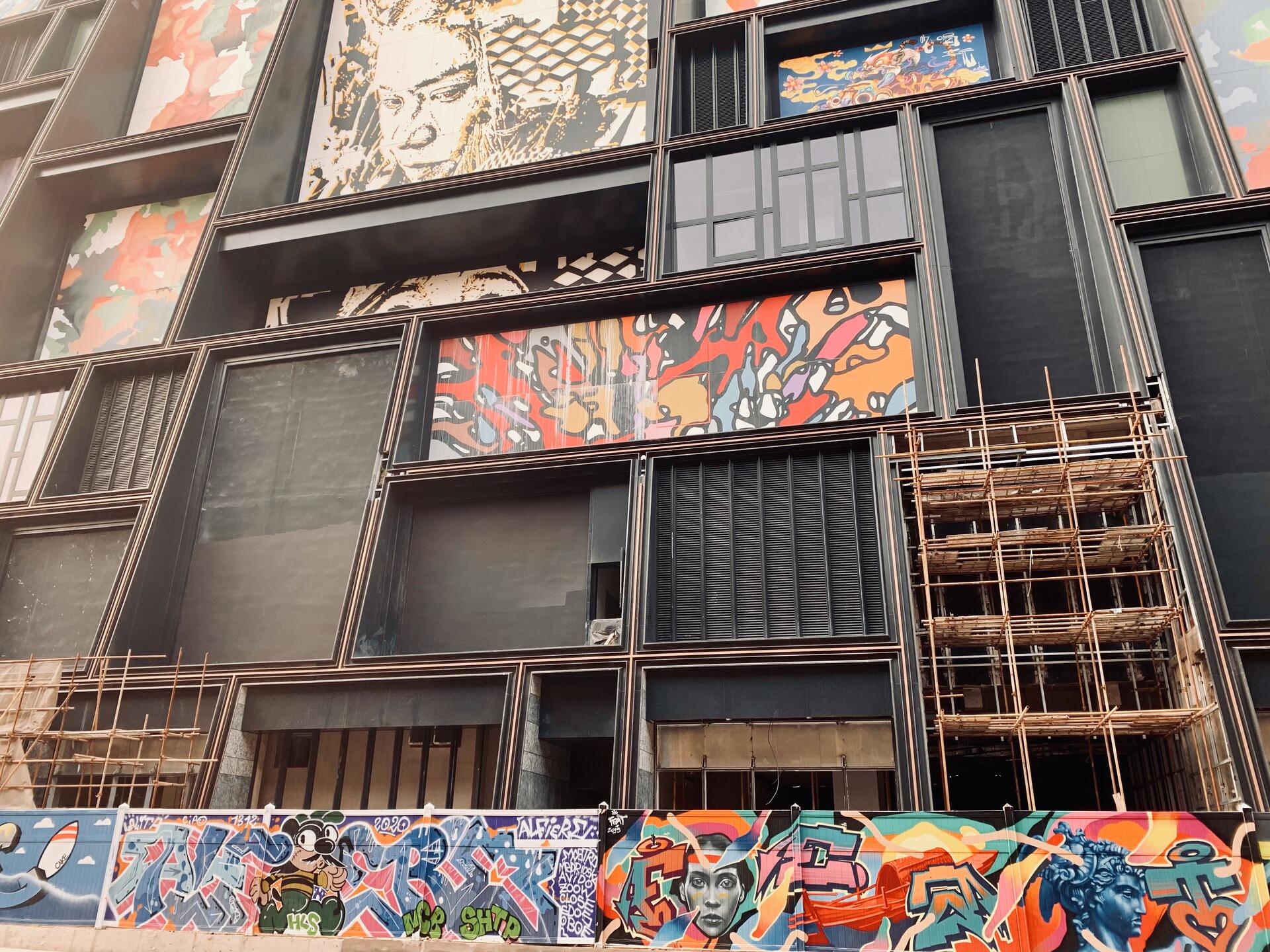
Next Guide in the Series:
An Expats Guide to the Best Spots in Shanghai: 002
Find Me Elsewhere:
All images property of Hes. Originally published as an Instagram Guide on Feb. 02, 2021. Reworked and published on Nostr on Feb. 17, 2024.
-
 @ 1bda7e1f:bb97c4d9
2025-01-02 05:19:08
@ 1bda7e1f:bb97c4d9
2025-01-02 05:19:08Tldr
- Nostr is an open and interoperable protocol
- You can integrate it with workflow automation tools to augment your experience
- n8n is a great low/no-code workflow automation tool which you can host yourself
- Nostrobots allows you to integrate Nostr into n8n
- In this blog I create some workflow automations for Nostr
- A simple form to delegate posting notes
- Push notifications for mentions on multiple accounts
- Push notifications for your favourite accounts when they post a note
- All workflows are provided as open source with MIT license for you to use
Inter-op All The Things
Nostr is a new open social protocol for the internet. This open nature exciting because of the opportunities for interoperability with other technologies. In Using NFC Cards with Nostr I explored the
nostr:URI to launch Nostr clients from a card tap.The interoperability of Nostr doesn't stop there. The internet has many super-powers, and Nostr is open to all of them. Simply, there's no one to stop it. There is no one in charge, there are no permissioned APIs, and there are no risks of being de-platformed. If you can imagine technologies that would work well with Nostr, then any and all of them can ride on or alongside Nostr rails.
My mental model for why this is special is Google Wave ~2010. Google Wave was to be the next big platform. Lars was running it and had a big track record from Maps. I was excited for it. Then, Google pulled the plug. And, immediately all the time and capital invested in understanding and building on the platform was wasted.
This cannot happen to Nostr, as there is no one to pull the plug, and maybe even no plug to pull.
So long as users demand Nostr, Nostr will exist, and that is a pretty strong guarantee. It makes it worthwhile to invest in bringing Nostr into our other applications.
All we need are simple ways to plug things together.
Nostr and Workflow Automation
Workflow automation is about helping people to streamline their work. As a user, the most common way I achieve this is by connecting disparate systems together. By setting up one system to trigger another or to move data between systems, I can solve for many different problems and become way more effective.
n8n for workflow automation
Many workflow automation tools exist. My favourite is n8n. n8n is a low/no-code workflow automation platform which allows you to build all kinds of workflows. You can use it for free, you can self-host it, it has a user-friendly UI and useful API. Vs Zapier it can be far more elaborate. Vs Make.com I find it to be more intuitive in how it abstracts away the right parts of the code, but still allows you to code when you need to.
Most importantly you can plug anything into n8n: You have built-in nodes for specific applications. HTTP nodes for any other API-based service. And community nodes built by individual community members for any other purpose you can imagine.
Eating my own dogfood
It's very clear to me that there is a big design space here just demanding to be explored. If you could integrate Nostr with anything, what would you do?
In my view the best way for anyone to start anything is by solving their own problem first (aka "scratching your own itch" and "eating your own dogfood"). As I get deeper into Nostr I find myself controlling multiple Npubs – to date I have a personal Npub, a brand Npub for a community I am helping, an AI assistant Npub, and various testing Npubs. I need ways to delegate access to those Npubs without handing over the keys, ways to know if they're mentioned, and ways to know if they're posting.
I can build workflows with n8n to solve these issues for myself to start with, and keep expanding from there as new needs come up.
Running n8n with Nostrobots
I am mostly non-technical with a very helpful AI. To set up n8n to work with Nostr and operate these workflows should be possible for anyone with basic technology skills.
- I have a cheap VPS which currently runs my HAVEN Nostr Relay and Albyhub Lightning Node in Docker containers,
- My objective was to set up n8n to run alongside these in a separate Docker container on the same server, install the required nodes, and then build and host my workflows.
Installing n8n
Self-hosting n8n could not be easier. I followed n8n's Docker-Compose installation docs–
- Install Docker and Docker-Compose if you haven't already,
- Create your
docker-compose.ymland.envfiles from the docs, - Create your data folder
sudo docker volume create n8n_data, - Start your container with
sudo docker compose up -d, - Your n8n instance should be online at port
5678.
n8n is free to self-host but does require a license. Enter your credentials into n8n to get your free license key. You should now have access to the Workflow dashboard and can create and host any kind of workflows from there.
Installing Nostrobots
To integrate n8n nicely with Nostr, I used the Nostrobots community node by Ocknamo.
In n8n parlance a "node" enables certain functionality as a step in a workflow e.g. a "set" node sets a variable, a "send email" node sends an email. n8n comes with all kinds of "official" nodes installed by default, and Nostr is not amongst them. However, n8n also comes with a framework for community members to create their own "community" nodes, which is where Nostrobots comes in.
You can only use a community node in a self-hosted n8n instance (which is what you have if you are running in Docker on your own server, but this limitation does prevent you from using n8n's own hosted alternative).
To install a community node, see n8n community node docs. From your workflow dashboard–
- Click the "..." in the bottom left corner beside your username, and click "settings",
- Cilck "community nodes" left sidebar,
- Click "Install",
- Enter the "npm Package Name" which is
n8n-nodes-nostrobots, - Accept the risks and click "Install",
- Nostrobots is now added to your n8n instance.
Using Nostrobots
Nostrobots gives you nodes to help you build Nostr-integrated workflows–
- Nostr Write – for posting Notes to the Nostr network,
- Nostr Read – for reading Notes from the Nostr network, and
- Nostr Utils – for performing certain conversions you may need (e.g. from bech32 to hex).
Nostrobots has good documentation on each node which focuses on simple use cases.
Each node has a "convenience mode" by default. For example, the "Read" Node by default will fetch Kind 1 notes by a simple filter, in Nostrobots parlance a "Strategy". For example, with Strategy set to "Mention" the node will accept a pubkey and fetch all Kind 1 notes that Mention the pubkey within a time period. This is very good for quick use.
What wasn't clear to me initially (until Ocknamo helped me out) is that advanced use cases are also possible.
Each node also has an advanced mode. For example, the "Read" Node can have "Strategy" set to "RawFilter(advanced)". Now the node will accept json (anything you like that complies with NIP-01). You can use this to query Notes (Kind 1) as above, and also Profiles (Kind 0), Follow Lists (Kind 3), Reactions (Kind 7), Zaps (Kind 9734/9735), and anything else you can think of.
Creating and adding workflows
With n8n and Nostrobots installed, you can now create or add any kind of Nostr Workflow Automation.
- Click "Add workflow" to go to the workflow builder screen,
- If you would like to build your own workflow, you can start with adding any node. Click "+" and see what is available. Type "Nostr" to explore the Nostrobots nodes you have added,
- If you would like to add workflows that someone else has built, click "..." in the top right. Then click "import from URL" and paste in the URL of any workflow you would like to use (including the ones I share later in this article).
Nostr Workflow Automations
It's time to build some things!
A simple form to post a note to Nostr
I started very simply. I needed to delegate the ability to post to Npubs that I own in order that a (future) team can test things for me. I don't want to worry about managing or training those people on how to use keys, and I want to revoke access easily.
I needed a basic form with credentials that posted a Note.
For this I can use a very simple workflow–
- A n8n Form node – Creates a form for users to enter the note they wish to post. Allows for the form to be protected by a username and password. This node is the workflow "trigger" so that the workflow runs each time the form is submitted.
- A Set node – Allows me to set some variables, in this case I set the relays that I intend to use. I typically add a Set node immediately following the trigger node, and put all the variables I need in this. It helps to make the workflows easier to update and maintain.
- A Nostr Write node (from Nostrobots) – Writes a Kind-1 note to the Nostr network. It accepts Nostr credentials, the output of the Form node, and the relays from the Set node, and posts the Note to those relays.
Once the workflow is built, you can test it with the testing form URL, and set it to "Active" to use the production form URL. That's it. You can now give posting access to anyone for any Npub. To revoke access, simply change the credentials or set to workflow to "Inactive".
It may also be the world's simplest Nostr client.
You can find the Nostr Form to Post a Note workflow here.
Push notifications on mentions and new notes
One of the things Nostr is not very good at is push notifications. Furthermore I have some unique itches to scratch. I want–
- To make sure I never miss a note addressed to any of my Npubs – For this I want a push notification any time any Nostr user mentions any of my Npubs,
- To make sure I always see all notes from key accounts – For this I need a push notification any time any of my Npubs post any Notes to the network,
- To get these notifications on all of my devices – Not just my phone where my Nostr regular client lives, but also on each of my laptops to suit wherever I am working that day.
I needed to build a Nostr push notifications solution.
To build this workflow I had to string a few ideas together–
- Triggering the node on a schedule – Nostrobots does not include a trigger node. As every workflow starts with a trigger we needed a different method. I elected to run the workflow on a schedule of every 10-minutes. Frequent enough to see Notes while they are hot, but infrequent enough to not burden public relays or get rate-limited,
- Storing a list of Npubs in a Nostr list – I needed a way to store the list of Npubs that trigger my notifications. I initially used an array defined in the workflow, this worked fine. Then I decided to try Nostr lists (NIP-51, kind 30000). By defining my list of Npubs as a list published to Nostr I can control my list from within a Nostr client (e.g. Listr.lol or Nostrudel.ninja). Not only does this "just work", but because it's based on Nostr lists automagically Amethyst client allows me to browse that list as a Feed, and everyone I add gets notified in their Mentions,
- Using specific relays – I needed to query the right relays, including my own HAVEN relay inbox for notes addressed to me, and wss://purplepag.es for Nostr profile metadata,
- Querying Nostr events (with Nostrobots) – I needed to make use of many different Nostr queries and use quite a wide range of what Nostrobots can do–
- I read the EventID of my Kind 30000 list, to return the desired pubkeys,
- For notifications on mentions, I read all Kind 1 notes that mention that pubkey,
- For notifications on new notes, I read all Kind 1 notes published by that pubkey,
- Where there are notes, I read the Kind 0 profile metadata event of that pubkey to get the displayName of the relevant Npub,
- I transform the EventID into a Nevent to help clients find it.
- Using the Nostr URI – As I did with my NFC card article, I created a link with the
nostr:URI prefix so that my phone's native client opens the link by default, - Push notifications solution – I needed a push notifications solution. I found many with n8n integrations and chose to go with Pushover which supports all my devices, has a free trial, and is unfairly cheap with a $5-per-device perpetual license.
Once the workflow was built, lists published, and Pushover installed on my phone, I was fully set up with push notifications on Nostr. I have used these workflows for several weeks now and made various tweaks as I went. They are feeling robust and I'd welcome you to give them a go.
You can find the Nostr Push Notification If Mentioned here and If Posts a Note here.
In speaking with other Nostr users while I was building this, there are all kind of other needs for push notifications too – like on replies to a certain bookmarked note, or when a followed Npub starts streaming on zap.stream. These are all possible.
Use my workflows
I have open sourced all my workflows at my Github with MIT license and tried to write complete docs, so that you can import them into your n8n and configure them for your own use.
To import any of my workflows–
- Click on the workflow of your choice, e.g. "Nostr_Push_Notify_If_Mentioned.json",
- Click on the "raw" button to view the raw JSON, ex any Github page layout,
- Copy that URL,
- Enter that URL in the "import from URL" dialog mentioned above.
To configure them–
- Prerequisites, credentials, and variables are all stated,
- In general any variables required are entered into a Set Node that follows the trigger node,
- Pushover has some extra setup but is very straightforward and documented in the workflow.
What next?
Over my first four blogs I explored creating a good Nostr setup with Vanity Npub, Lightning Payments, Nostr Addresses at Your Domain, and Personal Nostr Relay.
Then in my latest two blogs I explored different types of interoperability with NFC cards and now n8n Workflow Automation.
Thinking ahead n8n can power any kind of interoperability between Nostr and any other legacy technology solution. On my mind as I write this:
- Further enhancements to posting and delegating solutions and forms (enhanced UI or different note kinds),
- Automated or scheduled posting (such as auto-liking everything Lyn Alden posts),
- Further enhancements to push notifications, on new and different types of events (such as notifying me when I get a new follower, on replies to certain posts, or when a user starts streaming),
- All kinds of bridges, such as bridging notes to and from Telegram, Slack, or Campfire. Or bridging RSS or other event feeds to Nostr,
- All kinds of other automation (such as BlackCoffee controlling a coffee machine),
- All kinds of AI Assistants and Agents,
In fact I have already released an open source workflow for an AI Assistant, and will share more about that in my next blog.
Please be sure to let me know if you think there's another Nostr topic you'd like to see me tackle.
GM Nostr.
-
 @ d830ee7b:4e61cd62
2025-01-08 07:56:25
@ d830ee7b:4e61cd62
2025-01-08 07:56:25การเผชิญหน้า (The Collision Point)
กลางปี 2017 ที่ร้านคราฟท์เบียร์เล็ก ๆ ในย่านเกาะเกร็ด นนทบุรี อากาศร้อนจนเครื่องปรับอากาศ (ที่ยังไม่มี) ในร้านทำงานหนักแทบไหม้ "แจ๊ก กู้ดเดย์" (Jakk Goodday) นั่งลงบนเก้าอี้ไม้ที่เจ้าของร้านกันไว้ให้เป็นประจำ ราวกับเขาเป็นลูกค้าขาประจำระดับวีไอพี
กลิ่นกาแฟคั่ว ลอยผสมกับไอความร้อนจากนอกหน้าต่าง (ผิดร้านหรือเปล่า?) เกิดเป็นบรรยากาศขมติดปลายลิ้นชวนให้คนจิบแล้วอยากถอนใจ
เขาเหลือบมองออกไปนอกหน้าต่าง.. เห็นแสงแดดแผดเผาราวกับมันรู้ว่าสงคราม Blocksize กำลังคุกรุ่นขึ้นอีกครั้ง

บรรยากาศนอกหน้าต่างกับใน ฟอรัม Bitcointalk ช่างเหมือนกันจนน่าขนลุก มันร้อนแรง ไร้ความปรานี
แจ๊กเปิดแล็ปท็อป กดเข้าเว็บฟอรัม พอเสียงแจ้งเตือน “—ติ๊ง” ดังขึ้น คิ้วของเขาก็ขมวดเล็กน้อย คล้ายได้กลิ่นดินปืนกลางสนามรบ
“โรเจอร์ แวร์ (Roger Ver) ไลฟ์เดือดลั่นเวที!” “ปีเตอร์ วูเล (Pieter Wuille) โต้กลับเรื่อง SegWit!” “Hard Fork ใกล้ถึงจุดปะทะแล้ว!”
แจ๊กคลิกเข้าไปในลิงก์ของไลฟ์ทันที เหมือนมือของเขาไม่ต้องการคำสั่งจากสมอง ความคุ้นเคยกับเหตุการณ์แบบนี้บอกเขาว่า นี่ไม่ใช่ดีเบตธรรมดา แต่มันอาจเปลี่ยนอนาคตของ Bitcoin ได้จริง ๆ
เห็นแค่พาดหัวสั้น ๆ แต่ความตึงเครียดก็ชัดเจนขึ้นเรื่อย ๆ ทุกข้อความเหมือนสุมไฟใส่ใจกองหนึ่งที่พร้อมระเบิดได้ทุกเมื่อ
โทรศัพท์ของแจ๊กดังพร้อมปรากฏชื่อ แชมป์ ‘PIGROCK’ ลอยขึ้นมา เขาหยิบขึ้นมารับทันที
“ว่าไงวะแชมป์… มีอะไรด่วนหรือเปล่า?” น้ำเสียงแจ๊กฟังดูเหมือนง่วง ๆ แต่จริง ๆ เขาพร้อมจะลุกมาวิเคราะห์สถานการณ์ให้ฟังทุกเมื่อ
“พี่แจ๊ก.. ผมอ่านดีเบตเรื่อง SegWit ในฟอรัมอยู่ครับ บางคนด่าว่ามันไม่ได้แก้ปัญหาจริง ๆ บ้างก็บอกถ้าเพิ่ม Blocksize ไปเลยจะง่ายกว่า... ผมเลยสงสัยว่า Hard Fork ที่เค้าพูดถึงกันนี่คืออะไร ใครคิดอะไรก็ Fork กันได้ง่าย ๆ เลยเหรอ"
"แล้วถ้า Fork ไปหลายสาย สุดท้ายเหรียญไหนจะเป็น ‘Bitcoin ที่แท้จริง’ ล่ะพี่?”
“แล้วการ Fork มันส่งผลกับนักลงทุนยังไงครับ? คนทั่วไปอย่างผมควรถือไว้หรือขายหนีตายดีล่ะเนี่ย?”
แจ๊กยิ้มมุมปาก ชอบใจที่น้องถามจี้จุด
“เอางี้… การ Fork มันเหมือนแบ่งถนนออกเป็นสองสาย ใครชอบกติกาเก่าก็วิ่งถนนเส้นเก่า ใครอยากแก้กติกาใหม่ก็ไปถนนเส้นใหม่"
"แต่ประเด็นคือ... นี่ไม่ใช่เรื่องเล็ก ๆ เพราะมีผลต่ออัตลักษณ์ของ Bitcoin ทั้งหมดเลยนะมึง—ใครจะยอมปล่อยผ่านง่าย ๆ”
"คิดดูสิ ถ้าครั้งนี้พวกเขา Fork จริง มันอาจไม่ได้เปลี่ยนแค่เครือข่าย แต่เปลี่ยนวิธีที่คนมอง Bitcoin ไปตลอดกาลเลยนะ"
"แล้วใครมันจะอยากลงทุนในระบบที่แตกแยกซ้ำแล้วซ้ำเล่าวะ?"
“งั้นหมายความว่าตอนนี้ก็มีสองแนวใหญ่ ๆ ชัวร์ใช่ไหมครับ?” แชมป์ถามต่อ
“ฝั่ง โรเจอร์ แวร์ ที่บอกว่าต้องเพิ่ม Blocksize ให้ใหญ่จุใจ กับฝั่งทีม Core อย่าง ปีเตอร์ วูเล ที่ยืนยันต้องใช้ SegWit ทำให้บล็อกเบา ไม่กระทบการกระจายอำนาจ?”
“ใช่เลย” แจ๊กจิบกาแฟดำเข้ม ๆ ผสมน้ำผึ้งไปหนึ่งอึก
“โรเจอร์นี่เขาเชื่อว่า Bitcoin ต้องเป็นเงินสดดิจิทัลที่ใช้จ่ายไว ค่าธรรมเนียมไม่แพง ส่วนปีเตอร์กับ Bitcoin Core มองว่าการเพิ่มบล็อกเยอะ ๆ มันจะไปฆ่า Node รายย่อย คนไม่มีทุนก็รัน Node ไม่ไหว สุดท้าย Bitcoin จะกลายเป็นระบบกึ่งรวมศูนย์ ซึ่งมันผิดหลักการเดิมของ ซาโตชิ ไงล่ะ”
“ฟังแล้วก็ไม่ใช่เรื่องง่ายนะพี่… งั้นที่ผมได้ยินว่า จิฮั่น อู๋ (Jihan Wu) เจ้าของ Bitmain ที่ถือ Hashrate เกินครึ่งนี่ก็มาอยู่ฝั่งเดียวกับโรเจอร์ใช่ไหม?"
"เพราะยิ่งบล็อกใหญ่ ค่าธรรมเนียมยิ่งเพิ่ม นักขุดก็ได้กำไรสูงขึ้นใช่ป่ะ?”
“ไอ้เรื่องกำไรก็ส่วนหนึ่ง...” แจ๊กถอนหายใจ
“แต่ที่สำคัญกว่านั้นคืออำนาจต่อรอง… ตอนประชุมลับที่ฮ่องกงเมื่อปีที่แล้ว พี่เองก็ถูกชวนให้เข้าไปในฐานะคนกลาง เลยเห็นภาพน่าขนลุกอยู่หน่อย ๆ"
"จิฮั่นนั่งไขว่ห้างด้วยสีหน้ามั่นใจมาก ด้วย Hashrate ราว 60% ของโลก สั่งซ้ายหันขวาหันเหมือนเป็นแม่ทัพใหญ่ได้เลย พอโรเจอร์ก็ไฟแรงอยู่แล้ว อยากให้ Bitcoin ครองโลกด้วยวิธีของเขา สองคนนี่จับมือกันทีจะเขย่าชุมชน Bitcoin ได้ทั้งกระดาน”
"พี่รู้สึกเหมือนนั่งอยู่ในศึกชิงบัลลังก์ยุคใหม่ คนหนึ่งยึดพลังขุด คนหนึ่งยึดความศรัทธาในชื่อ Bitcoin แต่สิ่งที่พี่สงสัยในตอนนั้นคือ… พวกเขาสู้เพื่อใครกันแน่?"
แชมป์เงียบไปครู่เหมือนกำลังประมวลผล “แล้วตอนนั้นพี่คิดยังไงบ้างครับ? รู้สึกกลัวหรือว่ายังไง?”
“จะไม่กลัวได้ไง!” แจ๊กหัวเราะแห้ง ๆ แวบหนึ่งก็นึกถึงสีหน้าที่ยิ้มเยาะของทั้งคู่ตอนประกาศความพร้อมจะ Fork
“พี่อดคิดไม่ได้ว่าถ้า Core ยังไม่ยอมขยายบล็อก พวกนั้นจะลากนักขุดทั้งกองทัพแฮชเรตไปทำเครือข่ายใหม่ให้เป็น ‘Bitcoin สายใหญ่’ แล้วทิ้งเครือข่ายเดิมให้ซวนเซ"
"แค่คิดก็นึกถึงสงครามกลางเมืองในหนังประวัติศาสตร์แล้วน่ะ.. แตกเป็นสองฝ่าย สุดท้ายใครแพ้ใครชนะ ไม่มีใครทำนายได้จริง ๆ”

พูดจบ.. เขาเปิดฟอรัมดูไลฟ์ดีเบตจากงานในปี 2017 ต่อ โรเจอร์ แวร์ กำลังพูดในโทนร้อนแรง
“Bitcoin ไม่ใช่ของคนรวย! ถ้าคุณไม่เพิ่ม Blocksize คุณก็ทำให้ค่าธรรมเนียมพุ่งจนคนธรรมดาใช้ไม่ได้!”
ขณะเดียวกัน ปีเตอร์ วูเล่ ยืนอยู่ฝั่งตรงข้าม สีหน้าเยือกเย็นราวกับตั้งรับมานาน “การเพิ่มบล็อกคือการทำลายโครงสร้าง Node รายย่อยในระยะยาว แล้วมันจะยังเรียกว่ากระจายอำนาจได้หรือ?”
"ถ้าคุณอยากให้ Bitcoin เป็นของคนรวยเพียงไม่กี่คน ก็เชิญขยายบล็อกไปเถอะนะ แต่ถ้าอยากให้มันเป็นระบบที่คนทุกระดับมีส่วนร่วมจริง ๆ ..คุณต้องฟังเสียง Node รายเล็กด้วย" ปีเตอร์กล่าว
เสียงผู้คนในงานโห่ฮากันอย่างแตกเป็นสองฝ่าย บ้างก็เชียร์ความตรงไปตรงมาของโรเจอร์ บ้างก็เคารพเหตุผลเชิงเทคนิคของปีเตอร์
ข้อความจำนวนมหาศาลในฟอรัมต่างโหมกระพือไปต่าง ๆ นานา มีทั้งคำด่าหยาบคายจนแจ๊กต้องเบือนหน้า ตลอดจนการวิเคราะห์ลึก ๆ ถึงอนาคตของ Bitcoin ที่อาจไม่เหมือนเดิม
ในระหว่างนั้น.. แชมป์ส่งข้อความ Discord กลับมาอีก
“พี่ ถ้า Fork จริง ราคาจะป่วนแค่ไหน? ที่เขาว่าคนถือ BTC จะได้เหรียญใหม่ฟรี ๆ จริงไหม? ผมกลัวว่าถ้าเกิดแบ่งเครือข่ายไม่รู้กี่สาย ตลาดอาจมั่วจนคนหายหมดก็ได้ ใช่ไหมครับ?”
"แล้วถ้าเครือข่ายใหม่ล้มเหลวล่ะครับ? จะส่งผลอะไรต่อชุมชน Bitcoin เดิม?"
"ไอ้แชมป์มึงถามรัวจังวะ!?" แจ๊กสบถเพราะเริ่มตั้งรับไม่ทัน
“ก็ขึ้นกับตลาดจะเชื่อว่าสายไหนเป็น ‘ของจริง’ อีกนั่นแหละ” แจ๊กพิมพ์กลับ
“บางคนถือไว้เผื่อได้เหรียญใหม่ฟรี บางคนขายหนีตายก่อน"
"พี่เองก็ยังไม่กล้าการันตีเลย แต่ที่แน่ ๆ สงครามนี้ไม่ได้มีแค่ผลกำไร มันกระทบศรัทธาของชุมชน Bitcoin ทั้งหมดด้วย"
"ถ้าชาวเน็ตเลิกเชื่อมั่น หรือคนนอกมองว่าพวกเราทะเลาะกันเองเหมือนเด็กแย่งของเล่น ต่อให้ฝั่งไหนชนะ ก็อาจไม่มีผู้ใช้เหลือให้ฉลอง”
แล้วสายตาแจ๊กก็ปะทะกับกระทู้ใหม่ที่เด้งขึ้นมาบนหน้าฟอรัม
“โรเจอร์ แวร์ ประกาศ: ถ้าไม่เพิ่ม Blocksize เราจะฟอร์กเป็น Bitcoin ที่แท้จริง!”
ตัวหนังสือหนาแปะอยู่ตรงนั้นส่งแรงสั่นสะเทือนราวกับจะดึงคนในวงการให้ต้องเลือกข้างกันแบบไม่อาจกลับหลังได้
แจ๊กเอื้อมมือปิดแล็ปท็อปช้า ๆ คล้ายยอมรับความจริงว่าหนทางประนีประนอมอาจไม่มีอีกแล้ว..
“สงครามนี่คงใกล้ระเบิดเต็มทีล่ะนะ” เขาลุกจากเก้าอี้ สะพายเป้ พึมพำกับตัวเองขณะมองกาแฟดำที่เหลือครึ่งแก้ว “ถ้าพวกเขาฟอร์กจริง โลกคริปโตฯ ที่เราเคยรู้จักอาจไม่มีวันเหมือนเดิมอีกต่อไป”
เขามองออกไปนอกหน้าต่าง แสงแดดที่แผดเผาราวกับกำลังบอกว่า.. อนาคตของ Bitcoin อยู่ในจุดที่เส้นแบ่งระหว่างชัยชนะกับความล่มสลายเริ่มพร่าเลือน... และอาจไม่มีทางย้อนกลับ
ก่อนเดินออกจากร้าน เขากดส่งข้อความสั้น ๆ ถึงแชมป์
“เตรียมใจกับความปั่นป่วนไว้ให้ดี ไม่แน่ว่าเราอาจจะได้เห็น Bitcoin แตกเป็นหลายสาย.. ใครจะอยู่ใครจะไปไม่รู้เหมือนกัน แต่เรื่องนี้คงไม่จบง่าย ๆ แน่”
แจ๊กผลักประตูออกไปพบกับแดดจัดที่เหมือนแผดเผากว่าเดิม พายุร้อนไม่ได้มาแค่ในรูปความร้อนกลางกรุง แต่มาในรูป “สงคราม Blocksize” ที่พร้อมจะฉีกชุมชนคริปโตออกเป็นฝักฝ่าย และอาจลามบานปลายจนกลายเป็นศึกประวัติศาสตร์
ทว่าสิ่งที่ค้างคาใจกลับเป็นคำถามนั้น…
เมื่อเครือข่ายแบ่งเป็นหลายสายแล้ว เหรียญไหนจะเป็น Bitcoin จริง?
หรือบางที... ในโลกที่ใครก็ Fork ได้ตามใจ เราจะไม่มีวันได้เห็น “Bitcoin หนึ่งเดียว” อีกต่อไป?
คำถามที่ไม่มีใครตอบได้ชัดนี้ส่องประกายอยู่ตรงปลายทาง ราวกับป้ายเตือนว่า “อันตรายข้างหน้า” และคนในชุมชนทั้งหมดกำลังจะต้องเผชิญ…
โดยไม่มีใครมั่นใจเลยว่าจะรอด หรือจะแตกสลายไปก่อนกันแน่...

สองเส้นทาง (The Forked Path)
กลางปี 2017 ท้องฟ้าเหนือบุรีรัมย์ยังคงคุกรุ่นด้วยไอแดดและความร้อนแรงของสงคราม Blocksize แจ๊ก กู้ดเดย์ ก้าวเข้ามาในคาเฟ่เล็ก ๆ แห่งหนึ่งในย่านเทศบาลด้วยสีหน้าครุ่นคิด เขาพยายามมองหามุมสงบสำหรับนั่งตั้งหลักในโลกความเป็นจริง ก่อนจะจมดิ่งสู่สงครามในโลกดิจิทัลบนฟอรัม Bitcointalk อีกครั้ง
กลิ่นกาแฟคั่วเข้มลอยกระทบจมูก แจ๊กสั่งกาแฟดำแก้วโปรดแล้วปลีกตัวมาที่โต๊ะริมกระจก กระจกบานนั้นสะท้อนแสงอาทิตย์จัดจ้า ราวกับจะบอกว่าวันนี้คงไม่มีใครหนีความร้อนที่กำลังแผดเผา ทั้งในอากาศและในชุมชน Bitcoin ได้พ้น
เขาเปิดแล็ปท็อปขึ้น ล็อกอินเข้า Bitcointalk.org ตามเคย ข้อความและกระทู้มากมายกระหน่ำแจ้งเตือน ไม่ต่างอะไรจากสมรภูมิคำพูดที่ไม่มีวันหลับ “Hong Kong Agreement ล้มเหลวจริงหรือ?” “UASF คือปฏิวัติโดย Node?” เหล่านี้ล้วนสะท้อนความไม่แน่นอนในชุมชน Bitcoin ที่ตอนนี้ ดูคล้ายจะถึงจุดแตกหักเต็มที...
“ทั้งที่ตอนนั้นเราก็พยายามกันแทบตาย…” แจ๊กพึมพำ มองจอด้วยสายตาเหนื่อยใจพร้อมภาพความทรงจำย้อนกลับเข้าในหัว เขายังจำการประชุมที่ฮ่องกงเมื่อต้นปี 2016 ได้แม่น ยามนั้นความหวังในการประนีประนอมระหว่าง Big Block และ Small Block ดูเป็นไปได้ หากแต่กลายเป็นละครฉากใหญ่ที่จบลงโดยไม่มีใครยอมถอย...
...การประชุม Hong Kong Agreement (2016)
ภายในห้องประชุมหรูของโรงแรมใจกลางย่านธุรกิจฮ่องกง บรรยากาศตึงเครียดยิ่งกว่าการเจรจาสงบศึกในสมัยโบราณ
โรเจอร์ แวร์ ยืนเสนอว่า “การเพิ่ม Blocksize สำคัญต่ออนาคตของ Bitcoin — เราอยากให้คนทั่วไปเข้าถึงได้โดยไม่ต้องจ่ายค่าธรรมเนียมแพง ๆ”
“จิฮั่น อู๋ (Jihan Wu)” จาก Bitmain นั่งฝั่งเดียวกับโรเจอร์ คอยเสริมว่าการเพิ่มบล็อกคือโอกาสสำหรับนักขุด และหากทีม Core ไม่ยอม พวกเขาก็พร้อม “ดัน Fork” ขึ้นได้ทุกเมื่อ ด้วย Hashrate มหาศาลที่พวกเขาคุมไว้
ฝั่ง ปีเตอร์ วูเล (Pieter Wuille) กับ เกร็ก แมกซ์เวลล์ (Greg Maxwell) จาก Bitcoin Core เถียงกลับอย่างใจเย็นว่า “การขยายบล็อกอาจดึงดูดทุนใหญ่ ๆ แล้วไล่ Node รายย่อยออกไป ชุมชนอาจไม่เหลือความกระจายอำนาจอย่างที่ Satoshi ตั้งใจ”
สุดท้าย บทสรุปที่เรียกว่า Hong Kong Agreement ลงนามได้ก็จริง แต่มันกลับเป็นแค่ลายเซ็นบนกระดาษที่ไม่มีฝ่ายไหนเชื่อใจใคร

แจ๊กเบือนสายตาออกนอกหน้าต่าง สังเกตเห็นผู้คนเดินขวักไขว่ บ้างก็ดูรีบร้อน บ้างเดินทอดน่องเหมือนว่างเปล่า นี่คงไม่ต่างอะไรกับชาวเน็ตในฟอรัมที่แบ่งฝ่ายกันใน “สงคราม Blocksize” อย่างไม่มีทีท่าจะหยุด
แค่ไม่กี่นาที... เสียงโทรศัพท์ก็ดังขึ้น ชื่อ แชมป์ ‘PIGROCK’ โชว์หราเต็มจออีกครั้ง
“ว่าไงเจ้าแชมป์?” แจ๊กกรอกเสียงในสายด้วยอารมณ์เหนื่อย ๆ ทว่าพร้อมจะอธิบายเหตุการณ์ตามสไตล์คนที่ชอบครุ่นคิด
“พี่แจ๊ก.. ผมเข้าใจแล้วว่าการประชุมฮ่องกงมันล้มเหลว ตอนนี้ก็มีคนแยกเป็นสองขั้ว Big Block กับ SegWit แต่ผมเจออีกกลุ่มในฟอรัมเรียกว่า UASF (User-Activated Soft Fork) ที่เหมือนจะกดดันพวกนักขุดให้ยอมรับ SegWit..."
"อยากรู้ว่าตกลง UASF มันสำคัญยังไงครับ? ทำไมใคร ๆ ถึงเรียกว่าเป็น การปฏิวัติโดย Node กัน?”
แจ๊กอมยิ้มก่อนจะวางแก้วกาแฟลง พูดด้วยน้ำเสียงจริงจังกว่าเดิม “UASF น่ะหรือ? มันเปรียบได้กับการที่ ‘ชาวนา’ หรือ ‘ประชาชนตัวเล็ก ๆ’ ออกมาประกาศว่า ‘ฉันจะไม่รับบล็อกของนักขุดที่ไม่รองรับ SegWit นะ ถ้าแกไม่ทำตาม ฉันก็จะตัดบล็อกแกทิ้ง!’ เสมือนเป็นการปฏิวัติที่บอกว่าแรงขุดมากแค่ไหนก็ไม่สำคัญ ถ้าคนรัน Node ไม่ยอม… เชนก็เดินต่อไม่ได้”
“โห… ฟังดูแรงจริง ๆ พี่ แล้วถ้านักขุดไม่ร่วมมือ UASF จะเกิดอะไรขึ้น?” แชมป์ถามต่อเสียงสั่นนิด ๆ
“ก็อาจเกิด ‘Chain Split’ ยังไงล่ะ"
"แยกเครือข่ายเป็นสองสาย สุดท้ายเครือข่ายเดิม กับเครือข่ายใหม่ที่รองรับ SegWit ไม่ตรงกัน คนอาจสับสนหนักยิ่งกว่า Hard Fork ปกติด้วยซ้ำ"
"แต่นั่นแหละ... มันแสดงพลังว่าผู้ใช้ทั่วไปก็มีสิทธิ์กำหนดทิศทาง Bitcoin ไม่ได้น้อยไปกว่านักขุดเลย”
“เข้าใจแล้วครับพี่… เหมือน การปฏิวัติโดยประชาชนตาดำ ๆ ที่จับมือกันค้านอำนาจทุนใหญ่ใช่ไหม?” แชมป์หยุดครู่หนึ่ง “ผมเคยคิดว่า Node รายย่อยน้อยรายจะไปสู้อะไรไหว แต่ตอนนี้ดูท่าจะเปลี่ยนเกมได้จริงว่ะพี่…”
“ใช่เลย” แจ๊กตอบ
“นี่เป็นความพิเศษของ Bitcoin ที่บอกว่า ‘เราคุมเครือข่ายร่วมกัน’ แม้แต่ Bitmain ที่มี Hashrate มากกว่า 50% ก็หนาวได้ถ้าผู้ใช้หรือ Node รายย่อยรวมพลังกันมากพอ”
แชมป์ฟังด้วยความตื่นเต้นปนกังวล “แล้วแบบนี้ เรื่อง SegWit กับ Blocksize จะจบยังไงครับ? เห็นข่าวว่าถ้านักขุดโดนกดดันมาก ๆ คนอย่าง จิฮั่น อู๋ อาจออกไปสนับสนุน Bitcoin Cash ที่จะเปิดบล็อกใหญ่”
แจ๊กเลื่อนดูฟีดข่าวในฟอรัม Bitcointalk อีกครั้ง ก็เห็นพาดหัวชัด ๆ
“Bitmain ประกาศกร้าวพร้อมหนุน BCH เต็มพิกัด!”
เขาถอนหายใจเฮือกหนึ่ง “ก็ใกล้เป็นจริงแล้วล่ะ… โรเจอร์ แวร์ เองก็ผลักดัน BCH ว่าคือ Bitcoin แท้ที่ค่าธรรมเนียมถูก ใช้งานได้จริง ส่วนฝั่ง BTC ที่ยึดเอา SegWit เป็นหลัก ก็ไม่ยอมให้ Blocksize เพิ่มใหญ่เกินจำเป็น.."
"ต่างคนต่างมีเหตุผล... แต่อุดมการณ์นี่คนละทางเลย”
“แล้วพี่คิดว่าใครจะเป็นฝ่ายชนะครับ?”
“เฮ้ย.. มึงถามยากไปหรือเปล่า” แจ๊กหัวเราะหึ ๆ “ทุกคนมีโอกาสได้หมด และก็มีโอกาสพังหมดเหมือนกัน ถ้า UASF กดดันนักขุดให้อยู่กับ Core ได้ พวกเขาอาจยอมแพ้ แต่ถ้า Bitmain เทใจไป BCH นักขุดรายใหญ่คนอื่น ๆ ก็คงตาม"
"แล้วถ้าฝั่ง BCH เริ่มได้เปรียบ... อาจดึงคนไปเรื่อย ๆ สุดท้ายจะเหลือไหมล่ะฝั่ง SegWit ตัวจริง?”
“งั้น Node รายย่อยจะยืนอยู่ตรงไหนล่ะครับพี่?” แชมป์ถามอย่างหนักใจ
“Node รายย่อยและชุมชนผู้ใช้นี่แหละ คือ ตัวแปรชี้ขาด ทุกวันนี้คนกลุ่ม UASF พยายามโชว์พลังว่าตัวเองมีสิทธิ์ตั้งกติกาเหมือนกัน ไม่ใช่แค่นักขุด"
"อย่างที่บอก.. มันคือการ ‘ลุกขึ้นปฏิวัติ’ โดยชาวนา ต่อสู้กับเจ้าที่ที่ถือ ‘แฮชเรต’ เป็นอาวุธ”
แจ๊กตบบ่าตัวเองเบา ๆ ก่อนจะหัวเราะเล็กน้อย
“นี่แหละความมันของ Bitcoin ไม่มีเจ้าไหนสั่งได้เบ็ดเสร็จจริง ๆ ทุกฝั่งต่างถือไพ่คนละใบ สงครามยังไม่รู้จะจบยังไง ถึงอย่างนั้นมันก็สะท้อนวิญญาณ ‘decentralization’ ที่แท้จริง กล้ายอมรับสิทธิ์ทุกฝ่ายเพื่อแข่งขันกันตามกติกา”
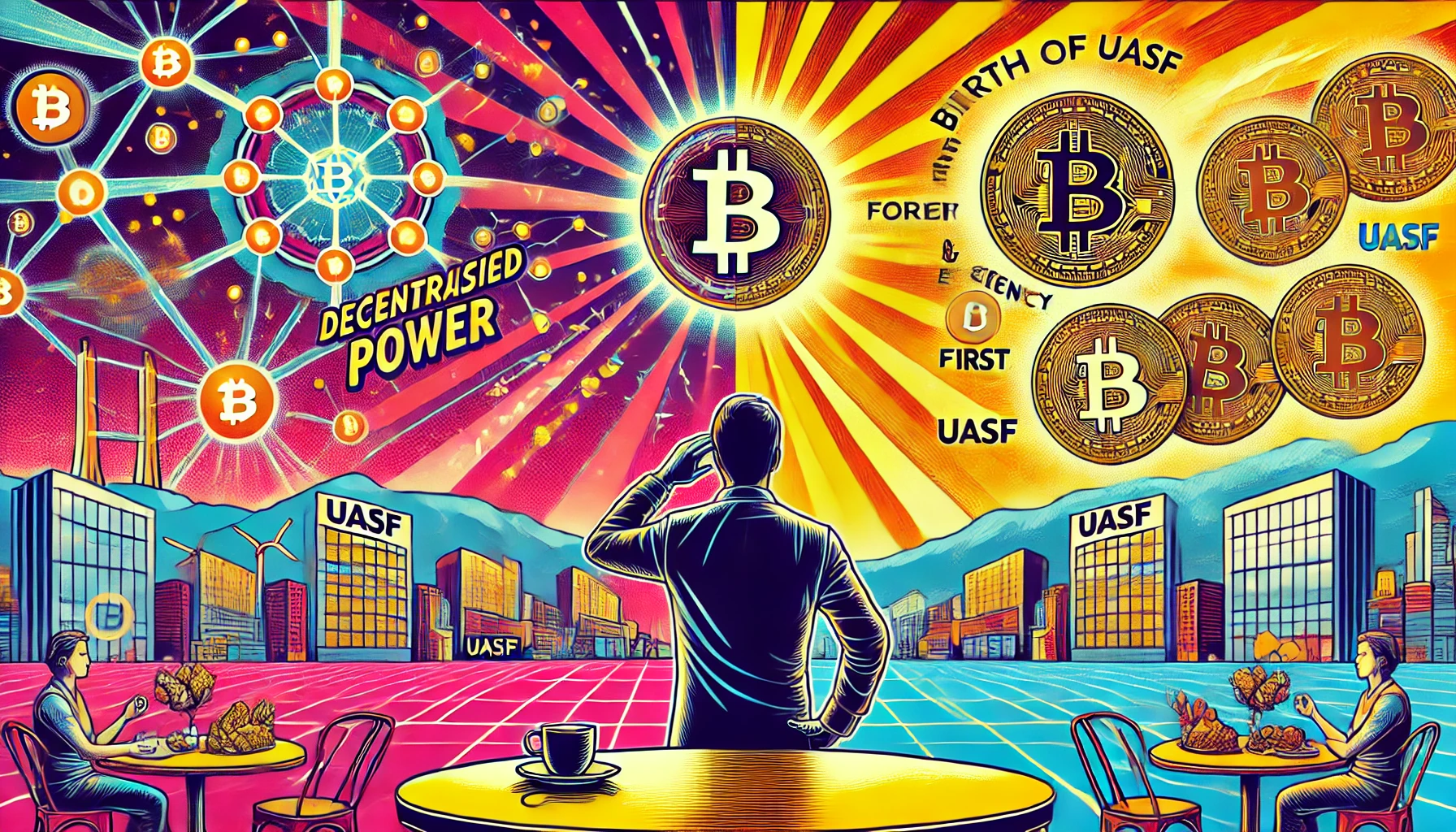
จู่ ๆ ในหน้าฟอรัมก็มีกระทู้ใหม่เด้งเด่น “Bitmain หนุน Bitcoin Cash ด้วย Hashrate กว่า 50%! สงครามเริ่มแล้ว?” ข้อความนั้นดังโครมครามเหมือนระเบิดลงกลางวง
แจ๊กนิ่งไปชั่วขณะ สัมผัสได้ถึงความปั่นป่วนที่กำลังปะทุขึ้นอีกครั้ง เหงื่อบางเบาซึมบนหน้าผากแม้อากาศในคาเฟ่จะเย็นฉ่ำ เขาหันมองโทรศัพท์ที่ยังค้างสายกับแชมป์ แล้วเอ่ยด้วยน้ำเสียงจริงจัง
“นี่ล่ะ.. จุดเริ่มของสองเส้นทางอย่างชัดเจน… บล็อกใหญ่จะไปกับ BCH ส่วน SegWit ก็อยู่กับ BTC แน่นอนว่าทั้งสองฝ่ายไม่คิดถอยง่าย ๆ นักขุดจะเลือกข้างไหน? Node รายย่อยจะยอมใคร?"
"เมื่อสงครามครั้งนี้นำไปสู่การแบ่งเครือข่าย ใครกันแน่จะเป็นผู้ชนะตัวจริง? หรืออาจไม่มีผู้ชนะเลยก็เป็นได้”
ปลายสายเงียบงัน มีแต่เสียงหายใจของแชมป์ที่สะท้อนความกังวลปนอยากรู้อย่างแรง
“พี่… สุดท้ายแล้วเรากำลังยืนอยู่บนรอยแยกที่พร้อมจะฉีกทุกอย่างออกเป็นชิ้น ๆ ใช่ไหมครับ?”
“อาจจะใช่ก็ได้... หรือถ้ามองอีกมุม อาจเป็นวัฏจักรที่ Bitcoin ต้องเจอเป็นระยะ ทุกคนมีสิทธิ์ Fork ได้ตามใจใช่ไหมล่ะ? ก็ขอให้โลกได้เห็นกันว่าชุมชนไหนแน่จริง” แจ๊กพูดทิ้งท้ายก่อนจะแย้มยิ้มเจือรอยอ่อนล้า
ภาพบนจอคอมพิวเตอร์ฉายกระทู้ถกเถียงกันไม่หยุด ประหนึ่งเวทีดีเบตที่ไม่มีวันปิดไฟ แจ๊กจิบกาแฟอึกสุดท้ายเหมือนจะเตรียมพร้อมใจก่อนเข้าสู่สนามรบครั้งใหม่ สงครามยังไม่จบ.. ซ้ำยังดูหนักข้อยิ่งขึ้นเรื่อย ๆ
เขาลุกขึ้นจากโต๊ะ ชำเลืองมองแสงแดดจัดจ้าที่สาดลงมาไม่หยุด เปรียบเหมือนไฟแห่งข้อขัดแย้งที่เผาผลาญทั้งชุมชน Bitcoin ไม่ว่าใครจะเลือกอยู่ฝั่งไหน กลุ่ม UASF, กลุ่ม Big Block, หรือ กลุ่ม SegWit ทางเดินข้างหน้าล้วนเต็มไปด้วยความไม่แน่นอน
“สุดท้ายแล้ว… เมื่อกระดานแบ่งเป็นสองเส้นทางอย่างเด่นชัด สงคราม Blocksize จะจบลงด้วยใครได้บทผู้ชนะ?"
"หรือบางที… มันอาจไม่มีผู้ชนะที่แท้จริงในระบบที่ใครก็ Fork ได้ตลอดเวลา”
คำถามนี้ลอยติดค้างอยู่ในบรรยากาศยามบ่ายที่ร้อนระอุ ชวนให้ใครก็ตามที่จับตาดูสงคราม Blocksize ต้องฉุกคิด
เมื่อไม่มีใครเป็นเจ้าของ Bitcoin อย่างสมบูรณ์ ทุกคนจึงมีสิทธิ์บงการและเสี่ยงต่อการแตกแยกได้ทุกเมื่อ แล้วท้ายที่สุด ชัยชนะ–ความพ่ายแพ้ อาจไม่ใช่จุดสิ้นสุดของโลกคริปโตฯ
แต่เป็นเพียงจุดเริ่มต้นของการวิวัฒน์ที่ไม่มีวันจบสิ้น…

เมาท์แถมเรื่อง UASF (User-Activated Soft Fork)
นี่สนามรบยุคกลางที่ดูเหมือนในหนังแฟนตาซี ทุกคนมีดาบ มีโล่ แต่จู่ ๆ คนตัวเล็กที่เราไม่เคยสังเกต—พวกชาวนา ช่างไม้ คนแบกน้ำ—กลับรวมตัวกันยกดาบบุกวังเจ้าเมือง พร้อมตะโกนว่า “พอเถอะ! เราก็มีสิทธิ์เหมือนกัน!”
มันอาจจะดูเวอร์ ๆ หน่อยใช่ไหมครับ?
แต่ในโลก Bitcoin ปี 2017 นี่คือสิ่งที่เกิดขึ้นในรูปแบบ “User-Activated Soft Fork” หรือ UASF การปฏิวัติด้วยพลังโหนด ซึ่งทำให้นักขุดยักษ์ใหญ่ตัวสั่นงันงกันมาแล้ว!
แล้ว UASF มันคืออะไรล่ะ?
“User-Activated Soft Fork” หรือเรียกย่อ ๆ ว่า “UASF” ไม่ใช่อัปเกรดซอฟต์แวร์สวย ๆ แต่เป็น “ดาบเล่มใหม่” ที่คนตัวเล็ก—หมายถึง โหนด รายย่อย—ใช้ต่อรองกับนักขุดรายใหญ่ โดยกติกาคือ.. ถ้านักขุดไม่ทำตาม (เช่น ไม่รองรับ SegWit) โหนดก็จะปฏิเสธบล็อกของพวกเขาอย่างไม่เกรงใจใคร
สมมุติว่าคุณคือโหนด..
คุณรันซอฟต์แวร์ Bitcoin คอยตรวจสอบธุรกรรม วันดีคืนดี คุณประกาศ “ต่อไปถ้าใครไม่รองรับ SegWit ฉันไม่ยอมรับบล็อกนะ!” นี่ล่ะครับ “UASF” ตัวเป็น ๆ
คำขวัญสุดฮิตของ UASF
“No SegWit, No Block”
หรือแปลว่าถ้าบล็อกไม่รองรับ SegWit ก็เชิญออกไปเลยจ้า..
มันเหมือนการที่ชาวนาโผล่มาตบโต๊ะอาหารท่านขุนว่า “นายใหญ่จะปลูกอะไรก็ปลูกไป แต่ไม่งั้นฉันไม่รับผลผลิตนายนะ!”
ความเชื่อมโยงกับ BIP 148
ถ้าจะพูดถึง UASF ต้องรู้จัก BIP 148 ไว้นิดนึง มันเปรียบเหมือน “ธงปฏิวัติ” ที่ตีตราว่าวันที่ 1 สิงหาคม 2017 คือเส้นตาย!
BIP 148 บอกไว้ว่า.. ถ้าถึงวันนั้นแล้วยังมีนักขุดหน้าไหนไม่รองรับ SegWit บล็อกที่ขุดออกมาก็จะถูกโหนดที่ใช้ UASF “แบน” หมด
ผลลัพธ์ที่ตั้งใจ นักขุดไม่อยากโดนแบนก็ต้องทำตาม UASF กล่าวคือ “นายต้องรองรับ SegWit นะ ไม่งั้นอด!”
หลายคนกลัวกันว่า “อ้าว ถ้านักขุดใหญ่ ๆ ไม่ยอมแล้วหันไปขุดสายอื่น จะไม่กลายเป็นแยกเครือข่าย (Chain Split) หรือ?”
ใช่ครับ.. มันอาจเกิดสงครามสายใหม่ทันทีไงล่ะ
ทำไม UASF ถึงสำคัญ?
ย้อนกลับไปก่อนปี 2017 Bitcoin มีปัญหาโลกแตกทั้งค่าธรรมเนียมแพง ธุรกรรมหน่วง บวกกับความขัดแย้งเรื่อง “จะเพิ่ม Blocksize ดีไหม?” ทางกลุ่มนักขุดรายใหญ่ (นำโดย Bitmain, Roger Ver ฯลฯ) รู้สึกว่า “SegWit ไม่ใช่ทางออกที่แท้จริง” แต่อีกฝั่ง (ทีม Core) ชี้ว่า “Blocksize ใหญ่มากไปจะรวมศูนย์นะ โหนดรายย่อยตายหมด”
UASF เลยโผล่มา เหมือนชาวนาตะโกนว่า
“หุบปากได้แล้วไอ้พวกที่สู้กัน! ถ้าพวกแกไม่รองรับ SegWit พวกข้า (โหนด) ก็จะไม่เอาบล็อกแก”
สาระก็คือ.. มันคือตัวบ่งชี้ว่าคนตัวเล็กอย่างโหนดรายย่อยก็มีพลังต่อรอง เป็นกลไกที่ดึงอำนาจจากมือทุนใหญ่กลับสู่มือชุมชน (Decentralization ที่แท้ทรู)
วิธีการทำงานของ UASF
ลองจินตนาการตาม..
-
การกำหนดเส้นตาย BIP 148 ประกาศไว้ “ถึงวันที่ 1 สิงหาคม 2017 ถ้านายยังไม่รองรับ SegWit โหนด UASF จะไม่รับบล็อกนาย”
-
ถ้าคุณเป็นนักขุด… คุณขุดบล็อกออกมา แต่ไม่ได้ตีธง “ฉันรองรับ SegWit” UASF โหนดเห็นปุ๊บ พวกเขาจะจับโยนทิ้งไปเลย
-
ผลกระทบ? นักขุดที่ไม่ยอมทำตามจะเจอปัญหา บล็อกที่ขุดออกมาไม่มีใครรับ—เสียแรงขุดฟรี
อาจเกิด Chain Split คือ แยกเครือข่ายเลย ถ้านักขุดเหล่านั้นไปตั้งสายใหม่
ความสำเร็จและความท้าทายของ UASF
ความสำเร็จ.. หลังการรวมพลังผู้ใช้ โหนดรายย่อยกดดันนักขุดได้ไม่น้อย จนกระทั่ง SegWit เปิดใช้งานจริงใน Bitcoin วันที่ 24 สิงหาคม 2017 ช่วยให้ธุรกรรมเร็วขึ้น แก้ Transaction Malleability และเปิดทางสู่ Lightning Network ในอนาคต
ความท้าทาย.. นักขุดบางค่ายไม่โอเค.. โดยเฉพาะ Bitmain ซึ่งคาดว่าจะสูญรายได้บางส่วน ก็นำไปสู่การสนับสนุน “Bitcoin Cash (BCH)” แยกสาย (Hard Fork) ของตัวเองตั้งแต่วันที่ 1 สิงหาคม 2017 นั่นเอง
ว่าแล้วก็เปรียบง่าย ๆ
UASF เหมือนปฏิบัติการยึดคฤหาสน์เจ้าเมืองมาเปิดให้ชาวบ้านเข้าอยู่ฟรี.. แต่อีกฝ่ายบอก
“งั้นฉันออกไปตั้งคฤหาสน์ใหม่ดีกว่า!”
บทเรียนสำคัญ UASF เป็นตัวอย่างชัดว่า “ผู้ใช้” หรือ โหนดรายย่อย สามารถสร้างแรงกดดันให้นักขุดต้องยอมเปลี่ยนได้จริง ๆ ไม่ใช่แค่ยอมรับเงื่อนไขที่ขุดกันมา
ผลกระทบระยะยาวหลังจากนั้นล่ะ?
SegWit ถูกใช้งาน ทำให้ค่าธรรมเนียมธุรกรรมลดลง (ช่วงหนึ่ง) เกิด Lightning Network เป็น Layer 2 สุเฟี้ยวของ Bitcoin เกิด BCH (Bitcoin Cash) เป็นสายแยกที่อ้างว่า Blocksize ใหญ่คือทางออก
สรุปแล้ว UASF ทำให้โลกได้รู้ว่า..
Bitcoin ไม่ใช่ของนักขุด หรือของฝ่ายพัฒนาใดฝ่ายเดียว แต่มันเป็นของทุกคน!
“Bitcoin เป็นของทุกคน”
ไม่มีใครมีอำนาจเบ็ดเสร็จ ไม่ว่าคุณจะถือ Hashrate มากแค่ไหน ถ้า Node ทั่วโลกไม่เอา ก็จบ!
“แรงขุดใหญ่แค่ไหน ก็แพ้ใจมวลชน!”
(น่าจะมีตอนต่อไปนะ.. ถ้าชอบก็ Zap โหด ๆ เป็นกำลังใจให้ด้วยนะครับ)
-
-
 @ 79998141:0f8f1901
2025-01-02 05:04:56
@ 79998141:0f8f1901
2025-01-02 05:04:56Happy new year, Anon.
Thanks for tuning in to whatever this long form post will be. I hope to make these more regular, like journal entries as we travel through "real life" and the Nostrverse together. If I'm making time for this reflective writing, then things are going as planned.
2024 was a wildly transformative year for me for many reasons... there's no way I can possibly fit all of them here. They're not all related to Bitcoin and Nostr- I've got a beautiful life outside of all that which has its own independent arc. My wife and I celebrated 7 years of marriage together, stronger than ever (don't believe that "itch" bullshit). We let go of some negative relationships and embraced some positive ones. We cut some bad habits, and we made some good habits. We worked, we traveled, we saw family, and we partied.
But damn, these two technologies have become a huge part of my life. God willing, this trend will continue until they've both eclipsed my professional capacity through our startup, Conduit BTC.
This was the year I was truly orange pilled. Until late 2023, I had traded (quite profitably) Bitcoin, "crypto", stocks, options, prediction markets and whatever else I could get my hands on that felt undervalued. I did this all in my spare time, grinding out a little financial freedom while I hustled at my fiat ventures to support my little family. I wasn't a true believer- just an opportunist with a knack for spotting where and when a crowd might flock to next. That was right up until I ran face first into Lyn Alden's book "Broken Money".
Something about Lyn's engineer/macro-finance inspired prose clicked with me, lock and key. Total one way function. By the end of the book my laser eyes had burned a hole in my bedroom ceiling. I was all in- and acted accordingly both with my capital and my attention. It wasn't long before I discovered Nostr and dove in here too, falling deep into my current orange and purple polyamorous love affair.
"If you know the enemy and know yourself, you need not fear the result of a hundred battles."
Despite the passion, through studying Bitcoin's criticisms (from the likes of Mike Green and Nassim Taleb) I found a hole in the utopian plot: none of this works without Bitcoin actually being used as money. Worldwide transactions must skyrocket demand for blockspace to keep the network secure/stable for the long term. Besides, if everyday folks aren't using Bitcoin as money then we haven't done shit to make the world a better place. In that world, we've only replaced old masters with new ones. Fuck that.
Whatever I did in this space needed to increase the usage of Bitcoin as money. Simple. This was bigger than passion, this was purpose. I knew that come hell or high water I would dedicate myself to this mission.
Lucky for me I found a partner and best friend in @aceaspades to go on this adventure with. I'm infinitely grateful for him. He's an incredible man who also happens to be an insanely creative and talented software developer. We'd tried for years to find the right project to focus on together, experimenting with all kinds of new techy ideas as they came across our field. Nothing had ever captured our attention like this. This was different. By March of 2024 we had formed a company and gotten to work iterating on how we could leverage these beautiful protocols and open-source tech to create something that served our mission. This is @ConduitBTC.
I've done well in my fiat career executing plans downstream of someone else's creative vision. I've learned the ins and outs of an established ecosystem and found ways to profit from it. I take plans developed by others, compete to win contracts to build them, and execute on them in a cashflow-positive way. I'm bringing this no bullshit blue collar skillset with me to the Nostrverse whether they like it or not.
The adventure we're embarking on now is totally different though. We're charting a new course - totally creative, highly intuitive and extremely speculative towards a future that doesn't exist yet. There are few established norms. The potential is vast but unknown. We're diving into a strange quest to sell a map to an imaginary place and to simultaneously architect its creation (alongside all the amazing builders here doing the same thing). This is insanely exciting to me.
We're barely getting started but a lot has been invested under the surface which will show itself in 2025. We'll be sharing updates in a proper post on @ConduitBTC soon.
As for my personal 2025 resolutions, here they are: - zero alcohol for the entire year (did this in 2019 and had a great year, it's time for a rerun) - more focused presence in the moment: especially with my wife - more self care and prioritized mental/physical health - this includes daily: naps, prayer, self hypnosis or meditation, sweat, and stretching/massaging (overworked in 2024 with a fiat 9-5, a board/advisor role in a fiat business I have equity in, and my newfound passion here. Two serious burn out episodes experienced this year - zero is the only acceptable number of burnouts for long term health and success.) - related to the above: get Conduit some mission-aligned funding partners and leave my fiat 9-5. Grow the Conduit team (have put in a serious amount of my personal capital already to get this going, which will show fruit in the new year... but I am not an island) - more authentic and thoughtful posts on Nostr, with a solid amount of shitposting and organic home grown memes to balance it out... more zaps, more geniune connections and interactions with the curious forward thinking people on here - more IRL Nostr/Bitcoin events - more laughter, more jokes
Enough for now. Cheers to you and yours Anon, may 2025 bring you the magic you've been dreaming of.
-
 @ 468f729d:5ab4fd5e
2025-01-01 19:00:36
@ 468f729d:5ab4fd5e
2025-01-01 19:00:36 -
 @ 2063cd79:57bd1320
2025-01-01 13:11:30
@ 2063cd79:57bd1320
2025-01-01 13:11:30Aufgabe von Minern
Wer sich nochmal genau mit dem Ablauf von Mining befassen möchte, dem rate ich Ausgabe #27 zu lesen.
https://www.genexyz.org/post/27-block-779000-was-machen-miner-wirklich-3c8f05/
Wir erinnern uns, dass es im Bitcoin-Ökosystem drei große Gruppen gibt, die sich nicht jeweils ausschließen. Es gibt die Miner, die Node-Betreiber und die Nutzer. Diese schließen sich nicht gegenseitig aus, da man auch in zwei oder sogar drei dieser Gruppen verhaftet sein kann. Die Miner übernehmen Aufgaben, die die anderen zwei Gruppen nicht leisten können und dafür werden sie durch den Anreizmechanismus belohnt. Denn durch ihre Arbeit gewährleisten sie die Sicherung des Netzwerks (je höher die aufgebrachte Hashrate, desto schwieriger werden Angriffe), sie validieren, sortieren und fügen Transaktionen dem Netzwerk hinzu und darüber hinaus helfen sie dabei bitcoins zu verteilen (zumindest bis alle ca. 21 Millionen bitcoins in ca. 100 Jahren erschlossen wurden). Warum die Analogie zum Mining schwierig ist, haben wir schon öfter besprochen, kurz und verständlich auf den Punkt gebracht hat es diese Woche Gigi in einem kurzen Beitrag.
https://dergigi.com/2023/04/12/bitcoins-are-not-mined-they-are-issued-over-time
Mining Pools
Ich habe Mining-Pools detailliert in einem Artikel letzten September beschrieben. Wer sich mit dem Thema nochmal eingehender beschäftigen möchte, kann das hier tun:
https://www.genexyz.org/post/12-block-753150-bitcoin-mining-pools-vs-dezentralisierung-vytfxv/
Doch TL;DR für all diejenigen, die keine Zeit oder Lust haben, hier in Kürze:
Die immer weiter steigende Hashrate im Netzwerk, ausgelöst durch immer größer werdende Mining-Operationen und immer leistungsfähigere ASIC Chips, führt dazu, dass es kleine und auch mittelgroße Miner immer schwerer haben erfolgreich Bitcoins zu minen, und damit Profite zu erzielen.
Mining-Pools bieten da Abhilfe, indem sie Minern die Möglichkeit bieten, ihre Hashrate zu bündeln und somit eine größere Wahrscheinlichkeit erzeugen, im Wettkampf um die Winner-take-all-Prämie, einen Teil der Belohnung in Form von Block-Subsidy und Gebühren einzustreichen (➡️ Block Reward). Je mehr Miner sich in einem Pool zusammenschließen, um somit die Hashrate zu bündeln, desto wahrscheinlicher wird, dass dieser Zusammenschluss von Minern den nächsten Block findet. Damit sinkt natürlich die einzelne Auszahlung pro Block, jedoch steigt die proportionelle Anzahl der Blocks, die dieser Pool erfolgreich produzieren kann.

Diese Rechnung lohnt sich neben Mining-Farmen auch für die meisten kleinen und mittelgroßen Miner, da so ein stetiger Fluss von Einkommen wahrscheinlicher wird, als ab-und-zu (oder nie) den Jackpot zu knacken. Das Problem bei Mining-Pools besteht in der Bündelung der Hashrate unter einer übersichtlichen Anzahl von Betreibern, denn erstens macht es jede Konzentration einer bestimmten Sache für Angreifer einfacher, diese eine große Einheit ausfindig zu machen und gezielt zu attackieren. Und zweitens verschiebt sich die dezentrale Wahrheitsfindung zugunsten einer zentralisierten Entscheidungsfindung.

Denn bisher sind es die Mining-Pools, die über die Architektur der Blöcke bestimmen, also darüber, welche Transaktionen in den nächsten Blockkandidaten gepackt werden. Dies ermöglicht Mining-Pool-Betreibern sowohl Transaktionen zu zensieren (black listing), als auch Transaktionen auszuwählen, die nicht unbedingt im besten Interesse der Miner (z.B. Transaktionen mit geringen Gebühren, obwohl es welche mit hohen Gebühren gegeben hätte), oder gar des ganzen Netzwerks sind (z.B. leere Blöcke, um das Netzwerk zu verlangsamen) (white listing). Diese vermeintliche Macht der Pool-Betreiber muss nicht unbedingt von ihnen selbst ausgenutzt werden, bietet aber auch Regierungen und anderen Apparaten einen leichten Angriffsvektor, wenn diese versuchen wollen, das Netzwerk, bzw. einzelne Transaktionen gezielt zu zensieren, indem sie Mining-Pools unter Zwang setzen.

Wie in dieser Grafik leicht ersichtlich, gibt es heute einige wenige Pools, die einen deutlichen Anteil der globalen Hashrate bündeln. 80% (!!!) der Hashrate wird von den größten vier Pools bestimmt, und immerhin 55% (also mehr als die Hälfte - immer noch nicht cool) von den beiden größten. Dies macht Pools natürlich zu einem leicht bestimmbaren Angriffspunkt mit einer riesigen Zielscheibe auf dem Rücken.

Besteht überhaupt eine solche theoretische Möglichkeit, dass z.B. Foundry USA im Rahmen einer hypothetischen Verpflichtung durch Dritte (Regierung, Finanzaufsicht, Geheimdienst, etc.) mit der Zensur bestimmter Transaktionen beginnen könnte? Die Antwort ist: theoretisch erstmal ja. Auf technischer Ebene könnte es passieren. Doch Miner würden sehr schnell erkennen, dass etwas im Busch ist und ihre Hashrate auf andere Pools verlagern (dies muss nicht mal aus altruistischen Gründen geschehen, sondern einfach weil theoretische wirtschaftliche Anreize verloren gehen).
Transaktionsauswahl
Wie schon erwähnt, sind Mining-Pool-Betreiber heute dafür verantwortlich Transaktionen für den nächsten Block vorzuschlagen. Das bedeutet der Betreiber hat die volle Kontrolle darüber, wie der nächste Block im Mining-Prozess aussieht und die Miner und Mining-Farmen werden sozusagen zu Lieferanten von Hashrate, um diesen Vorschlag umzusetzen. Pools stellen den einzigen Koordinierungspunkt zwischen den teilnehmenden Hardware-Betreibern dar. Es bleibt dem Miner natürlich selbst überlassen, welchem Pool er sich anschließt (und ob sich überhaupt einem Pool angeschlossen wird) und auch der Wechsel von einem Pool zum nächsten ist relativ simpel und schnell vollzogen. Es bleibt jedoch dabei - Betreiber sind verantwortlich für die Auswahl von Transaktionen, die in die Kandidaten-Blöcke eingefügt (oder unterlassen, sprich zensiert) werden sollen. Es besteht also eine zusätzliche Bürde für jeden Miner zusätzlich zu kontrollieren, dass keine Transaktionen ausgeschlossen werden, oder Transaktionen sauber ausgewählt werden.
“Bitcoin is dead.” “Mining is over.” “They will regulate Bitcoin.” “Censorship will come.” - Peter Todd
https://www.coindesk.com/tech/2021/05/07/marathon-miners-have-started-censoring-bitcoin-transactions-heres-what-that-means
Ob nun ein Pool-Betreiber oder Miner durch Zwang dazu geführt wird, individuelle Transaktionen hinzuzufügen, oder auszulassen, oder ob es aus eigenem Antrieb heraus geschieht (wie im obigen Artikel von MARA beschrieben: der von Marathon kontrollierte MARA Pool hatte entschieden, nur Blöcke mit OFAC-konformen Transaktionen zu produzieren und damit Transaktionen von und zu Adressen zu zensieren, die vom US-Finanzministerium auf die schwarze Liste gesetzt wurden, was einen großen Aufstand hervorrief und kein anderer Miner schloss sich dem Beispiel an. MARA veröffentlichten nach nur einem Monat in einer Pressemitteilung, dass keine Transaktionen mehr gefiltert würden.) ist dabei zunächst egal.
Doch eine Umkehrung der Verantwortlichkeit würde die Verantwortung zu den einzelnen tausenden Hardware-Betreibern (Minern) verschieben, die zentrale Entscheidungsgewalt der Pool-Betreiber auflösen und einen großen Angriffspunkt im Netzwerk eliminieren.
Wie alle anderen Computer-Netzwerk, besteht auch Bitcoin aus Protokollen, mit denen die Kommunikation zwischen Teilnehmern und Regeln festgelegt werden und die geschilderten Bedrohungen werden durch das aktuelle Protokoll ermöglicht, das von Minern und Mining-Pools verwendet wird, um miteinander zu kommunizieren: Stratum V1.
Stratum v2
Wie bei allen Sachen im Bitcoin-Ökosystem, gibt es keine zentrale Organisation, die Verbesserungen im Protokoll oder, wie in diesem Fall, in untergeordneten Protokollen vorschlagen und umsetzen kann. Es bedarf immer einer Gruppe von Entwicklern, die ein Problem im derzeitigen System erkennen und einen passenden Lösungsvorschlag unterbreiten. So auch bei Stratum. Das originale Stratum-Protokoll (v1) wurde 2012 eingeführt und wird seitdem weitgehend unverändert eingesetzt.
Bei der Stratum v2 Reference Implementation (SRI) handelt es sich um eine kostenlose, unabhängige, Open-Source-Variante von Stratum v2. Aber Justus, heißt das etwa, es gibt noch andere Stratum v2 Varianten? Bingo, Zweiter, es können beliebig viele Varianten erstellt werden. Alleine die Mining Pools entscheiden darüber, welches Protokoll, also welche Software, für sie und ihr Geschäftsmodell am besten funktioniert. Und die kürzlich vorgestellte Variante, die SRI, ist das bis dato umfangreichste und am weitesten unterstützte Update des Protokolls. Denn sowohl Braiins, ein Anbieter von Mining-Pools und Mining-Software (inkl. einer eigenen Variante von Stratum v2), als auch Foundry USA, der derzeit größte aller Mining-Pools, sind aktive Unterstützer des Projekts.
SRI ist also das wichtigste Protokoll-Update seit 2012. Aber was genau macht v2 so wichtig und wo liegen die Schwächen von v1?
In der aktuellen Version 1 ist Datenübertragung zwischen Minern, aber auch zwischen Minern und Pool-Betreibern nicht verschlüsselt. In v2 wird Kommunikation verschlüsselt und gewährleistet so Integrität und Vertraulichkeit der übermittelten Informationen. Dies soll vor allem vor sogenannten Man-in-the-Middle-Angriffen schützen, bei denen Dritte die Übertragung von Hashrate zwischen Minern und Pools abfangen (sogenanntes Hashrate-Hijacking), und diese als die eigenen weiterzuleiten und somit Auszahlungen zu stehlen.

Das v2 Protokoll ist vollständig binär. Das heißt, Datenübertragungen werden nicht in Menschen-lesbarem Textformat (ASCII Code), sondern in Computer-lesbarem Binärformat vorgenommen, was unnötige Datenmengen eliminiert. Dies und einige andere Leistungsverbesserungen machen den gesamten Prozess bis zu 20% performanter.
Stratum v2 dezentralisiert das Bitcoin-Mining erheblich, denn Miner bekommen die Möglichkeit, die Transaktionen fortan selbst auszuwählen, wodurch das Netzwerk zensurresistenter wird. Dies wird mit Hilfe von weiteren untergeordneten Protokollen erreicht, die es Minern ermöglichen, Transaktionen über ihre Nodes auszuwählen. Dies ist ein wichtiger Meilenstein bei der Demokratisierung der Transaktionsauswahl im gepoolten Mining und eliminiert die oben beschriebenen Risiken.

Konkret haben die Entwickler ein neues dezentralisiertes untergeordnetes Protokoll geschaffen, das sich Job Negotiator (JN) nennt. Achtung, jetzt wird es etwas technisch: Miner betreiben ihre eigenen Knoten, die eine neue Vorlage direkt vom Vorlagenanbieter erhalten. Die neue Vorlage enthält den Merkle-Pfad der Transaktionen, die vom Anbieter ausgewählt wurden. Für den neuen Block muss ein neuer Job erstellt werden, also sendet der JN des Miners eine Nachricht mit einem vorgeschlagenen Satz von Transaktionen an den Pool-Betreiber. Der Betreiber akzeptiert dann die Vorlage oder lehnt sie ab. Wenn der Vorschlag der Miner akzeptiert wird, werden sie benachrichtigt, dass sie mit dem Mining beginnen und ihre anteilige Hashrate an den Pool senden können.

Kurz gesagt: Miner schlagen vor, welche Transaktionen in einen Block kommen und nicht andersrum. Alle sind glücklich, alle sind froh und darüber hinaus geschieht dies natürlich blitzschnell, sodass für die Miner und den Pool kein Nachteil gegenüber anderen Mitbewerbern entsteht, denn beim Mining zählt jede Millisekunde, wenn es darum geht erfolgreich den nächsten Block produzieren zu dürfen, oder nicht.
Was sind die Anreize für die Pool-Betreiber, dieses neue Protokoll zu verwenden, wenn sie damit ihr Gewaltmonopol aufgeben?
Relativ einfach: Pool-Betreiber mögen diese Verantwortung eigentlich gar nicht. Sie haben sie irgendwie geerbt und sind mit dieser großen Verpflichtung gegenüber dem Netzwerk und sich selbst irgendwie im Unreinen. Ein bisschen so wie bei Morty, Aaliyah, Djibrail, Laila, Issa, Leonora, Naima und Amaya.

Pool-Betreiber mögen es also nicht so in der Öffentlichkeit zu stehen und permanent angegriffen zu werden, des Weiteren birgt die Transaktionsauswahl auch ein gewisses Haftungsrisiko, das sie gerne von sich weisen würden.
Die beiden anderen grundlegenden Merkmale des Stratum v2 Protokolls sind, wie oben beschrieben, natürlich auch Sicherheits- und Leistungsverbesserung. Alleine für diese Attribute würde es sich schon lohnen, auf das neue Protokoll umzusteigen.
Die neue Variante des Protokolls (SRI) wurde erst kürzlich öffentlich und als Open-Source Code zugänglich gemacht. Es bleibt also nur eine Frage der Zeit, bis sich nach Braiins und Foundry auch die anderen Mining-Pools (sehr wahrscheinlich) nach einer gründlichen Test-Phase dem Update öffnen.
https://www.nobsbitcoin.com/carole-house-censoring-bitcoin
Besonders in Zeiten, in denen Gegner von Bitcoin in halb-öffentlichen Reden über Pläne sprechen, wie man das Bitcoin-Netzwerk kontrollieren, bzw. für seine Zwecke benutzen kann, ist es wichtig die oben besprochenen Angriffs-Vektoren zu minimieren.
Carole House, ehemalige Direktorin für Cybersicherheit des Nationalen Sicherheitsrates des Weißen Hauses, sprach bei einem Event an der Universität von Princeton und sagte "sie würde lieber mehr Hashrate in den USA sehen, damit sie Miner zwingen können, das Netzwerk zu zensieren" und dass es "nicht nur darum ginge, Minern zu sagen, dass sie bestimmte Transaktionen nicht in Blöcke einbauen, sondern auch nicht auf Blöcken mit nicht konformen Transaktionen aufzubauen, damit diese Transaktionen nirgendwo in der Kette ankommen".
Die zeugt davon, dass Menschen wie Carole House ein substantielles Verständnis von der Bitcoin-Technologie besitzen und dieses Fachwissen dafür verwenden werden, Wege und Mittel aufzutun, wie man Bitcoin zumindest attackieren kann.
🫳🎤
In diesem Sinne, 2... 1... Risiko!

-
 @ a10260a2:caa23e3e
2025-01-01 12:42:22
@ a10260a2:caa23e3e
2025-01-01 12:42:22I’d like to start off by saying that phoenixd has been a great experience so far. The install (on a Linux machine) was as easy as depicted on their website.
And the channel I opened via auto liquidity was super simple. I didn’t have to pick an LSP and I won’t need to manage liquidity.
Unfortunately, the machine I installed the software on started to freeze seconds after every boot. After posting about it here and getting an answer from nostr:npub1lxktpvp5cnq3wl5ctu2x88e30mc0ahh8v47qvzc5dmneqqjrzlkqpm5xlc, I was surprised at how easy the migration seemed.
It really was just a matter of restoring the seed words on another phoenixd instance. Of course, making sure that the two instances don’t run at the same time.
As easy as it was, I wanted to create this post to give a quick overview for those who might be less tech savvy.
Step 1
Grab seed words from the
seed.datfile in hidden.phoenixfolder on the old machine.Step 2
Install phoenixd on the new machine
``` $ wget https://github.com/ACINQ/phoenixd/releases/download/v0.4.2/phoenix-0.4.2-linux-x64.zip $ unzip -j phoenix-0.4.2-linux-x64.zip
$ # run the daemon: that's it! $ ./phoenixd ```
Step 3
(This is the step that wasn’t super clear and why I wanted to spell it out in this post)
In order to install the software,
./phoenixdhas to be run. This is going to generate a new seed phrase.Now, all you need to do is replace the seed words in
seed.datwith the ones from the original install.In retrospect, I think you can replace the seed words right after unzipping the zip file and before running
./phoenixd. That will probably achieve the same result.Step 4
Once the seed words have been restored. Just run
./phoenixdagain and it’ll start up like nothing happened.Literally.
There was no indication whatsoever that something had changed, so I ran
./phoenix-cli getinfoand, voila, there was my 2M-sat channel.It was quite magical.
originally posted at https://stacker.news/items/829411
Update (1/1/2025)
Phoenix Support got back to me and confirmed that the migration can be even simpler. You can actually just copy the ~/.phoenix directory onto the new machine and run
./phoenix!
-
 @ b4403b24:83542d4e
2024-12-31 22:24:43
@ b4403b24:83542d4e
2024-12-31 22:24:43As we bid farewell to 2024, let’s celebrate the memories, lessons, and triumphs it brought us. May 2025 shine even brighter, bringing you joy, success, and endless opportunities.
Here’s to new beginnings, cherished moments, and a year filled with happiness. Cheers to 2025! 🥂
originally posted at https://stacker.news/items/831699
-
 @ 7ed5bd1c:4caa7587
2025-01-08 07:35:42
@ 7ed5bd1c:4caa7587
2025-01-08 07:35:42Bitcoin เป็นเกราะป้องกันจากการควบคุมของรัฐบาล
ในโลกที่การควบคุมทางการเงินของรัฐมีผลกระทบต่อชีวิตของประชาชน การปกป้องทรัพย์สินส่วนบุคคลจึงเป็นประเด็นสำคัญที่หลายคนกังวล Bitcoin ได้เข้ามามีบทบาทสำคัญในฐานะเครื่องมือที่ช่วยป้องกันการอายัดทรัพย์สินและการแทรกแซงทางการเงินจากรัฐบาลและองค์กรต่างๆ
กรณีศึกษาที่น่าสนใจ
-
เวเนซุเอลา: เมื่อประเทศประสบภาวะเงินเฟ้อสูงและรัฐบาลมีการควบคุมการแลกเปลี่ยนเงินตราต่างประเทศ ประชาชนบางส่วนใช้ Bitcoin เพื่อรักษามูลค่าทรัพย์สินของพวกเขาและทำธุรกรรมข้ามพรมแดนโดยไม่ต้องผ่านการตรวจสอบจากรัฐบาล
-
แคนาดา: ในปี 2022 รัฐบาลแคนาดามีการอายัดบัญชีธนาคารของผู้ประท้วงในการเคลื่อนไหวทางการเมืองบางอย่าง Bitcoin กลายเป็นช่องทางในการระดมทุนและช่วยให้ประชาชนสามารถป้องกันการแทรกแซงจากรัฐบาลได้
-
ไนจีเรีย: ธนาคารกลางไนจีเรียสั่งห้ามธุรกรรมที่เกี่ยวข้องกับ Bitcoin และคริปโตเคอร์เรนซีอื่นๆ แต่ประชาชนกลับหันมาใช้ Bitcoin ในตลาดมืดเพื่อหลีกเลี่ยงข้อจำกัดและรักษาความเป็นอิสระทางการเงิน
Bitcoin ปกป้องทรัพย์สินอย่างไร?
-
ความเป็นเจ้าของแท้จริง: Bitcoin ใช้ระบบกระจายศูนย์ที่ไม่มีตัวกลาง ซึ่งหมายความว่าไม่มีองค์กรหรือรัฐใดสามารถเข้าถึงหรือยึดครอง Bitcoin ของคุณได้ หากคุณเก็บรักษาคีย์ส่วนตัวอย่างปลอดภัย
-
ไร้พรมแดน: Bitcoin สามารถโอนย้ายได้ทั่วโลกโดยไม่ต้องผ่านธนาคารหรือสถาบันการเงินที่อยู่ภายใต้การควบคุมของรัฐบาล ทำให้เป็นตัวเลือกที่น่าสนใจสำหรับผู้ที่ต้องการหลบเลี่ยงการอายัดทรัพย์สิน
-
ความโปร่งใสและความปลอดภัย: การทำธุรกรรมของ Bitcoin ถูกบันทึกในบล็อกเชนซึ่งเป็นระบบที่โปร่งใสและตรวจสอบได้ ในขณะเดียวกันข้อมูลส่วนบุคคลของผู้ใช้งานจะถูกเก็บเป็นความลับ
ข้อควรระวัง
แม้ Bitcoin จะมีข้อดีในเรื่องการปกป้องทรัพย์สินจากรัฐ แต่ผู้ใช้งานต้องมีความระมัดระวังในการจัดเก็บคีย์ส่วนตัว และหลีกเลี่ยงการพึ่งพาบริการจากบุคคลที่สามที่อาจไม่ปลอดภัย
ในโลกที่อิสรภาพทางการเงินถูกท้าทาย Bitcoin กลายเป็นเครื่องมือสำคัญสำหรับการปกป้องทรัพย์สินและสิทธิส่วนบุคคลของประชาชน คุณคิดว่า Bitcoin สามารถเป็นคำตอบสำหรับความท้าทายนี้ได้จริงหรือไม่? ร่วมพูดคุยในความคิดเห็น!
-
-
 @ 896c3ee8:e054cc31
2025-01-08 06:19:51
@ 896c3ee8:e054cc31
2025-01-08 06:19:51I was scrolling through some news articles published by Primal.net/flash on my phone —Bitcoin up, Trump said this or that, accompanied by a screenshot of Twitter. I asked myself: why does social media exist? Is it to fulfill our need for social connection? Is it to show off our thoughts? Is it validation? It wasn’t like this long ago. It was a part of life now it is Life.
Quite some time ago, I was baffled to see a woman being prosecuted in a court of law based on what she had posted on Facebook! Facebook? Seriously, an internet post landing a person in jail? Since when? No one notified me. I thought the internet was just a thing—a toy for us to play with, have fun, and then return to our real life. I remember using Pidgin and IRC; back then, the internet was just a tool. One sudden day, all of that turned into serious business. Early internet, and by extension social media, was a fun place, but now it is a place where real money is spent and real lives are built. I mean, some of the richest companies are software companies—an industry titan propelled by intangible property. It is hard not to miss the early days when one could say absolutely anything in a forum post and leave forever, detached from the filth they spewed. Now we all know censorship, data mining, AI training, and laws getting involved. I cannot even take part in a cultural movement without being tracked and attacked. At some point, the internet attached itself to human consciousness so deeply that it has now become inseparable from the human experience and experience of life. Just like reading and writing, to live a modern life, one must have an internet connection and a social media account. It’s disheartening to think that our worth is often measured by the number of people who 'follow' us.
This attachment meant that there were powers who needed to control the internet. Laws were hopeless on the internet—one could break a list of laws of a particular country sitting from a boat in a faraway land where no jurisdictional police could touch a single fleck of their hair. This cross-border nature made it very necessary for law enforcement to up their game, and so they did. Now, posting something and forgetting it being associated with you is a dream of the past.
To achieve this, they went into a Hail Mary attempt to break human rights written in the declaration they all signed. The right to privacy needed to go first. You see, on the internet, you are not a human—just a fat, Mountain Dew-drinking piece of meat, a data generation machine. Rights mean very little for you if you are a keyboard warrior. No clause in the Universal Declaration of Human Rights said that an account on the internet is a human! So you lose privacy. Since law enforcers break privacy, it looks like it really is not a crime to break it. So, service providers break it too. Who is to stop them now? Law enforcers?
That is just the tip, perhaps even a necessary evil. Breaking privacy only allows enforcement of laws that have been written. There needs to be some mechanism to enforce laws that are not written—the so-called "soft laws" (a term used in international law). If illegal activity is to be curbed, instead of chasing after criminals, why not be proactive and get to the root of the evil: human thought? Here enters censorship. If you don't know about something you won't act on it. If you do not know about guns, you will not pick up a gun. Censorship allows law enforcers to enforce laws that may be written in the future, potential laws. Maybe one day, being on a particular political side will be deemed illegal, so let’s stop it now. Ever heard of a cat chasing a mouse? Censorship is just a mouse chasing a cat. A reversal of cause and effect.
These two factors, coupled with the internet's revenue stream—your attention—ruined the internet. Ads by God are one of the most human things humans have created: “Let us show you what you could be a part of. As you are right now, you seem unfulfilled; let us show you what you want.” The economy of attention is best tapped by creators working on our primal urge for reproduction. The porn industry is a mega titan for this reason. I do not have any bad words against the innovators working in that industry. They are the true and perhaps only industry that uses the internet to its maximum and has great respect for technology and technological innovation.
When I think more deeply about the purpose of social media, I realize I have no clear answer. Why should one show what their lunch looks like? What is the goal of sharing such trivial experiences? Perhaps the dopamine rush of likes and engagement is strong enough to motivate such actions. The definition of an individual gets blurred here. What is an individual person? A collection of social media posts? Or should we emphasize more on your offline version the flawed acne and angst filled individual who subscribes to the weird, concorted philosophy of Proudhon, Locke, and Marx? The algorithms have been determining the future of people on social media. People are worried about losing jobs to a computer now. Since YouTube and Instagram started utilizing attention to pay people, algorithms began to determine who should be paid and what should be paid. The ship of us being under a computer has long sailed.
To answer why social media exists, here is one study that identified ten uses and gratifications for using social media: social interaction, information seeking, passing time, entertainment, relaxation, communicatory utility, convenience utility, expression of opinion, information sharing, and surveillance/knowledge about others (reference ISSN: 1352-2752). Most studies you find will be in line with these. I will not expound more on this; you all know why you use social media, and you all also know why people use social media.
To end it, Nostr gives you certain things that traditional social media and the 'internet' fail to provide. You know what those are since you are here.
P.S.—This is written exclusively for the eyes in the Nostr ecosystem. I will not publish it anywhere else. Link people to this post even from outside; I don’t care.
-
 @ 468f729d:5ab4fd5e
2024-12-31 22:03:31
@ 468f729d:5ab4fd5e
2024-12-31 22:03:31 -
 @ bd50a856:038f487c
2025-01-08 04:25:47
@ bd50a856:038f487c
2025-01-08 04:25:47I'M NOT IN SCHOOL WHY AM I DOING THIS?
https://image.nostr.build/9df38856e4493466585f451771a013959ac7e29135289b4922a810623577dbef.jpg
Isms in my opinion are not good. - Ferris Bueler
OK so like many a disillusioned youth I was a pretty hardcore Marxist back in college. There's a common pipeline that starts as a 13 year old who wished they could vote for Ron Paul in 2008, takes a hard left turn at the first sign of bigotry, and winds up with a pretty badass juche tattoo. The Enlightenment era ideas of an ascertainable objective truth and mankind's control over their own destiny, combined with the complete subversion of the political history I was brought up with felt very empowering. But nowadays I'm not so sure I want to lay claim to any specific point or vector on the political spectrum. 2024 was in many ways a year of reflection for me. I've managed to reconnect with my sense of spirituality after years of bitterness towards the concept brought on by a life of run-ins with religious fundemantalism, and I had to challenge alot of things that for years I've taken for granted both about myself and the world at large. This ideological audit was in no small way catalyzed by my adoption of NOSTR, which with its endless potential enticed me out of the progressive echo chamber I made my digital home on the fediverse and into a new echo chamber: one full of Bitcoiners.
I had bought Bitcoin before, as a way to short the dollar, but I never encountered its ideologues in the wild. At first gradually then suddenly I was making the types of arguments in my head that former me would have decried as pedantic to the point of being apologetic towards the ruling class. And just like that the 19th and 20th century political and philosophical works which I zaelously held as trail blazes on the long and labyrinthine path towards realizing Absolute Truth were cast forcefully into their murky historical context by the staggering success of the first truly decentralized monetary system. In my college days, I saw Lenin's model of revoutionary politics and the Vanguard Party as the only way for a people's movement to legitimately threaten the hegemony of the global oligarchs who caused so much unnecessary suffering. Now I can see how whether or not that type of centralization was a necessary concession then, one cannot in good faith believe it to be so in the age of Bitcoin.
Yet you'll have to forgive me because still I'm sympathetic to much of the broader movement of Marxism. I detest how Great Man Theory suboordinates the totality of the evolution of society to the wills of a few individuals, and prefer to see socialism in a different light. Rather than viewing the movement as a clever trick some cartoonishly evil mustaches and haircuts used to brainwash almost half the human population, I see a genuine attempt by hundreds of millions of people to change the world for the better, forever. Yes the suffering was immense, and many many people for whom the tumult was too much, as well as those who wished to maintain their parasitic lifestyles, fled for their lives it was far from a black and white phenomena. Living standards also skyrocketed over the long run in places like the USSR and the PRC, from literacy to employment to diet, access to healthcare, you name it. But still the narrative of Hegel's Dialectic playing out in the arena of class politics - wherein the oppressed by becoming the oppressors would naturally do away with oppression altogether by following their self interest just as the Bourgeoisie had done, thereby unwinding the knot of economic injustice - has lost its status as the driving force of all of history for me. It's still much more compelling than the caricature of simply replacing one form of centralization with another. Rather its a much more relatable fallacy: taking a truth, in this case the millennia of class struggle which humanity has dealt with since the advent of agriculture, and trying to extrapolate from it some abstract and all compassing polemic that makes it all make sense. Moreover, in the same way that Bitcoiners say, "Once you see it you can never go back," I cannot unlearn just how hypocritical and dishonest the Western narrative of history is. Lying and calling America the land of the land of opportunity when the abundance we've known for our Empire's whole existence exists merely because of stolen land and slave labor. This is not a moralist objection by the way, though that would be wholly justified. The true horror is that people view the US as the model of a self sufficient nation state when in reality it has always been parasitic, even in it's larval stage. And of course the disillusion with every military campaign since the end of World War 2, starting with the grotesque and gratuitous display of power in Hiroshima and Nagasaki, then the fraudulant and deadly campaigns in Korea, Loas, Vietnam, and of course the entire Middle East. Our own forms of surveillance, censorship, repression all staring at us in the images we projected on the face of the Berlin Wall.
I know a little part of that probably rubbed some of you the wrong way. Hey we still were a net positive force in WW2, of course. And despite many differences in historical interpretations, when it comes to Marx's tomes of economic criticism I think the Bitcoiners of NOSTR would find a lot of rhetorical similarities with their gripes about the age of fiat actually share many rhetorical similarities: The levers of control over the global economy had been consolidated by a select view who were spamming them to make themselves inordinately wealthy at the cost of the quality of life for the majority of Planet Earth. The value of your labor is being ciphoned by a bunch of rackateering lizard men known as politicians. Fair competition, the spirit of Capitalism on paper, has been eroded by its those who claim to be its biggest proponents. Forever wars as a business, predatory global economic policies, proles=plebs, yada yada. Although I guess this note would be pointless if I yada-yada'd over the best parts.
THE INVISIBLE HANDJOB
https://image.nostr.build/595f3d10072c92fc66f9ad314de5d6eeb7e76a9bc26021c690d89cbd9bbe0a15.gif
The landlords, like all other men, love to reap where they never sowed, and demand a rent even for its natural produce. -Adam Smith
In the above quoted Wealth of Nations (Book 1, chapter 11) as well as in Book 4 and in The Theory of Moral Sentiments, everyone's favorite economist they've never read paints a complex and somewhat contradictory image of the proprietors over the means of production in his time. He saw greed and gluttony in their souls, but viewed their actions within the context of an emergent system whereby their selfishness propelled the interest of everyone. So, almost exactly how Marx viewed the holy timespanning vendetta of the have-nots of the world. However, in Book 1 ch10 of Wealth of Nations Smith says this:
[The rent] is not at all proportioned to what the landlord may have laid out upon the improvement of the land, or to what he can afford to take; but to what the farmer can afford to give,
In a section where he concedes that the landlords' actions amount to extortion. He also articulates here how through the influence of legislation, the landlord class effectively outlawed collective negotiation on the part of the working class while bolstering it for themselves, resulting in monopolies. Marx cites Smith himself throughout Das Kapital, and lays out extensively this process of the consolidation of capitalist power in part 3 of the first volume. The two also subscribed to the Labor Theory of Value, as did every other Enlightenment era economist... and so do most Bitcoiners! At least they sure sound like they do when they talk about the erosion of the masses' life force by the debasement of fiat. After all if the commodity that is money is an expression of your time and labor, then so must be the value of every other commodity. I've heard people try to glibly dismiss the LTV as stupid, citing things like land, products of fully automated processes... And digital assets. As if land didn't have to be surveyed, and discovered (or won in a genocide). Or if fully automated production processes didn't require thousands of hours of expert labor on robotics and/or computer engineering. Or if all financial assets in general didn't hold merely a hypothetical value as a representation of value wrought in the productive economy. And to be perfectly honest I always found the subjective theory of value to be downright silly, like imagine haggling at a supermarket over a gallon of milk. Yes demand is subjective (and really more of an expression of willing buying power than need but that's a whole other can of worms), but it's wholly reliant on objective factors such as scarcity and the relative difficulty to produce a certain commodity oneself. And when those who corner the market collude on pricing it's not like you even have the ability to "vote with your money". You have no leverage, unless you own a cow. All in all the price of a commodity can't be anything other than an approximation of its objective value based on the average cost of the raw materials and socially necessary labor time, ebbing and flowing with the asynchronous undulations of supply and demand. And maybe a little extra something just to cushion that P&L. OK maybe a lot. Gotta outperform inflation, right?! Was I being glib, myself, there? It just feels self evident from my current perspective, the hollow vampirism of it all. Capitalists enacting the rights to procure surplus value, reinsert it as capital in order to procure even more surplus value, rinsing and repeating, drifting further and further from the corporeal reality of our own survival and swallowing entire generations in the process.
STATISTS BE LIKE...
https://image.nostr.build/3109eed06d708cfad1ec0c8f4a823b8d6c58b73d3a7f73a94cdcafe22554656f.jpg
The government solution to a problem is usually as bad as the problem- Milton Friedman
On September 11, 1973 Chilean President Salvador Allende died during a fascist coup d'état perpetrated by the commander in chief of the military Augusto Pinochet. Officially he took his own life for fear of what would be done to him, but it remains a contentious topic. Pinochet's regime was characterized by mass arrests, widespread use of torture, extrajudicial killings, mass exiles, and brutal censorship of his political ditractors. But he cut taxes!!!! And he did so with the council of the Chicago Boys, a group of Chicago University alumni and disciples of right wing icon Milton Friedman. Friedman applauded Pinochet's government for his economic policies and providing a shining example of Milton's take on what small laissez-faire government looks like: Repression of the masses, no rules for the classes.
Pinochet was also a collaborator with the CIA on their project Operation Condor, whereby the funding and stoking of violence and unrest was weaponized to subvert the rise of left leaning politics throughout South and Central America and maintain cheap access to raw materials which US corporations relied on. As a matter of fact, the deep state has an endless track record of resorting to all sorts of crazy measures to subvert the popularity of socialism. This contradicts directly the American conservative view that the deep state wants socialism, and that Trump - who has cooperated in the continuations of these policies with the attempted coups in Venezuela and Bolivia during his first term - is here to stop 'em. The scapegoating and fear mongering of foreign left leaning governments in lucrative regions is a time honored tradition here In the US. All the West has always had more in common with the totalitarianism of Fascism than the East. If you're curious or skeptical about this, looking up Michael Parenti's Blackshirts & Reds is a good place to start digging deeper.
And while conservatives remain in denial about the parasiticism and exclusion their version of freedom relies on, Progressivism, as I see it, is a limping, mutilated, abomination of a watered down version of itself. Democrats for over a century now continue offering the bare minimum that would assuage their cinstituencies in the short term at best, and the exact same neocon policies of war and imperialism abroad, and corporate oligarchy and a police state at home. Yet every two years progressives walk beleaguered to the polls to vote blue no who. And Milton Friedman laughs in his grave. Reminds me of one of my favorite quotes, attributed to president of Tanzinia, Julius Nyere: "The Americans also have a one party state, but with typical American extravegance, they have two of them." https://image.nostr.build/9380dbc6d51a443b76340b46c760e12c9bb0540a170a8f5a2a22847e0bba88c7.jpg
WHAT IS DO BE DONE?
https://image.nostr.build/94aaebe5364c3c6a0094f09640ef18b05938d889124f874c49243f4ea972f725.jpg
I found freedom. Losing all hope is freedom. - Edward Norton, Fight Club
If you made it through all that rambling, what is wrong with you? In all seriousness, I hope this was a fruitful glance into the mind of someone who might think a little differently. In a rapidly evolving world, where systems we ourselves have put in place not only constitute the environment we live in, but reproduce themselves through our behavior as well, despondency, rage, and confusion permeate the collective consciousness. But there's also Bitcoin, which to an increasing number - and to an extent myself - represents a successful proof of concept of a new, genuinely Decentralized Ideological Apparatus. One which relies on Mutual Aid and the cooperation of smaller, decentralized and self sufficient communities. And to a certain extent it also represents hope. But it's as much an asset to those who'd prefer to continue feeding on the suffering of others as it is to those hoping for a change. Hope is as dangerous as fear - Lao Tzu
-
 @ f9cf4e94:96abc355
2024-12-31 20:18:59
@ f9cf4e94:96abc355
2024-12-31 20:18:59Scuttlebutt foi iniciado em maio de 2014 por Dominic Tarr ( dominictarr ) como uma rede social alternativa off-line, primeiro para convidados, que permite aos usuários obter controle total de seus dados e privacidade. Secure Scuttlebutt (ssb) foi lançado pouco depois, o que coloca a privacidade em primeiro plano com mais recursos de criptografia.
Se você está se perguntando de onde diabos veio o nome Scuttlebutt:
Este termo do século 19 para uma fofoca vem do Scuttlebutt náutico: “um barril de água mantido no convés, com um buraco para uma xícara”. A gíria náutica vai desde o hábito dos marinheiros de se reunir pelo boato até a fofoca, semelhante à fofoca do bebedouro.

Marinheiros se reunindo em torno da rixa. ( fonte )
Dominic descobriu o termo boato em um artigo de pesquisa que leu.
Em sistemas distribuídos, fofocar é um processo de retransmissão de mensagens ponto a ponto; as mensagens são disseminadas de forma análoga ao “boca a boca”.
Secure Scuttlebutt é um banco de dados de feeds imutáveis apenas para acréscimos, otimizado para replicação eficiente para protocolos ponto a ponto. Cada usuário tem um log imutável somente para acréscimos no qual eles podem gravar. Eles gravam no log assinando mensagens com sua chave privada. Pense em um feed de usuário como seu próprio diário de bordo, como um diário de bordo (ou diário do capitão para os fãs de Star Trek), onde eles são os únicos autorizados a escrever nele, mas têm a capacidade de permitir que outros amigos ou colegas leiam ao seu diário de bordo, se assim o desejarem.
Cada mensagem possui um número de sequência e a mensagem também deve fazer referência à mensagem anterior por seu ID. O ID é um hash da mensagem e da assinatura. A estrutura de dados é semelhante à de uma lista vinculada. É essencialmente um log somente de acréscimo de JSON assinado. Cada item adicionado a um log do usuário é chamado de mensagem.
Os logs do usuário são conhecidos como feed e um usuário pode seguir os feeds de outros usuários para receber suas atualizações. Cada usuário é responsável por armazenar seu próprio feed. Quando Alice assina o feed de Bob, Bob baixa o log de feed de Alice. Bob pode verificar se o registro do feed realmente pertence a Alice verificando as assinaturas. Bob pode verificar as assinaturas usando a chave pública de Alice.

Estrutura de alto nível de um feed
Pubs são servidores de retransmissão conhecidos como “super peers”. Pubs conectam usuários usuários e atualizações de fofocas a outros usuários conectados ao Pub. Um Pub é análogo a um pub da vida real, onde as pessoas vão para se encontrar e se socializar. Para ingressar em um Pub, o usuário deve ser convidado primeiro. Um usuário pode solicitar um código de convite de um Pub; o Pub simplesmente gerará um novo código de convite, mas alguns Pubs podem exigir verificação adicional na forma de verificação de e-mail ou, com alguns Pubs, você deve pedir um código em um fórum público ou chat. Pubs também podem mapear aliases de usuário, como e-mails ou nome de usuário, para IDs de chave pública para facilitar os pares de referência.
Depois que o Pub enviar o código de convite ao usuário, o usuário resgatará o código, o que significa que o Pub seguirá o usuário, o que permite que o usuário veja as mensagens postadas por outros membros do Pub, bem como as mensagens de retransmissão do Pub pelo usuário a outros membros do Pub.
Além de retransmitir mensagens entre pares, os Pubs também podem armazenar as mensagens. Se Alice estiver offline e Bob transmitir atualizações de feed, Alice perderá a atualização. Se Alice ficar online, mas Bob estiver offline, não haverá como ela buscar o feed de Bob. Mas com um Pub, Alice pode buscar o feed no Pub mesmo se Bob estiver off-line porque o Pub está armazenando as mensagens. Pubs são úteis porque assim que um colega fica online, ele pode sincronizar com o Pub para receber os feeds de seus amigos potencialmente offline.
Um usuário pode, opcionalmente, executar seu próprio servidor Pub e abri-lo ao público ou permitir que apenas seus amigos participem, se assim o desejarem. Eles também podem ingressar em um Pub público. Aqui está uma lista de Pubs públicos em que todos podem participar . Explicaremos como ingressar em um posteriormente neste guia. Uma coisa importante a observar é que o Secure Scuttlebutt em uma rede social somente para convidados significa que você deve ser “puxado” para entrar nos círculos sociais. Se você responder às mensagens, os destinatários não serão notificados, a menos que estejam seguindo você de volta. O objetivo do SSB é criar “ilhas” isoladas de redes pares, ao contrário de uma rede pública onde qualquer pessoa pode enviar mensagens a qualquer pessoa.

Perspectivas dos participantes
Scuttlebot
O software Pub é conhecido como servidor Scuttlebutt (servidor ssb ), mas também é conhecido como “Scuttlebot” e
sbotna linha de comando. O servidor SSB adiciona comportamento de rede ao banco de dados Scuttlebutt (SSB). Estaremos usando o Scuttlebot ao longo deste tutorial.Os logs do usuário são conhecidos como feed e um usuário pode seguir os feeds de outros usuários para receber suas atualizações. Cada usuário é responsável por armazenar seu próprio feed. Quando Alice assina o feed de Bob, Bob baixa o log de feed de Alice. Bob pode verificar se o registro do feed realmente pertence a Alice verificando as assinaturas. Bob pode verificar as assinaturas usando a chave pública de Alice.

Estrutura de alto nível de um feed
Pubs são servidores de retransmissão conhecidos como “super peers”. Pubs conectam usuários usuários e atualizações de fofocas a outros usuários conectados ao Pub. Um Pub é análogo a um pub da vida real, onde as pessoas vão para se encontrar e se socializar. Para ingressar em um Pub, o usuário deve ser convidado primeiro. Um usuário pode solicitar um código de convite de um Pub; o Pub simplesmente gerará um novo código de convite, mas alguns Pubs podem exigir verificação adicional na forma de verificação de e-mail ou, com alguns Pubs, você deve pedir um código em um fórum público ou chat. Pubs também podem mapear aliases de usuário, como e-mails ou nome de usuário, para IDs de chave pública para facilitar os pares de referência.
Depois que o Pub enviar o código de convite ao usuário, o usuário resgatará o código, o que significa que o Pub seguirá o usuário, o que permite que o usuário veja as mensagens postadas por outros membros do Pub, bem como as mensagens de retransmissão do Pub pelo usuário a outros membros do Pub.
Além de retransmitir mensagens entre pares, os Pubs também podem armazenar as mensagens. Se Alice estiver offline e Bob transmitir atualizações de feed, Alice perderá a atualização. Se Alice ficar online, mas Bob estiver offline, não haverá como ela buscar o feed de Bob. Mas com um Pub, Alice pode buscar o feed no Pub mesmo se Bob estiver off-line porque o Pub está armazenando as mensagens. Pubs são úteis porque assim que um colega fica online, ele pode sincronizar com o Pub para receber os feeds de seus amigos potencialmente offline.
Um usuário pode, opcionalmente, executar seu próprio servidor Pub e abri-lo ao público ou permitir que apenas seus amigos participem, se assim o desejarem. Eles também podem ingressar em um Pub público. Aqui está uma lista de Pubs públicos em que todos podem participar . Explicaremos como ingressar em um posteriormente neste guia. Uma coisa importante a observar é que o Secure Scuttlebutt em uma rede social somente para convidados significa que você deve ser “puxado” para entrar nos círculos sociais. Se você responder às mensagens, os destinatários não serão notificados, a menos que estejam seguindo você de volta. O objetivo do SSB é criar “ilhas” isoladas de redes pares, ao contrário de uma rede pública onde qualquer pessoa pode enviar mensagens a qualquer pessoa.


Perspectivas dos participantes
Pubs - Hubs
Pubs públicos
| Pub Name | Operator | Invite Code | | ------------------------------------------------------------ | ------------------------------------------------------------ | ------------------------------------------------------------ | |
scuttle.us| @Ryan |scuttle.us:8008:@WqcuCOIpLtXFRw/9vOAQJti8avTZ9vxT9rKrPo8qG6o=.ed25519~/ZUi9Chpl0g1kuWSrmehq2EwMQeV0Pd+8xw8XhWuhLE=| | pub1.upsocial.com | @freedomrules |pub1.upsocial.com:8008:@gjlNF5Cyw3OKZxEoEpsVhT5Xv3HZutVfKBppmu42MkI=.ed25519~lMd6f4nnmBZEZSavAl4uahl+feajLUGqu8s2qdoTLi8=| | Monero Pub | @Denis |xmr-pub.net:8008:@5hTpvduvbDyMLN2IdzDKa7nx7PSem9co3RsOmZoyyCM=.ed25519~vQU+r2HUd6JxPENSinUWdfqrJLlOqXiCbzHoML9iVN4=| | FreeSocial | @Jarland |pub.freesocial.co:8008:@ofYKOy2p9wsaxV73GqgOyh6C6nRGFM5FyciQyxwBd6A=.ed25519~ye9Z808S3KPQsV0MWr1HL0/Sh8boSEwW+ZK+8x85u9w=| |ssb.vpn.net.br| @coffeverton |ssb.vpn.net.br:8008:@ze8nZPcf4sbdULvknEFOCbVZtdp7VRsB95nhNw6/2YQ=.ed25519~D0blTolH3YoTwSAkY5xhNw8jAOjgoNXL/+8ZClzr0io=| | gossip.noisebridge.info | Noisebridge Hackerspace @james.network |gossip.noisebridge.info:8008:@2NANnQVdsoqk0XPiJG2oMZqaEpTeoGrxOHJkLIqs7eY=.ed25519~JWTC6+rPYPW5b5zCion0gqjcJs35h6JKpUrQoAKWgJ4=|Pubs privados
Você precisará entrar em contato com os proprietários desses bares para receber um convite.
| Pub Name | Operator | Contact | | --------------------------------------------- | ------------------------------------------------------------ | ----------------------------------------------- | |
many.butt.nz| @dinosaur | mikey@enspiral.com | |one.butt.nz| @dinosaur | mikey@enspiral.com | |ssb.mikey.nz| @dinosaur | mikey@enspiral.com | | ssb.celehner.com | @cel | cel@celehner.com |Pubs muito grandes
Aviso: embora tecnicamente funcione usar um convite para esses pubs, você provavelmente se divertirá se o fizer devido ao seu tamanho (muitas coisas para baixar, risco para bots / spammers / idiotas)
| Pub Name | Operator | Invite Code | | --------------------------------------- | ----------------------------------------------- | ------------------------------------------------------------ | |
scuttlebutt.de| SolSoCoG |scuttlebutt.de:8008:@yeh/GKxlfhlYXSdgU7CRLxm58GC42za3tDuC4NJld/k=.ed25519~iyaCpZ0co863K9aF+b7j8BnnHfwY65dGeX6Dh2nXs3c=| |Lohn's Pub| @lohn |p.lohn.in:8018:@LohnKVll9HdLI3AndEc4zwGtfdF/J7xC7PW9B/JpI4U=.ed25519~z3m4ttJdI4InHkCtchxTu26kKqOfKk4woBb1TtPeA/s=| | Scuttle Space | @guil-dot | Visit scuttle.space | |SSB PeerNet US-East| timjrobinson |us-east.ssbpeer.net:8008:@sTO03jpVivj65BEAJMhlwtHXsWdLd9fLwyKAT1qAkc0=.ed25519~sXFc5taUA7dpGTJITZVDCRy2A9jmkVttsr107+ufInU=| | Hermies | s | net:hermies.club:8008~shs:uMYDVPuEKftL4SzpRGVyQxLdyPkOiX7njit7+qT/7IQ=:SSB+Room+PSK3TLYC2T86EHQCUHBUHASCASE18JBV24= |GUI - Interface Gráfica do Utilizador(Usuário)
Patchwork - Uma GUI SSB (Descontinuado)
Patchwork é o aplicativo de mensagens e compartilhamento descentralizado construído em cima do SSB . O protocolo scuttlebutt em si não mantém um conjunto de feeds nos quais um usuário está interessado, então um cliente é necessário para manter uma lista de feeds de pares em que seu respectivo usuário está interessado e seguindo.

Fonte: scuttlebutt.nz
Quando você instala e executa o Patchwork, você só pode ver e se comunicar com seus pares em sua rede local. Para acessar fora de sua LAN, você precisa se conectar a um Pub. Um pub é apenas para convidados e eles retransmitem mensagens entre você e seus pares fora de sua LAN e entre outros Pubs.
Lembre-se de que você precisa seguir alguém para receber mensagens dessa pessoa. Isso reduz o envio de mensagens de spam para os usuários. Os usuários só veem as respostas das pessoas que seguem. Os dados são sincronizados no disco para funcionar offline, mas podem ser sincronizados diretamente com os pares na sua LAN por wi-fi ou bluetooth.
Patchbay - Uma GUI Alternativa
Patchbay é um cliente de fofoca projetado para ser fácil de modificar e estender. Ele usa o mesmo banco de dados que Patchwork e Patchfoo , então você pode facilmente dar uma volta com sua identidade existente.

Planetary - GUI para IOS

Planetary é um app com pubs pré-carregados para facilitar integração.
Manyverse - GUI para Android

Manyverse é um aplicativo de rede social com recursos que você esperaria: posts, curtidas, perfis, mensagens privadas, etc. Mas não está sendo executado na nuvem de propriedade de uma empresa, em vez disso, as postagens de seus amigos e todos os seus dados sociais vivem inteiramente em seu telefone .
Fontes
-
https://scuttlebot.io/
-
https://decentralized-id.com/decentralized-web/scuttlebot/#plugins
-
https://medium.com/@miguelmota/getting-started-with-secure-scuttlebut-e6b7d4c5ecfd
-
Secure Scuttlebutt : um protocolo de banco de dados global.
-
-
 @ 3f770d65:7a745b24
2024-12-31 17:03:46
@ 3f770d65:7a745b24
2024-12-31 17:03:46Here are my predictions for Nostr in 2025:
Decentralization: The outbox and inbox communication models, sometimes referred to as the Gossip model, will become the standard across the ecosystem. By the end of 2025, all major clients will support these models, providing seamless communication and enhanced decentralization. Clients that do not adopt outbox/inbox by then will be regarded as outdated or legacy systems.
Privacy Standards: Major clients such as Damus and Primal will move away from NIP-04 DMs, adopting more secure protocol possibilities like NIP-17 or NIP-104. These upgrades will ensure enhanced encryption and metadata protection. Additionally, NIP-104 MLS tools will drive the development of new clients and features, providing users with unprecedented control over the privacy of their communications.
Interoperability: Nostr's ecosystem will become even more interconnected. Platforms like the Olas image-sharing service will expand into prominent clients such as Primal, Damus, Coracle, and Snort, alongside existing integrations with Amethyst, Nostur, and Nostrudel. Similarly, audio and video tools like Nostr Nests and Zap.stream will gain seamless integration into major clients, enabling easy participation in live events across the ecosystem.
Adoption and Migration: Inspired by early pioneers like Fountain and Orange Pill App, more platforms will adopt Nostr for authentication, login, and social systems. In 2025, a significant migration from a high-profile application platform with hundreds of thousands of users will transpire, doubling Nostr’s daily activity and establishing it as a cornerstone of decentralized technologies.
-
 @ e97aaffa:2ebd765d
2024-12-31 16:47:12
@ e97aaffa:2ebd765d
2024-12-31 16:47:12Último dia do ano, momento para tirar o pó da bola de cristal, para fazer reflexões, previsões e desejos para o próximo ano e seguintes.
Ano após ano, o Bitcoin evoluiu, foi ultrapassando etapas, tornou-se cada vez mais mainstream. Está cada vez mais difícil fazer previsões sobre o Bitcoin, já faltam poucas barreiras a serem ultrapassadas e as que faltam são altamente complexas ou tem um impacto profundo no sistema financeiro ou na sociedade. Estas alterações profundas tem que ser realizadas lentamente, porque uma alteração rápida poderia resultar em consequências terríveis, poderia provocar um retrocesso.
Código do Bitcoin
No final de 2025, possivelmente vamos ter um fork, as discussões sobre os covenants já estão avançadas, vão acelerar ainda mais. Já existe um consenso relativamente alto, a favor dos covenants, só falta decidir que modelo será escolhido. Penso que até ao final do ano será tudo decidido.
Depois dos covenants, o próximo foco será para a criptografia post-quantum, que será o maior desafio que o Bitcoin enfrenta. Criar uma criptografia segura e que não coloque a descentralização em causa.
Espero muito de Ark, possivelmente a inovação do ano, gostaria de ver o Nostr a furar a bolha bitcoinheira e que o Cashu tivesse mais reconhecimento pelos bitcoiners.
Espero que surjam avanços significativos no BitVM2 e BitVMX.
Não sei o que esperar das layer 2 de Bitcoin, foram a maior desilusão de 2024. Surgiram com muita força, mas pouca coisa saiu do papel, foi uma mão cheia de nada. Uma parte dos projetos caiu na tentação da shitcoinagem, na criação de tokens, que tem um único objetivo, enriquecer os devs e os VCs.
Se querem ser levados a sério, têm que ser sérios.
“À mulher de César não basta ser honesta, deve parecer honesta”
Se querem ter o apoio dos bitcoiners, sigam o ethos do Bitcoin.
Neste ponto a atitude do pessoal da Ark é exemplar, em vez de andar a chorar no Twitter para mudar o código do Bitcoin, eles colocaram as mãos na massa e criaram o protocolo. É claro que agora está meio “coxo”, funciona com uma multisig ou com os covenants na Liquid. Mas eles estão a criar um produto, vão demonstrar ao mercado que o produto é bom e útil. Com a adoção, a comunidade vai perceber que o Ark necessita dos covenants para melhorar a interoperabilidade e a soberania.
É este o pensamento certo, que deveria ser seguido pelos restantes e futuros projetos. É seguir aquele pensamento do J.F. Kennedy:
“Não perguntem o que é que o vosso país pode fazer por vocês, perguntem o que é que vocês podem fazer pelo vosso país”
Ou seja, não fiquem à espera que o bitcoin mude, criem primeiro as inovações/tecnologia, ganhem adoção e depois demonstrem que a alteração do código camada base pode melhorar ainda mais o vosso projeto. A necessidade é que vai levar a atualização do código.
Reservas Estratégicas de Bitcoin
Bancos centrais
Com a eleição de Trump, emergiu a ideia de uma Reserva Estratégia de Bitcoin, tornou este conceito mainstream. Foi um pivot, a partir desse momento, foram enumerados os políticos de todo o mundo a falar sobre o assunto.
A Senadora Cynthia Lummis foi mais além e propôs um programa para adicionar 200 mil bitcoins à reserva ao ano, até 1 milhão de Bitcoin. Só que isto está a criar uma enorme expectativa na comunidade, só que pode resultar numa enorme desilusão. Porque no primeiro ano, o Trump em vez de comprar os 200 mil, pode apenas adicionar na reserva, os 198 mil que o Estado já tem em sua posse. Se isto acontecer, possivelmente vai resultar numa forte queda a curto prazo. Na minha opinião os bancos centrais deveriam seguir o exemplo de El Salvador, fazer um DCA diário.
Mais que comprar bitcoin, para mim, o mais importante é a criação da Reserva, é colocar o Bitcoin ao mesmo nível do ouro, o impacto para o resto do mundo será tremendo, a teoria dos jogos na sua plenitude. Muitos outros bancos centrais vão ter que comprar, para não ficarem atrás, além disso, vai transmitir uma mensagem à generalidade da população, que o Bitcoin é “afinal é algo seguro, com valor”.
Mas não foi Trump que iniciou esta teoria dos jogos, mas sim foi a primeira vítima dela. É o próprio Trump que o admite, que os EUA necessitam da reserva para não ficar atrás da China. Além disso, desde que os EUA utilizaram o dólar como uma arma, com sanção contra a Rússia, surgiram boatos de que a Rússia estaria a utilizar o Bitcoin para transações internacionais. Que foram confirmados recentemente, pelo próprio governo russo. Também há poucos dias, ainda antes deste reconhecimento público, Putin elogiou o Bitcoin, ao reconhecer que “Ninguém pode proibir o bitcoin”, defendendo como uma alternativa ao dólar. A narrativa está a mudar.
Já existem alguns países com Bitcoin, mas apenas dois o fizeram conscientemente (El Salvador e Butão), os restantes têm devido a apreensões. Hoje são poucos, mas 2025 será o início de uma corrida pelos bancos centrais. Esta corrida era algo previsível, o que eu não esperava é que acontecesse tão rápido.

Empresas
A criação de reservas estratégicas não vai ficar apenas pelos bancos centrais, também vai acelerar fortemente nas empresas em 2025.

Mas as empresas não vão seguir a estratégia do Saylor, vão comprar bitcoin sem alavancagem, utilizando apenas os tesouros das empresas, como uma proteção contra a inflação. Eu não sou grande admirador do Saylor, prefiro muito mais, uma estratégia conservadora, sem qualquer alavancagem. Penso que as empresas vão seguir a sugestão da BlackRock, que aconselha um alocações de 1% a 3%.
Penso que 2025, ainda não será o ano da entrada das 6 magníficas (excepto Tesla), será sobretudo empresas de pequena e média dimensão. As magníficas ainda tem uma cota muito elevada de shareholders com alguma idade, bastante conservadores, que têm dificuldade em compreender o Bitcoin, foi o que aconteceu recentemente com a Microsoft.
Também ainda não será em 2025, talvez 2026, a inclusão nativamente de wallet Bitcoin nos sistema da Apple Pay e da Google Pay. Seria um passo gigante para a adoção a nível mundial.
ETFs
Os ETFs para mim são uma incógnita, tenho demasiadas dúvidas, como será 2025. Este ano os inflows foram superiores a 500 mil bitcoins, o IBIT foi o lançamento de ETF mais bem sucedido da história. O sucesso dos ETFs, deve-se a 2 situações que nunca mais se vão repetir. O mercado esteve 10 anos à espera pela aprovação dos ETFs, a procura estava reprimida, isso foi bem notório nos primeiros meses, os inflows foram brutais.
Também se beneficiou por ser um mercado novo, não existia orderbook de vendas, não existia um mercado interno, praticamente era só inflows. Agora o mercado já estabilizou, a maioria das transações já são entre clientes dos próprios ETFs. Agora só uma pequena percentagem do volume das transações diárias vai resultar em inflows ou outflows.
Estes dois fenómenos nunca mais se vão repetir, eu não acredito que o número de inflows em BTC supere os número de 2024, em dólares vai superar, mas em btc não acredito que vá superar.
Mas em 2025 vão surgir uma infindável quantidade de novos produtos, derivativos, novos ETFs de cestos com outras criptos ou cestos com ativos tradicionais. O bitcoin será adicionado em produtos financeiros já existentes no mercado, as pessoas vão passar a deter bitcoin, sem o saberem.
Com o fim da operação ChokePoint 2.0, vai surgir uma nova onda de adoção e de produtos financeiros. Possivelmente vamos ver bancos tradicionais a disponibilizar produtos ou serviços de custódia aos seus clientes.
Eu adoraria ver o crescimento da adoção do bitcoin como moeda, só que a regulamentação não vai ajudar nesse processo.
Preço
Eu acredito que o topo deste ciclo será alcançado no primeiro semestre, posteriormente haverá uma correção. Mas desta vez, eu acredito que a correção será muito menor que as anteriores, inferior a 50%, esta é a minha expectativa. Espero estar certo.
Stablecoins de dólar
Agora saindo um pouco do universo do Bitcoin, acho importante destacar as stablecoins.
No último ciclo, eu tenho dividido o tempo, entre continuar a estudar o Bitcoin e estudar o sistema financeiro, as suas dinâmicas e o comportamento humano. Isto tem sido o meu foco de reflexão, imaginar a transformação que o mundo vai sofrer devido ao padrão Bitcoin. É uma ilusão acreditar que a transição de um padrão FIAT para um padrão Bitcoin vai ser rápida, vai existir um processo transitório que pode demorar décadas.
Com a re-entrada de Trump na Casa Branca, prometendo uma política altamente protecionista, vai provocar uma forte valorização do dólar, consequentemente as restantes moedas do mundo vão derreter. Provocando uma inflação generalizada, gerando uma corrida às stablecoins de dólar nos países com moedas mais fracas. Trump vai ter uma política altamente expansionista, vai exportar dólares para todo o mundo, para financiar a sua própria dívida. A desigualdade entre os pobres e ricos irá crescer fortemente, aumentando a possibilidade de conflitos e revoltas.
“Casa onde não há pão, todos ralham e ninguém tem razão”
Será mais lenha, para alimentar a fogueira, vai gravar os conflitos geopolíticos já existentes, ficando as sociedade ainda mais polarizadas.
Eu acredito que 2025, vai haver um forte crescimento na adoção das stablecoins de dólares, esse forte crescimento vai agravar o problema sistémico que são as stablecoins. Vai ser o início do fim das stablecoins, pelo menos, como nós conhecemos hoje em dia.
Problema sistémico
O sistema FIAT não nasceu de um dia para outro, foi algo que foi construído organicamente, ou seja, foi evoluindo ao longo dos anos, sempre que havia um problema/crise, eram criadas novas regras ou novas instituições para minimizar os problemas. Nestes quase 100 anos, desde os acordos de Bretton Woods, a evolução foram tantas, tornaram o sistema financeiro altamente complexo, burocrático e nada eficiente.
Na prática é um castelo de cartas construído sobre outro castelo de cartas e que por sua vez, foi construído sobre outro castelo de cartas.
As stablecoins são um problema sistémico, devido às suas reservas em dólares e o sistema financeiro não está preparado para manter isso seguro. Com o crescimento das reservas ao longo dos anos, foi se agravando o problema.
No início a Tether colocava as reservas em bancos comerciais, mas com o crescimento dos dólares sob gestão, criou um problema nos bancos comerciais, devido à reserva fracionária. Essas enormes reservas da Tether estavam a colocar em risco a própria estabilidade dos bancos.
A Tether acabou por mudar de estratégia, optou por outros ativos, preferencialmente por títulos do tesouro/obrigações dos EUA. Só que a Tether continua a crescer e não dá sinais de abrandamento, pelo contrário.
Até o próprio mundo cripto, menosprezava a gravidade do problema da Tether/stablecoins para o resto do sistema financeiro, porque o marketcap do cripto ainda é muito pequeno. É verdade que ainda é pequeno, mas a Tether não o é, está no top 20 dos maiores detentores de títulos do tesouros dos EUA e está ao nível dos maiores bancos centrais do mundo. Devido ao seu tamanho, está a preocupar os responsáveis/autoridades/reguladores dos EUA, pode colocar em causa a estabilidade do sistema financeiro global, que está assente nessas obrigações.
Os títulos do tesouro dos EUA são o colateral mais utilizado no mundo, tanto por bancos centrais, como por empresas, é a charneira da estabilidade do sistema financeiro. Os títulos do tesouro são um assunto muito sensível. Na recente crise no Japão, do carry trade, o Banco Central do Japão tentou minimizar a desvalorização do iene através da venda de títulos dos EUA. Esta operação, obrigou a uma viagem de emergência, da Secretaria do Tesouro dos EUA, Janet Yellen ao Japão, onde disponibilizou liquidez para parar a venda de títulos por parte do Banco Central do Japão. Essa forte venda estava desestabilizando o mercado.
Os principais detentores de títulos do tesouros são institucionais, bancos centrais, bancos comerciais, fundo de investimento e gestoras, tudo administrado por gestores altamente qualificados, racionais e que conhecem a complexidade do mercado de obrigações.
O mundo cripto é seu oposto, é naife com muita irracionalidade e uma forte pitada de loucura, na sua maioria nem faz a mínima ideia como funciona o sistema financeiro. Essa irracionalidade pode levar a uma “corrida bancária”, como aconteceu com o UST da Luna, que em poucas horas colapsou o projeto. Em termos de escala, a Luna ainda era muito pequena, por isso, o problema ficou circunscrito ao mundo cripto e a empresas ligadas diretamente ao cripto.
Só que a Tether é muito diferente, caso exista algum FUD, que obrigue a Tether a desfazer-se de vários biliões ou dezenas de biliões de dólares em títulos num curto espaço de tempo, poderia provocar consequências terríveis em todo o sistema financeiro. A Tether é grande demais, é já um problema sistémico, que vai agravar-se com o crescimento em 2025.
Não tenham dúvidas, se existir algum problema, o Tesouro dos EUA vai impedir a venda dos títulos que a Tether tem em sua posse, para salvar o sistema financeiro. O problema é, o que vai fazer a Tether, se ficar sem acesso às venda das reservas, como fará o redeem dos dólares?
Como o crescimento do Tether é inevitável, o Tesouro e o FED estão com um grande problema em mãos, o que fazer com o Tether?
Mas o problema é que o atual sistema financeiro é como um curto cobertor: Quanto tapas a cabeça, destapas os pés; Ou quando tapas os pés, destapas a cabeça. Ou seja, para resolver o problema da guarda reservas da Tether, vai criar novos problemas, em outros locais do sistema financeiro e assim sucessivamente.
Conta mestre
Uma possível solução seria dar uma conta mestre à Tether, dando o acesso direto a uma conta no FED, semelhante à que todos os bancos comerciais têm. Com isto, a Tether deixaria de necessitar os títulos do tesouro, depositando o dinheiro diretamente no banco central. Só que isto iria criar dois novos problemas, com o Custodia Bank e com o restante sistema bancário.
O Custodia Bank luta há vários anos contra o FED, nos tribunais pelo direito a ter licença bancária para um banco com full-reserves. O FED recusou sempre esse direito, com a justificativa que esse banco, colocaria em risco toda a estabilidade do sistema bancário existente, ou seja, todos os outros bancos poderiam colapsar. Perante a existência em simultâneo de bancos com reserva fracionária e com full-reserves, as pessoas e empresas iriam optar pelo mais seguro. Isso iria provocar uma corrida bancária, levando ao colapso de todos os bancos com reserva fracionária, porque no Custodia Bank, os fundos dos clientes estão 100% garantidos, para qualquer valor. Deixaria de ser necessário limites de fundos de Garantia de Depósitos.
Eu concordo com o FED nesse ponto, que os bancos com full-reserves são uma ameaça a existência dos restantes bancos. O que eu discordo do FED, é a origem do problema, o problema não está nos bancos full-reserves, mas sim nos que têm reserva fracionária.
O FED ao conceder uma conta mestre ao Tether, abre um precedente, o Custodia Bank irá o aproveitar, reclamando pela igualdade de direitos nos tribunais e desta vez, possivelmente ganhará a sua licença.
Ainda há um segundo problema, com os restantes bancos comerciais. A Tether passaria a ter direitos similares aos bancos comerciais, mas os deveres seriam muito diferentes. Isto levaria os bancos comerciais aos tribunais para exigir igualdade de tratamento, é uma concorrência desleal. Isto é o bom dos tribunais dos EUA, são independentes e funcionam, mesmo contra o estado. Os bancos comerciais têm custos exorbitantes devido às políticas de compliance, como o KYC e AML. Como o governo não vai querer aliviar as regras, logo seria a Tether, a ser obrigada a fazer o compliance dos seus clientes.
A obrigação do KYC para ter stablecoins iriam provocar um terramoto no mundo cripto.
Assim, é pouco provável que seja a solução para a Tether.
FED
Só resta uma hipótese, ser o próprio FED a controlar e a gerir diretamente as stablecoins de dólar, nacionalizado ou absorvendo as existentes. Seria uma espécie de CBDC. Isto iria provocar um novo problema, um problema diplomático, porque as stablecoins estão a colocar em causa a soberania monetária dos outros países. Atualmente as stablecoins estão um pouco protegidas porque vivem num limbo jurídico, mas a partir do momento que estas são controladas pelo governo americano, tudo muda. Os países vão exigir às autoridades americanas medidas que limitem o uso nos seus respectivos países.
Não existe uma solução boa, o sistema FIAT é um castelo de cartas, qualquer carta que se mova, vai provocar um desmoronamento noutro local. As autoridades não poderão adiar mais o problema, terão que o resolver de vez, senão, qualquer dia será tarde demais. Se houver algum problema, vão colocar a responsabilidade no cripto e no Bitcoin. Mas a verdade, a culpa é inteiramente dos políticos, da sua incompetência em resolver os problemas a tempo.
Será algo para acompanhar futuramente, mas só para 2026, talvez…
É curioso, há uns anos pensava-se que o Bitcoin seria a maior ameaça ao sistema ao FIAT, mas afinal, a maior ameaça aos sistema FIAT é o próprio FIAT(stablecoins). A ironia do destino.
Isto é como uma corrida, o Bitcoin é aquele atleta que corre ao seu ritmo, umas vezes mais rápido, outras vezes mais lento, mas nunca pára. O FIAT é o atleta que dá tudo desde da partida, corre sempre em velocidade máxima. Só que a vida e o sistema financeiro não é uma prova de 100 metros, mas sim uma maratona.
Europa
2025 será um ano desafiante para todos europeus, sobretudo devido à entrada em vigor da regulamentação (MiCA). Vão começar a sentir na pele a regulamentação, vão agravar-se os problemas com os compliance, problemas para comprovar a origem de fundos e outras burocracias. Vai ser lindo.
O Travel Route passa a ser obrigatório, os europeus serão obrigados a fazer o KYC nas transações. A Travel Route é uma suposta lei para criar mais transparência, mas prática, é uma lei de controle, de monitorização e para limitar as liberdades individuais dos cidadãos.
O MiCA também está a colocar problemas nas stablecoins de Euro, a Tether para já preferiu ficar de fora da europa. O mais ridículo é que as novas regras obrigam os emissores a colocar 30% das reservas em bancos comerciais. Os burocratas europeus não compreendem que isto coloca em risco a estabilidade e a solvência dos próprios bancos, ficam propensos a corridas bancárias.
O MiCA vai obrigar a todas as exchanges a estar registadas em solo europeu, ficando vulnerável ao temperamento dos burocratas. Ainda não vai ser em 2025, mas a UE vai impor políticas de controle de capitais, é inevitável, as exchanges serão obrigadas a usar em exclusividade stablecoins de euro, as restantes stablecoins serão deslistadas.
Todas estas novas regras do MiCA, são extremamente restritas, não é para garantir mais segurança aos cidadãos europeus, mas sim para garantir mais controle sobre a população. A UE está cada vez mais perto da autocracia, do que da democracia. A minha única esperança no horizonte, é que o sucesso das políticas cripto nos EUA, vai obrigar a UE a recuar e a aligeirar as regras, a teoria dos jogos é implacável. Mas esse recuo, nunca acontecerá em 2025, vai ser um longo período conturbado.
Recessão
Os mercados estão todos em máximos históricos, isto não é sustentável por muito tempo, suspeito que no final de 2025 vai acontecer alguma correção nos mercados. A queda só não será maior, porque os bancos centrais vão imprimir dinheiro, muito dinheiro, como se não houvesse amanhã. Vão voltar a resolver os problemas com a injeção de liquidez na economia, é empurrar os problemas com a barriga, em de os resolver. Outra vez o efeito Cantillon.
Será um ano muito desafiante a nível político, onde o papel dos políticos será fundamental. A crise política na França e na Alemanha, coloca a UE órfã, sem um comandante ao leme do navio. 2025 estará condicionado pelas eleições na Alemanha, sobretudo no resultado do AfD, que podem colocar em causa a propriedade UE e o euro.
Possivelmente, só o fim da guerra poderia minimizar a crise, algo que é muito pouco provável acontecer.
Em Portugal, a economia parece que está mais ou menos equilibrada, mas começam a aparecer alguns sinais preocupantes. Os jogos de sorte e azar estão em máximos históricos, batendo o recorde de 2014, época da grande crise, não é um bom sinal, possivelmente já existe algum desespero no ar.
A Alemanha é o motor da Europa, quanto espirra, Portugal constipa-se. Além do problema da Alemanha, a Espanha também está à beira de uma crise, são os países que mais influenciam a economia portuguesa.
Se existir uma recessão mundial, terá um forte impacto no turismo, que é hoje em dia o principal motor de Portugal.
Brasil
Brasil é algo para acompanhar em 2025, sobretudo a nível macro e a nível político. Existe uma possibilidade de uma profunda crise no Brasil, sobretudo na sua moeda. O banco central já anda a queimar as reservas para minimizar a desvalorização do Real.

Sem mudanças profundas nas políticas fiscais, as reservas vão se esgotar. As políticas de controle de capitais são um cenário plausível, será interesse de acompanhar, como o governo irá proceder perante a existência do Bitcoin e stablecoins. No Brasil existe um forte adoção, será um bom case study, certamente irá repetir-se em outros países num futuro próximo.
Os próximos tempos não serão fáceis para os brasileiros, especialmente para os que não têm Bitcoin.
Blockchain
Em 2025, possivelmente vamos ver os primeiros passos da BlackRock para criar a primeira bolsa de valores, exclusivamente em blockchain. Eu acredito que a BlackRock vai criar uma própria blockchain, toda controlada por si, onde estarão os RWAs, para fazer concorrência às tradicionais bolsas de valores. Será algo interessante de acompanhar.
Estas são as minhas previsões, eu escrevi isto muito em cima do joelho, certamente esqueci-me de algumas coisas, se for importante acrescentarei nos comentários. A maioria das previsões só acontecerá após 2025, mas fica aqui a minha opinião.
Isto é apenas a minha opinião, Don’t Trust, Verify!
-
 @ 1cb14ab3:95d52462
2025-01-08 03:33:11
@ 1cb14ab3:95d52462
2025-01-08 03:33:11Tree branches, Rock. 4' x 4 [Boulder, USA. 2016]
Introduction
Nestled deep in the forest near Boulder, "Looking Glass" invites viewers to rediscover the quiet beauty of overlooked natural details. By framing the play of light, texture, and shadow through a 4-foot circular lens, the piece shifts focus to the microcosms of the forest, drawing attention to a small and overlooked waterfall.
Site & Placement
The lens is perched amid a cluster of trees, emphasizing a quiet patch of the forest that often goes unnoticed. Positioned 22 feet from the lens, a carefully placed bench offers a perfect vantage point, guiding visitors to linger, observe, and absorb the layered simplicity of the scene.
Impermanence & Integration
True to the ethos of the Earth Lens series, Looking Glass exists only briefly. Its natural materials—branches, wood, and rock—blend seamlessly into the forest and will eventually be reclaimed by it. The fleeting presence of the lens reflects the transient beauty of life, encouraging viewers to appreciate the details that often escape notice in the rush of time.
Reflection
In its short life, Looking Glass offers a moment of stillness and clarity, a chance to peer into the intimate world of the forest. The work becomes a lens not just for the environment but also for introspection, reminding viewers of the quiet wonders that surround them every day.
Photos







More from the 'Earth Lens' Series:
Earth Lens Series: Artist Statement + List of Works
COMING SOON: "Folsom" (Earth Lens 002)
COMING SOON: "Sanctuary" (Earth Lens 003)
COMING SOON: "Platte" (Earth Lens 004)
COMING SOON: "Grandfather" (Earth Lens 005)
COMING SOON: "Chongming" (Earth Lens 006)
More from Hes
All images are credit of Hes, but you are free to download and use for any purpose. If you find joy from my art, please feel free to send a zap. Enjoy life on a Bitcoin standard.
-
 @ 2063cd79:57bd1320
2024-12-31 08:31:09
@ 2063cd79:57bd1320
2024-12-31 08:31:09Obwohl einige andere Themen, wie der kürzlich erschienene New York Times Artikel, in dem sich faktisch falsch und inhaltlich voreingenommen mit Bitcoin-Mining befasst wird, oder die Entdeckung des Satoshi Whitepapers auf Apple Computern momentan die heissen und viel besprochenen Nachrichten sind, hält auch die Diskussion über Ordinals und Inscriptions und besonders deren Auswirkungen auf das Bitcoin-Netzwerk an. Einer der viel besprochenen Aspekte bei diesem Thema ist die Auswirkung dieser Bitcoin-NFTs auf die Gebührenstruktur und somit Gewinnzusammensetzung für Miner, aber auch die direkten Auswirkungen auf On-Chain-Transaktionen durch die höheren Gebühren und den seit Wochen sehr vollen Mempool. Genau über den wollen wir uns diese Woche etwas detaillierter unterhalten, da es auch unter erfahrenen Bitcoinern immer noch einige Missverständnisse zu geben scheint.
Fangen wir zunächst ganz vorne an. Regelmäßigen Leser//innen dieses Blogs sollte in Erinnerung sein, dass ich Anfang Februar einen Artikel über UTXOs und Gebührenmanagement geschrieben habe:
https://www.genexyz.org/post/25-block-774775-utxos-fee-management-v3ulch/
In diesem Artikel habe ich beschrieben wie Transaktionen zusammengesetzt sind und welche Möglichkeiten Nutzer//innen haben, um ihre persönlichen Transaktionen anhand variabler Gebühreneinstellungen schnell oder langsam im Netzwerk zu platzieren.
Welchen Nutzen haben hohe gegenüber niedrigen Gebühren? Bitcoin-Miner handeln nicht ganz uneigennützig, denn sie werden für ihre Arbeit entlohnt. Für jeden produzierten Block erhalten sie neben dem Blockanteil (Reward) auch sämtliche Transaktionsgebühren, der im neuen Block enthaltenen Transaktionen. Ohne zu sehr ins Detail zu gehen, bedeutet dies, dass Miner einen Anreiz haben, Transaktionen mit möglichst hohen Gebühren zuerst in den neuen Block zu schreiben, um so ihren Profit zu maximieren. Je höher eine Gebühr relativ zu denen der anderen Transaktionen im Mempool ist, desto wahrscheinlicher ist, dass diese Transaktion im nächsten Block landet. Das bietet dem/der Nutzer//in die Möglichkeit, die eigene Transaktion zu priorisieren.
Der Mempool, kurz für Memory Pool, hat also was mit Transaktionen zu tun - und zwar ganz schön viel. Denn jede im System propagierte Transaktion landet zunächst im Mempool. Also kann man sagen, dass der Mempool sowas wie ein Wartezimmer, oder eine Warteschlange am Supermarkt oder im Vergnügungspark ist. Soll eine Transaktion in einen Block geschrieben werden, so muss sie sich erstmal anstellen. Dabei bleibt festzuhalten, dass Transaktionen erst im Netzwerk propagiert werden, bevor sie in einen Block geschrieben werden können. Wenn man also in seiner Wallet eine Transaktion abschickt und einen grünen Haken oder eine Animation angezeigt bekommt, dass die Transaktion erfolgreich versendet wurde, dann bedeutet dies schlicht nur, dass die Wallet die Nachricht, die diese Transaktion enthält, zunächst an eine Node (einen Knotenpunkt im Netzwerk) übertragen hat. Das dezentrale Peer-to-Peer Bitcoin-Netzwerk erledigt dann den Rest: Die Nodes propagieren diese Nachricht sofort weiter an alle verbundenen Nodes (Flooding genannt), und somit ist die Nachricht innerhalb weniger Sekunden an alle Netzwerkteilnehmer versendet. Dabei werden Transaktionen erstmal auf ihre Richtigkeit überprüft. Dann werden diese erst von den Mining-Nodes aus dem Mempool übernommen, die die Transaktionen sortieren und ihren Blöcken hinzufügen.

Transaktionen werden also von Wallets als Nachrichten ins Netzwerk gesendet. Ganz einfach gesprochen enthält jede Nachricht Informationen über den Sender, den Empfänger, die Höhe der versendeten Zahlung und die Höhe der angehefteten Gebühr. Diese Informationen müssen also erstmal im Netzwerk untergebracht werden, damit die Mining-Nodes aus diesem Pool von unbestätigten Transaktionen ihre Blöcke zusammensetzen können.
Jetzt sitzen also in diesem Wartezimmer ganz viele Transaktionen und warten darauf, aufgerufen zu werden, um von Dr. Miner in seinem Besprechungszimmer empfangen zu werden. Doch anders als beim Arzt, wo man in der Reihenfolge aufgerufen wird, in der man seinen Termin vereinbart hat, oder beim Straßenverkehrsamt, wo die Nummer auf dem kleinen Ticket, das man beim Eintritt gezogen hat, über die Reihenfolge entscheidet, sucht Dr. Miner sich selbst aus, welche Patienten (Transaktionen) er in welcher Reihenfolge sehen möchte. Dr. Miner bittet zum Vorsprechtermin. Und da alle Patienten ein kleines Schildchen hochhalten, auf dem die Gebühr steht, die sie bereit sind zu zahlen, um so schnell wie möglich von Dr. Miner empfangen zu werden, kann dieser ganz einfach diejenigen bevorzugen, die am meisten zahlen (würde so im normalen Leben ja keineswegs ablaufen - hrr hrr, Kassenpatienten!).

Damit möchte ich nicht sagen, dass bei Bitcoin ein Zwei- oder Mehrklassensystem besteht, wie das im deutschen Gesundheitssystem der Fall ist, allerdings gibt es Einzelnen die Freiheit darüber zu entscheiden, wie wichtig ihnen einzelne Transaktionen sind und wie viel sie bereit sind, dafür zu bezahlen (ähem, freie Marktwirtschaft, hust!) Diese variable Gebührenstruktur ist also ganz eng mit dem Anreizsystem von Bitcoin verbunden. Gebühren werden in sats/B oder sats/vB (Satoshis pro (virtual) Byte) berechnet, also wie viele Sats man pro Byte entrichten muss. Damit werden Transaktionen mit mehr Blockgewicht automatisch teurer (hallo Ordinals 👋), was eigentlich sehr fair ist, aber die variable Gebühreneinstellung in den meisten Wallets erlaubt Versendenden ihre Transaktion auch anderen Transaktionen gegenüber zu priorisieren, wenn diese es für notwendig halten.

Eine oft falsche Annahme ist, dass es irgendwie den einen Mempool gibt. Das ist natürlich falsch und aufgrund der dezentralen Struktur des Netzwerks auch gar nicht möglich. Vielmehr verfügt jede Node über ihren eigenen Mempool (mit seinen eigenen Einstellungen). Dieses Missverständnis rührt wahrscheinlich daher, dass immer von DEM Mempool gesprochen wird und Block-Explorer, wie mempool.space, durch ihre Übersicht suggerieren, dass diese Informationen aus DEM Mempool entstammen. Dabei sind Explorer oft nur die Visualisierung einer einzelnen Node, oder aggregieren verschiedene Informationen, um einen möglichst akkuraten Gesamteindruck darzustellen.
☝️ Kurz zusammengefasst: Ein Mempool ist die Warteschlange ausstehender und unbestätigter Transaktionen für eine Node. Es gibt keinen zentralen oder globalen Mempool. Jede Node verwaltet ihren eigenen Mempool, sodass verschiedene Nodes theoretisch unterschiedliche Transaktionen in ihren Mempools sammeln können. Transaktionen wiederum enthalten Gebühreninformationen, die für die Mining-Nodes wichtig sind, um diese zu priorisieren.

Wenn man sich das obige Bild einmal anschaut, versteht man auch, was es mit den Gebühren auf sich hat. Am einfachsten ist es sich vorzustellen, es gäbe eine Autobahn, auf der ein Algorithmus entscheidet, wie schnell alle Autos fahren. Um überhaupt auf diese Autobahn auffahren zu dürfen, muss man 1,98 sat/vB zahlen, sonst wird man gar nicht drauf gelassen. Diejenigen Transaktionen, die 4 sat/vB zahlen, dürfen zwar auf die Autobahn, stehen aber momentan auf dem Standstreifen und kommen nicht vorwärts. Wer mind. 5 sat/vB zahlt, fährt automatisch auf der rechten Spur, alle die mind. 7 sat/vB zahlen, fahren in der Mitte, und wer mind. 10 sat/vB ausgeben möchte, darf rechts am schnellsten fahren.
Oder um eine andere Analogie zu bemühen, schauen wir uns eine Warteschlange im Vergnügungspark an. Allerdings gibt es nicht nur eine lange Schlange, sondern verschiedene Schlangen für dieselbe Achterbahn mit unterschiedlich langen Wartezeiten. Jedoch muss man mehr Fahrpreis bezahlen, wenn man in die Schlange mit der kürzeren Wartezeit möchte (würde so im normalen Leben ja keineswegs ablaufen - hrr hrr, Genie-Pass im Disney World). Alle 10 Minuten fährt die Achterbahn eine Runde und nimmt immer nur eine gewisse Anzahl von Parkbesuchern mit, bis das Gewichtslimit der Bahn erreicht ist - nur das Gewicht der Fahrgäste ist entscheidend, nicht die Menge.

Es gibt einige Fahrgäste, denen es wert ist, auf jeden Fall in der nächsten Bahn zu sitzen, koste es was es wolle. Dann wiederum gibt es welche, die schauen, wie viele Fahrgäste schon in den jeweiligen Reihen stehen und sich ausrechnen, wie viel sie bezahlen müssten, um eine fast 100%ige Chance zu erhalten, in der nächsten Bahn zu sitzen, ohne unnötig draufzuzahlen. Dann gibt es diejenigen, denen es egal ist, denn sie wissen, dass sie auf jeden Fall irgendwann mitfahren, aber auf Schnelligkeit keinen Wert legen. Diese unterschiedlichen Warteschlangen lassen sich im folgenden Bild gut an den Kohorten der linken Spalte ablesen. Dort werden die jeweiligen Gebührenbereiche in sats/vB dargestellt und naturgemäß sind die unteren Bereiche mehr gefüllt, als die oberen.

Die Einordnung der Gebühren, das Analysieren der jeweiligen Bänder und das Errechnen der Mindestgebühren, etc. übernimmt natürlich nicht der Sender jedes Mal manuell. Wallets nutzen Algorithmen, um genau diese Informationen aus dem Netzwerk auszuwerten und um dann dem/der Nutzer//in die Gebühren schon einzustellen. Sollte es jedoch trotzdem vorkommen, dass die Gebühren zu niedrig eingestellt wurden und somit Transaktionen im Mempool stecken bleiben (sprich: Die Gebühren sind zu gering, um von Mining-Nodes als interessant genug erachtet zu werden und die Transaktion wird deshalb Block nach Block umgangen), gibt es die Möglichkeit Transaktionen zu pushen.
https://www.genexyz.org/post/19-block-765505-on-chain-analytics-mhcumo/
Wie wir in meinem Artikel vom Dezember letztes Jahres gesehen haben, wurde mit Version 0.24 des Bitcoin Core Protokolls eine Änderung in der Core Implementierung vorgenommen:
Und zwar wird der Default von Opt-in auf Full replace-by-fee (RBF) geändert. RBF ist eine Mempool-Funktion, die 2015 vorgeschlagen wurde und ins Protokoll übernommen wurde, die Nutzer//innen eine Möglichkeit gibt feststeckende Transaktionen voranzutreiben, wenn diese lange Zeit unbestätigt im Mempool hängen. Wenn Nutzer//innen diese jetzt beschleunigen wollen, können sie eine höhere Gebühr zahlen, um die eigene Transaktion attraktiver zu machen. In der 2016 eingeführten Opt-in RBF Funktion, müssen Nutzer//innen aktiv einwilligen, dass ihre Transaktionen durch Transaktionen mit höheren Gebühren ersetzt werden, wohingegen die neue Full RBF Funktion standardmäßig jede Transaktion ersetzbar macht, solange für die Ersetzung eine höhere Gebühr gezahlt wird.
☝️ Kurz zusammengefasst: Der Mempool funktioniert als Sammelbecken für alle dem Netzwerk übertragenen Transaktionen, die dann von den Minern sukzessive in einen Block gepackt werden. Dies erfolgt in der Regel nach Höhe der Gebühren, d.h. Transaktionen, die eine höhere Gebühr mit sich führen, werden von Minern präferiert, da dies deren Profit steigert. Wurde eine Transaktion mit geringer Gebühr übertragen, oder treten aus verschiedenen Gründen hohe Gebührenspitzen auf, können die unpräferablen Transaktionen im Mempool hängen bleiben.
Wie wir jetzt wissen, verwaltet jede Node ihren separaten, individuellen Mempool. Die Einstellungen können die Betreiber der Nodes selbst vornehmen, denn während die Standardgröße auf eine Memory-Grenze von 300 MB festgelegt ist, kann jeder Knotenbetreiber seinen eigenen Wert festlegen. Die Mempool-Größenbeschränkung bezieht sich jedoch nicht auf die serialisierten Daten oder das Transaktionsgewicht der Transaktionen in der Warteschlange, sondern auf die tatsächliche Speichernutzung der deserialisierten Transaktionsdaten auf der jeweiligen Node.
Wenn die Mempool-Grenze einer Node erreicht ist, werden die Transaktionen mit der niedrigsten Gebühr gelöscht und die Node gibt dem Netzwerk bekannt, dass vorerst keine Transaktionen unter einer gewissen Gebühr weitergeleitet werden sollen. Da jede Node unterschiedliche Grenzen hat, kann es sein, dass eine Node mit einem kleineren oder größeren Mempool Transaktionen früher oder später löscht.
Nachdem der Rückstand unter die (meistens) 300 MB-Grenze gesunken ist, senken Nodes ihre Gebührenmindestanforderung und beginnen wieder damit, Transaktionen zu akzeptieren, die zuvor ausgeschlossen wurden.
Jetzt ist es auch über drei Monate her, dass das Ordinals / Inscriptions Protokoll veröffentlicht wurde und nach einem anfangs relativ langsamen Start (trotz heftiger Diskussionen, vieler Publikationen zu dem Thema, etc.) wurden in dieser Zeit mittlerweile mehr als 1 Millionen Artefakte hochgeladen.


Das Hochladen so vieler (meistens) Bilder direkt in die Bitcoin-Blockchain ist mit recht hoher Sicherheit der Treiber dafür, dass der Mempool seit einiger Zeit komplett ausgelastet ist (also die 300 MB-Grenze übersteigt) und, wie oben gesehen, zum Zeitpunkt des Verfassens, ca. 17.000 Transaktionen darauf warten, in einen Block geschrieben zu werden. Dies entspricht etwa 90 Blöcken, die das Netzwerk produzieren könnte, ohne dass eine einzige weitere Transaktion hinzu kommt. Die große Menge an hochgeladenen Daten hat auch dazu geführt, dass Gebühren zeitweise in den Bereich von 20-40 sat/vByte gehoben wurden.

Vor SegWit (Segregated Witness) wurden Gebühren nach Transaktionsgröße bestimmt. SegWit führte das Konzept des Blockgewichts ein und änderte die zu erhebenden Gebühren nach Gewichtseinheit anstelle der Transaktionsgröße. Diese Änderung wurde eingeführt, um die Transaktionsgebühren insgesamt zu senken, jedoch kommt es dennoch vor, dass Blöcke erstellt werden, die überwiegend aus Inscriptions bestehen.

SegWit war ironischerweise auch der Soft Fork, der es erst ermöglichte, dass Inscriptions in der heutigen Form hochgeladen werden können. Mehr dazu hier:
https://www.genexyz.org/post/26-block-775770-ordinals-inscriptions-36zg3n/
Um das Ordinals / Inscriptions Thema abzuschließen, bleibt bei aller Kritik auf der einen Seite und einem neuen Geschäftsmodell / einer neuen Einnahmequelle für Miner auf der anderen Seite, zu sagen, dass der Anteil an Transaktionsgebühren, die auf Ordinals / Inscriptions zurückzuführen sind, doch recht überschaubar ist.

Es bleibt festzuhalten, dass der Mempool einen sehr wichtigen Teil des Bitcoin-Netzwerks darstellt. Er ermöglicht uns zu verstehen, wie ge- oder überfüllt das Netzwerk ist und ob es Transaktionsstaus gibt, die zu langsameren Bestätigungszeiten und höheren Gebühren führen. Er hilft fortgeschrittenen Nutzer//innen zu verstehen, wie sie ihre Gebühren am besten einstellen, aber bietet auch einen Überblick über den gesamten Zustand des Netzwerks. Will man sich einen Gesamteindruck über Bitcoin - das Netzwerk - machen, schaut man sich nicht den aktuellen Tageskurs an, sondern vielmehr den Mempool und die Hashrate. Diese zwei Quellen bieten eine Menge Auskunft darüber, was gerade im Netzwerk passiert und vielleicht passieren wird.

Los Miner, ihr habt zu viele ungelesene Transaktions-Nachrichten in eurem Mempool-Postfach!
🫳🎤
In diesem Sinne, 2... 1... Risiko!

-
 @ a012dc82:6458a70d
2025-01-08 02:56:16
@ a012dc82:6458a70d
2025-01-08 02:56:16Table Of Content
-
Rollercoaster Rides
-
The Impact of Macroeconomic Forces
-
Short-term Projections
-
Ethereum's Steady Stance
-
Week-on-week Comparisons
-
Altcoins in Focus
-
The Laggards
-
Market Overview
-
Conclusion
-
FAQ
September has once again proven itself to be a tumultuous month for the world's most prominent cryptocurrency, Bitcoin (BTC). This month-long rollercoaster ride has historical roots, as September has historically been a challenging period for Bitcoin. However, the first two-thirds of the month showcased remarkable progress, raising expectations. But the recent resurgence of the US dollar has cast a shadow over the entire crypto market, leading to uncertainty among investors and traders.
Rollercoaster Rides
As the calendar pages flipped through September, Bitcoin embarked on a rollercoaster ride that left many in the crypto community holding their breath. Over the weekend, Bitcoin witnessed a significant dip, eroding a substantial portion of its gains for the month. Sunday's trading session saw the BTC/USDT pair drop by 1.2%, closing at $26,250. Monday's early trades further exacerbated the bearish trend, pushing the pair below $26,150. These rapid fluctuations in Bitcoin's value have been a hallmark of its journey in recent weeks.
The Impact of Macroeconomic Forces
In addition to its internal dynamics, Bitcoin has been significantly influenced by macroeconomic factors, particularly the policies and guidance provided by the Federal Reserve and other central banks. Last week, the Fed's unexpected hawkish stance sent shockwaves through financial markets, including the crypto sphere. This policy shift had an adverse effect on risk-on trading sentiment, causing investors to reevaluate their strategies. As the month approaches its conclusion, a less eventful macroeconomic calendar might imply reduced volatility in the coming days. However, the lingering impact of the Fed's decisions remains a source of uncertainty.
Short-term Projections
To gain insights into Bitcoin's short-term trajectory, market analysts have turned to Binance's order book analysis. According to their assessment, a support line appears to be forming at the $25,000 mark, providing some stability in the face of recent turbulence. Conversely, selling resistance has been identified at $27,500, indicating a significant challenge for Bitcoin's upward momentum. These levels are likely to play a crucial role in determining Bitcoin's path in the immediate future, with traders closely monitoring any breaches or rebounds.
Ethereum's Steady Stance
In contrast to Bitcoin's rollercoaster performance, Ethereum (ETH), the second-largest cryptocurrency by market capitalization, has demonstrated a more stable trajectory over the past few days. While Saturday saw minimal fluctuations, Sunday's trades witnessed a modest 0.8% dip, settling at $1,580. As of Monday, Ethereum has maintained this position, indicating resilience in the face of market turbulence. Ethereum's stability, as compared to Bitcoin's wild swings, underscores the unique dynamics at play within the broader cryptocurrency market.
Week-on-week Comparisons
Examining the performance of these two leading cryptocurrencies over the course of the week reveals intriguing trends. Bitcoin has experienced a 2% decline in its value, signaling the challenges it faced amid a shifting financial landscape. Meanwhile, Ethereum has faced a slightly more significant drop of over 3%. These fluctuations underscore the inherent volatility of the crypto market, even among its most prominent players.
Altcoins in Focus
Beyond Bitcoin and Ethereum, the broader altcoin spectrum presents a diverse set of performances. One standout performer has been Solana (SOL), which surged ahead by an impressive 1.75% in the past seven days. This remarkable growth has garnered the attention of investors and enthusiasts alike. Additionally, Ripple (XRP) has maintained positive momentum, adding approximately 0.8% to its value. These altcoins' resilience serves as a testament to the unique dynamics within the cryptocurrency ecosystem.
The Laggards
However, not all altcoins have been able to escape the gravitational pull of Bitcoin's performance. Prominent digital assets such as Binance's BNB token, Dogecoin (DOGE), Cardano (ADA), Polkadot (DOT), and Polygon (MATIC) have mirrored Bitcoin's downward trend. These digital assets have seen marginal losses in terms of their respective market capitalizations, underscoring the interconnectedness of the cryptocurrency market.
Market Overview
At present, the global cryptocurrency market cap stands at an impressive $1.04 trillion, signifying the substantial size and influence of the digital asset market. Bitcoin continues to command a dominant position, with a market dominance of 49.9%. This reaffirms Bitcoin's status as the undisputed leader in the digital asset space, despite the challenges it faces in September.
Conclusion
As September draws to a close, the battle between Bitcoin and the resurgent US dollar remains uncertain. The interplay between internal dynamics, macroeconomic factors, and market sentiment will continue to shape the crypto landscape in the days ahead. Traders and enthusiasts alike will be watching closely to discern the next moves in this high-stakes confrontation. As the dust settles, the cryptocurrency market will likely reveal new trends and opportunities for those who can navigate these uncertain waters with agility and insight.
FAQ
Why is September historically challenging for Bitcoin? September has traditionally been a tough month for Bitcoin, with factors like market sentiment and macroeconomic forces contributing to its volatility during this period.
How is the US dollar impacting Bitcoin's recent performance? The resurgence of the US dollar has cast a shadow over the crypto market, leading to uncertainty and impacting Bitcoin's value.
What are the short-term projections for Bitcoin and Ethereum? Short-term projections for Bitcoin suggest a support line at $25,000 and resistance at $27,500, while Ethereum has maintained relative stability.
Which altcoins have performed well recently? Solana (SOL) and Ripple (XRP) have shown positive momentum, but some prominent altcoins have followed Bitcoin's downward trend.
That's all for today
If you want more, be sure to follow us on:
NOSTR: croxroad@getalby.com
Instagram: @croxroadnews.co
Youtube: @croxroadnews
Store: https://croxroad.store
Subscribe to CROX ROAD Bitcoin Only Daily Newsletter
https://www.croxroad.co/subscribe
DISCLAIMER: None of this is financial advice. This newsletter is strictly educational and is not investment advice or a solicitation to buy or sell any assets or to make any financial decisions. Please be careful and do your own research.
-
-
 @ 2063cd79:57bd1320
2024-12-31 05:29:22
@ 2063cd79:57bd1320
2024-12-31 05:29:22Angesichts der jüngsten Aufmerksamkeit in den sozialen Medien, die durch Greenpeace und die von Shitcoin finanzierte Änderung der Code-Bewegung geschaffen wurde, ist es wichtig zu betonen, warum Proof of Work (PoW) ein Feature und kein Bug ist und warum der Aufwand an Energie und damit Strom und damit der Verbrauch von idealerweise dichten Energiequellen, die zur Herstellung von Bitcoin verwendet werden, ein wesentlicher Bestandteil der DNA von Bitcoin darstellen. Die von Greenpeace befürwortete Alternative, Proof of Stake (PoS), die nicht so viel physische Energie verbraucht, aber auch nicht den Funktionsumfang von Proof of Work mit sich bringt, ist in sich fehlerhaft, denn PoS schafft es nicht, die digitale Währung - die die meisten alternativen CrYpTo Currencies sein wollen - und eben nicht “World Computer” oder “Smart Contract Application” - in der realen Welt zu verankern.

Die Geschichte von Geld ist fast so lang wie die der Menschheit als solche. Wie schon oft und besonders in letzter Zeit besprochen, hat sich unser Geld und der Umgang mit diesem mit der Entwicklung des modernen Menschen weiterentwickelt. Neue Technologien haben dazu geführt, dass auch unser Geld weiterentwickelt wurde und sich den aktuellen Gegebenheiten angepasst hat. Das jeweilig in seiner Zeit vorhandene Geld war immer das Beste, was der technologische Fortschritt und die äußeren Faktoren hervorbringen konnten. Heute leben wir in einer stark digitalisierten Welt und in diesem digitalen Raum bedarf es eines Geldes, das diese Anforderungen erfüllt. Natürlich gibt es immer Mittel und Wege, das aktuell beste Geld mit Hilfsmitteln so anzupassen, dass es den neuen Herausforderungen eine gewisse Zeit standhält, aber das ist immer nur eine Notlösung zur Überbrückung der Zeit, bis die nächste Innovation Einzug erhält. Das haben wir z.B. mit Gold und der Einführung von Papiergeld gesehen.
https://www.genexyz.org/post/11-block-752065-fractional-reserve-banking-wird-durch-bitcoin-obsolet-bdpznh/
Eine lange Zeit war Gold DAS beste Geld. Doch mit der Weiterentwicklung von anderen Technologien, die z.B. das Reisen über weite Strecken und damit den Handel zwischen Ländern und Kontinenten möglich machten, aber auch der Weiterentwicklung der Finanzsysteme und der damit einhergehenden Globalisierung, wurde Gold als Zahlungsmittel schnell unpraktisch und durch Papiergeld erweitert. Was zunächst nur eine bessere und neuere Art der Handhabung von Gold war, also die Möglichkeit den Besitz von Gold zu belegen und damit die Notwendigkeit schwere Barren oder Münzen von A nach B zu bewegen, abgelöst hat, wurde schnell zum neuen Geld. Papiergeld (und damit auch Notenbankgeld und Geschäftsbankbuchungen) ist spätestens seit 1971 das neue, am weitesten verbreitete Geld.
https://wtfhappenedin1971.com/
Doch durch die nächste Stufe in unserer Entwicklung, der Erfindung des Internets und des World Wide Webs, musste auch dieses Geld den Umständen angepasst werden. Papiergeld, bzw. Fiat-Geld ist allerdings nicht für das digitale Zeitalter gemacht, weshalb wir uns heutzutage mit weiteren Substituten wie PayPal, Venmo, Kwitt (haha), Zelle, usw. versuchen auszuhelfen. Was ich damit sagen will, ist, dass Geld eine Lebensdauer hat, und Fiat-Geld in seiner aktuellen Form nur noch effizient genutzt werden kann, da es Produkte gibt, die es ermöglichen eine Brücke zwischen der Geld-Technologie und den äußeren Umständen, also der immer weiter voranschreitenden Verschiebung unseres Lebens in den digitalen Raum zu schlagen. Wo Papiergeld damals Gold als das am häufigsten genutzte Zahlungsmittel abgelöst hat, können Dienste wie PayPal allerdings nicht zum neuen Geld werden. Dies wird durch die Aufsichtsbehörden, Staaten und internationalen Institutionen verhindert, denn die monetäre Autorität, das Recht Geld auszugeben - zu prägen - (und auszugeben!), ist in allen Staaten dieser Welt einzig und allein dem Staat vorbehalten (also nur eigentlich, aber dazu mehr ein anderes Mal).
https://x.com/Culture_Crit/status/1638293934735601666
Diese Digitalisierung des Werts von Geld ist gerade heute die Achillesferse von Gold. Gold ist (neben Bitcoin) die beste Möglichkeit, Besitz zu sichern und zu sparen. Es ist als Zahlungsmittel jedoch unbrauchbar. Fiat-Geld hingegen lässt sich bislang einigermaßen in den digitalen Raum überbrücken, aber Gold, der einzige bislang harte Wert, ist ein physischer Wert, was bedeutet, dass man es in der realen Welt schützen muss. Dies geschieht mit Hilfe von Tresoren oder Anbietern, die die Verwahrung übernehmen, was zur Zentralisierung des Eigentums und zu Vertrauensabhängigkeit führt, oder, wie oben beschrieben, zur Nutzung von Schuldscheinen. Da der einzige Grund sein Vermögen in Gold aufzubewahren darin besteht, solche Abhängigkeiten von Dritten zu vermeiden, führen Schuldscheine die Verwahridee ad absurdum, denn Schuldscheine sind nichts anderes, als Banknoten, die über kurz oder lang von ihrem zugrunde liegenden Wert entkoppelt werden. Dies ist bei Papiergeld der Fall, welches nicht durch den zugrunde liegenden Wert gedeckt wird.
Ist man jedoch in der Lage den zugrunde liegenden Wert zu entmaterialisieren, kann man diesen viel einfacher speichern, indem man Kryptographie verwendet, um diesen mit dem Internet zu verbinden, in dem weltweit die meisten Handelsgeschäfte und Transaktionen abgewickelt werden. Die Entmaterialisierung eines Werts birgt auch den Vorteil, dass dieser Wert in unendlich kleine Teile gestückelt werden kann. So ist es z.B. unmöglich einen Bruchteil des Wertes von Gold zu verleihen oder auszugeben, ohne es entweder in kleine Stücke zu zerlegen oder ein Derivat zu erstellen, das wiederum nur ein Proxy vom eigentlichen Gold darstellt.
Daher bringt ein entmaterialisierter Wert eines Guts viele Vorteile mit sich, die der einzige andere harte Wert, Gold, nicht bieten kann. Deshalb ist ein Gut, dass digital in einer entmaterialiserten Form existiert besser als ein physisches Gut. Dies kann man auch sehen, wenn man diesen Gedanken auf alte Geldarten zurückführt, denn es zeigt, dass diese damals verwendeten Gelder einen gewissen Wert hatten und als Ware marktwirtschaftlichen, oder sogar fast schon darwinistischen, Kräften eines Kampfes zwischen den jeweiligen Eigenschaften dieser Geldformen ausgeliefert waren. Muscheln wurden von Glasperlen abgelöst, Glasperlen von Silber, Silber von Gold. Gold war das wertvollste bekannte Gut, da Gold in der physischen Welt am schwierigsten herzustellen ist, oder war.

Denn in dieser evolutionistischen Kette löst Bitcoin Gold ab. Denn Bitcoin muss, obwohl es digital ist und damit in der heutigen Zeit des Internets perfekt funktioniert, in der physischen Welt beschafft oder produziert werden. Und das ist genau der Wert, den Proof of Work schafft. Bevor Bitcoin in der digitalen Welt existieren kann, muss es in der physischen Welt hergestellt werden. Und zwar unter sehr realen und physisch existierenden Umständen und Einschränkungen. Es muss Energie aufgebracht werden, um den Stromverbrauch von Mining-Rigs zu sättigen.
Damit hat Bitcoin einen Weg gefunden, Werte in der realen, greifbaren Welt mit denen der digitalen, entmaterialiserten Welt zu verbinden und genau diesen Wert in den digitalen Bereich zu übertragen. Der Mining-Prozess von Bitcoin transformiert also reale, physische Energie in ein digitales Gut, ohne dabei den Wert zu mindern, wenn überhaupt, wird der Wert dabei gesteigert. Denn die Transformation verankert nicht nur die aufgebrachte physische Energie in der realen Welt und wandelt diese in einen digitalen Wert um, sie steigert deren Wert sogar, indem sie ein Gut schafft, das weitere Eigenschaften in sich vereint, die in der realen Welt nicht existieren. Damit geht der Wert der verbrauchten Energie nicht verloren (wie gerne von Kritikern behauptet wird), sondern in diesem Prozess entsteht ein Gut, das größer ist als die Summe seiner Teile.
Diese Eigenschaft von Bitcoin, und Proof of Work im Speziellen, wird oft nicht erkannt, bzw. braucht einige Zeit, um verstanden zu werden. Es ist leicht nur auf den Energieverbrauch von Bitcoin in der physischen Welt zu zeigen, ohne die andere Seite der Gleichung in Betracht zu ziehen. Die zuvor genannten Medienkampagnen von Greenpeace, aber auch der EU, der EZB, des Weißen Hauses in den USA, usw. beschränken sich allerdings genau auf diese vereinfachte Anschauung der Tatsachen (oder vielmehr Narrative). Dieses Phänomen ist nicht neu. Ähnlich wird auch beispielsweise bei der Betrachtung von Antriebsarten von PKW vorgegangen. Elektrische Motoren werden mit Verbrennermotoren verglichen, indem man den Benzinverbrauch und den Benzinpreis einfach mit dem Stromverbrauch und Strompreis vergleicht. Der daraus entstehende Schluss, dass Elektroantriebe günstiger sind, hinkt natürlich vorne und hinten, da nicht alle Bestandteile der Gleichung in Betracht gezogen werden.
Das Verankern eines digitalen Werts in der physischen Wert ist allerdings nicht alleinig die Erfindung Satoshi Nakamotos und Bitcoin, sondern eine Verkettung von vielen Ideen und Konzepten zu einem einzigartigen und bislang nie dagewesenen neuen und bahnbrechenden technologischen Fortschritt.

Doch die Entmaterialisierung von Bitcoin hat nicht nur den einzigartigen Effekt, dass es einen Wert der digitalen Welt in der physischen Welt verankert, sie liefert auch den entscheidenden Vorteil von Bitcoin gegenüber Gold. Denn die Entmaterialisierung macht Bitcoin deutlich teilbarer als Gold, da Bits und Bytes in der Theorie in unendlich keine Teile gebrochen werden können, sie macht es deutlich transportables als Gold, denn eine Transaktion in egal welcher Höhe kann in sekundenschnelle propagiert werden und sie macht es vor allem deutlich sicherungsfähiger und damit Bitcoins Wert stabiler (nicht in Fiat-Terms, sondern absolut betrachtet), als den von Gold. Dies kann man schön in einem von Michael Saylor verwendeten Gedankenexperiment darstellen.
Man stelle sich dazu vor, es ist 1900 und man möchte eine Milliarde US Dollar in Gold verwahren und zwar so, dass man über diese Menge Gold im Jahre 2000 noch verfügt. (Die Veränderung des Goldpreises in Fiat-Terms über den Zeitraum lassen wir dabei außen vor, wir können sogar annehmen, dass 1 Milliarde Gold im Jahre 1900 im Jahre 2000 den exakt gleichen Wert hat). Hätte man im zwanzigsten Jahrhundert sein Gold z.B. bei Banken in Ländern wie Deutschland, Polen, Russland, China, Japan, Frankreich, oder Ländern der Kontinente Afrikas und Latein Amerikas in Verwahrung gegeben, ist davon auszugehen, dass durch Weltkriege und/oder Bürgerkriege, dieses Gold geraubt, verstaatlicht oder beschlagnahmt worden wäre. Selbst in den USA, Gewinner vieler dieser Kriege und territorial unbeschadet über diese 100 Jahre, gab es in 1933 die Executive Order 6102, die es Bürgern verbot Gold zu besitzen und diese zwang es unter Marktwert an die Regierung zu verkaufen.
Einzig in einer Handvoll von Ländern wäre es möglich gewesen, das Gold unbewegt und sicher einzulagern. Also wie hoch ist die Wahrscheinlichkeit, dass man diesen Treffer gelandet hätte? Selbst dort, wo man es unbewegt, also passiv einlagern hätte können, wären über 100 Jahre immense Verwahrgebühren fällig geworden, die den Wert der 1 Milliarde in Gold gesenkt hätten. Realistischer wäre sogar anzunehmen, dass man die Verwahrung des Goldes aktiv hätte überwachen müssen, also von Bank zu Bank, Land zu Land, oder sogar Kontinent zu Kontinent zu verschieben, um externen, (ge-)politischen und anderen Risiken entgegenzuwirken. Dies wäre mit einem weiteren hohen Kostenaufwand verbunden, der den Wert des eingelagerten 1 Milliarden Goldbestands noch weiter geschmälert hätte. Dieses Problem der Sicherung von Werten, insbesondere bei Gold, macht es als Wertspeicher relativ teuer. Bitcoin hat dieses Problem nicht, denn solange rückwärtskompatible Hardware existiert, muss man seinen Bitcoinbestand nur einmal vernünftig und sicher ablegen, um jederzeit und überall auf der Welt darauf zugreifen zu können.
Dies soll zeigen, dass PoW nicht nur eine sehr raffinierte Art und Weise darstellt Bitcoin in einem Anreizprozess herzustellen, sondern, dass PoW dabei hilft, den digitalen Wert Bitcoin in der physischen Welt zu verankern, und dabei zeitgleich Eigenschaften erzeugt, die andere Werte nicht besitzen. Das Verankern, bzw. die Verbindung von physischer und digitaler Welt durch die Transformation von Energie in eine höherwertige Form von Energie ist ein bahnbrechender technologischer Fortschritt, der selbst bei vielen Bitcoinern nicht hoch genug gewertet wird.
🫳🎤
In diesem Sinne, 2... 1... Risiko!

-
 @ 468f729d:5ab4fd5e
2024-12-30 22:33:01
@ 468f729d:5ab4fd5e
2024-12-30 22:33:01 -
 @ 403fc3fb:1d1c404c
2025-01-08 02:16:22
@ 403fc3fb:1d1c404c
2025-01-08 02:16:22Looking for a Reliable Security Company in NZ?
When it comes to protecting your property, business, or event, choosing the right security company in NZ is essential for peace of mind. At Frontline Security, we have built a solid reputation for providing tailored and professional security solutions that cater to the unique needs of every client. Whether you require state-of-the-art surveillance systems, mobile patrols, or on-site security guards, we are committed to delivering the highest standards of safety and protection.
Our team consists of highly trained professionals who are equipped with the latest security technology, ensuring comprehensive coverage for your security needs. From residential properties to large corporate events, Frontline Security is your trusted partner in safeguarding what matters most to you.
Exciting Security Guard Jobs in Auckland
Are you interested in a rewarding career in security? Security guard jobs Auckland with Frontline Security might be the perfect fit for you. We’re always looking for motivated, skilled individuals to join our growing team. Whether you’re an experienced security officer or just starting in the industry, we offer comprehensive training and a variety of roles to help you succeed.
As a member of our team, you’ll not only be part of a professional and dynamic security force but will also enjoy competitive pay and ongoing career development. Whether you’re securing corporate offices or overseeing large-scale events, Frontline Security offers a variety of exciting career opportunities that align with your passion for keeping people and property safe.
Professional Wellington Security Guards at Your Service
For those in Wellington, Frontline Security offers a range of security services designed to meet the needs of both businesses and homeowners. Our team of Wellington security guards is highly trained and skilled in providing proactive and reactive security measures. Whether you need to secure sensitive areas or manage crowd control at public events, our professional guards are ready to respond swiftly and effectively to any security situation.
We believe that security is about more than just protecting assets – it’s about creating a safe and welcoming environment for everyone. Our Wellington team is not only trained in handling security challenges but also in providing exceptional customer service, ensuring a positive experience for all.
Why Choose Frontline Security for Your Security Needs?
At Frontline Security, we are dedicated to offering comprehensive security solutions across New Zealand. With years of experience, our team has the expertise to manage all types of security situations, from corporate events to emergency response services. As one of the leading security companies in NZ, we focus on providing proactive security measures, personalised service, and the latest technology to ensure your safety.
Our highly trained staff understands the importance of customer service and professionalism. Whether you’re hiring Wellington security guards or exploring security guard jobs in Auckland, Frontline Security ensures that you receive top-notch service every time.
Join Our Team Today
Are you ready to take the next step in your career? Explore exciting security guard jobs in Auckland with Frontline Security. We offer opportunities for professional growth, on-the-job training, and a supportive work environment that values your skills and contributions.
If you’re looking for a reliable security company in NZ or need Wellington security guards, Frontline Security is here to help. Contact us today to discuss your security needs or to explore career opportunities within our growing company. With Frontline Security, you can trust that your safety is in expert hands.
-
 @ 2063cd79:57bd1320
2024-12-30 21:08:43
@ 2063cd79:57bd1320
2024-12-30 21:08:43Bitcoin ist Zeit und Zeit ist Geld
In einem der vorigen Artikel haben wir uns mit den Funktionen und Eigenschaften von Geld befasst. Eine, vielleicht sogar die wichtigste, Funktion von wertvollem und hartem Geld ist Knappheit. Wir haben gesehen, dass Bitcoin die einzige Form von Geld ist, die diese Charakteristik zu 100% erfüllt.
Knappheit bedeutet, dass das Gut, das als Geld benutzt wird, begrenzt ist und nicht ohne weiteres vermehrt werden kann.
Bitcoin erfüllt diesen Anspruch, denn
Bitcoin ist auf 21.000.000 begrenzt. Die harte Obergrenze von Bitcoin ist von zentraler Bedeutung für sein Wertversprechen. Alle 2.099.999.997.690.000 Sats werden irgendwann existieren (oder existieren schon - je nach Betrachtungsweise) und darüber hinaus werden keine weiteren Sats produziert.
Die einzige andere Ressource, die wir Menschen haben, die uns jedem zur Verfügung steht und zu 100% begrenzt ist, ist unsere Zeit. Ausnahmslos jeder Mensch hat ab dem Moment seiner Geburt ein Zeitfenster in diesem Leben und dieses Zeitfenster - dieses Leben - ist begrenzt. Es hat noch niemand geschafft diese Regel zu brechen, bzw. zu cheaten.

Die Lebensdauer jedes Menschen fällt unterschiedlich aus und ist sogar recht ungerecht verteilt. Es gibt Menschen, die schon sehr, sehr früh nach ihrer Geburt sterben, und es gibt Menschen, die sehr, sehr alt werden. Auf diesem Spektrum von 0 bis ca. 120 Jahren befinden wir Menschen uns alle. Wir können aktiv Einfluss auf unsere Lebenserwartung nehmen, sowohl verlängernde als auch verkürzende Maßnahmen ergreifen, doch eins bleibt bisher immer garantiert: Unsere Zeit ist endlich. Und damit ist sie unser knappstes Gut.
Kommen wir nun zurück zum Geld. Wie wir schon gesehen haben, muss Geld drei Funktionen erfüllen:
Es muss als Tausch- oder Zahlungsmittel funktionieren, es sollte ein Wertaufbewahrungsmittel sein und als Recheneinheit dienen.
Während man schnell dazu übergeht, bei Geld an die Funktionen von Zahlungsmittel und Recheneinheit zu denken, da diese im täglichen Leben tausendfach vorkommen, ist es besonders die Funktion des Wertaufbewahrungsmittels, die Geld einen besonderen Stellenwert in unserem Leben als Ganzes verleiht. Und da ist sie, die Überschneidung von Geld und unserem Leben, also unserer begrenzten Zeit, auf die ich seit 400 Wörtern hinarbeite 😰
Zeit ist Geld. Jeder kennt diese Redewendung. Im wahrsten Sinne des Wortes bedeutet sie, dass man Zeit in Geld verwandeln kann und dass diejenigen, die Zeit haben auch Geld haben. Man spricht hier irrtümlicherweise auch von "Zeit sparen". Als ob die Möglichkeit bestehe, nicht verbrauchte Zeit zu einem späteren Zeitpunkt abzurufen. Dass dies außerhalb von Momos Welt nicht möglich ist, sollte jedem bewusst sein. Was meint man also damit, wenn man sagt man spart Zeit, oder Zeit ist Geld? Die Funktion des Wertaufbewahrungsmittels von Geld bedeutet erstmal, dass das verwendete Geld seinen Wert durch die Zeit aufrecht erhalten kann. Im allerbesten Falle ist ein Geld von heute auch morgen immer noch ein Geld wert.

Betrachten wir nun unser eigenes, hart begrenztes Zeitfenster, also jenes, das uns gegeben wurde, um auf diesem blauen, lustigen Ball zu verweilen, so wollen wir diese Zeit möglichst würdevoll und möglichst angenehm verbringen. Da das Leben allerdings Geld kostet, sind wir in der Regel gezwungen, solches zu verdienen. Es soll ein paar glückliche Menschen geben, denen dieser Ballast von Geburt an genommen wird, allerdings verhält es sich für das Gros der Menschen so, dass sie für ihren Unterhalt puckeln müssen. Im Idealfall sieht das so aus, dass man bei einem erwartbaren Durchschnittsalter von 80 Jahren, die ersten 20 Jahre damit verbringt zu erlernen, wie das Leben funktioniert und wie man Geld verdient, um dann 40 Jahre lang genau das zu tun und wenn alles gut läuft hat man noch 20 Jahre, um seinen wohlverdienten Ruhestand zu geniessen. Also einfach gesprochen verbringt man 50% seines Lebens damit, 100% seines Zeitfensters zu finanzieren (die ersten 20 Jahre des Lernens finanziert man zwar seinen Nachkommen, hat aber im Gegenzug dafür diese auch fremdfinanziert bekommen). Das bedeutet wiederum, dass man in den 40 Jahren Berufsleben doppelt so viel Geld verdienen muss, wie das eigens gewählte Leben kostet.

Um auf die Redewendung "Zeit ist Geld" zurückzukommen, bedeutet dies schlicht, dass jeder arbeitende (und damit Geld verdienende) Mensch seine eigene knapp bemessene Zeit in Form von Arbeit zur Verfügung stellt, um Geld zu verdienen. Dies tun wir, da wir Zeit eben nicht sparen können. Wir versuchen sie in einen anderen Aggregatzustand umzuwandeln (Zeit ➡️ Geld), um uns zu einem späteren Zeitpunkt mit diesem Geld unsere Zeit zurückzukaufen. Dies funktioniert zwar nicht im direkten Sinne, also dass wir uns zusätzliche Zeit kaufen, jedoch können wir das Decken laufender Kosten vorfinanzieren und somit, hoffentlich, im Ruhestand leben, ohne unsere laufenden Kosten durch Arbeit decken zu müssen. Wenn alles gut läuft, schaffen wir es sogar unseren gewählten Lebensstandard aufrechtzuerhalten und führen somit ein für unsere subjektiv gesteckten Messpunkte würdevolles und angenehmes Leben.
So die Theorie. Denn in der Praxis funktioniert dies nur, wenn es uns möglich ist, unsere Zeit in ein Geld umzuwandeln, das es uns erlaubt, eine Umwandlung von Geld zurück zur Zeit zu einem späteren Zeitpunkt so vorzunehmen, dass wir möglichst wenig verlieren. Dies ist die einzige Aufgabe eines Wertaufbewahrungmittels: Der Erhalt des jetzigen Wertes einer Sache über einen Zeitraum hinweg.

Praktisch gesprochen besteht dieser Vorgang aus zwei Komponenten. Zuerst müssen wir Geld verdienen, dann müssen wir es sparen. Bestenfalls schaffen wir so viel Geld zu verdienen, dass unsere Einnahmen unsere Ausgaben übersteigen, damit wir überhaupt in der Lage sind, überschüssiges Geld zu sparen. Dann müssen wir ein Wertaufbewahrungsmittel finden, dass es uns erlaubt, diesen Überschuss so zu konservieren, dass wir ihn zu einem späteren Zeitpunkt abrufen können. Über die erste Komponente lässt sich schon genug schreiben, über den gewählten Lebensstandard und die damit einhergehenden Kosten, die (Un-) Gerechtigkeit und Chancenungleichheit beim Erlangen einer Erwerbstätigkeit, etc. blah.

Die zweite Komponente allerdings ist für unsere Betrachtung die viel entscheidendere. Denn gehen wir davon aus, dass wir zu den glücklichen Wenigen gehören, die es schaffen eine niedrige Zeitpräferenz zu erlangen und Überschüsse in der Gewinn- und Verlustrechnung des Lebens zu erzielen, so bleibt immernoch die grosse Frage offen, wie wir es schaffen sollen, diese Überschüsse zu konservieren, sodass wir sie dann später nutzen können. Und zwar so, dass sie möglichst wenig an Wert verloren haben, oder sogar an Wert zugenommen haben.
Genau das ist das Geschäftsmodell von vielen Unternehmen, Institutionen und Schlangenölverkäufern weltweit, die damit werben, unser hart verdientes Geld so anzulegen, dass es später unseren Ruhestand finanziert. Sie wollen uns in ihre undurchsichtigen Finanzierungsmodelle locken, um damit als die eigentlichen Profiteure hervorzugehen.

Ob private oder staatliche Altersvorsorge, Riesterrente, Bausparvertrag, 401k, IRA, fondsgebundene Tralalarente oder Aktion Mensch-Los mit Sofort-Rente, alle Anbieter spielen mit der Sorge der Menschen, dass ihr heute gespartes Geld morgen wohl nicht mehr zur Finanzierung des erträumten Ruhestands reicht. Und warum ist das so? Wegen des effektiven Kaufkraftverlustes unseres aktuellen Geldes. Viel Tinte wurde vergossen, viele Tasten misshandelt, um dieses Thema zu beschreiben, das heute aktueller denn je ist. Denn wenn Geld in einer Fiat-Währung für die zukünftige Verwendung gespeichert wird, verliert es aufgrund der Währungsinflation im Laufe der Zeit an Kaufkraft. Das bedeutet effektiv, dass die investierte Zeit nicht nachhaltig widergespiegelt wird, oder drastischer ausgedrückt: wir haben unsere Zeit verschwendet. Sparen funktioniert also nicht mehr, wie es uns damals im Kindesalter beigebracht wurde.

Bitcoin fixes this, yay, Bitcoin-Floskel. Aber warum ist das so? Während Fiat-Währungen einem reellen Kaufkraftverlust ausgesetzt sind, der durch Fiskal- und Geldpolitik bedingt ist, ist der Wert von Bitcoin immer gleich. Ein bitcoin = ein bitcoin. Jetzt könnte man natürlich entgegensetzen, dass ein Knopf = ein Knopf. Allerdings lassen sich Knöpfe unendlich nachproduzieren und in Umlauf bringen. Doch wie wir wissen, hat Bitcoin eine harte Obergrenze von 21.000.000 bitcoins. Dies macht Bitcoin wahrscheinlich zum überprüfbar knappsten Gut auf unserer Erde. Selbst unser Zeitfenster könnte mit ein paar Entwicklungssprüngen in der DNA und Molekularforschung vielleicht irgendwann deutlich ausgeweitet, wenn nicht sogar für immer geöffnet werden.
Jedoch ist Bitcoins Code unveränderlich: Die 21 Millionen Obergrenze ist in Stein (Code) gemeißelt und damit eignet sich Bitcoin hervorragend als langfristiger Speicher für Zeit. Allein der Umrechnungskurs von Bitcoin in eine lokale, aktuelle oder für den Moment nützliche Währung hängt davon ab, wie viel Zeit man in einen anderen Wert umwandeln kann. Doch auch dies ist ein Feature und kein Bug. Denn jeder Arbeitstag, den ich heute in Euro oder US Dollar "spare" (besser: umwandle), ist komplett verloren, wenn diese Fiat-Währung zu einem Zeitpunkt x nicht mehr existiert. Dann ist es doch von Vorteil, wenn man seine Zeit in einen neutralen Aggregatzustand umwandeln kann, der sich in Zukunft beliebig in die benötigte aktuell brauchbare Recheneinheit / Währung transformieren lässt.

https://storeoftime.com/
Andersherum lässt sich argumentieren, dass das Währungspaar nicht BTC/USD oder BTC/EUR ist, sondern direkt ZEIT/BTC. Man ermittelt also den Wert von Zeit direkt in einer Bitcoin-Ausdrucksweise, die in Zukunft sogar festgesetzt werden könnte und damit die ultimative Währungseinheit darstellen würde.
Bitcoin verstehen
Bitcoin ist nicht nur Zeit im Sinne von umgewandelter Zeit in Geldmenge, sondern als reeller Zeitaufwand, um Bitcoin zu verstehen und Bitcoin für sich selbst begreifbar zu machen. Auch diese Definition von Zeit ist wiedermals für jeden Menschen subjektiv und dem eigenen Empfinden nach zu bemessen. Was jedoch nicht von der Hand zu weisen ist, ist dass es einen gewissen Mindestaufwand von Zeit, ob mit der Lektüre verschiedener Texte, dem Austausch mit Gleichgesinnten, dem tatsächlichen Ausprobieren und Erlernen der mechanischen Abläufe, etc. bedarf, um Bitcoin zu begreifen. Niemand wird jemals Bitcoin in seiner Gänze, seiner Tragweite oder seiner Wirkung vollständig verstehen, allerdings bin ich fest davon überzeugt, dass es diesen einen Punkt gibt, an dem bei jedem an Bitcoin interessierten Menschen ein gewisser Aha!-Moment eintritt, an dem viele Puzzleteile mit einem Mal ein Bild ergeben.
Dieser Moment tritt bei manchen sehr früh, bei manchen eher später ein, jedoch eint alle Bitcoiner und Bitcoin-verstehende Menschen dieser eine Moment, den es nur zu erreichen möglich ist, wenn ein gewisses Maß von Zeit investiert wurde. Dieser Moment lässt sich nicht erklären und muss von jedem Menschen selbst erlebt werden, um ihn zu verstehen. Damit kann er nicht erkauft oder erschlichen werden, sondern lässt sich nur in Form von aufgebrachter Zeit erreichen. Damit trägt Bitcoin eine weitere Zeitkomponente in sich, die weder im Whitepaper, noch im Code, noch in später veröffentlichten Texten Satoshis festgehalten oder gar definiert wurde. Jedoch wage ich zu behaupten, dass es niemanden gibt, der/die Bitcoin begriffen hat und von sich sagt, diesen Moment der Klarheit, der Offenbarung, nicht erlebt zu haben.

Bitcoin hat sein eigenes Verständnis von Zeit
Zeit ist ein sehr tiefgründiges und subjektives Konstrukt. Es gibt die Uhrzeit, also eine Zahl, die uns anzeigt, wie weit der jeweilige Tag vorangeschritten ist. Der Kalender misst auch Uhrzeit, nur eben nicht in Form von Stunden, Minuten und Sekunden, sondern in Monaten, Wochen und Tagen. Und dann gibt es noch Jahre. Wohingegen Sekunden, Minuten, Stunden, Tage, Wochen und Monate begrenzt sind - es gibt z.B. nur 12 Monate, dann fangen wir wieder von vorne an zu zählen, ist die Anzahl von Jahren keinem Zyklus unterworfen. Es wird immer weiter gezählt. Natürlich gibt es Dekaden, Jahrhunderte, Jahrtausende, etc., doch sind diese nur Recheneinheiten, die das Zählen von Jahren vereinfachen. In unserem System gibt es ein Jahr null und seit dem zählen wir vorwärts (wenn man davon absieht, dass sich jemand vor 400 Jahren das Jahr null ausgedacht hat und seit dem alles zurückgerechnet wurde, aber wir wollen mal nicht kleinlich sein) und alles was vor diesem Jahr null liegt, wird rückwärts gezählt. Dem Weihnachtshasen sei Dank 🙏
Genauso willkürlich, wie diese Zeiterfassung festgelegt wurde, verhält es sich bei Bitcoin auch. Denn Bitcoins innerer Maschinenraum ist eigentlich nichts anderes als eine eigenwillige und nutzungsbezogene Uhr. Die Bitcoin-Blockchain ist eigentlich eine Timechain, ein sogenannter Timestamp-Server. Wie schon mehrmals erwähnt, findet man das Wort 'Blockchain' in Satoshis Whitepaper nicht ein einziges Mal. Dafür findet man bereits im vierten Satz den Begriff 'Timestamp'.

Da Zeit ein recht flexibler Begriff ist und die Zeitmessung vom jeweiligen Nutzen oder dem Erfüllen eines Ziels abhängig ist, ist es besonders schwierig, ein allgemeingültiges System zu wählen. Zeit kann in vielen Formen dargestellt werden, von "Jetzt bis kein Bock mehr", oder "Anno Pief und Dazumal" gibt es etliche Redewendungen, die zeigen, dass Zeit gefühlt wird und nicht gemessen wird. Doch wenn man ein global funktionierendes dezentrales Netzwerk errichten möchte, dass darauf basiert seine eigene Wahrheit zu speichern, ohne auf Dritte angewiesen zu sein und alle Transaktionen so zu speichern, dass sie nachvollzogen und validiert werden können, bedarf es eines Zeitmessungsmechanismus. Und dieser muss absolut fehlerfrei sein und darf keine Latenz zulassen, da sonst Raum für Schummeleien geboten wäre. Was eignet sich da also besser, als ein eigener, eigens für diesen besonderen Zweck erdachter Mechanismus zum Festhalten von Geschehnissen? Diese Geschehnisse werden vom System mit einem Zeitstempel versehen, der unmissverständlich macht, welche Reihenfolge von Geschehnissen die eine Wahrheit ausmacht, der alle Netzwerkteilnehmer vertrauen.
Gigi hat sich dem Thema in seinem neuen Buch deutlich detaillierter gewidmet und ich empfehle jedem/r die Lektüre dieses Kapitels:
https://21-ways.com/2/
Fazit
Bitcoin ist nicht nur Zeit. Bitcoin misst die Zeit in seiner eigenen Weise. Bitcoin verlangt Zeit von uns, damit wir es begreifen, aber Bitcoin hilft uns, den Wert unserer Zeit einzufangen. Damit ist Bitcoin sowohl das Metronom, das seinen eigenen Takt angibt, strenger Lehrer, der Aufwand fordert, um Exzellenz zu erreichen, als auch Tresor oder Akku, der aufgebrachter Zeit einen Wert beimisst, und diesen Wert zu speichern vermag. Tick, tock, next Block!
🫳🎤
In diesem Sinne, 2... 1... Risiko!

-
 @ 3f770d65:7a745b24
2024-12-30 19:25:45
@ 3f770d65:7a745b24
2024-12-30 19:25:45As I look back on my predictions for Nostr in 2024, it’s clear I had some hits and misses. I believe my first two predictions were spot on, accurately reflecting the trends and developments we witnessed. However, my second two predictions missed the mark, proving to be far less accurate. Maybe I was too bullish?
nostr:nevent1qvzqqqqqqypzq0mhp4ja8fmy48zuk5p6uy37vtk8tx9dqdwcxm32sy8nsaa8gkeyqyghwumn8ghj7mn0wd68ytnhd9hx2tcpzamhxue69uhhyetvv9ujumn0wd68ytnzv9hxgtcqypsm9tk39g20atwqskvjcvhq7rher5nkgwjr05lzspne4gf0uvyxukew5mg
What did I get right? Clients did increasingly prioritize user and content discovery while enabling users to easily select and choose their own algorithms. (DVMs, Trending, What's Hot, Feeds, etc.) This focus provided individuals with more tools, greater control, and unprecedented power over their social streams and attention than ever before. This is still actively happening and will continue to happen throughout 2025 too.
What did I get wrong? We didn't see an Other Stuff application breakthrough as a clear winner that became a mainstream favorite. I anticipated a standout application that would interest users and become a "must-use" within the ecosystem, but this didn’t happen. And we also clearly didn't hit 1M active users either. While adoption did increase, it didn’t reach the critical mass I expected.
But this doesn't mean 2024 fell short of expectations—in fact, quite the opposite. The year brought incredible client innovations (Damus Notedeck, Primal 2.0, TOR only Amethyst, Flotilla, Chachi, Olas, Coracle feeds, etc.) and relay milestones (Web-of-Trust relays, private relays, algorithm based relays, etc.) with the introduction of these innovative features and the launch of these new platforms.
Beyond technology, the Nostr community achieved something truly remarkable: a grassroots movement that united people globally.
From supporting Nostr meetups and events to hosting booths across continents at major conferences, the community came together to raise money to support these initiatives in ways no one predicted. This organic, ground-up effort showcased the strength and passion behind Nostr, creating a foundation that will #grownostr and success for years to come.
Too bullish? Maybe I wasn't bullish enough? As is tradition, I will post my 2025 predictions tomorrow.
-
 @ f9cf4e94:96abc355
2024-12-30 19:02:32
@ f9cf4e94:96abc355
2024-12-30 19:02:32Na era das grandes navegações, piratas ingleses eram autorizados pelo governo para roubar navios.
A única coisa que diferenciava um pirata comum de um corsário é que o último possuía a “Carta do Corso”, que funcionava como um “Alvará para o roubo”, onde o governo Inglês legitimava o roubo de navios por parte dos corsários. É claro, que em troca ele exigia uma parte da espoliação.
Bastante similar com a maneira que a Receita Federal atua, não? Na verdade, o caso é ainda pior, pois o governo fica com toda a riqueza espoliada, e apenas repassa um mísero salário para os corsários modernos, os agentes da receita federal.
Porém eles “justificam” esse roubo ao chamá-lo de imposto, e isso parece acalmar os ânimos de grande parte da população, mas não de nós. Não é por acaso que 'imposto' é o particípio passado do verbo 'impor'. Ou seja, é aquilo que resulta do cumprimento obrigatório -- e não voluntário -- de todos os cidadãos. Se não for 'imposto' ninguém paga. Nem mesmo seus defensores. Isso mostra o quanto as pessoas realmente apreciam os serviços do estado.
Apenas volte um pouco na história: os primeiros pagadores de impostos eram fazendeiros cujos territórios foram invadidos por nômades que pastoreavam seu gado. Esses invasores nômades forçavam os fazendeiros a lhes pagar uma fatia de sua renda em troca de "proteção". O fazendeiro que não concordasse era assassinado.
Os nômades perceberam que era muito mais interessante e confortável apenas cobrar uma taxa de proteção em vez de matar o fazendeiro e assumir suas posses. Cobrando uma taxa, eles obtinham o que necessitavam. Já se matassem os fazendeiros, eles teriam de gerenciar por conta própria toda a produção da fazenda. Daí eles entenderam que, ao não assassinarem todos os fazendeiros que encontrassem pelo caminho, poderiam fazer desta prática um modo de vida.
Assim nasceu o governo.
Não assassinar pessoas foi o primeiro serviço que o governo forneceu. Como temos sorte em ter à nossa disposição esta instituição!
Assim, não deixa de ser curioso que algumas pessoas digam que os impostos são pagos basicamente para impedir que aconteça exatamente aquilo que originou a existência do governo. O governo nasceu da extorsão. Os fazendeiros tinham de pagar um "arrego" para seu governo. Caso contrário, eram assassinados. Quem era a real ameaça? O governo. A máfia faz a mesma coisa.
Mas existe uma forma de se proteger desses corsários modernos. Atualmente, existe uma propriedade privada que NINGUÉM pode tirar de você, ela é sua até mesmo depois da morte. É claro que estamos falando do Bitcoin. Fazendo as configurações certas, é impossível saber que você tem bitcoin. Nem mesmo o governo americano consegue saber.
brasil #bitcoinbrasil #nostrbrasil #grownostr #bitcoin
-
 @ 5d4b6c8d:8a1c1ee3
2024-12-30 18:59:05
@ 5d4b6c8d:8a1c1ee3
2024-12-30 18:59:05Remarkably, I have yet to post about how awesome Brock Bowers has been this year.
I was very down on the Bowers pick in the draft. The Raiders took a premier TE in the previous draft and had serious needs at other positions. I'm happy to take a major L on that reaction. - Bowers is already the best TE in the league and one of the best receivers. - No rookie tight end has ever had more receiving yards and we still have another game to play. - No rookie at any position has ever caught more passes than Bowers and we still have another game to play. - No Raider has ever caught more passes than Bowers and we still have another game to play. Six Hall of Fame wide receivers and one Hall of Fame tight end have played for the Raiders, plus Davante Adams and Darren Waller (the previous franchise record holder).
Since he plays for the Raiders, Bowers did this in anything but a stable situation. He's already had three QB's and two OC's this season.
On the season, Bowers has 108 receptions for 1144 yards and 4 touch downs.
This guy is goddamn incredible and they need to give him a franchise QB with a real OC.
originally posted at https://stacker.news/items/830318
-
 @ 3c7dc2c5:805642a8
2025-01-08 00:08:54
@ 3c7dc2c5:805642a8
2025-01-08 00:08:54🧠Quote(s) of the week:
“Bitcoin is a clock with a new concept of time – block height – synchronously marking depletion of the most valuable resource in the universe, our time.” - Ross Stevens
'The fact that billions of working men and women must sacrifice 40+ years of their time, energy, health, and focus to gain access to fiat currencies that central banks can replicate with a keystroke is injustice on the largest scale humanity has ever seen. It is theft. Bitcoin' - Bitcoin for Freedom
'Billions of people will watch the generational opportunity to own 1 whole Bitcoin slip through their fingers and never return. There will be less than 500,000 whole-coiners in the world, which will continue to drop, regardless of how many people wish they had one. This is wealth based on math.' Wealth Theory
🧡Bitcoin news🧡
Happy New Year fam!🧡 Here's to a year filled with love, health, and wonderful Bitcoin moments.
Now before I am going to start with the Weekly Recap I want to share what is happening with MiCA / Travel Rule in the EU. The EU is back with more attacks on our freedom. Their 2025 MiCA and TravelRule regulations are just another step to control and surveil our financial lives. This is a good thread on what’s happening with MiCA in the EU. To make it even more specific, a thread worth your time especially if you're in Europe. x.com/ferenckovacs/status/1873278442600325235
To sum it up. The EU is cracking down on freedom while America is on the verge of an unprecedented pro-Bitcoin administration. The EU is going to be left behind again (!) because of a lack of Bitcoin education. That's why I am writing my Weekly Recaps and created this account (Bitcoin Friday). Change the world through Bitcoin education.
On the 24th of December: ➡️Michael Saylor is not fucking around. MicroStrategy just said that they want to raise the authorized share count by 10 BILLION. They currently have 330 million shares outstanding, meaning this could increase the share count by 3,000%. Microstrategy now owns 444.000 Bitcoin. That is as much as China, the US, and the UK combined. Madness! Key proposals include: 1. Increasing authorized Class A shares from 330 million to 10.33 billion to support future capital raising. 2. Increasing authorized preferred shares from 5 million to 1.005 billion to expand financing options. 3. Amending the 2023 Equity Incentive Plan to provide automatic equity awards for new directors joining the Board.
➡️While others are selling, BlackRock’s Bitcoin ETF bought $32 million in BTC yesterday.
➡️The value of Metaplanet’s Bitcoin treasury is now 12x larger than the market cap of the entire company in April. Metaplanet is using Saylor's playbook. All 1,761.99 of Metaplanet’s BTC are verifiable on the chain.
➡️The Bank of Italy identifies Bitcoin P2P services as "crime-as-a-service", due to their alleged use in money laundering operations. Ma figura di merda! Don't let them frame regular Bitcoin usage as criminal. You have a right to freedom of transaction, privacy, and self-custody. Oh on a side note. They should be banning the "crime-as-a-service" Euro then - which constitutes 98.5% of illicit money laundering compared to Bitcoin, cazzos!
➡️Less than 1.2 million Bitcoin left to mine! Tick-tock, next block! (foto)
➡️Publicly traded Matador Technologies Inc. approves to purchase of $4.5 million Bitcoin as a strategic reserve asset.
➡️South African parliament member Mzwanele Manyi said "Bitcoin is coming in full force. It will devalue gold. It's unstoppable."
On the 25th of December: ➡️Russia is using BITCOIN in foreign trade, says finance minister - Reuters Finance Minister: "Such transactions are already occurring. We believe they should be expanded and developed further. I am confident this will happen next year". From last week: "Russia lawmakers were this week revealed to be pushing the country to create a Bitcoin strategic reserve... Vladimir Putin praised bitcoin as an alternative to FX reserves following the seizure of its funds by Western governments." I guess banning them from SWIFT wasn’t the greatest idea after all.
➡️Jameson Lopp: "If you have a lot of bitcoin you should leave it with a custodian." 'Meanwhile, custodian losses in 2024: Rain: $15M Indodax: $22M Lykke: $22M BingX: $45M BitForex: $56M BtcTurk: $90M WazirX: $230M DMM Bitcoin: $305M' Source: hacked.slowmist.io/?c=Exchange
➡️Multiple U.S. states considering Strategic Bitcoin Reserves - CNBC
El Salvador is just 2.23 BTC away from holding 6000 bitcoin in its Strategic ReserveLike a boss, El Salvador continued adding one BTC per day to our Strategic Bitcoin Reserve. And we are still so early ...
➡️Malaysia’s largest bank says when the US establishes Bitcoin Reserves, other countries will follow with increasing demand.
On the 26th of December: ➡️Thailand has backed a pilot scheme proposed by former premier Thaksin Shinawatra to introduce Bitcoin payments at a tourist center in Phuket, Thailand.
➡️Japan's Prime Minister Shigeru Ishiba expresses uncertainty about implementing a Bitcoin strategic reserve, citing a lack of information on the US and other countries' plans.
➡️Another public company launches a Bitcoin treasury allocating 90% of their cash. Public company KULR buys 217.18 Bitcoin for $21 million for its Bitcoin Treasury strategy.
➡️Bitcoin mining (from otherwise wasted hydropower) is now 18% of all Ethiopian Electric Power’s revenue. The country has turned excess hydroelectric power into a profitable asset by powering Bitcoin mining operations, earning $1B in revenue last year. The move is drawing global investors who benefit from the country's low energy costs, and it's an example of how sustainable energy can drive economic growth across Africa. Source: www.crypto-news-flash.com/ethiopias-dam-powers-18-revenue-through-bitcoin-mining
On the 27th of December
➡️Daniel Batten: 'In addition to 13 peer-reviewed academic papers, there are now 8 sustainability magazines covering the fast-growing story of how Bitcoin is supporting sustainable energy development and climate action. They are: x.com/DSBatten/status/1872475284319949035 Great thread and articles/papers! Must read.
➡️Bitcoin is being quietly acquired by whales through private transactions, per CryptoQuant. The number of CoinJoin transactions has tripled over two years, with many attributing the surge to legitimate investment.
➡️Over 60 public companies now hold Bitcoin as a treasury reserve asset. (foto) '14,400 BTC taken off exchanges today. This will keep happening until the liquid supply is gone. When that happens you better be done stacking.' - Bitcoin For Freedom.
➡️$5 billion Bitwise files for Bitcoin Standard Corporations ETF.
➡️IRS rules demand brokers report digital asset transactions, including decentralized exchanges from 2027.
On the 28th of December: ➡️ProShares files for ETFs tracking the S&P 500, Nasdaq-100, and gold—denominated in Bitcoin. These ETFs take long positions in stocks or gold while using Bitcoin futures to short USD and go long on BTC, making them essentially Bitcoin-hedged ETFs. Nate Geraci: 'ETF filings last 48hrs… -Strive Btc Bond ETF -Bitwise Btc Standard Corporations ETF -REX Btc Corporate Treasury Convertible Bond ETF -ProShares Btc hedged ETFs on S&P 500, Nasdaq-100, & gold 2025 is gonna be wild' This is de facto how BTC is going to scale to a billion users.
On the 29th of December: ➡️Bitcoin vs. Gold ETFs in 2024: •Bitcoin: $36.8 billion in net flows •Gold: $454 million in net flows Bitcoin is demonetizing gold in real-time. (foto)
On the 30th of December: ➡️This year's investor letter from Stone Ridge did not disappoint. One of the best investor newsletters I've read in a long time. www.nydig.com/research/stone-ridge-2024-investor-letter This year's investor letter from Stone Ridge did not disappoint. One of the best investor newsletters I've read in a long time. (foto) 'NYDIG is about to unlock one of the largest investable pools of capital in the entire financial system—insurance float—and channel it into Bitcoin-backed loans. This is a big deal. More efficient lending → lower loan costs → less BTC sold → increased scarcity → higher demand and price → stronger institutional interest → accelerated Bitcoin adoption.' - Sam Callahan ➡️Tether buys 7,629 Bitcoin worth $705 million for its reserves and now owns $7.7 billion in Bitcoin.
➡️'According to Luke Dash Jr's estimates of unreachable / non-listening node counts, the total number of Bitcoin nodes rose 49% from 65,000 to 96,852 during 2024.' - Jameson Lopp The number of publicly reachable computers running Bitcoin blockchain software increased by 19% this year. This is very important! Noderunners!
➡️MicroStrategy has acquired 2,138 BTC for ~$209 million at ~$97,837 per bitcoin and has achieved a BTC Yield of 47.8% QTD and 74.1% YTD. As of 12/29/2024, they hodl 446,400 Bitcoin acquired for ~$27.9 billion at ~$62,428 per Bitcoin.
On the 31st of December: ➡️A Swiss initiative to include Bitcoin in the constitution has advanced to the review stage in the Feuille fédérale, the official publication for legislative texts and government decisions.
➡️New record bitcoin network computing hashrate: 800,000,000,000,000,000,000x per second.
➡️Bitcoin miners earned $15B in revenue in 2024. This assumes they instantly sell for fiat, which is not the case - miners tend to be HODLers.
➡️Bitcoin Returns since 2010... (foto) "Only" +120% this year, 5x the returns of the S&P 500.
➡️Bhutan now likely holds more Bitcoin per capita than any other country on Earth.
➡️$1.5 trillion Franklin Templeton says "We expect to see strategic Bitcoin reserves added by several nations" in 2025.
💸Traditional Finance / Macro:
On the 26th of December: 👉🏽'The US stock market is becoming even more concentrated: The top 10 stocks now reflect a record 40% of the S&P 500's market cap. This percentage now exceeds the 2000 Dot-Com bubble levels by ~14 percentage points. In 2024, these stocks have added over $7 TRILLION in market cap and are now worth a record $20.9 trillion. To put this into perspective, the entire European stock market is worth ~$16 trillion, or $4.9 trillion LESS. The market's rally is not broadening.' -TKL
🏦Banks: 👉 no news
🌎Macro/Geopolitics:
On the 24th of December: 👉🏽'US existing home sales are set to close at 4.04 million in 2024, marking the worst year since 1995. Sales are set to be even lower than during the 2008 Financial Crisis. The lack of demand for existing homes comes as home prices have jumped over 50% since 2020. Over the same period, mortgage rates have nearly TRIPLED, making affordability even worse. The average rate on a 30-year mortgage is up 100 basis points since September alone, to 7.1%, despite the Fed cutting rates by 100 basis points. The US housing market is frozen.' -TKL
On the 25th of December: 👉🏽Javier Milei announces a structural tax reform that will eliminate 90% of taxes in Argentina.
👉🏽 China withdrew $158 billion from its financial system through its MLF tool (Medium-Term lending facility), the largest liquidity removal in a decade.
On the 26th of December: 👉🏽“Brussels started a department to look for €60M in savings. Its operational costs so far are €30M.” The most EU thing I've ever seen. The worst part? The government can only grow in its current form, which means it will only become bigger and more expensive. Inefficiency in government. A lot of inefficiency, with more and more regulations and no contributing productivity. Welcome to how Western governments function.
Remember the report from Oxfam International two months ago? "Up to $41 billion in World Bank climate finance unaccounted for.". Remember how the Pentagon fails 7th audit in a row, unable to fully account for the $ 842B budget.
But hey, Bitcoin is just made-up money, right?
👉🏽'The 10-year note yield is now up 100 basis points since the "Fed pivot" began in September. In other words, while the Fed has CUT rates by 100 bps, rates in the market have RISEN by 100 bps.' -TKL “As a result, the average interest rate on a 30-year mortgage in the United States is now at 7.10%. To put this into perspective, just 3 months ago the average rate bottomed at 6.15%. Buying the median-priced home at $420,400 now costs an average of ~$400 more PER MONTH.” The disconnect between the Fed and what's going on in the bond market is ridiculous. Never in the last 40 years has the 10-year Treasury risen more quickly after the Fed started a rate-cutting cycle. The housing market pays the price (read the first point in this segment)
👉🏽New Chinese $137B river dam project in Tibet, 3x the size of Three Gorges for 300 million people. $137B honestly sounds like a small amount after hearing how much the US spends on foreign wars. They've given Ukraine $183B to date. One war in Ukraine or one dam that generates enough electricity to power your entire country? The environmental destruction will be irreversible and will affect the entire planet. The Chinese see our planet as a commodity and a resource that needs to be exploited. Arnaud Bertrand: 'China just approved yet another project of an unfathomable scale: a mega-dam that will generate 3 times more power than the Three Gorges, enough to meet the annual needs of over 300m people, the equivalent of the entire US population. scmp.com/news/china/science/article/3292267/china-approves-tibet-mega-dam-could-generate-3-times-more-power-three-gorges… The project will cost an insane 1 trillion yuan (US$137 billion) to build and will be located on the Yarlung Tsangpo River in Tibet autonomous region, which carves out the deepest canyon on Earth.'
On the 29th of December: 👉🏽'Germany, France, and Italy, the three largest economies in Europe have been stagnating for years. Grotesque overregulation, lack of innovation, and left redistribution mindset replacing hard work & entrepreneurial spirit have their price. What needs to happen for Europe to grow again?' -Michael A. Arouet The EU is destroying the European economy. 'Sixteen years ago, the US and EU economies were nearly equal in size. Today, the US economy is 50% larger than the EU. Europe is being strangled by the EU and its Commission President von der Leyen's red tape.'- Steve Hanke (foto)
On the 31st of December: 👉🏽'Global corporate debt issuance jumped ~34% year-over-year to a record $7.9 trillion in 2024. Global corporate debt sales have DOUBLED over the last 12 years. Issuances have now surpassed the previous record of $7.2 trillion in 2021. This comes as historically low corporate bond spreads have fueled massive issuance activity. Furthermore, the average US investment-grade bond spread has fallen to just 0.77 percentage points in early December. This market the tightest spread since the late 1990s, according to Ice BofA data.' -TKL The only thing I am wondering is who is buying corporate debt when you can get 5% in a money market? Or just buy Bitcoin😉
👉🏽Total US debt is up 30%, or $8.5 trillion since Biden's inauguration, to $36.2 trillion.
🎁If you have made it this far I would like to give you a little gift:
Some fountain of Jeff Booth's wisdom: Repricing the World in Bitcoin
Credit: I have used multiple sources!
My savings account: Bitcoin The tool I recommend for setting up a Bitcoin savings plan: PocketBitcoin especially suited for beginners or people who want to invest in Bitcoin with an automated investment plan once a week or monthly. Use the code BITCOINFRIDAY
Get your Bitcoin out of exchanges. Save them on a hardware wallet, run your own node...be your own bank. Not your keys, not your coins. It's that simple.⠀⠀⠀⠀ ⠀ ⠀⠀⠀
Do you think this post is helpful to you? If so, please share it and support my work with sats.
▃▃▃▃▃▃▃▃▃▃▃▃▃▃▃▃▃▃
⭐ Many thanks⭐
Felipe -Bitcoin Friday!
▃▃▃▃▃▃▃▃▃▃▃▃▃▃▃▃▃▃
-
 @ 5d4b6c8d:8a1c1ee3
2024-12-30 16:59:34
@ 5d4b6c8d:8a1c1ee3
2024-12-30 16:59:34With another win, the Silver and Black slide further down the draft board. Are the hopes of landing a top QB dashed?
Mock Draft
8th Pick: QB Shedeur Sanders! 39th Pick: OT Cameron Williams 69th Pick (nice): CB Maxwell Hairston 70th Pick: DE L.T. Overton 106th Pick: RB Nick Singleton 146th Pick: DT Howard Cross III 183rd Pick: WR Jaylin Noel 212th Pick: OG Luke Kandra 216th Pick: S Dante Trader Jr 223rd Pick: WR Jaylin Lane
Jalen Milroe was still available at 39, so even if Sanders is unrealistic at 8th, we might be able to get our QB in the 2nd round. DE isn't really a major need, but a 2nd round graded edge rusher falling into the third is a nice pick up.
No one jumped out as the obvious choice for the final pick, so I took a 2nd WR named Jaylin. If nothing else, that's sort of fun.
I'd be very happy if they could pull off this draft.
originally posted at https://stacker.news/items/830074
-
 @ 3c7dc2c5:805642a8
2025-01-08 00:05:51
@ 3c7dc2c5:805642a8
2025-01-08 00:05:51🧠Quote(s) of the week:
Bitcoin is freedom of speech in the language of money.
'The five stages of a No-Coiner:
-
Denial (most people are here)
-
Anger (Peter Schiff)
-
Bargaining (Shitcoiners)
-
Depression (Rekt shit-coiners)
-
Acceptance (Bitcoiner)' - Bitcoin for Freedom
🧡Bitcoin news🧡
On the 31st of December:
➡️Impressive growth for Unchained in securing Bitcoin for clients. $9.5 billion financial services company Unchained helped its clients secure over 100,000 Bitcoin in 2024.
➡️'ETH/BTC is down 30% this year—the "world computer" needs a new narrative quickly, otherwise, it's going to fall another 100%.' -Joe Consorti
➡️'Since the beginning of Q4, treasury operations delivered a BTC Yield of 47.8%, a net benefit of 120,600 BTC to our shareholders. At $96K per BTC, that equates to $11.6 billion for the quarter.' - Michael Saylor
On the 1st of January:
➡️BlackRock's Spot Bitcoin ETF now holds over 2% of all the Bitcoin that will ever exist.
➡️MicroStrategy is now down 47% since hitting an all-time high 6 weeks ago.
➡️'$793M worth of Bitcoin was transferred from MicroStrategy-linked Coinbase Prime Custody addresses to unknown wallets, according to Arkham Intelligence.' -Bitcoin News
➡️We start the year with a new low on Bitcoin on exchanges, and 30k Bitcoin withdrew in the last 24 hours.
➡️Daniel Batten: 'Little known fact: The World's largest Sovereign Fund (Government Pension Fund Global, Norway) already has significant Bitcoin exposure. The fund has invested $217 million in MicroStrategy, tripling its allocation between Aug 2023 and Aug 2024. Expect more of this in 2025.'
➡️New research paper published:
https://www.cetjournal.it/cet/24/114/061.pdf
TL;DR: Pairing Bitcoin mining and Green Hydrogen can: accelerate the build-out of solar and wind capacity boost capacity for negative emission technologies, capturing >7.4 t CO2e per Bitcoin
➡️Globalt Investments senior portfolio manager Thomas Martin reveals that the company currently has 10% of its portfolio in gold and that it could increase its holdings in Bitcoin, but probably below 5%.
➡️Hong Kong-listed company Yuxing buys 78.2 Bitcoin for $6.3 million.
➡️2024 is in the books, and the results are clear:
Bitcoin topped the charts again, outperforming every major asset class for the year. Investment returns last year:
Bitcoin: +121%
Gold: +27%
NASDAQ: +26%
S&P 500: +25%
Dow Jones: +13%
Emerging Markets: +6%
Cash: +5%
Real Estate: +5%
Commodities: +2%
Oil: +1%
US Bonds: +1%
Again Bitcoin is at the top. There is no second best.
By simply buying and holding Bitcoin, you outperformed 99.99% of all financial institutions on planet Earth in 2024, without hidden fees and bullshit.
On the 2nd of January:
➡️Billionaire investor Ray Dalio recommends Bitcoin as 'hard money' amid national debt increases, per the Block.
Recently I have seen a Ray Dalio interview. He owns Bitcoin, but he still doesn't understand some basic concepts. Oh well, Gradually then suddenly. Ray Dalio: "I want to steer away from debt assets like bonds and debt, and have some hard money like gold and Bitcoin."
➡️FORBES: Bitcoin mining in Africa “has shown to provide the much-needed revenue to boost electricity infrastructure development, create jobs, sustainably electrify rural communities, and catalyze green energy production.”
➡️The Oxford English Dictionary added the word "satoshi'.
➡️Fold announces up to $30M in convertible note financing, backed by Bitcoin, to fuel growth and fast-track product development.
On the 3rd of January:
➡️On this day 16 years ago Bitcoin went online! Happy Bitcoin Genesis Block Day! This block is unspendable. Satoshi also waited 6 days before mining block #2 so others had time to join the network.
Now that Bitcoin has existed for 16 years! Lindy effect says that Bitcoin would at least exist for another 16 years.
January 3, 2009. Satoshi undermines block 0 on a difficulty 1 CPU and incorporates into the Genesis Block hexadecimal code base the headline of that day’s Times “The Times 03/Jan/2009 Chancellor on the brink of second bailout for banks”. The bank bailout plan ‘cause of the subprime mortgage crisis in the GFC.
Since that day, the network has grown dramatically. Now, millions of people all over earth use Bitcoin. And while it’s great to hear that other countries like El Salvador, Bhutan, and others are embracing Bitcoin, I can’t help but wish my own country 🇳🇱 was embracing Bitcoin too.
Tick tick, next block without fail, Bitcoin continues to provide us with the most significant tool for freedom of speech and monetary sovereignty in the digital age!
Bitcoin is about financial inclusion and economic empowerment.🎯
Bitcoin is secured by the most powerful computing network in the world!🧡
Which leads me to the following.
➡️Just like with other emerging tech, perspectives evolve. Fascinating to see that finally, the vast majority of academic papers are recognizing the benefits of Bitcoin Mining.
Daniel Batten: "87.5% of contemporary peer-reviewed literature on Bitcoin and energy highlight Bitcoin mining having significant, scaleable environmental benefits This shift in scientific consensus follows the same trend as that of other nascent technologies, where first-generation research is superseded by more nuanced work based on better understanding, more case studies, and improved data."
Here you can find the list of those 14 of the last 16 peer review academic papers: https://x.com/DSBatten/status/1874858383523618887
➡️Another one, a scientific paper suggests that Bitcoin could function as a safe haven in relation to geopolitical risk in times of market crashes.
"We find that Bitcoin and the Swiss Franc function as safe havens in relation to geopolitical risk in times of market crashes while Gold and Treasury bonds do not. [...] the protective aspects [...] mainly show through large stock market moves."
https://www.sciencedirect.com/science/article/abs/pii/S1544612324015721#:~:text=Using%20S%26P%20500%20and%20GPR,and%20Treasury%20bonds%20do%20not
➡️Eric Balchunas: "IBIT with its biggest outflow day ever yesterday with $332m, about 0.7% of the total aum. It's so over.."
We had a good run everyone. haha
➡️If you were hoping to see evidence for how simple it can be to do Bitcoin right… here you go. Just buy and hold. Believe me, please read the post/thread:
https://x.com/sminston_with/status/1874978781200588838
➡️Bitcoin's network hashrate increased by 56% in 2024, from 512 to 800 exahash per second.
➡️ Chinese auto-trading platform Cango Inc. now holds 933.8 Bitcoin. The company increased Bitcoin mining production by 56% in December, producing 569.9 BTC.
➡️'Bitcoin's UTXO set grew from 153.4M to 186.4M during 2024, adding 1 net additional UTXO per second.' - Jameson Lopp
On the 4th of January:
➡️'Unredacted FDIC documents reveal coordinated efforts to restrict Bitcoin activities under Operation Chokepoint 2.0, exposing systemic discrimination against the industry.' TFTC
Ridiculous actions were taken with intent over the last few years. We all knew it. I am not surprised at all.
➡️The Bitcoin network finalized more than $19 trillion worth of BTC transactions in 2024. More than double the $8.7 trillion settled over the network in 2023 - reversing two years of declining transaction volume since 2021. Decisively proving that Bitcoin is both a store of value and a medium of exchange.
On the 5th of January:
➡️The largest Bitcoin mine in the world is nearing completion. Riot Blockchain’s new facility is under construction in Corsicana Texas, which, once fully developed, will be powered by 1 gigawatt in total mining capacity.
➡️Ffs nothing learned from 2022, ahumm FTX ahuhmm Celcius.
'One of the largest publicly traded Bitcoin mining firms in the U.S., MARA, has lent 7,377 BTC to third parties to generate yield, representing approximately 16% of its total reserves. These loans are “short-term arrangements with well-established third parties.” The long-term objective is to generate sufficient yield to offset operating expenses.'
Surely nobody has even gotten caught offsides rehypothecating their Bitcoin, right? Right!?!?!?
➡️Metaplanet is aiming to expand its Bitcoin holdings more than fivefold to 10,000 Bitcoin in 2025, says CEO Simon Gerovich.
💸Traditional Finance / Macro:
On the 31st of December:
👉🏽Over $7.11 trillion was added to the US stock market in 2024.
👉🏽'The last time the top 10 stocks accounted for this much of the S&P 500, was just before the Great Depression in 1929…' - Geiger Capital The top 10 stocks in the S&P 500 are now almost 800 TIMES larger than the 75th percentile stock.
Not even the Great Depression in the 1930s saw market concentration this high. It's now 50% MORE concentrated than in 2001.
Yeah, it is bad (please watch the video as mentioned in last week's Weekly Recap - Luke Gromen & Preston Pysh). For now, the Fed especially Trump won't let a depression happen.
On the 2nd of January:
👉🏽The US Bond Market has now been in a drawdown for 53 months, by far the longest in history.
🏦Banks:
👉🏽'no news
🌎Macro/Geopolitics:
On the 1st of January:
👉🏽Germany, the economic powerhouse of Europe, is now on the brink of a collapse. Energy shortages. Aging workers. A stagnating economy. What happened to Europe’s strongest economy—and what does it mean for the EU’s future?
(foto)
I have mentioned it multiple times here in the Weekly Recaps. Given its policy instability and lack of innovation support, Germany's decline is no surprise. I wouldn't call it a collapse though. What will be next? The AfD likely will win the upcoming elections. Will that help to rejuvenate their economy, I don't think so. But if they (current and past administrations) keep pushing the same tired policies expect more support for real change like the AfD. Don't get me wrong. Economic despair fuels AfD’s surge, while democracy’s legitimacy falters.
This isn’t just about one nation, it’s a global wake-up call.
👉🏽'U.S. Dollar is now the most overvalued in history according to Bank of America.' - Barchart
👉🏽Lagarde says the European Central Bank has a “big, heavy agenda for 2025” of bringing inflation down to 2% and continuing progress toward a CBDC. Full video aka.
The new Bitcoin marketing ad: https://x.com/Lagarde/status/1874380049442320773
Pardon my English, but these people are unelected psychopaths. Lagarde is almost 70 years old. Should monetary policy be set by people who don't understand the current & future economic trends that will rule society?
Digital Euro means slavery. Study the meaning of money to boycott with an alternative, Bitcoin! The honey badgers are on the move.
Oh and regarding that mysterious 2% inflation figure. Let's say you save $200 a month for 30 years in a savings account. Your total contributions over 30 years would be $72,000.
Here's how much buying power you would have left, if inflation was:
2%: $39,275
3%: $28 872
4%: $21,157
5%: $15,453
There is no reason we should have 2% inflation. Let alone the 4-8% inflation we had the last couple of years.
On the 2nd of January:
👉🏽We in Europe really fucked up. 'Europe has gone from relying entirely on cheap Russian gas to relying entirely on expensive US LNG' - Zero Hedge
They closed their nuclear reactors for this. Get woke, go broke. Oh, by the way, the Nordstream 2 pipeline incident has a clear winner, and it's not Ukraine or Russia.
👉🏽The EURO tumbles to the lowest level since 2022 amid ongoing concerns about Europe’s economy.
Dr. Jan Wüstenfeld: "Meanwhile, Bitcoin's supply growth rate is at 0.8%, and in 172,536 blocks, the newly issued Bitcoin per day will halve again, then halve again after another 210,000 blocks, and again and again. Choose wisely.
👉🏽Reserves at the Fed sink below $3 Trillion to the lowest since 2020. The Fed will end QT in March or April give or take a month. Especially with RRP running dry. Banking liquidity is getting too tight
👉🏽The Chinese Property Market has seen a total loss of $18 Trillion over the past 3 years, surpassing the losses suffered by the U.S. during the Global Financial Crisis.
👉🏽'The US deficit as a percentage of GDP is projected to average 6.3% over the next 10 years.
This comes after the deficit reached 6.7% in 2024, the largest since 2021. Such elevated deficits have never happened outside of wars and significant economic crises.
Furthermore, the deficit is estimated to hit 7.1% of GDP in 2025, the 3rd highest among the world's major economies, only behind India and China. Meanwhile, the budget gap for the first 2 months of the Fiscal Year 2025 reached $624 BILLION, the largest on record. The US is on unsustainable fiscal path.' -TKL
On the 5th of January:
👉🏽'The US National Debt increased by $2.2 trillion in 2024, following increases of $2.6 trillion in 2023, $1.8 trillion in 2022, $1.9 trillion in 2021, and $4.5 trillion in 2020. How much will the National Debt increase in 2025?' - Charlie Bilello
On the 6th of January:
👉🏽Hedge Fund Manager Steve Diggle, who made $3 Billion during the Global Financial Crisis, has returned and compares the current market to what we saw from 2005-2007
🎁If you have made it this far I would like to give you a little gift:
What Bitcoin Did:
2024: BITCOIN IN REVIEW with HODL & ODELL
https://youtu.be/-tijL0iD5GI?si=Q7Xsy-mRg4UqxKe3
Good one!
Credit: I have used multiple sources!
My savings account: Bitcoin The tool I recommend for setting up a Bitcoin savings plan: PocketBitcoin especially suited for beginners or people who want to invest in Bitcoin with an automated investment plan once a week or monthly. Use the code BITCOINFRIDAY
Get your Bitcoin out of exchanges. Save them on a hardware wallet, run your own node...be your own bank. Not your keys, not your coins. It's that simple.⠀⠀⠀⠀ ⠀ ⠀⠀⠀
Do you think this post is helpful to you? If so, please share it and support my work with sats.
▃▃▃▃▃▃▃▃▃▃▃▃▃▃▃▃▃▃
⭐ Many thanks⭐
Felipe -Bitcoin Friday!
▃▃▃▃▃▃▃▃▃▃▃▃▃▃▃▃▃▃
-
-
 @ 1cb14ab3:95d52462
2025-01-07 23:17:54
@ 1cb14ab3:95d52462
2025-01-07 23:17:54Event Recap
For the Official Stooki Sound Afterparty in Boulder, CO, I took the unconventional venue of a kitchen on The Hill and transformed it into an immersive environment for Toybox and Tesfa’s performances. The space was custom-mapped with projections that interacted seamlessly with the surroundings, turning the kitchen into a dynamic, visual landscape. I added retrofitted props to deepen the visual experience, giving the projections a multi-dimensional quality. This innovative approach created a unique atmosphere, enhancing the performance while blurring the lines between physical space and digital art.
Event Photos






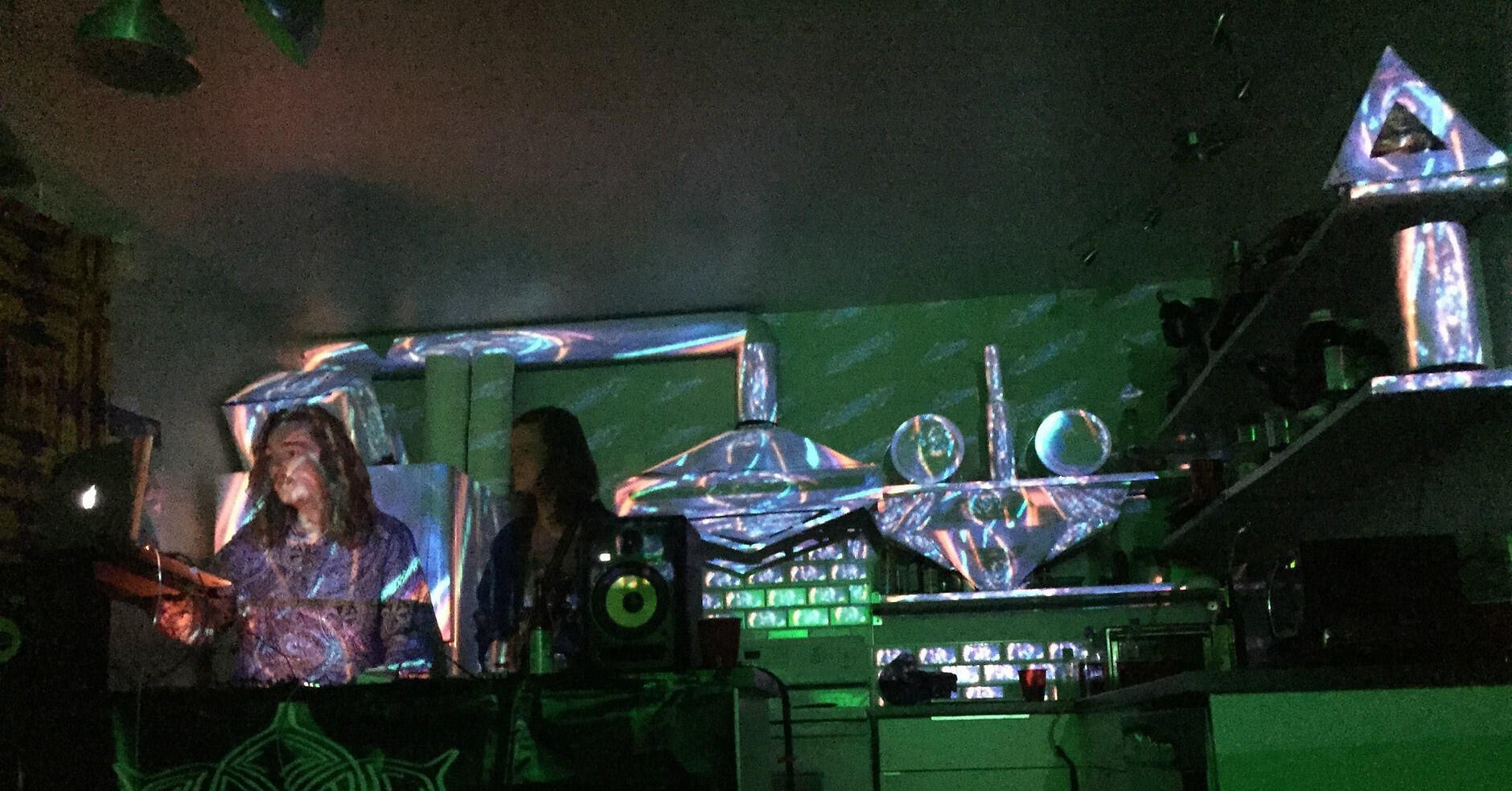
Recap Video
nostr:naddr1qqrj6wpkx3u8qscpzpmhxue69uhkummnw3ezuamfdejsygquk99txdv8dly7lsmasw969p70zlj6mnxtyzlk6j0em2tft4fyvgpsgqqqskas47n36f
Other Immersive Experiences by Hes
More from Hes
All images are credit of Hes, but you are free to download and use for any purpose. If you find joy from my art, please feel free to send a zap. Enjoy life on a Bitcoin standard.
-
 @ 30ceb64e:7f08bdf5
2024-12-29 19:09:13
@ 30ceb64e:7f08bdf5
2024-12-29 19:09:13I've been working 28 hours a week on the weekends as a Direct service professional, assisting adults with autism and intellectual disabilities. I've brought my laptop freaks. There's enough downtime for me to work on obtaining certifications online, posts to SN and Nostr, and work on my coding project Nostr Run Club.
I work with 2 normies on saturday and sunday, and had the bright idea of pitching my app to them. Here is how the conversation went.
Hustle: Hey do you guys want to see what i'm working on?
Normie 1: Sure....
Normie 2: "Comes around to curiously investigate"
***The Pitch
Hustle: Alright, so.....what social media do you use?
Normie 1: Instagram.
Hustle: Alright so....I'm making a running app. Imagine logging in with instagram, and seeing a feed of all of the runners and all of your friends. Now, what music streaming service do you use?
Normie 1: Pandora Normie 2: Spotify
Hustle: Cool, so imagine seeing your pandora and Spotify liked songs and playlists in the running app. So the app can track your run, its connected to your social media and streaming platform, and people can send you small donations congratulating you for the run.
Normie 1 and 2: Ahh, that's cool.
Normie 2: But why would people send you money? Oh? I think I've seen something like it where people send you a star and the star can be redeemed for like 99 cents, or they send you points and the app rewards you for points.
Hustle: Nah. That parts already figured out, I'm just having trouble getting the music from "Spotify" to play, and then I'll release it into the wild, that's pretty much my hustle.
And that was the conversation, it left me thinking about a few things.
-
V4V The concept is extremely familiar to me. I say good Morning I get 50 cents. I give 35 cents to other GM freaks and keep it pushing. Its normal. But for them the concept seemed so strange, they were looking for some solution or explanation on why people would just give someone else money for seemingly nothing. When the solution is already here, just not evenly distributed or promoted or adopted. Likely because the normies are still existing in the paradox of card companies and ravenous third party intermediaries imposing their cut.
-
The broken social media landscape of disconnected walled gardens I was thinking normie one would say Facebook, if asked normie 2 would've said snapchat, Tik Tok, Instagram etc. for music they could've said apple music, tidal, Youtube music etc.
I see Nostr as a highway that connects all of these guys, and instead of buying multiple cars to travel on different streets, you have one car that you use to travel across the country.
- The tact required to pitch ideas like Nostr and bitcoin
I used to work at bank of America and was tasked to sell credit cards without saying the word credit card.....
I would say "Hello, good sir/mam, have you thought about getting rewarded for your daily purchases??"
I found myself in a familiar situation, introducing them to Nostr without using the word Nostr and introducing them to bitcoin without using the word inevitable. The experience was stranger for me than it was for them, they left thinking "Ahh, thats neat" I walked away from the conversation eager to get notify the freaks.
In Conclusion,
The interaction gave me a few interesting insights:
- We'll need to bridge the conceptual gap between traditional and new payment paradigms.
- The importance of focusing on user benefits rather than technical details
- The market opportunity for solutions that unify fragmented digital services
- The value of strategic communication that meets users where they are
Successful adoption of new technologies like Nostr and Bitcoin requires careful attention to user education and communication, focusing on practical benefits rather than technical features. The positive reception to the core concept, even without understanding the underlying technology, shows huge potential for mainstream adoption when presented appropriately.
Thanks, Hustle
originally posted at https://stacker.news/items/829000
-
-
 @ c11cf5f8:4928464d
2024-12-29 12:22:08
@ c11cf5f8:4928464d
2024-12-29 12:22:08Let's hear some of your latest Bitcoin purchases, feel free to include links to the shops or merchants you bought from too.
If you missed our last thread, here are some of the items stackers recently spent their sats on.
originally posted at https://stacker.news/items/828556
-
 @ 623ed218:fa549249
2024-12-28 20:52:57
@ 623ed218:fa549249
2024-12-28 20:52:57It's been a week or so since I wrote this piece and put it up on my website, but I realized I hadn't shared it here yet. Hoping it's informative!
Strike Bill Pay: A Deep Dive

Start With the Foundation: Bitcoin is Savings Technology
If you've spent any time in this space, you've probably heard the phrase: Bitcoin is savings technology. That's because Bitcoin solves a very specific problem---the inability of fiat to hold value over time.
Here's the reality:
- Every dollar you hold in a bank account is being debased, slowly (or sometimes rapidly) losing its purchasing power.
- Inflation might be "only" 3-4% a year right now (if you believe the official numbers), but that adds up. Over a decade, that $10,000 in savings doesn't just stagnate---it sublimates.
Bitcoin fixes this.
- Bitcoin is scarce, decentralized, and deflationary.
- It's not controlled by governments or central banks, and its supply is capped at 21 million. No one can "print" more Bitcoin.
If you're holding fiat in a savings account, you're playing a game you can't win. Bitcoin is the better tool for preserving value over time.
Why Savings First?
Before looking at how you spend, it's worth considering where you're storing your wealth. If your savings are sitting in fiat, they're slowly losing purchasing power over time---that's just how the system works.
Bitcoin offers an alternative: a way to protect your wealth in something scarce and reliable. Once you've addressed that piece---and your savings are no longer being held in melting fiat---you might start asking: What about the money in my checking account?
That's where Strike Bill Pay comes in. It's a simple, practical tool that connects your Bitcoin savings to the everyday expenses you still need to handle in fiat, removing the need to hold fiat to pay fiat bills.
The Spending Problem: Why a Bridge is Necessary
Here's where things get practical. Even if you're saving in Bitcoin, you still live in a world where bills---rent, mortgages, utilities, credit cards---are denominated in fiat.
What do you do?
- You could hold some fiat in your bank to cover bills, but now you're back to the problem of fiat exposure.
- You could convert Bitcoin to fiat every time you need to pay something, but trust me when I say that manual process is tedious and time consuming.
This creates a gap:
Bitcoin is where you want to save your wealth.
Fiat is where you still need to spend your wealth.
You need a bridge.
Strike Bill Pay is that bridge. It lets you hold your value in Bitcoin while seamlessly paying fiat-denominated bills. No headaches, no extra steps, and no need to rely on a traditional bank account.
How Strike Bill Pay Works (It's Simpler Than You Think)
Here's the beauty of Strike: it integrates directly into the traditional system without requiring you to deal with it.
Here's how it works:
Strike Provides a Standard Bank Account
- When you open a Strike account, you get a routing number and an account number tied to Cross River Bank. It works exactly like a regular checking account.
You Set Up Bill Payments
- For any bill that allows automatic payments, simply enter the Cross River Bank routing/account number Strike gives you. Your mortgage, utilities, subscriptions---these can all pull funds automatically from Strike.
- For bills you pay manually (like credit cards), add the Strike-provided account as an external payment source. When you go to make a payment, simply select that account as the funding source.
Strike Converts Bitcoin to Fiat on the Backend
- You don't have to worry about manually selling Bitcoin for fiat. When the bill gets paid, Strike automatically sells the exact amount of Bitcoin needed to cover the payment.
It's seamless. You save in Bitcoin and Strike handles the fiat side when you need it.
Start Small: Test the Waters, Then Scale
Now, I get it---this might sound like a big leap if you're new to the idea of using Bitcoin. You don't need to move all your bills over to Strike at once.
Start small.
- Pick one bill---something low-stakes, like a utility payment or a monthly subscription.
- Add your Strike-provided account as the payment source.
- Let it run.
What happens?
- Your bill gets paid.
- You experience how smooth the process is.
- You start seeing the benefit of holding Bitcoin without having to juggle fiat for bills.
Why Start Small?\ This isn't about forcing you to flip a switch overnight. It's about building comfort with tools that let you take control of your money. When you see how simple it is, you may find you'll want to scale up.
Strike's Fee Tiers: Low Costs That Get Even Lower
One of the practical benefits of using Strike is its straightforward fee structure. Strike charges a standard 0.99% fee when converting Bitcoin to fiat and vice-versa. But here's where it gets interesting: the more you use the service, the lower your fees become.
Strike's fee tiers are designed to reward activity:
- The more you deposit and spend through Strike, the closer you get to a lower fee tier.
- Regular bill payments, purchases, and deposits all contribute toward lowering your fee rate.
Why It Matters: When you're living on Bitcoin---covering bills, expenses, and purchases---those fees can add up. Strike incentivizes regular usage by giving you a clear path to reducing costs. The result? Your bill-paying process becomes not only seamless but also more efficient and cost-effective over time.
If you're managing everything---mortgage, utilities, credit cards---through Strike, it's likely you'll hit lower tiers quickly, making the service even more competitive.
For Bitcoiners: Completing the Savings-to-Spending Loop
If you're already holding Bitcoin as savings, Strike Bill Pay is the final piece. It lets you operate entirely in Bitcoin while still managing your fiat-denominated obligations.
Here's why it matters:
- Opting Out: If the majority of your wealth is in Bitcoin, why leave even a small amount in a checking account? Strike eliminates the need for that fiat buffer.
- Automation and Ease: Bills that pull automatically? Easy. Manual payments? Just as simple.
- Seamless Spending: No awkward conversions, no multiple steps. Strike lets you "spend Bitcoin" without all the extra steps.
It's the bridge that completes the Bitcoin-first financial strategy.
Flexibility: Adjust Your Strategy as Conditions Change
One of the best parts about Strike is that it's flexible. If you feel the need to keep some fiat on the side, it's as simple as pressing a few buttons.
- Bull Market Strategy: Hold Bitcoin all month, let it appreciate, and let Strike convert as bills are due.
- Bear Market Strategy: If you're cautious, hold fiat in Strike temporarily and stack sats with what's left at the end of the month.
Strike gives you the tools to adapt your strategy---no friction, no complexity.
Taxes: How Strike Simplifies Year-End Reporting
When using Bitcoin to pay bills, it's important to understand the tax implications. In the United States, Bitcoin is considered property by the IRS. This means that any time Bitcoin is converted to fiat (like when Strike pays a bill for you), it's a taxable event.
Here's how it works:
- If the value of your Bitcoin has increased since you acquired it, you owe capital gains taxes on the difference (the "gain") when it's converted to fiat to pay a bill.
- If there's no appreciation---or if you're converting at a loss---there's no capital gain to tax.
Example:
- You bought $500 worth of Bitcoin.
- When it's time to pay a bill, that Bitcoin is now worth $600.
- If you use Strike to pay the bill, you'll only owe capital gains taxes on the $100 gain.
Conversely:
- If you bought $500 worth of Bitcoin, and by the time you use it to pay a bill, it's worth $450, you can report a capital loss instead.
How Strike Helps: Strike simplifies this entire process by providing:
- Year-End Tax Documents: Strike generates clear reports showing each transaction.
- Easy Access: These tax documents can be downloaded directly from the Strike app, making it easy to share them with your accountant or upload them to tax software.
Why This Matters: Keeping track of Bitcoin transactions manually can feel overwhelming. With Strike, all the reporting is done for you, so you can stay compliant without stress. Whether you're dealing with gains, losses, or flat conversions, Strike helps you navigate taxes with transparency and simplicity.
Bringing It All Together
Bitcoin is savings tech. It fixes the root problem---where you store your wealth.
Strike Bill Pay is the tool that lets you:
- Save in Bitcoin without compromise.
- Pay fiat bills seamlessly without relying on a traditional bank.
- Start small, test the waters, and scale at your own pace.
Final Thought: Build the Future, One Bill at a Time
Here's my challenge to you:
- Pick one bill.
- Add your Strike-provided account as the payment source.
- Run it for a month and see how it feels.
You don't need to jump in all at once. But as you experience the benefits--- no friction, and no headaches---you might find yourself wondering: Why don't I use this for all my fiat needs?
Strike Bill Pay isn't about forcing change. It's about offering you tools that work better. Save in Bitcoin, spend seamlessly, and start building a future where your money works for you---not against you.
Block 875215 - MSK 943
Digging Deeper:
Hey there, I hope you enjoyed this read! If you did, and would like to read more of my barks, follow the links below!
-
Curious how I found Bitcoin? Read "Paw Prints to the Timechain"
-
Bitcoin meets psychology? I touch on this in "Maslow's Apex"
-
Want to understand the basics of Bitcoin? Read "Bitcoin Best Practice"
-
If you like seeing bad media takes unpacked, check out "Pup's Double-Takes"
External Resources:
- Want to earn rewards on your mortgage? Use my referral to earn 20,000 free sats at sign up!
- Do you like sharing Bitcoin content and earning sats for doing so? Join me at Stacker.news!
...Woof!
originally posted at https://stacker.news/items/828031
-
 @ dca6e1cc:ea7d1750
2024-12-28 18:48:40
@ dca6e1cc:ea7d1750
2024-12-28 18:48:40Hello people,
I built a web application that I'd like to share with you. I'd love for people to test it and share feedback. No, it doesn't integrate anything Bitcoin related...yet.
It's only optimised for desktop at the moment. Not ideal for mobile use yet.
It's a note taking and management app. I created it because I take a lot of notes and none of the apps out there are to my liking. Most of them are too complicated, distracting, and so forth.
I think my app is ideal for keeping my back log from growing out of control...
"Dynamic notes that burn your backlog. Your notes, zapped."
Thanks for checking it out!
originally posted at https://stacker.news/items/827912
-
 @ bf47c19e:c3d2573b
2025-01-07 21:57:18
@ bf47c19e:c3d2573b
2025-01-07 21:57:18Srpski prevod knjige "The Little Bitcoin Book"
...
Zašto je Bitkoin bitan za vašu slobodu, finansije i budućnost?
Verovatno ste čuli za Bitkoin u vestima ili da o njemu raspravljaju vaši prijatelji ili kolege. Kako to da se cena stalno menja? Da li je Bitkoin dobra investicija? Kako to uopšte ima vrednost? Zašto ljudi stalno govore o tome kao da će promeniti svet?
"Mala knjiga o Bitkoinu" govori o tome šta nije u redu sa današnjim novcem i zašto je Bitkoin izmišljen da obezbedi alternativu trenutnom sistemu. Jednostavnim rečima opisuje šta je Bitkoin, kako funkcioniše, zašto je vredan i kako utiče na individualnu slobodu i mogućnosti ljudi svuda - od Nigerije preko Filipina do Venecuele do Sjedinjenih Država. Ova knjiga takođe uključuje odeljak "Pitanja i odgovori" sa nekim od najčešće postavljanih pitanja o Bitkoinu.
Ako želite da saznate više o ovom novom obliku novca koji i dalje izaziva interesovanje i usvajanje širom sveta, onda je ova knjiga za vas.
-
 @ 30ceb64e:7f08bdf5
2024-12-28 18:14:28
@ 30ceb64e:7f08bdf5
2024-12-28 18:14:28I've been listening to this small playlist over and over again this week.
Ivy keeps getting me.
I'm having fun making these things
https://music.youtube.com/watch?v=yNPfvgFEXuk&si=HjUdZxXKkGfqabk8 https://music.youtube.com/watch?v=LyRJfs-Qn70&si=2ugksRTltXATqHVo https://music.youtube.com/watch?v=XkpAE8ZZ6bU&si=WwWopN-YMLGguFiB https://music.youtube.com/watch?v=VIcQreSskyM&si=Ewza3W6SOkRDWF1E https://music.youtube.com/watch?v=5xm8Q-1cOpU&si=GeQv3Kum_TV9H6KD https://music.youtube.com/watch?v=xYM-aZG9QbE&si=fwfzIFLAyVumnTs4 https://music.youtube.com/watch?v=r7JWHuGFUeI&si=MqoFBqvb0iI7pAAY https://music.youtube.com/watch?v=GjnjUHY8MiM&si=F_Aepjxc_g2SH7UG https://music.youtube.com/watch?v=sgjTb7UQe2A&si=04wik3m5LefpbGMV https://music.youtube.com/watch?v=SMOund_uFTk&si=v7sa3XxchH607d0Y
https://music.youtube.com/playlist?list=PLmYfnnK_Qs5jpv5hKuBKFOEvMnPFl3vto&si=Dkudss84jFszdGmj
Thanks Anon, Hustle
originally posted at https://stacker.news/items/827883
-
 @ 30ceb64e:7f08bdf5
2024-12-28 17:47:48
@ 30ceb64e:7f08bdf5
2024-12-28 17:47:48A recent conversation with fellow Bitcoiners prompted me to share this overview of Nostr tools. While you don't need to use everything, understanding the ecosystem helps paint a picture of where we're heading.
I often hear people say "I'm posting to the void" or "My feed is boring" or "I'm not earning any bitcoin" or "It's too complicated." Let me address these concerns with a comprehensive overview.
Core Clients and Features
Primal and Amethyst are currently the best daily drivers. Theyre both valid twitter replacements with primal focusing on user friendliness and amethyst focusing on being more feature rich.
Both apps feature an algorithm marketplace (we call them DVMs) where you can choose from various feed styles. Soon, anyone will be able to create and share their own algorithms. For additional feed customization, Listr.lol lets you curate lists of npubs to further refine your experience.
Content and Rewards
Stacker News (SN) integrates beautifully with Nostr. Cross-post your SN content to appear as longform notes on platforms like Highlighter, Yakihonne, and Habla.news. SN's rewards system pays out satoshis for quality content, bridging their closed platform with Nostr's open network.
Payments and Zaps
For zaps, I recommend CoinOS, or AlbyHub for a more sovereign alternative. CoinOS is non kyc and gives you a lightning address and NWC connection string to throw into your nostr clients. CoinOS supports e-cash and Bolt 12, Liquid, and can auto-withdraw earnings to cold storage. You can use coinOs as a PWA or input the connection string into Alby Go for a more minimal wallet alternative.
Security and App Management
Android users should use zap.store for downloading Nostr apps. It verifies app authenticity and implements Web of Trust features, showing which trusted npubs use each app.
For managing multiple apps, Pokey provides a unified notification dashboard. Amber (Android) offers secure client login without exposing your nsec, while Citrine lets you run a relay on your phone for data backup.
Creator Tools
- Wavlake: Spotify alternative with open music graph
- Fountain: Podcast app with Nostr integration
- Zap.stream: Live streaming
- Nostr.build: Media hosting
- Cypher.space: Website creation with integrated marketplace
- Olas: Instagram alternative
- Gifbuddy.lol: Gif creation
- memeamigo.lol: Meme creation
- Zappadd: Promotional tools
Making the Most of Nostr
The key to Nostr is understanding that nothing is force-fed. You're responsible for: - Creating your desired feed - Choosing your client - Selecting your relays - Managing your wallet - Curating who you follow
For best results, go all in: 1. Leave traditional social media 2. Use Primal and or Amethyst as your main client 3. Follow 1000 npubs 4. Set up CoinOS for payments 5. Engage daily with the community
Future Outlook
Some ask if Nostr is truly decentralized, censorship-resistant, or profitable. My response: the user experience will become so good that most internet users will naturally gravitate here. The only barrier will be ideological resistance.
Nostr represents a new internet paradigm where users outpower platforms, identity persists across apps, and Bitcoin is the standard. We've practically already won.
Crazy Ideas
I'm thinking the age of of the super nostr app will come to a close. We're probably going to enter an era of a thousand micro apps and client templates, which allow users to build their own client in 30 seconds. Some templates will be impermanent, one time use clients, others will be more robust for building a daily driver. You'll be able to share your completed piece on nostr for other people to use, and they'll zap you for building it. A marketplace of user created apps supported by thousands of micro apps and relays and templates, probably a user experience holy grail, made possible by nostr's open social graph, smooth monetization processes from bitcoin.
Growth Predictions
Daily Active Users doubling yearly: 2024: 20k → 2029: 640k
The beauty of Nostr isn't just in its decentralized nature or bitcoin integration – it's in the user experience that puts you in control. While traditional social media platforms force-feed you content through black-box algorithms, Nostr hands you the keys to your own digital kingdom. You choose your feed, your apps, your connections, and your level of engagement. Yes, there's a learning curve, but that's the price of digital sovereignty.
Think of where Twitter was in 2006 or Bitcoin in 2013. Those who saw the potential and jumped in early didn't just benefit financially – they helped shape the future. Nostr is at that same inflection point. The tools are here, the infrastructure is growing, and the community is building. Whether you're a creator, developer, bitcoiner, or just someone tired of traditional social media, Nostr offers a glimpse of what the internet should have been all along.
The question isn't if Nostr will win, but when. And when it does, you'll want to be able to say you were here when it all began.
Thanks, Hustle
originally posted at https://stacker.news/items/827860
-
 @ dd664d5e:5633d319
2025-01-07 19:57:14
@ dd664d5e:5633d319
2025-01-07 19:57:14Hodling Bitcoin does not make you a capitalist
I've noticed that Bitcoin-mindedness seems to lead some people to communistic thinking because it's a hard-limited form of capital. Marx, like most Bitcoiners, heavily discounted the possibility of economic growth or transformation changing the economy enough to undermine some minority's control of some form of capital.
What few today understand, is that many of the Dirty Capitalists of Marx's era actually agreed with him; they were just disdainful of labor and worried that the workers finding out that Marxism is correct about the nature of capitalism would cause unrest. They were the original HFSP crowd.
This was the basic idea, that Marx had, and that many Bitcoiners would agree with:
Capital is strictly limited and the people that control it can keep labor from attaining any, except when their labor is necessary.
And, as we know, automation will make human labor increasingly unnecessary.
The math doesn't check out
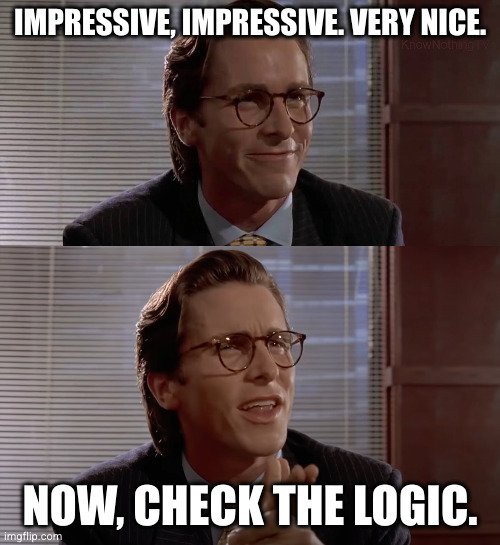
That underlies all of the calculations of "Well, if I just grab this Bitcoin wallet and hodl for twenty years, then it will grow in value to equal half of everything in existence and then I can just buy up half the planet and rule over everyone like a god."
This is economic nonsense because it assumes that: 1) the value of all things remains static over time, 2) purchasing something with money gives you ownership of it, 3) people will always use that specific money (or any money, at all!) for all transactions, 4) there is no such thing as opportunity cost, 5) people will always value money more than any other thing, and therefore be willing to always trade it for anything else, 6) humans are passive, defenseless, and easy to rule over, 7) someone who is preoccupied with hodling an asset steadily and sharply rising in price would ever be emotionally ready to part with it.
All monies can die.
People use money for everything because it is easy, fast and cheap. If money becomes too precious or scarce, they will simply switch to using other things (as we saw with gold). Humans replace tools that aren't working well, with those that work better, and money is just another tool. Bitcoin is more divisible than gold, but that won't matter, if enough of it is held by too few.
This is why there's a natural cap on the price of a money and why human productivity in the here and now is not irrelevant or in vain.
-
 @ 2ed3596e:98b4cc78
2025-01-07 19:38:14
@ 2ed3596e:98b4cc78
2025-01-07 19:38:14Americans can now get paid in bitcoin sent directly to their personal bitcoin wallet. Share your Bitcoin Well Direct Deposit details with your employer (or anyone sending you money), set your bitcoin/dollar split and receive sats instead of fiat with every paycheck.
Whenever you buy bitcoin with Bitcoin Well, we automatically send it to your self-custody wallet. Your bitcoin is safest in a self-custody wallet.
So, when you set up your Direct Deposit with Bitcoin Well, you Dollar Cost Average bitcoin into your self-custody wallet with every paycheck.
Refer at least 1 friend to Bitcoin Well to unlock Direct Deposit. Direct Deposit bitcoin purchases bring you a massive leap forward to replacing your bank with Bitcoin Well 🧡
Here’s how you can get paid in bitcoin:
Step 1: Refer a friend to Bitcoin Well
To unlock the Direct Deposit feature in your Bitcoin Well account you must first refer one person to Bitcoin Well. Referring a friend is quick and easy! Simply share your referral link from your found in your Referrals page.

\ Once someone has created an account with your referral link, you’ll get an email notifying you of your successful referral. You’ll receive a second email informing you that you have unlocked Direct Deposit. Now you’re ready for Step 2!
Step 2: Set your Direct Deposit details
\ Navigate to your newly unlocked Direct Deposit page in your Bitcoin Well account. Tell us how much bitcoin you want to receive, and how many dollars you want to keep with the slider at the top.

\ Next you need to tell us where to send your bitcoin by adding your personal bitcoin wallet! As with everything Bitcoin Well does, we send the bitcoin you buy from each deposit directly to your self-custody. Your bitcoin should always remain in your control; with your keys.
Once these details are saved, you can download your Direct Deposit details in the form of a void cheque to send to your employer (or anyone else that wants to send you money!).

## \ Step 3: Withdraw remaining dollars or buy more bitcoin later
\ Remaining dollars in your Cash Balance can be withdrawn to your bank or used to purchase more bitcoin. Navigate to Withdraw Dollars then select your bank account, the amount of dollars you’d like to withdraw and confirm your withdrawal.

\ You can buy more bitcoin with the dollars already in your account! Go to Buy bitcoin, select from ‘Cash Balance’ to ‘your bitcoin wallet’, enter the amount and confirm. More bitcoin is now on its way to your bitcoin wallet! Buying directly to self-custody has never been easier 😎

Earn sats for referring friends to Bitcoin Well
\ Did you know that referring friends doesn’t just unlock your Direct Deposit feature but you also earn sats? When you refer a friend to Bitcoin Well you earn 10% of our cut from all of the transactions. Every time you earn sats through your referrals, your rewards will be instantly distributed to you straight to your Lightning wallet. Add your Lightning wallet in your Referrals page, within the Bitcoin Well Rewards menu.
Within your Referrals page you can add your Lightning wallet for referral payouts, access your referral link and a QR code with your ref link in it – everything you need to orange pill your friends and earn sats! Plus every time you refer a friend you get Bitcoin Well points, which you can use to try and win 1,000,000 sats through our Bitcoin (Wishing) Well! Share your ref link with friends and family -> earn sats.
-
 @ bf47c19e:c3d2573b
2025-01-07 19:30:57
@ bf47c19e:c3d2573b
2025-01-07 19:30:57Jun 2018 / Autor: Aleksandar Radivojević
APSTRAKT:
Kripto valute, kao pod kategorija virtuelnih valuta, predstavljaju nastavak inovacija zasnovanih na tehnološkom napretku na finansijskim tržištima. Ovaj put predmet inovacije je sam novac. Nagli porast interesovanja za ovu vrstu valuta u svetu uticao je na potrebu regulacije, pre svega na nacionalnom, a zatim i nadnacionalnom nivou. Međutim, problem pri regulaciji posledica je nekoliko faktora: nivo tehnološke kompleksnosti sistema kripto valuta, činjenica da se kripto valute tek nalaze u početnoj fazi razvoja, kao i činjenica da bi pogrešna regulacija mogla da dovede do potencijalnog tehnološkog zaostatka za drugim državama. Stoga ne čudi raznolikost u regulisanju istog fenomena od strane različitih država, u nekim slučajevima čak i potpuna suprotnost. Važno je napomenuti da kripto valute treba posmatrati kao inovaciju, odnosno fenomen koji je u razvoju. Shodno tome svaka kritika, pozitivna ili negativna, samo je kritika trenutnog koraka u procesu razvoja, pa je treba uzeti sa rezervom. U dugom roku kripto valute će napustiti nedefinisanu sferu i iskazati svoj potencijal i vrednost, tek tada ćemo sa sigurnošću moći da ocenimo njihov doprinos razvoju društva.
1. UVOD
Virtuelna valuta predstavlja valutu denominiranu u sopstvenoj jedinici mere iza koje ne stoji država niti bilo koji centralizovani autoritet, a čija se vrednost određuje na tržištu u čistom odnosu ponude i tražnje, bez uplitanja monetarnih vlasti.
Postoji nekoliko definicija virtuelnih valuta, pa tako Međunarodni monetarni fond (MMF) virtualnu valutu definiše kao „Digitalni predstavnik vrednosti, izdat od strane privatnih aktera i denominiran u sopstvenoj jedinici vrednosti“2. Evropska centralna banka (ECB) koristi sledeću definiciju „Digitalni predstavnik vrednosti, koji nije izdat od strane centralne banke, kreditne institucije ili institucije elektronskog novca, koji u nekim situacijama može biti korišćena kao zamena za novac“3. ECB je u odnosu na definiciju iz 2012. godine4 uvela dve promene. Izbačen je termin neregulisan, usled činjenice da su određene države regulisale virtuelne valute, ali još važnije ECB prema novoj definiciji ne definiše više virtuelne valute kao novac.
Upravo ove dve promene u definiciji ECB ukazuju na trenutno najznačajnija pitanja vezana za virtuelne valute, pitanje regulacije i pitanje klasifikacije ovih valuta kao novac ili finansijsku imovinu.
Karakteristike pojedinačnih virtuelnih valuta klasifikuju ih u podgrupe. Neke od njih postoje već duži niz godina bez ikakvih potreba regulacije, usled činjenice da njihov uticaj na globalnu ekonomiju nije značajan. Uticaj kripto valuta, kao jedne od potkategorija, postao je toliki da zahteva uključivanje kreatora ekonomskih politika u njihovo regulisanje. Bilo da ograniči ili podstakne njihovu upotrebu.
U osnovi, kripto valute u potpunosti preispituju sistem monetarnog funkcionisanja zasnovanog na fiducijarnom novcu iza čije vrednosti stoji država ili određeni viši centralizovani autoritet. Kako iza virtuelne valute ne stoji država, a sistem funkcionisanja je zasnovan na kompleksnoj tehnologiji, postavlja se pitanje uloge centralne banke, komercijalnih banaka i ostalih finansijskih institucija koje su u poslednjih nekoliko decenije bili dominantni akteri finansijskog sektora.
2. BITKOIN
Bitkoin predstavlja kripto valutu koja je pokretač i nosilac trenutnog stanja na tržištu kripto valuta sa učešćem od preko 40%. Prema karakteristikama virtuelnih valuta ovu kripto valutu svrstavamo u potpuno decentralizovanu i konvertibilnu, a njena ukupna, buduća, ponuda je unapred određena. Nastanak bitkoina vezuje se za članak koji je objavljen od strane autora pod pseudonimom Satoši Nakamoto 2008. godine pod nazivom „Bitkoin – Elektronski sistem gotovine između jednakih“. Satoši Nakamoto, za sada nepoznati pojedinac ili grupa pojedinaca, 2009. godine pustio je u promet prvi bitkoin softver i prve jedinice valute. S obzirom da se radi o tehnologiji baziranoj na otvorenom kodu (open source technology) sistem je nastavio da radi bez potrebe uključivanja njegovog osnivača.
Ukupna tržišna vrednost bitkoin valute u trećem kvartalu 2017. godine iznosila je 75 milijardi dolara, taj iznos je početkom 2018. godine dostigao 232 milijarde dolara, dok je početkom juna 2018. godine on iznosio 115 milijardi. U poređenju sa monetarnim agregatima dominantnih fiducijarnih valuta ovaj iznos nije značajan ( EUR M3 11804 milijardi5, USD M3 13701 milijardi6). Međutim bitkoin posmatramo kao novi fenomen koji beleži snažni rast (tržišna vrednost na kraju 2016. godine iznosila je 15,5 milijardi dolara).
Celokupni proces koji stoji iza kreiranja, transfera, čuvanja i trošenja virtualne valute obavlja se elektronski. Osnovni elementi sistema svake virtualne valute jesu sama valuta (Bitkoin, Ethereum, itd.) i tehnologija beleženja i sprovođenja transakcija. Mehanizam na osnovu koga funkcioniše određena valuta definiše i sprovodi: izdavanje valute; sprovođenje internih pravila koja su osnova funkcionisanja valute; transfer novca i poravnanja. Mehanizam na osnovu kojeg funkcionišu kripto valute jeste decentralizovani mehanizam koji koristi kriptografiju (šifrovanje) u obavljanju ovih funkcija.
Decentralizovani mehanizam podrazumeva da ne postoji centralna jedinica koja izdaje novac, vrši proveru i realizaciju plaćanja, poravnanja, itd., već se ove funkcije sprovode od strane većeg broja nezavisnih jedinica (pojedinaca, udruženja ili kompanija). Ove jedinice zovu se „rudari“ (miners) i oni svojim uključivanjem u online mrežu virtualne valute obavljaju ove aktivnosti koristeći kapacitete svoje računarske opreme. Rudari su pojedinci ili kompanije raspoređeni po celom svetu koji ovu aktivnost obavljaju u cilju dobijanja vlasništva nad novim jedinicama kripto valute. Ovako decentralizovani sistem koji stoji iza obrade transakcija eliminiše mogućnost ljudske greške koja je prisutna u bankama i ostalim finansijskim institucijama. Naime, da bi pojedinac ili grupa pojedinaca promenila bilo koju informaciju u sistemu mora raspolagati sa 51% računarskog kapaciteta koji stoji iza mreže, što je skoro neizvodljivo.
Neophodan element sistema kripto valuta jeste digitalni novčanik (wallet) koji predstavlja softver koji čuva informacije o količini i iznosu kripto valuta koje su u posedu vlasnika novčanika. Korišćenje bilo koje kripto valute podrazumeva prethodno registrovanje novčanika. Pružaoci usluga novčanika su privatne firme koje funkcionišu u sistemu kripto valuta pa je ovaj deo sistema u određenoj meri rizičan, jer se informacije o vlasništvu nad kripto valutom mogu izgubiti lošim upravljanjem kompanije koja pruža usluge ili tehnološkim rizicima kojima je ona izložena7.
Jedan od najinteresantnijih i najznačajnijih elemenata sistema kripto valuta jeste „lanac blokova“ (blockchain) koji predstavlja decentralizovanu bazu podataka sačinjenu od manjih baza (blokova) koji su digitalno povezani na mreži. Ovi blokovi sadrže informacije o transakcijama koje se kriptografski generišu u jedan blok koji se zatim povezuje sa ostalim već generisanim blokovima koji sadrže prethodne informacije. Celokupna procedura na kojoj je zasnovan blockchain onemogućava bilo kakvu promenu informacija u bloku, jer su blokovi međusobno povezani kodom, pa je za promenu podataka potrebno hakovati ceo lanac blokova.
Bitkoin, ostale kripto valute, njihov značaj u budućnosti i primena i dalje su pod znakom pitanja. Međutim, isto se ne može reći za blockchain tehnologiju. Ova tehnologija i njene moguće primene već su zainteresovale veliki broj značajnih aktera na tržištu, pa i država. Goldman Sachs je još u 2015. godini prijavio i registrovao patent za sistem virtuelnog poravnanja finansijskih transakcija koje će u velikoj meri olakšati bankarske transakcije, a koji je upravo zasnovan na blockchain tehnologiji. Blockchain tehnologija nije ograničena samo na finansije. Nepromenljivost informacija čini tehnologiju primenljivom i u drugim sferama. Švedska je najdalje otišla u primeni ove tehnologije, a planovi za primenu u imovinskim transakcijama i katastru su već u toku. Primene ove tehnologije su višestruke i rast njene zastupljenosti u različitim sferama se može očekivati u budućnosti.
3. POTREBA REGULACIJE
Navedene osobine kripto valuta prikazane na primeru najpopularnije valute, bitkoin-a, ukazuju na složenost problema njihove regulacije. Reč je o globalnom fenomenu u čijoj dosadašnjoj regulaciji pojedinačne zemlje ne samo da nemaju zajednički stav, već se ti stavovi u pojedinim slučajevima potpuno razlikuju. Pored toga, na nacionalnom nivou postavlja se pitanje nadležnosti regulacije, s obzirom da još uvek postoji nerazumevanje da li je reč o valuti ili imovini i koji deo sistema treba regulisati (transakciju, vlasnika, posrednika, prodavca,..). Tehnološki faktori takođe utiču na mogućnosti regulacije, usled teškoća u praćenju operacija sa virtuelnim valutama.
Dinamičan rast trgovine virtuelnim valutama u poslednjih godinu dana uticao je i na sve veći broj pokušaja regulacije od strane pojedinačnih država, ali i na rast zahteva za usaglašavanjem i regulacijom na međunarodnom nivou. Dosadašnji načini regulacije u velikoj meri su različiti od zemlje do zemlje. Većina zemalja izdala je upozorenje potrošačima, a neke od zemalja odlučile su se i za nametanje zahteva za izdavanje dozvola za određene učesnike na tržištu, dok je jedan broj zemalja potpuno zabranio upotrebu valuta.
Osnovni rizici koje kripto valute i rast njihove popularnosti i upotrebe sa sobom nose posledično definišu načine regulacije. Ti rizici jesu finansiranje terorizma, pranje novca, izbegavanje poreza, neregulisano kretanje kapitala, zaštita potrošača, itd. Pored toga, karakteristike mehanizma koji pokreće sistem, odnosno akteri i njihove međusobne veze, drugi su osnovni faktor koji definiše način regulacije. Stoga su dosadašnje regulative najčešće bile usmerene na učesnike u trgovini kripto valutama i finansijske institucije koje sa njima posluju.
Transakcije između korisnika virtuelne valute nije moguće regulisati, usled činjenice da je jedan od osnovnih principa virtuelnih valuta upravo anonimnost vlasništva. Međutim kompanije koje prihvataju plaćanje za svoje usluge ili dobra u virtuelnim valutama mogu biti predmet regulacije. Takođe, mada transakcije među vlasnicima valuta jesu anonimne, konverzija virtuelnih valuta u fiducijarne valute najčešće se sprovodi preko posrednika, koji može biti, i za sada u velikom broju slučajeva i jeste, predmet regulacije. U primeru Srbije, kupovina virtuelne valute vrši se preko posrednika, koji za svoje usluge uzima naknadu od 4-7% po transakciji.
Za sada, ove kompanije predstavljaju očigledne ciljeve regulacije. Određene zemlje regulišu i pružaoce „novčanik“ servisa, jer su oni neophodni činioci sistema virtuelnih valuta. Razlog za ovo jeste trenutni, ali u budućnosti možda i izraženiji, odnos obima transakcija između vlasnika kripto valuta (koji je anoniman) i transakcija vlasnika valuta i pružaoca usluga i dobara za te valute (prodavaca). Regulacija kroz pružaoce usluga „novčanika“ nije česta usled činjenice da se ona odnosi na regulacije između učesnika bez konverzije virtuelnih valuta u realnu ekonomiju (dobra, usluge ili fiducijarne valute).
Ubrzan razvoj virtuelnih valuta izazvao je brzu potrebu regulacije, pa su se određene države odlučile za unilateralne regulacije na sopstvenom tržištu, dok je za međunarodni konsenzus i regulaciju potrebno vreme. Međunarodna regulacija biće postepena iz više razloga. Pre svega reč je o promenljivom fenomenu pa shodno tome nije moguće odlučiti se za konkretnu trajnu regulaciju pre sagledavanja i razumevanja celokupnog fenomena. Dodatno, različite države drugačije sagledavaju ovaj fenomen i njegov potencijal. Dok neke države zabranjuju njegovu upotrebu (Kina) druge je u potpunosti podržavaju (Australija, Kanada, itd.).
Razvoj virtuelnih valuta predstavlja revoluciju na valutnom tržištu koja može imati značajan uticaj na celokupno funkcionisanje svetske ekonomije. Pri regulisanju potrebno je voditi računa da se primenom postojećih načina regulacije ne ograniči ili promeni smer ove inovacije.
Budući da virtuelne valute pružaju veću slobodu pojedincu, od njega zahtevaju i veću odgovornost. Naime, transakcija za određenu robu (primer kupovina preko interneta) beleži se putem blockchain-a i u tom trenutku je finalna. Plaćanje tim putem na pogrešan račun tradicionalni sistem rešava zahtevom za povraćaj novca sa jednog računa na drugi u okviru komercijalne banke, odnosno korigovanje u procesu poravnanja. Sistem plaćanja virtuelnim valutama nema ovu mogućnost, usled činjenice da nema centralnog regulatora koji može izvršiti promenu i činjenice da je vlasništvo nad računom anonimno.
Još jedan rizik je kvar sistema na kome su virtualne valute bazirane. Do kvara može doći usled tehnoloških problema sa kojima se suočava sama mreža, pružaoci usluga „novčanika“ ili platforma za trgovinu virtuelnim valutama. Mada stvarni i potencijalno veoma opasni, ovi rizici svojstveni su i trenutnom sistemu pa tako može doći do „kvara“ samog finansijskog sistema, banaka (pružaoca usluga „novčanika“) ili berzi (platformi za trgovinu). Ove kvarove smo i pored regulacija već doživeli, a reakcija je bila podrška države sistemu u kvaru, pa bi u regulaciji kripto valuta trebalo razmotriti i snažniju podršku države u funkcionisanju osnova postojećeg sistema i stvaranju mreža zaštite u slučaju pojedinačnih kvarova aktera na mreži.
Jedina realna opasnost virtuelnih valuta u ovom trenutku jeste njihov neuspeh i krah investitora koji su uložili u njih, što ni u kom slučaju ne bi trebalo da bude pitanje kojim se kreatori ekonomske politike bave. Naime, krah investitora, pojedinaca i kompanija, u slučaju da se vremenom pokaže da kripto valute nemaju nikakvu vrednost, ne bi imao uticaj međunarodni finansijski sistem jer ne bi doveo do lančanog kraha osnovnih finansijskih institucija, kao što je slučaj bio sa krahom tržišta nekretnina 2008. godine. Većina zemalja koje su se do sada bavile pitanjem kripto valuta objavilo je saopštenja za javnost kojima se građanima ukazuje na potencijalne rizike korišćenja i ulaganja u ove valute. Slično obaveštenje objavila je i Narodna banka Srbije samo u užem obliku pozivajući se i usmeravajući građane na obaveštenja Evropske unije.
Jedan od najčešće pominjanih rizika široke rasprostranjenosti virtuelnih valuta jesu mogućnost finansiranja terorizma i pranje novca. Ovi rizici se pominju u skoro svima analizama uticaja kripto valuta, a njihova regulacija upravo predstavlja preteranu regulaciju koja ograničava inovacije. Sprečavanje finansiranja terorizma kontrolom finansija pojedinaca u okviru postojećeg sistema rezultat je prilike koju je način funkcionisanja sistema pružio institucijama koje su zadužene za nacionalnu sigurnost i borbu protiv terorizma. Uvođenje boljeg i efikasnijeg sistema ne treba biti ograničavano činjenicom da je prethodni sistem olakšavao određenim institucijama izvršavanje svojih dužnosti. Naprotiv, druge institucije bi trebalo da, umesto ograničavanja tehnološkog napretka u drugim sferama, podstiču napredak tehnologije u svom delovanju i traže načine za uspešnije obavljanje svojih dužnosti korišćenjem inovacija i novih sistema.
Ni fiducijarni ni virtuelni novac nemaju funkciju sprečavanja terorizma. Sloboda pojedinaca i anonimnost u raspolaganju sopstvenom imovinom trebalo bi da bude jedna od osnova demokratije pa je njeno regulisanje uskraćivanje ovih prava zarad drugog cilja. Sankcionisanje korišćenja imovine pojedinca ili kompanije za finansiranje terorizma treba biti sprovedeno od strane nadležnih institucija, uz pomoć finansijskog sistema ukoliko on pruža mogućnosti za to, ali ne ograničavanjem razvoja društva da bi se te mogućnosti zadržale.
Korišćenje kripto valuta, i anonimnost i lakoća transfera iz jedne u drugu državu koju one pružaju, takođe otežava borbu protiv izbegavanja oporezivanja sakrivanjem bogatstva i prihoda. Još jedan problem u oporezivanju jeste i šta se oporezuje – kripto valuta kao imovina ili novac. Jedno od trenutnih rešenja pri definisanju ovog pitanje jeste klasifikacija prema vremenu držanja valute. Odnosno, da li se valuta drži duži period u cilju sticanja kapitalne dobiti u slučaju porasta njene vrednosti ili se često koristi kao sredstvo plaćanja. Pitanje je i kako i po kojoj vrednosti oporezovati novo stvorenu valutu, dobijenu procesom „rudarenja“, da li po tržišnoj vrednosti u trenutku ostvarivanja prava na novu jedinicu valute (SAD) ili tek po vrednosti u trenutku prodaje te jedinica (Australija).
Takođe postoji rizik i da će razvijanje samog sistema blokchain-a uticati na smanjenje prihoda drugih finansijskih institucija kao što su berze, ali ovde je reč o riziku tehnološkog napretka na profitne kompanije koje zaostaju u razvoju i inovacijama i koje ni u kakvom slučaju ne bi trebalo regulacijom štiti od neuspeha na slobodnom tržištu.
Prvobitni fokus treba da bude na najhitnijim pitanjima vezanim za kripto valute, uključujući finansijski integritet, zaštitu potrošača/investitora i utaju poreza, uz istovremeno ostavljanje manje neposrednih rizika (na primer, finansijsku stabilnost, monetarnu politiku) za kasniju fazu. Pravi pristup regulaciji zavisiće od budućeg razvoja virtuelnih valuta, koji za sada nije predvidiv. Međutim, sam razvoj virtuelnih valuta zavisiće od sadašnje reguacije, pa je potrebno veoma pažljivo pristupiti regulaciji u cilju zaštite tržišta i građana od rizika, ali ne na uštrb ekonomskog napretka.
Za razliku od samih virtuelnih valuta primena blockchain mehanizma ne predstavlja problem regulatorima.
4. REGULACIJA U SVETU
Najliberalnija država na svetu po pitanju operacija sa bitkoinom i ostalim kripto valutama jeste Japan. Bitkoin je u Japanu definisan kao legalno sredstvo plaćanja što je dovelo do brzog rasta broja kompanija koje primaju bitkoin kao sredstvo plaćanja, kao i do brzog razvoja kompanija koje se bave razvojem blockchain tehnologije. Za razliku od nacionalne valute banke nemaju obavezu obavljanja operacija sa bitkoinom, ali je upotreba bitkoina neograničena ukoliko se strane u upotrebi o tome slažu. Kao zemlja sa najliberalnijom regulacijom i najvećim učešćem u ukupnoj trgovini na dnevnom nivou trgovina kripto valutama u Japanu je takođe najčešće bila meta značajnih hakerskih napada i krađa8.
Još jedna zemlja sa veoma liberalnim pogledom na ovu tehnologiju jeste Australija. Operacije sa bitkoinom i ostalim kripto valutama nisu ograničene, niti su ICO9 ograničene, ali se svaka pojedinačna ICO posmatra od strane države u cilju povećavanja sigurnosti i smanjivanja rizika. Poreska politika bitkoin i ostale slične valute posmatra kao imovinu, i na osnovu toga definiše kapitalnu dobit u zavisnosti od operacija sa ovom imovinom10.
Predsednik Belorusije koga mnogi nazivaju poslednjim evropskim diktatorom, Aleksandar Lukašenko, potpisao je krajem decembra 2017. godine zakon čijim je stupanjem na snagu, krajem marta 2018. godine, regulisano poslovanje sa kripto valutama. Preduzeća u skladu sa ovim zakonom mogu da kreiraju svoje kripto valute, poseduju druge kripto valute i vrše sve operacije sa njima isključivo preko berzi kripto valuta. Građani mogu slobodno da obavljaju aktivnosti „rudara“, da kupuju, prodaju i menjaju kripto valute, kao i da ih kupuju i prodaju za beloruske rublje. Ostvareni profit od svih ovih operacija neće biti oporezivan sve do januara 2023 godine, niti će se aktivnosti rudarenja i trgovanja kripto valuta smatrati preduzetničkim poduhvatom11. Ovaj zakon posebnu pažnju posvećuje blokchain tehnologiji pa se aktivnosti zasnovane na ovoj tehnologiji posebno oporezuju. Ova preduzeća biće oslobođena poreza na dobit i poreza na dodatu vrednost. Umesto toga plaćaće porez u iznosu od 1% ukupnog prihoda.
Rusija je početkom 2018. godine predstavila nacrt zakona kojim će biti regulisane operacije sa kripto valutama12. Mada zakon definiše kripto valute kao imovinu, a ne kao novac, njegove odredbe pomak su ka razvoju kripto valuta, s obzirom da su informacije o regulaciji kripto valuta od strane ruskih vlasti u prethodnom period bile pre svega usmerene ka potpunoj zabrani operacija sa ovim valutama. Trgovina kripto valutama kao imovinom, međutim, najverovatnije neće biti podložna porezu na dodatu vrednost s obzirom da će se suštinski posmatrati kao finansijska imovina. U poslednje vreme se sve više i govori i o aktivnostima ruskih vlasti ka kreiranju državne kripto valute – kriptorublje13. Trenutno je nepoznato da li će ova valuta, ukoliko bude kreirana, biti jedna od dozvoljenih kripto valuta na ruskom tržištu ili jedina dozvoljena, ali njeno eventualno kreiranje će svakako biti pomak u razvoju kripto valuta.
Vlada Kanade je prva zemlja koja je formalno regulisala digitalne valute, u junu 2014. godine. Bitkoin definiše kao elektronski novac koji građani mogu koristiti kao sredstvo plaćanja u kompanijama koje to sredstvo prihvataju. Takođe, dozvoljena je kupovina i prodaja bitkoina kao finansijske imovine u cilju ostvarivanja zarade. Sa druge strane bitkoin nije zakonsko sredstvo plaćanja, pa je time njegova upotreba ograničena u kompanijama koje prihvataju da svoje usluge ili robu prodaju za tu kripto valutu. Poreska regulacija transakcija u bitkoin-u ista je kao i za transakcije u nacionalnoj valuti. Sve poreske obaveze nastale iz promene vlasništva bitkoina podložne su već postojećim poreskim obligacijama. Takođe, svaki gubitak ili dobitak od trgovine bitkoinom kao finansijskom imovinom mora biti prijavljen pri obračunu poreza na dohodak građana14.
Sjedinjene Američke Države prepustile su svakoj državi u okviru svog sastava da odrede kako će njihovi građani moći da učestvuju u operacijama sa kripto valutama. Na nivou nacije regulacija definiše virtualne valute kao imovinu i obavezuje građane da prijave ostvareni profit na osnovu operacija sa virtualnim valutama poreskoj administraciji15. Različite državne agencije takođe regulišu u određenoj meri operacije sa kripto valutama koje su u njihovoj nadležnosti, ne regulišući same kripto valute već operacije sa njima koje nisu dozvoljene. Pa tako Mreža za primenu regulacija u oblasti finansijskog kriminala (Financial Crimes Enforcement Network - FinCEN) kao deo Ministarstva finansija SAD nalaže svim berzama koje trguju kripto valutama i drugim kompanijama koje se bave operacijama sa kripto valutama da se registruju kao kompanije koje se bave prenosom ili konverzijom novca i time budu regulisane Zakonom o sigurnosti bankarskog sistema.
Regulacija u Ujedinjenom Kraljevstvu je u toku i u ovom slučaju je najpre usmerena ka rešavanju problema koje popularizacija ovih valuta donosi u oblasti borbe protiv terorizma i pranja novca. U skladu sa time pre svega će biti regulisane platforme za trgovinu valutama i kompanije koje pružaju usluge virtuelnih novčanika u okviru direktiva za suzbijanje pranja novca i finansiranje terorizma16.
Evropska unija kao celina nije jasno regulisala kripto valute. Usaglašavanje većeg broja zemalja oko regulisanja pojma koji se i dalje razvija i koji i dalje nema jasnu definiciju zahteva određeno vreme i iskustvo, ali aktivnosti pojedinačnih zemalja EU povodom ovog pitanja mogu nam ukazati na pravac razvoja kripto valuta i tehnologija koje stoje iza njih u EU u budućnosti. Početkom 2018. godine francuski ministar finansija najavio je formiranje radne grupe čiji ce cilj biti definisanje regulatornih normi kriptov valuta. Estonija je već zatražila od EU komentar na pokretanje ICO za sopstvenu kripto valutu estcoin, što je možda moglo biti i očekivao od države sa veoma razvijenim digitalnim društvom i e-upravom. Članovi Nacionalne banke Finske objavili su septembru 2017. godine istraživački dokument17 u kome navode da ne postoji potreba za regulacijom bitkoina. U Nemačkoj nije doneta regulativa koja se odnosi na sam bitkoin i ostale kripto valute već se primenjuju već postojeće regulative na „sredstvo razmene“ kako je bitkoin definisan u Nemačkoj. Značajno je napomenuti da pri kupovini bitkoina za euro bitkoin mora biti uvećan za PDV, čime je njegova popularizacija donekle ograničena.
Švajcarska takođe nije posebno regulisala bitkoin niti je na bilo koji način ograničila njegovu upotrebu. Pored toga što su ovakvi uslovi doveli do razvoja kompanija koje se bave razvojem blockchain tehnologije, država je kroz stvaranje asocijacije18 ovih kompanija dodatno doprinela njihovom razvoju i pokazala svoj interes u daljem razvoju tehnologije koja stoji iza kripto valuta. U januaru 2018. godine Državni sekretarijat za međunarodna finansijska pitanja (SIF) uspostavio je radnu grupu za blockchain / ICO koja e pregledati zakonski okvir i identifikovati bilo kakvu potrebu za aktivnostima uz učeše Federalnog ureda pravde (FOJ), Švajcarskog nadzornog organa za finansijsko tržište (FINMA)19.
Nasuprot ovim zemljama, koje regulisanjem ne zabranjuju upotrebu bitkoina, Narodna banka Kine je u septembru zabranila inicijalne ponude virtuelnih valuta (initaila coin offering - ICO)20 i donela odluku o zatvaranju domaćih berzi za prodaju bitkoina. Međutim, regulacijom nije zabranjeno „rudarenje“ novih jedinica postojećih valuta. Razlozi za ovakav stav Kine prema kripto valutama mogu se pronaći u jedinstvenim okolnostima u kojima je regulacija doneta. Naime, Kina se u trenutku regulacije nalazila u situaciji u kojoj se dominantan deo trgovine bitkinom obavlja od strane kineskih građana21, dve od tri kineske berze za trgovinu kripto valutama koje su zatvorene u trenutku donošenja regulacije (Bitfinex, OkCoin, i BTCC) zauzimale su drugo i treće mesto na svetu prema obimu trgovine kripto valutama22, a gore navedene regulacije u drugim zemljama u tom trenutku nisu bile donete. U takvim okolnostima Kina je morala da reguliše tržište kako ne bi došlo do ozbiljnijih ekonomskih posledica kao rezultat kombinacije navedenih faktora. Kako se kripto valute budu razvijale, a različiti oblici regulacije davali rezultate i preporuke za dalju regulaciju, možemo očekivati relaksaciju tržišta kripto valuta u Kini.
Indija još uvek nije regulisala kripto valute, ali sa primljenim iznosom doznaka u vrednosti od 72 milijarde dolara u 2015. godini23 predstavlja poseban izazov za regulatore jer bitkoin omogućuje nesmetan trenutni priliv doznaka iz virtuelnog novčanika pošiljaoca na račun primaoca potpuno netransparentno. Filipini kao zemlja koja se nalazi na trećem mestu liste sa 29 milijardi dolara primljenih kroz doznake u 2015. godini takođe su najavili regulaciju, posebno pri konverziji bitkoina u nacionalnu valutu.
U Srbiji su operacije sa Bitkoinom su slobodne i moguće je slobodno ih razmenjivati za dinare. Kao i većina zemalja Srbija (Narodna banka) je objavila upozorenje o upotrebi kripto valuta24 još u 2014. godini, pozivajući se na obaveštenja Evropske unije. Bitkoin je u Srbiji moguće slobodno razmenjivati za dinare. Za Srbiju je regulacija bitkoina važna i iz ugla primanja doznaka, čija je vrednost procenjena na 2 milijarde američkih dolara.
5. ZAKLJUČAK
Za sistem kripto valuta se ne može reći da predstavlja realnu opasnost, a da to ne bude zasnovano samo na pretpostavkama. Takođe, kao što smo već naveli, najveći deo kritika, kao što su finansiranje terorizma, izbegavanje poreza, itd., nisu realne kritike jer se ovim problemima bave institucije, a ne novac. Da je moguće vršiti aktivnosti borbe protiv ovih problema bez ograničavanja ili zabrane korišćenja kripto valuta pokazuje primer kažnjavanja kompanije BTC za pranje novca putem operacija sa kripto valutama u Sjedinjenim Američkim Državama, od strane državne agencije Mreža za primenu regulacija u oblasti finansijskog kriminala 25
U radu smo videli nekoliko načina regulacije kripto valuta u nekim od najrazvijenijih svetskih ekonomija. Neke od navedenih regulacija su iskazane formalno, dok je u nekim slučajevima regulacija izvršena jednostavnim prihvatanjem operacija sa kripto valutama. Nakon regulacija i prihvatanja operacija sa kripto valutama u ovim zemljama teško je verovati da će druge zemlje u bliskoj budućnosti moći da zabrane upotrebu i ograde se od tehnološkog razvoja zasnovanog na blockchain tehnologiji i kripto valutama. Ovakva mogućnost svakako postoji, ali je ona verovatna isključivo na tržištima na kojima trgovina kripto valutama bude značajno pozitivno odstupala od svetskih trendova, kao što je bio slučaj sa Kineskim tržištem.
Kripto valute predstavljaju značajnu tehnološku evoluciju u okviru međunarodnog finansijskog sistema. I postojeći sistem zasnovan je na prethodnim tehnološkim evolucijama, pa je tako i u ovom slučaju potrebno pratiti njen razvoj, prihvatiti i primeniti sve pozitivne aspekte. Uključivanje države kroz regulaciju ovde je možda i najpotrebnije. Kao i kod svakog tehnološkog napretka najveći otpor daljem napretku stvaraju oni koji najviše uživaju u postojećem sistemu. U slučaju da se pokaže da kripto valute pružaju značajnu korist građanima na štetu finansijskih institucija ovaj otpor će svakako biti snažan.
Videli smo da su kritike koje se odnose na finansiranje terorizma, pranje novca, itd., neosnovane. Sa druge strane kritike da se ne radi o novcu su prerane. Fluktuacije vrednosti koje kripto valute iskazuju na dnevnom nivou nisu svojstvene pravim valutama, pa ih pre svega treba posmatrati kao imovinu kojom se trguje. Međutim i ovde se može postaviti pitanje fluktuacija valuta u uslovima inflacije i hiperinflacije, odnosno u uslovima nestabilnosti i nemogućnosti predviđanja, čak i kratkoročnih, kretanja na tržištu valute koja je u pitanju. Upravo takve okolnosti trenutno karakterišu tržište kripto valuta. Klasifikacija kripto valuta kao imovine u ovom trenutku možda je i opravdana sa aspekta da se njima više trguje nego što se koriste u trgovini, ali u tom smislu bi i klasifikacija interneta u sličnoj fazi razvoja kao „sistem za razmenu naučnih informacija“ bila opravdana. Upotreba i mogućnosti kripto valuta tek su u ranoj fazi razvoja. Šta one trenutno predstavljaju, imovinu ili novac, može biti predmet debate, ali samo na nivou pojedinačnih zemalja, usled njihove različite primene na ovim nivoima, i samo u trenutku razmatranja.
Kako su kripto valute iskazale otpornost na negativne regulacije, pritisak velikih igrača na obaranje cena, medijski pritisak ekonomskih analitičara, i opstale kao još uvek u potpunosti nedefinisani fenomen realno je očekivati da ćemo u narednih nekoliko meseci videti pozitivne promene u regulaciji kripto valuta kao i verovatno uključivanje berzi u trgovinu kripto valutama kao imovinom. U srednjem roku ovo bi trebalo da dovede do rasta vrednosti kripto valuta. U dugom roku kripto valute će preći iz nedefinisane sfere i u funkciji četvrte industrijske revolucije iskazati svoj potencijal i vrednost.
Posebnu pažnju treba obratiti na činjenicu da se ovo odnosi samo na mali broj kripto valuta, koje će nivoom tehnološkog razvoja najpre i najbolje odgovoriti na zahteve tržišta. Dominantan broj kripto valuta i u ovom trenutku nema nikakvu vrednost, već se u potpunosti bazira na već široko rasprostranjenoj tehnologiji i snažnom marketingu. U tom smislu kretanje na tržištu kripto valuta možemo poistovetiti sa kretanjem na tačka-com tržištu krajem devedesetih godina 20. veka. Početak razvoja interneta doveo je do ogromnih rasta ulaganja u kompanije koje su bile bazirane na internetu, bez obzira na činjenicu da ta ulaganja nisu bila opravdana ekonomskim podacima i činjenicama. Nakon pucanja balona veliki broj ulagača ostao je bez celokupnog ulaganja, ali oni koji su uložili u E-bay, Amazon, i dr. ostvarili su i verovatno i dalje ostvaruju značajan profit.
Ovde možemo napraviti još jednu vezu. U trenutku razvoja interneta moglo se takođe postaviti pitanje njegovog budućeg uticaja na razvoj terorizma, pornografije, i dr. i smanjivanje mogućnosti odgovarajućih službi u borbi protiv ovih problema. Da li su ovi razlozi trebali da spreče razvoj internet tehnologije ili ne?
Narodna banka Srbije, kao i ostali kreatori ekonomskih politika u Srbiji, trebalo bi da prate sve promene na tržištu kripto valuta i regulacije i aktivnosti drugih država kako bi mogli da procene potencijalne rizike i prednosti ranog uvođena i regulacije kripto valuta. Uzevši u obzir moguće legalne načine kupovine i prodaje kripto valuta u Srbiji, NBS bi u ovom trenutku mogla da uloži napore u regulisanje kupo-prodaje ovih valuta i oporezivanje dobiti nastale ne osnovu ovih transakcija.
6. LITERATURA
- Ernest and Young Global Consumer Banking Survey, 2014, http://www.ey.com/Publication/vwLUAssets/EY_-_Global_Consumer_Banking_Survey_2014/$FILE/EY-Global-Consumer-Banking-Survey-2014.pdf
- European Central Bank, 2012, Virtual currency schemes, Frankfurt.
- European Central Bank, 2015, Virtual currency schemes – a further analysis, Frankfurt.
- Financial Action Task Force, 2014, Virtual Currencies Key Definitions and Potential AML/
- CFT Risks, Pariz.
- International Monetary Fund, 2016, Virtual Currencies and Beyond: Initial Considerations, Washington.
- Houy, N., 2014, The Bitcoin mining game, Groupe d’ Analyse et de Théorie Économique
- Lyon-St Étienne, Lyon.
- Houy, N., 2014, The economics of Bitcoin transaction fees, Groupe d’ Analyse et de
- Théorie Économique Lyon-St Étienne, Lyon.
- Nakamoto, S., 2008, Bitcoin: A Peer-to-Peer Electronic Cash System, https://bitcoin.org/
- bitcoin.pdf
- Rainer, B. et all., 2015, Bitcoin: Economics, Technology, and Governance, Journal of
- Economie Perspectives, Vol. 29, str. 213-238.
- Vondrackova, A., Regulation of Virtual Currency in the European Union, 2016, Charles
- University Law Faculty, Prag
- Swan, M., Blockchain – Blueprint for a new economy, 2015, O’Reilly, Sebastopol.
Internet izvori:
- https://en.wikipedia.org/wiki/Satoshi_Nakamoto#Development_of_bitcoin
- www.blockchain.info
- https://bitcoin.org/en/
- https://coin.dance/poli
- www.coinmarketcap.com
...
- Fondacija za razvoj ekonomske nauke
- Virtual Currencies and Beyond: Initial Considerations, 2016, International Monetary Fund, Washington, USA
- Virtual currency schemes – a further analysis, 2015, European Central Bank, Frankfurt, Germany
- Neregulisani digitalni novac koji je najčešće izdat i regulisan od strane svog osnivača i prihvaćen od strane određene virtuelne zajednice
- http://sdw.ecb.europa.eu/reports.do?node=1000003478 Podatak za oktobar 2017. godine.
- https://fred.stlouisfed.org/series/MABMM301USM189S Podatak za septembar 2017. godine.
- Primer Mt. Gox, https://en.wikipedia.org/wiki/Mt._Gox
- Mt. Gox Exchange i Coincheck
- Inicijalna ponuda virtuelnih valuta
- https://www.ato.gov.au/General/Gen/Tax-treatment-of-crypto-currencies-in-Australia---specificallybitcoin/#TransactingwithBitcoin
- https://media.dev.by/decree_media_kit_en.pdf
- https://ria.ru/economy/20171221/1511414652.html
- http://www.dailymail.co.uk/news/article-4989410/Russia-launches-cyber-currency-CryptoRuble.html
- https://www.canada.ca/en/financial-consumer-agency/services/payment/digital-currency.html
- https://www.irs.gov/newsroom/irs-virtual-currency-guidance
- https://www.parliament.uk/business/publications/written-questions-answers-statements/written-question/Commons/2017-10-27/110111
- https://helda.helsinki.fi/bof/bitstream/handle/123456789/14912/BoF_DP_1727.pdf;jsessionid=2F1E2EDBF1180739B5C13906CA99260E?sequence=1
- https://cryptovalley.swiss/
- https://www.sif.admin.ch/sif/en/home/dokumentation/medienmitteilungen/medienmitteilungen.msg-id-69539.html
- Inicijalna ponuda virtuelne valute (ICO) podrazumeva neregulisano finansiranje razvoja novih virtuelnih valuta prikupljanjem sredstava od zainteresovanih investitora. Investitori (pojedinci ili kompanije) ulažu fiducijarni novac ili već postojeće virtuelne valute u zamenu za vlasništvo nad određenim brojem jedinica novostvorene valute, u nadi da će u budućnosti njena vrednost biti višestruko veća. Ukoliko se prikupi unapred definisana potrebna suma u okviru ICO investitorima se dodeljuje pripadajući broj jedinica nove valute, ukoliko ne investirani novac se vraća investitorima.
- Prema nekim procenama 45% ukupne trgovine bitkoinom.
- http://data.bitcoinity.org/markets/volume/6m?c=e&t=b
- https://siteresources.worldbank.org/INTPROSPECTS/Resources/334934-1199807908806/4549025-1450455807487/Factbookpart1.pdf
- http://www.nbs.rs/internet/latinica/scripts/showContent.html?id=7605
- https://www.fincen.gov/news/news-releases/fincen-fines-btc-e-virtual-currency-exchange-110-million-facilitating-ransomware
-
 @ 7ecd3fe6:6b52f30d
2025-01-07 19:13:58
@ 7ecd3fe6:6b52f30d
2025-01-07 19:13:58I normally try to avoid the noise that is the crypto market only because I've been in that situationship before back in 2016, got rugged in the ICO phase and learned my lesson. There is nothing left for me to take from crypto apart from watching from the sidelines and enjoying the endless amount of schadenfreude it produces.
So every so often I find myself checking in on the ugly step-child of Bitcoin just to see what the left side of the bell curve are up to and you know what?
I wasn't disappointed.
In fact, I'm kind of impressed at the number of times shitcoiners can come up with a new meta to get the degens excited enough to take another spin at the casino, it's honestly pretty impressive.
After ordinals were cooked, the shitcoiners were left to head back to the drawing board, and the obvious pivot was AI tokens. AI and LLMs were the new hotness and try they did but AI tokens didn't really take off in 2024.
Sure there's tokens like NEAR, Internet Computer, and RENDER all with a few billion in market cap and according to CoinGecko there's around 50 billion in AI shitcoins, but for these coins to pump they need to provide some sort of product.
That requires investment and some thinking and who has time for that?
F AI, AI Agents are the future
Wtf are AI agent tokens you ask? Bad question, but I'll edify you anyway.
AI agents are autonomous software programs designed to perform very specific tasks and make decisions independently. Hardly very AI and more repetitive loops, cronjobs if you will.
Using an AI agent and giving a blockchain wallet these agents can interact with smart contracts, dApps and DEXs and start to get up to some shenanigans, or at least distance the agent creator from the actions.
No, I didn't rug pull you, that was the AI Agent malfunctioning.
I guess the killer app for AI agents is plausible deniability when you have to plead your case with the SEC.
As this new batch of vapourware gains popularity, every moron with a ChatGPT pro subscription and a dream is going after this market of suckers. Right now there are several AI agent tokens you can speculate on with a combined market cap of $16 billion according to CoinGecko
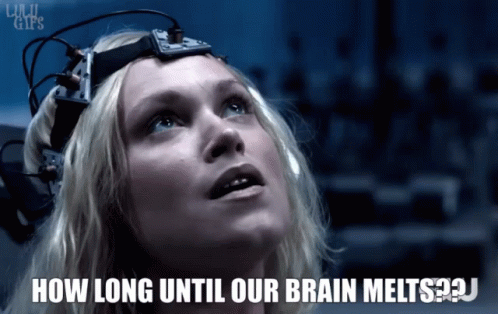
It's all about the meta-baby
I'm old enough to remember when the idea for a shitcoin was
- Utility, it had to do something and wall it off, so you needed to token to access a feature, that failed
- Then we went into culture and community, its all about the memes, that failed
- Then it was all about etching in on Bitcoin block space, using that rare commodity made my shitcoin valuable, that failed
Now we've got a bit of a mish-mash of memes + AI utility equals new grift.
To illustrate the unserious nature of this nonsense, AI agents, associated meme coins, and the protocols used to create these agents are among the top five best-performing crypto assets of the day, according to CoinGecko.
For example, Truth Terminal—the agent that started much of this wave—has promoted Goatseus Maximus (GOAT) and Fartcoin (FARTCOIN) causing both to skyrocket.
Fartcoin surged to a new all-time high price of $1.3 and a market cap of $1.5 billion as a result, FML, what a complete waste.

Growth in the FART coin Market Cap
ChatGPT-wrapped crypto scams
The Truth Terminal chatbot is a customized version of Anthropic's Claude 3 LLM, that tweets out random nonsense and somehow shitcoiners take this text as gospel and try to bet on tokens it shills or creates tokens based on its tweets as if it were Elon himself.
Can't wait for Elon to pump your bags, well, let's all dogpile on the random brain farts of a chatbot.
Again this just seems like a way to obscure insider trading and pump and dump influencer scams by hiding the human element behind a bot.
In fact, shitcoiners are creating tokens or sending tokens to a known wallet tied to this AI agent, hoping it uses this data to formulate it's next round of bullshit, I mean bullish tweets.
AI in name only
Still, most agent autonomy is limited. Truth Terminal, for example, still has creator Andy Ayrey looking over it's shoulder before it's thoughts and decisions go out to the public.
So if there's someone watching it, there's someone with access to the wallet and master access to prod it in a certain direction no?
Sigh! Reading up on this all just made my brain hurt and not in a good way.
“Do you want to be right or do you want to make money”
— ZachXBT (@zachxbt) January 6, 2025
99% of it is a scam and the AI agent wrapper grifts are probably worse than other past trends tbh.
bc at least meme coins promise nothing whereas AI coins try to larp as much as possible to appear legit to unsuspecting…This AI agent field itself is still relatively nascent and doesn't seem to provide any value other than being a filter for random tweet generation, and we all know computers aren't good with being random.
Most if not all projects promising AI-powered solutions will not deliver on their promises, potentially leading to significant losses for investors.
But that's the game they choose to play.
The cryptocurrency market is primarily driven by hype and speculation, and AI agent tokens are no exception. Many projects are overvalued based on potential rather than actual achievements.
Is this the future?
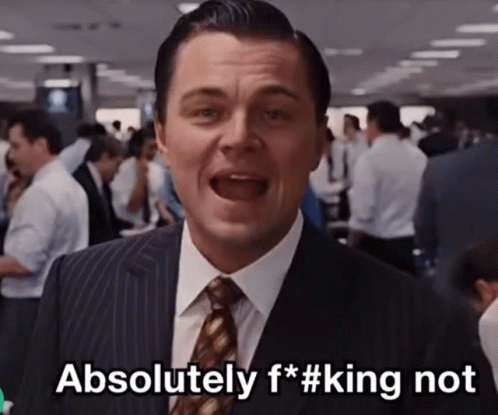
-
 @ 5d4b6c8d:8a1c1ee3
2024-12-27 20:03:03
@ 5d4b6c8d:8a1c1ee3
2024-12-27 20:03:03As mentioned in my inaugural post, I'm going to be searching for the optimal posting fee for ~econ.
My suspicion is that we were above the optimum, so I'm beginning with a halving. If this brings in more revenue than last month (48k), then I'll continue with another reduction to 54. Otherwise, I'll increase to the midway point of 161.
@cryotosensei told me that 108 has special significance, so let's see if it gives us a special month.
originally posted at https://stacker.news/items/826704
-
 @ bf47c19e:c3d2573b
2025-01-07 18:29:40
@ bf47c19e:c3d2573b
2025-01-07 18:29:40Originalni članak na politika.rs.
06.12.2014 / Autor: Istok Pavlović
Pre nekoliko godina, pojavila se digitalna valuta – bitkoin. Isprva, delovalo je kao utopija šačice sanjara ideja da ova valuta jednog dana postane glavno sredstvo plaćanja među ljudima, i da se potpuno ukine bankarski sistem i posrednici u finansijskim transakcijama. Međutim, san polako postaje realnost. Sve više ozbiljnih kompanija prima bitkoin kao sredstvo plaćanja, i njegovo usvajanje se povećava iz meseca u mesec.
Kako zapravo radi bitkoin? Da bismo odgovorili na ovo pitanje, pođimo od jednog starijeg problema u matematici, koji se zove „problem vizantijskih generala”.
Vizantijski generali opkolili su neprijateljski grad. Svaki od generala nalazi se sa svojom vojskom negde oko grada, i generali su geografski razdvojeni. Komunikacija među generalima ide preko kurira, koji prenose poruke. Da bi napad uspeo, generali moraju da se dogovore oko zajedničkog nastupa – da krenu svi odjednom u dogovoreno vreme. Međutim, problem je što među generalima, pa i među kuririma mogu da postoje izdajnici – ljudi koji rade za neprijatelja i koji će namerno preneti pogrešnu poruku kako bi sabotirali napad. Kako organizovati prenošenje poruka među generalima tako da akcija uspe, bez obzira na izdajnike?
Rešenje ovog problema postoji, i u pitanju je veoma kompleksan matematički algoritam koji se razvio početkom 21. veka. Pojavom bržih kompjutera, ovaj problem postao je rešiv za kraće vreme. U praksi, ovo je značilo da smo dobili način da se uspostavi potpuno poverenje između dve osobe na internetu koje se uopšte ne poznaju. To je otvorilo čitav novi spektar mogućnosti – a jedna od tih mogućnosti je digitalni novac.
Bitkoin sistem je zapravo kao jedna velika finansijska knjiga na internetu. Vi kupujete prostor u toj knjizi, u zamenu za klasičan novac ili prodajom neke robe ili usluga, i tada postajete vlasnik određene sume bitkoina. Taj svoj prostor zatim možete prodati nekom drugom ko hoće da ga kupi. Sve transakcije su potpuno sigurne i niko na svetu ne može da ospori da su se desile.Transakcije automatski beleži mreža kompjutera širom sveta prema „algoritmu vizantijskih generala”, bez ikakvog upliva živih ljudi, i tako dobijamo maksimalno poverenje. S obzirom na to da su ljudi eliminisani iz jednačine, najvažnija posledica ovog sistema je to što sada sve transakcije mogu da budu bez posrednika, bez banaka i nema provizije.
Ova poslednja činjenica je jedan od ključnih razloga što je bitkoin uveden kao sredstvo plaćanja u mnogim prodavnicama. Koliko god opskurno delovao, bitkoin je zapravo mnogo povoljniji za prodavce od klasičnog novca. Recimo da prodajete elektronske uređaje, gde je uobičajena margina profita oko pet procenata. Banke za procesiranje kartice uzimaju 2,5 odsto. Vi, dakle dajete polovinu svog profita banci, samo zato što banke kao sistem imaju monopol nad plaćanjem i nemate izbora. Tačnije, niste imali izbora do pojave bitkoina.
Za velike kompanije, kojima ne smetaju bankarske provizije, bitkoin je više stvar prestiža i mode. „Hej, pogledajte kako smo mi moderna kompanija, primamo bitkoine.” Međutim, za male porodične biznise bitkoini bukvalno mogu da znače opstanak.
Postavlja se logično pitanje, šta je to što bitkoinima daje vrednost? Odgovor na ovo pitanje zapravo leži u pitanju „šta je to što daje vrednost klasičnom novcu”. Ako pogledamo istoriju novca, u početnom trenutku za ljude je to bilo neko parče papira, ali su uvedene zlatne rezerve kao garancija da taj papir vredi. Ova garancija stvorila je kod ljudi veru u novac, i ta vera čini njegovu vrednost. Kasnije, ove zlatne rezerve su davno prevaziđene i nemaju veze s količinom novca u opticaju, ali ono što je ostalo jeste vera u novac, i samo zahvaljujući toj veri novac ima vrednost.
Ista stvar je i sa bitkoinima. Njegovu vrednost zapravo čini vera. Milionima ljudi širom sveta krv uzavri od sreće kada čuju za ideju da se konačno iskoreni bankarski sistem. Oni vide bankare kao „krvopije koji žive na tuđoj grbači”, i podržaće svaku ideju u tom pravcu. Počeće pasionirano da koriste bitkoine kao sredstvo plaćanja gde god je to moguće, sanjajući da dožive tokom svog života naslov u novinama „Bankari ostali bez posla”, da bi tog dana mogli da kažu: „I ja sam u ovome učestvovao, ja sam jedan od oslobodilaca čovečanstva.”
Naravno, kao i svaka tehnologija u svojoj ranoj fazi, bitkoin ima svoje propuste koji se sređuju. Ako pogledate internet komentare, ima ljudi koji će naći sto mana bitkoinima. Ipak, da smo slušali kritizere koji kritikuju tehnologije u ranoj fazi, nikada ne bismo imali avione, električnu struju, ili bilo koje inovacije koje su u početku delovale nesigurno, a bez kojih nam je današnji život nezamisliv.
-
 @ 2355757c:5ad3e04d
2025-01-07 18:27:45
@ 2355757c:5ad3e04d
2025-01-07 18:27:45You’ve heard it for some time now, incandescent lightbulbs will officially be banned for sale by retailers in the U.S. However it officially goes into fully effect NEXT WEEK. Americans will only be able to purchase LED lights from retailers across the country. The government began warnings in January, and has since officially rolled out the ban on manufacturing and sale of incandescent bulbs. WHY? LED lights provide more “light” using 75% less energy and last 25 times longer than incandescents. Sounds like a no brainer switch then right? WRONG. LED lights are significantly worse for your health, here’s why.

Our light environment is one of the most underrated, overlooked aspects of health. I will write plenty more about this topic in the future. It is complex at the surface, but in reality the takeaway is simple. Our light environment is one if not THE most important inputs to our biology. It dictates our body’s “clock” or circadian rhythm. When you disrupt your circadian rhythm frequently, you are significantly more at risk to ALL CHRONIC DISEASES. Why? Your are inherently destroying your ability to get restorative sleep, keeping your body in a sympathetic state, creating dysfunctional mitochondria, and increasing oxidative stress + inflammation. Just from light? YES.
“We summarize recent evidence suggesting that circadian disruption may also be a predisposing factor for the development of age-related neurodegenerative diseases (NDDs) such as Alzheimer's disease (AD), Parkinson's disease (PD), and Huntington's disease (HD).”
“... inappropriate environmental conditions such as Artificial Light at Night (ALAN) can cause circadian disruption or chronodisruption (CD) which can result in a variety of pathological diseases , including premature aging .” -STUDY LINK
Blue light stimulates cortisol production, the “stress” hormone that everyone has the knickers in a bunch about in the health community about mitigating through the use of supplements like Ashwaghanda. Here’s the deal, you don’t need to “mitigate” cortisol, you need to regulate its rhythm. Cortisol is the antithesis of melatonin, and the two hormones are meant to perform a dance everyday where one rises as the other falls…in accordance with the light cycles. However, that dance, that rhythm has been disrupted by artificial light.
Melatonin warrants five newsletters just on its own, but know that the same blue light that stimulates cortisol production also suppresses melatonin production. If you do not produce sufficient melatonin, your body is missing out on a whole host of anti-oxidant, anti-cancer benefits. Melatonin is driven by light, and is the composer of our mitochondria (dictates mito fusion/fission, mitophagy, etc.).

LED (light emitting diode) lighting has a much “more artificial” light spectrum profile than incandescent bulbs. Full spectrum sunlight is the only light that would have existed for hundred’s of thousands of years of human existence. Then came the discovery/ability to use fire as a light source. Although full spectrum sunlight contains the entire visible light spectrum + UV + infrared, each of these wavelengths come through at different angles of the sun. This is the NUANCE that matters:
-
There is no UV present at sunrise/sunset
-
UVA appears when the sun is >10 degrees above horizon. UVB at sun angle > 30 degrees
-
At dusk/dawn and sunrise/sunset, blue light wavelengths are scattered while red light remains intact (longer wavelength). Why sunrises/sunsets are more red/orange than blue
-
Blue light is NEVER present in natural sunlight without accompanying red/infrared wavelengths.
If you look at the light spectrum of LEDs, you will see a VERY high concentration of blue wavelengths, green to yellow wavelengths, and very little red/infrared wavelengths. Conversely, incandescent bulbs have NO blue light, little to no green/yellow and is majority red/infrared. This is why incandescent bulbs are so inefficient, because they dissipate so much heat in the form of infrared light (we can’t see infrared). Red and infrared (especially NIR), are very healing/low energy wavelengths. They are beneficial for mitochondrial health, especially the 650-800nm range. Sunlight is predominantly Red/infrared (40-50%) and these wavelengths are always present when the sun is up.
When you use LEDs you are creating a VERY artificial light environment with a lot of isolated blue, green, yellow light wavelengths and almost no red/infrared. This is extremely different from sunlight. This is especially problematic when using LEDs at NIGHT, because as stated…blue light suppresses melatonin production. Incandescent bulbs are a far better option since they are nearly all red/infrared light. This has a much less pronounced effect on melatonin, and is more in line with natural sunlight. It is also far lower in temperature, which again is a safer bet at night time.

Before Edison invented the light bulb, humans only used fire for light at night (or early morning). Incandescent bulbs are inherently FAR MORE similar in light spectrum profile to fire and have a much less harmful effect on melatonin. The estimates for suppression of melatonin in the graph below are certainly estimates, i think incandescent bulbs would actually be a bit lower but it depends on quantity and brightness as well.

TLDR: LEDs are shitcoins for light. They are far more artificial in terms of light spectrum. They are stealing your melatonin away from you. Avoid at all costs (especially at night), or wear blue light blocking glasses if you must. You can buy “red or warmer LEDs” but they aren’t really a true red light source because most just put phosphorous over a white LED to alter the warmth of the light.
STOCK UP on incandescent bulbs (good for keeping your house warm in the winter) before they are $100/pop. The government does NOT CARE about your health.
BlockBlueLight Glasses + Red Bulbs (Code TRISTAN10)
Stay Sovereign,
Tristan
p.s. the movement is growing.

Originally published JUL 31, 2023
-
-
 @ 5d4b6c8d:8a1c1ee3
2024-12-27 19:30:33
@ 5d4b6c8d:8a1c1ee3
2024-12-27 19:30:33Guess who's in charge of the ~econ territory?
This guy (Undisciplined points at him/her/itself as you read this).
The founder of this great territory, @jeff, has too many irl commitments to invest the time he would like to into ~econ, so he offered to let me take over indefinitely. If you are interested in the conditions agreed to in this transfer of power, see here (that link should probably have been a Rick Roll).
Even though we initially discussed this possibility a few months ago, I never really gave much thought to what I would do with the territory. I love the regular contributions we've been getting, lately, and I'll seek to make sure those continue.
My first order of business will be to search out the optimal posting fee, which is a process @jeff began. Expect a fee reduction in the near future, once I settle on a search method.
I have a very expansive view of what constitutes ~econ content (as one of my advisors said, "If it's about people making choices, then it's econ."), so I hope people will choose ~econ for their posts involving anything related to human action (the subject or the book).
Expect more updates as I come up to speed on running a territory and let me know what you'd like to see from this territory going forward.
originally posted at https://stacker.news/items/826658
-
 @ 5d4b6c8d:8a1c1ee3
2024-12-27 15:01:43
@ 5d4b6c8d:8a1c1ee3
2024-12-27 15:01:43Howdy, Stackers
We've got some territory updates to cover this week: - The first round of the College Football Contest is in the books - Cricket contests: CricZap and BBL Survivor Pool are rolling forward (perhaps without @grayruby) - We have a winner of the impromptu USA vs the World contest - Apparently, some stackers started a fantasy football league, but I don't recall hearing about it before
Then onto some sports topics - The NFL and NBA are competing over Christmas Day supremacy: https://stacker.news/items/824953/r/Undisciplined - What are our favorite sports to watch live vs on tv? https://stacker.news/items/825580/r/Undisciplined - The NFL MVP race is tightening up. - Is Embiid still the Biggest Loser? Plus, some early trade conversations. - Canadians are fascinated by children beating each other up with sticks and razor blades on national television: https://stacker.news/items/825050/r/Undisciplined
What's on your sports radar this week?
originally posted at https://stacker.news/items/826204
-
 @ acbcec47:dd305bec
2024-12-27 13:49:37
@ acbcec47:dd305bec
2024-12-27 13:49:37Prepare starter
- 1 part starter (~30g)
- 2 parts wholemeal rye flour (~60g)
- 2 parts warm water (~60g)
Stir well, then leave to stand warm and covered until the volume has almost doubled.

Once the starter has doubled in volume and a light cap has formed, it can be used for the dough.

Ingredients
- Flour (2/3 550/1100 wheat flour, 1/3 997 rye flour) = 600g
- Water: 60% of the flour quantity = 360g warm water
- Starter: 20% of the flour quantity = 120g starter
- Salt: 3% of the flour = 18g

Put the rest of the starter (about 30g) back in the fridge for the next batch. Knead everything well for 5 minutes, then leave to stand warm and covered.

Fermenting
First fermenting phase in one piece until the volume has almost doubled.

Then divide into portions ...

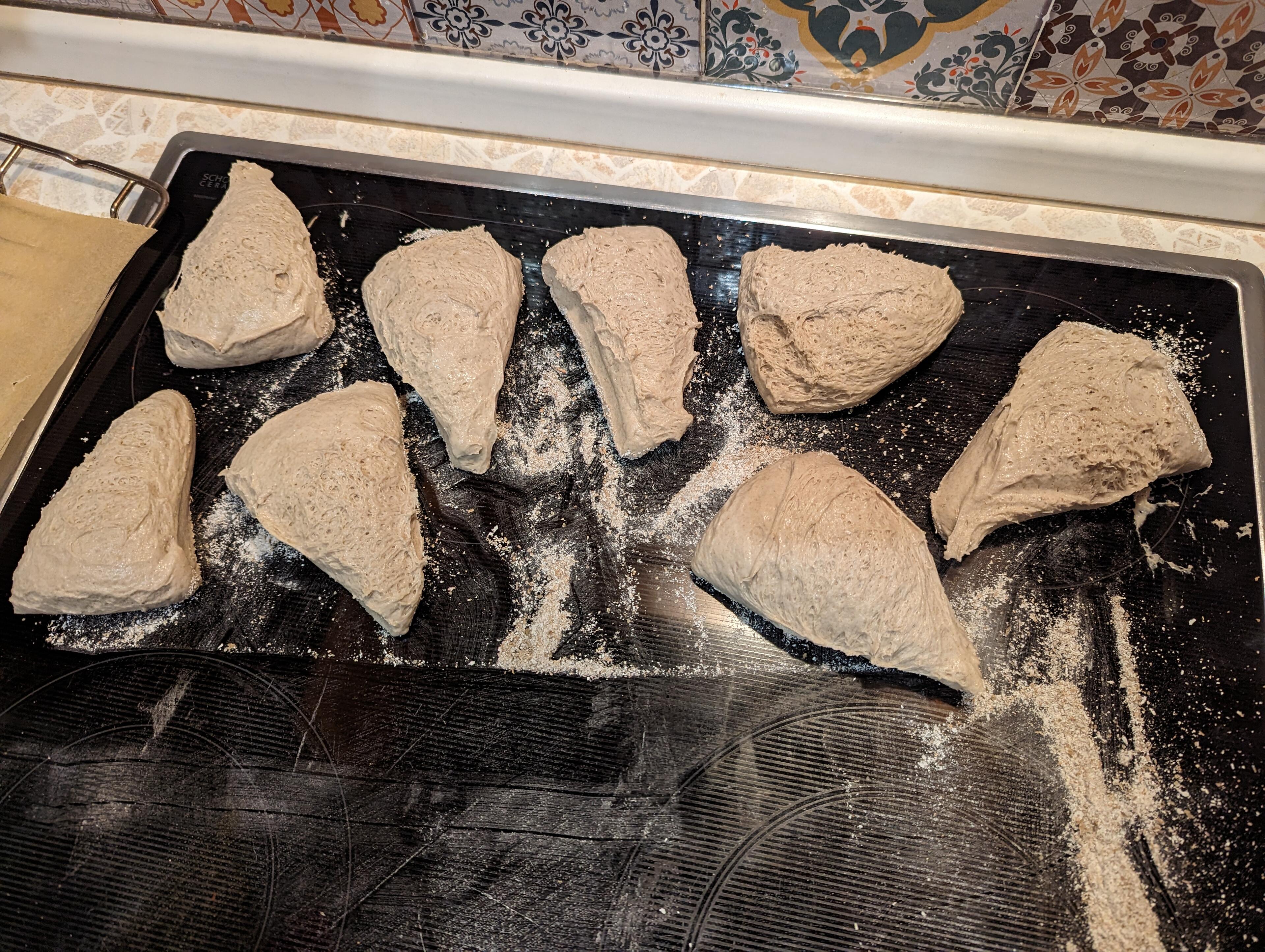
Shape and leave to rise on the baking tray for 1-2 hours.


Baking
- Preheat oven to 230°C (450°F)
- Just before baking, cut in the top of the rolls with a razor blade, so that they can extend

- Bake for 20 min with steam/cover at 210°C (410°F)
- Then remove the steam/cover and bake another 15-20 min at 180°C (360°F)

Enjoy ...


-
 @ bf47c19e:c3d2573b
2025-01-07 17:44:43
@ bf47c19e:c3d2573b
2025-01-07 17:44:43Originalni tekst na medium.com
07.10.2019 / Autor: LuxBTC
Uvod
U ovom članku osvrnut ćemo se na razine informiranosti o bitcoinu s kojim se pojedinac susreće i znanja koja bi trebao usvojiti za dublje razumijevanje bitcoina. Mnogi su već čuli za bitcoin, ali površno razumijevanje može dovesti do potpuno krive percepcije pogotovo ako se za izvor informacija koriste neobjektivni i tehnički netočni medijski članci. Proces razumijevanja bitcoina iziskuje puno vremena i novih informacija koje na prvu nisu lako dostupne stoga ćemo pokušati dati uvid u tijek i izvore informiranja kao i pitanja koja bismo trebali postavljati.
Razina I - Prvi kontakt
Čuli smo od poznanika da je kupio bitcoine i zaradio na njima. Znamo iz medija da je bitcoin digitalna kriptovaluta i da ju najčešće koriste kriminalci za drogu i pranje novca. Oni koji su uspjeli zaraditi na bitcoinu, imali su sreće jer su ga uspjeli prodati na vrijeme i dobiti novac za njega jer je bitcoin vjerojatno neki oblik piramidalne sheme.
Informacije koje posjedujemo:
- bitcoin je digitalna kriptovaluta
- bitcoin koriste kriminalci
- na bitcoinu se može zaraditi ako imamo sreće i uspijemo ga prodati za novac
- bitcoin je neki oblik piramidalne sheme
Pitanja koja bismo trebali postaviti:
- što je to digitalna kriptovaluta?
- zašto bitcoin koriste kriminalci?
- kako izgleda kupnja i prodaja bitcoina?
- što je to piramidalna shema?
Mnogi će ostati na ovoj razini i prihvatiti negativno mišljenje o bitcoinu. Svaka nova informacija iz medija, koja je najčešće vezana za nagli pad cijene ili napad hakera na kripto-mjenjačnice, bit će dodatna potvrda da se bitcoina treba kloniti. U mnoštvu ljudi koji će se prikloniti tom mišljenju naći će se pojedinci koji će htjeti saznati nešto više o njemu, najčešće privučeni onim dijelom gdje se na bitcoinu može zaraditi.
Razina II - Špekulacija i brza zarada
Čuli smo da cijena bitcoina naglo raste i pada te je vrlo nepredvidljiv. Ljudi se vole kockati i špekulirati s cijenom pa zašto ne isprobati sreću na njemu prije nego što cijena padne na nulu.

Još uvijek ne znamo kako bitcoin funkcionira, ali saznali smo da možemo uplatiti novac na neke od kripto-mjenjačnica te na njima kupiti bitcoin i njime špekulirati. Kupili smo dio od jednog bitcoina (npr. 0.01 BTC) u vrijednosti od 200 eura. Cijena mu je kroz idućih nekoliko tjedana porasla te smo u dobitku 20%. Očekivali smo nastavak rasta pa ga nismo prodavali, ali cijena je oštro pala te smo sada u minusu 30%. U strahu da nam se gubitak ne poveća, prodajemo 0.01 BTC natrag u eure, naravno uz gubitak jer bitcoin trenutno vrijedi manje nego kad smo ga kupili. Kockali smo se i izgubili dok je naš prijatelj bio manje pohlepan te je iskoristio dobitak od 10%.
Informacije koje posjedujemo:
- na kripto-mjenjačnicama (burzama) možemo kupiti bitcoine
- ne moramo nužno kupiti cijeli bitcoin s obzirom da se može dijeliti na decimale
- cijena bitcoina je vrlo volatilna i nepredvidljiva
- bitcoinom se špekulira pa se ne razlikuje od kockanja
Pitanja koja bismo trebali postaviti:
- zašto bitcoin ima cijenu?
- zašto je cijena bitcoina volatilna i nepredvidljiva?
- koliko su kripto-mjenjačnice sigurne?
Nekima se posrećilo s bitcoinom, nekima nije. Sigurno je da takva internetska valuta ne može imati vrijednost jer ne postoji nikakav razlog zašto joj cijena toliko skače i pada. Najbolje se onda kloniti takvog oblika zarade.
Razina III - Odakle Bitcoinu vrijednost
Mnogi koji su čuli za bitcoin reći će — bitcoin nema vrijednost jer ne služi ničemu. Također, bitcoin je samo digitalni zapis koji nije opipljiv te je jedini razlog zašto još uvijek ima cijenu taj što je cijena potpuno umjetna te se još nije našla zadnja naivčina koja će ga otkupiti i neće više moći prodati jer ga više nitko neće htjeti kupiti. Tada će balon puknuti.

Informacije koje posjedujemo:
- bitcoin je digitalni zapis koji ne služi ničemu
- cijena bitcoina je umjetna jer bitcoin nema vrijednost
- sustav će se urušiti kad više nitko ne bude htio otkupiti bitcoine
Pitanja koja bismo trebali postaviti:
- kako izgleda i funkcionira struktura bitcoina kao digitalni zapis?
- kako se kretala cijena bitcoina od početka njegovog izuma i što nam to govori?
Razina IV - Više strana Bitcoina
Do sada smo se dotakli osnovnog ekonomskog dijela bitcoina iz kojeg smo saznali da bitcoin posjeduje tržišnu cijenu te da se njime može trgovati kao i s ostalim tržišnim instrumentima poput dionica, zlata, valuta itd. Bitcoin također ima tržišnu kapitalizaciju jer je poznat ukupan broj bitcoina u cirkulaciji kao i cijena jednog bitcoina.
No, razumijevanje bitcoina i odgovore na naša pitanja nećemo dobiti kroz njegovu osnovnu ekonomiju koja nam trenutno jedino govori da tržište bitcoina postoji jer postoji njegova ponuda i potražnja. Da bismo naučili što je bitcoin i kako funkcionira, moramo zaviriti u njegovu povijest, tehničku stranu i detalje ekonomije bitcoina koje otvaraju stotine pitanja koja za sobom povlače mrežu mnogih drugih. U tom procesu traženja odgovora nesvjesno ćemo se dotaknuti povijesti samog novca te njegove evolucije kroz tisućljeća, razvoja ljudskog društva i stvaranja monetarne politike, izuma interneta i njegovog utjecaja na društvo te slobodu pojedinca, izuma kriptografije i njezine važnosti te pojavu cypherpunk pokreta, austrijske škole ekonomije, svjetske financijske krize, blockchain tehnologije i njene primjene te još mnogih drugih tema.
Nastanak Bitcoina
Bitcoin je vrlo mlada tehnologija koja nije nastala preko noći nego je produkt rada koji se proteže nekoliko desetljeća u prošlost. Tehnički članak Bitcoina [1] objavio je njegov tvorac 31.10.2008. pod pseudonimom Satoshi Nakamoto, uoči svjetske financijske krize, a prvu verziju Bitcoin softvera objavljuje 3.1.2009. u kojem ostavlja poruku s naslovnice novina The Times, toga dana.
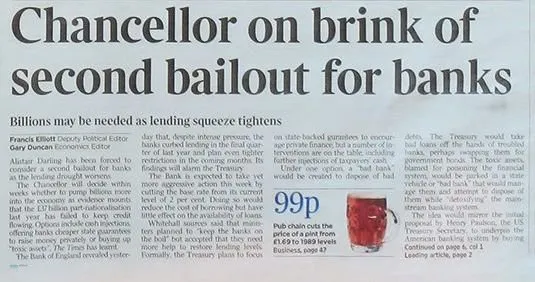
U nastavku slijedi hrvatski prijevod uvodnog poglavlja knjige “Mastering Bitcoin” autora Andreasa Antonopoulosa. [2]
Što je Bitcoin?
Bitcoin je skup koncepata i tehnologija koji čine osnovu ekosustava digitalnog novca. Jedinice valute nazvane bitcoin koriste se za pohranu i prijenos vrijednosti među sudionicima bitcoin mreže. Korisnici bitcoina međusobno komuniciraju putem bitcoin protokola prvenstveno putem interneta, mada se mogu koristiti i druge prijenosne mreže. Bitcoin protokol, dostupan kao softver otvorenog koda, može se izvršavati na širokom rasponu računalnih uređaja, uključujući prijenosna računala i pametne telefone, čineći tehnologiju lako dostupnom.
Korisnici mogu prenositi bitcoin preko mreže i njime ostvariti gotovo sve što se može ostvariti s uobičajenim valutama, uključujući kupovinu i prodaju robe, slanje novca ljudima ili organizacijama itd. Bitcoin se može kupiti, prodati i zamijeniti za druge valute na specijaliziranim burzama. Bitcoin je u određenom smislu savršen oblik novca za internet jer je brz, siguran i bez granica.
Za razliku od tradicionalnih valuta, bitcoini su potpuno virtualni. Ne postoje u fizičkom obliku, pa čak ni digitalnom. Kovanice su obuhvaćene u transakcijama koje prenose vrijednost s pošiljatelja na primatelja. Korisnici bitcoina posjeduju ključeve koji im omogućuju da dokažu vlasništvo nad bitcoinom u bitcoin mreži. Pomoću ovih ključeva mogu potpisati transakcije kako bi otključali vrijednost i potrošili je prijenosom na novog vlasnika. Ključevi se često pohranjuju u digitalnom novčaniku na računalu ili pametnom telefonu korisnika. Posjedovanje ključa koji može potpisati transakciju jedini je preduvjet trošenja bitcoina, čime je kontrola u potpunosti u rukama pojedinog korisnika.
Bitcoin je distribuirani, peer-to-peer (svaki sa svakim) sustav. Kao takav ne postoji središnji poslužitelj ili točka kontrole. Bitcoin se stvara kroz proces nazvan “rudarenje”, koji uključuje nadmetanje u pronalaženju rješenja za matematički problem tijekom obrade bitcoin transakcija. Svaki sudionik u bitcoin mreži (tj. svatko tko koristi uređaj koji pokreće čitav niz bitcoin protokola) može raditi kao rudar, koristeći procesorsku snagu svog računala za provjeru i zapisivanje transakcija. Svakih 10 minuta, u prosjeku, bitcoin rudar može validirati transakcije ostvarene posljednjih 10 minuta te je nagrađen s potpuno novim bitcoinom. U osnovi, rudarenje bitcoina decentralizira izdavanje novih kovanica i funkcije odobrenja središnje banke te zamjenjuje potrebu za bilo kojom središnjom bankom.
Bitcoin protokol uključuje ugrađene algoritme koji reguliraju funkciju rudarenja na mreži. Težina zadatka obrade koju rudari moraju obaviti prilagođava se dinamički tako da u prosjeku svakih 10 minuta netko uspije izvršiti zadatak bez obzira na to koliko se rudara (i koliko procesne snage) natječe u bilo kojem trenutku. Protokol također prepolavlja brzinu stvaranja novih bitcoina svake 4 godine i ograničava ukupni broj bitcoina koji će se stvoriti na fiksni ukupni iznos od 21 milijun kovanica. Rezultat je da broj bitcoina u optjecaju pomno slijedi lako predvidljivu krivulju koja se približava 21 milijunu do 2140. godine. Zbog smanjujuće stope izdavanja bitcoina, dugoročno, bitcoin valuta je deflacijska. Bitcoin se ne može razvodniti printanjem novog novca iznad očekivane stope izdavanja.
Bitcoin je ujedno i naziv protokola, peer-to-peer mreže te distribuirane računalne inovacije. Bitcoin valuta je samo prva primjena ovog izuma. Bitcoin predstavlja vrhunac dugogodišnjeg istraživanja kriptografije i distribuiranih sustava te uključuje četiri ključne inovacije okupljene u jedinstvenu i moćnu kombinaciju. Bitcoin se sastoji od:
- Decentralizirana peer-to-peer mreža (bitcoin protokol)
- Knjiga javnih transakcija (blockchain)
- Skup pravila za neovisnu provjeru transakcija i izdavanje valute (pravila konsenzusa)
- Mehanizam za postizanje globalnog decentraliziranog konsenzusa na važećem blockchainu (Proof-of-Work algoritam )
(…)
Digitalne valute prije bitcoina
Pojava digitalnog novca usko je povezan s razvojem kriptografije. To nije iznenađujuće kada se razmotre temeljni izazovi korištenja bitova koji predstavljaju vrijednost koja se može zamijeniti za robu i usluge. Tri su osnovna pitanja za svakoga tko prihvaća digitalni novac:
- Mogu li vjerovati da je novac autentičan i da nije krivotvoren?
- Mogu li vjerovati da se digitalni novac može potrošiti samo jednom (poznat kao problem “dvostruke potrošnje”)?
- Mogu li biti siguran da nitko drugi ne može tvrditi da taj novac pripada njima, a ne meni?
Izdavači papirnog novca stalno se suočavaju s problemom krivotvorenja koristeći sve sofisticiranije papire i tehnologiju printanja. Fizički novac lako rješava problem dvostruke potrošnje jer ista novčanica ne može biti na dva mjesta odjednom. Naravno, konvencionalni novac također se često pohranjuje i prenosi digitalno. U tim se slučajevima problemi s krivotvorenjem i dvostrukom potrošnjom rješavaju odobravanjem svih elektroničkih transakcija putem središnjih vlasti koje imaju globalni uvid u valutu u optjecaju. Za digitalni novac, koji ne može iskoristiti takvu vrstu provjere, kriptografija pruža osnovu za povjerenje u legitimnost zahtjeva korisnika. Konkretno, kriptografski digitalni potpisi omogućuju korisniku da potpiše digitalnu imovinu ili transakciju čime dokazuje vlasništvo nad tom imovinom. Uz odgovarajuću arhitekturu, digitalni potpisi također se mogu koristiti za rješavanje problema s dvostrukom potrošnjom.
Kada je kriptografija počela postajati široko dostupna i shvaćena u kasnim 80-ima, mnogi su istraživači pokušali koristiti kriptografiju za konstrukciju digitalnih valuta. Ti rani projekti digitalne valute izdavali su digitalni novac, obično s pokrićem u nacionalnoj valuti ili plemenitim metalom poput zlata.
Iako su te ranije digitalne valute funkcionirale, bile su centralizirane i kao rezultat toga, vlade država i hakeri su ih lako napadali. Rane digitalne valute koristile su središnji zavod zbirnog vođenja računa za podmirivanje svih transakcija u pravilnim intervalima, baš kao i tradicionalni bankarski sustav. Nažalost, u većini slučajeva ove novonastale digitalne valute bile su na meti zabrinutih vlada i na kraju su kroz sudske sporove uklonjene. Neke su propale u spektakularnim padovima kada je matična tvrtka naglo likvidirana. Za otpornost protiv intervencija protivnika, bilo da su legitimne vlade ili kriminalni elementi u pitanju, bila je potrebna decentralizirana digitalna valuta kako bi se izbjegla jedna točka napada. Bitcoin je takav sustav, koji je dizajniran decentralizirano, bez ikakvih središnjih autoriteta ili točke kontrole koji mogu biti napadnuti ili oštećeni.
Povijest Bitcoina
Bitcoin je izumljen 2008. godine objavljivanjem rada pod naslovom „Bitcoin: Peer-to-peer elektronički gotovinski sustav“,[1] napisanog pod pseudonimom Satoshi Nakamoto. Nakamoto je kombinirao nekoliko prethodnih izuma kao što su b-money i HashCash kako bi stvorio potpuno decentralizirani elektronički gotovinski sustav koji se ne oslanja na središnje tijelo za izdavanje valute i potvrđivanje transakcija. Ključna inovacija bila je upotreba distribuiranog sustava izračunavanja (nazvanog algoritam Proof-of-Work) za provođenje globalnih „izbora“ svakih 10 minuta, omogućujući decentraliziranoj mreži da postigne konsenzus o stanju transakcija. Time se elegantno rješava problem dvostruke potrošnje u kojem se jedna valuta može potrošiti dva puta. Prije toga, problem s dvostrukom potrošnjom predstavljao je slabost digitalne valute, a riješen je provjerom svih transakcija putem središnjeg zavoda zbirnog vođenja računa.
Bitcoin mreža pokrenuta je 2009. godine, koju je objavio Nakamoto i koju su tada revidirali mnogi drugi programeri. Procesna snaga algoritma Proof-of-Work (rudarenje), koji pruža sigurnost i otpornost bitcoina, povećala se eksponencijalno te sada nadmašuje kombiniranu procesnu snagu najboljih svjetskih super-računala. Ukupna tržišna vrijednost bitcoina već je premašila 135 milijardi američkih dolara. Najveća transakcija koju je mreža do sada procesuirala bila je 400 milijuna američkih dolara, koja je poslana odmah i obrađena za naknadu od 1 dolara.
Satoshi Nakamoto povukao se iz javnosti u travnju 2011., prepuštajući odgovornost za razvijanje koda i mreže skupini dobrovoljaca. Još uvijek nije poznat identitet osobe ili ljudi koji stoje iza bitcoina. No, ni Satoshi Nakamoto, niti bilo tko drugi ne vrši individualnu kontrolu nad bitcoin sustavom, koji djeluje na temelju potpuno transparentnih matematičkih principa, otvorenog koda i konsenzusa među sudionicima. Sam izum je revolucionaran i već je pokrenuo novu znanost na područjima distribuiranog računalstva, ekonomije i ekonometrije.
[…]
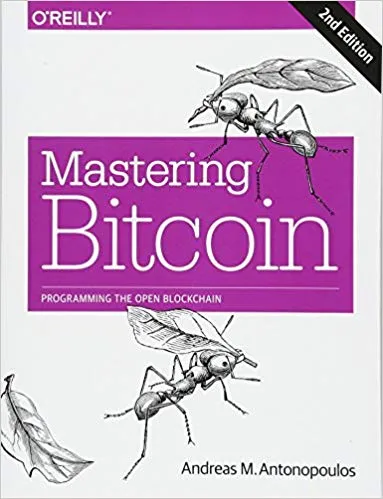
Knjiga “Mastering Bitcoin” pruža detaljan opis tehničkih pojmova, strukture i rada bitcoina te bitcoin mreže. Daje odgovore na mnoga tehnička pitanja i prednosti koje bitcoin pruža. Njen autor, Andreas Antonopoulos najpoznatiji je edukator u Bitcoin zajednici koji dugi niz godina održava brojne govore i edukacijske seminare o važnosti bitcoina diljem svijeta. Sudjelovao je u nekoliko parlamentarnih saslušanja na kojima je educirao političke državne vrhove o novonastaloj bitcoin tehnologiji. Njegovi brojni govori mogu se naći na Youtube kanalu aantonop [3], a neki od njih sakupljeni su u knjige “The Internet of Money (Vol. I, Vol. II)” [4]
Stvaranje šire slike
Nakon usvajanja novih informacija i tehničkih pojmova počet ćemo dobivati širu sliku o bitcoinu. Možda nam i dalje neće biti jasni pojmovi poput rudarenja, 51% napada, Problem bizantinskih generala, kreiranje privatnih i javnih ključeva itd., ali postoje mnogi Youtube videi koji to na slikovit način vrlo dobro objašnjavaju.
Potkovani tehničkim znanjem o bitcoinu, možemo krenuti postavljati pitanja što novcu daje vrijednost, zašto zlato ima vrijednost, koja je sličnost između zlata i bitcoina, zašto su standardne valute inflacijske, kako bitcoin kao deflacijska valuta funkcionira, kako funkcionira monetarna ekonomija i koje su mane današnjeg monetarnog sustava.
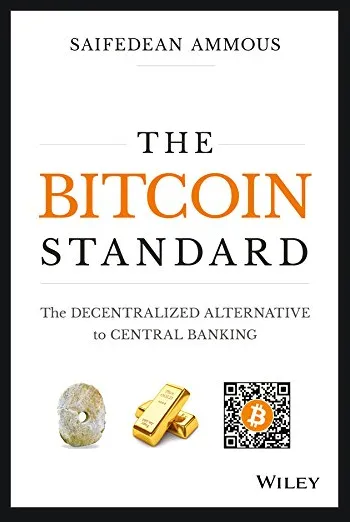
Odgovore na ova bitna ekonomska pitanja možemo pronaći u knjizi “The Bitcoin Standard: The Decentralized Alternative to Central Banking” autora Saifedeana Ammousa [5] koja će uskoro biti prevedena na hrvatski jezik u nakladništvu Mate d.o.o.
Saifedean Ammous u svojoj knjizi govori o rijetkosti u pogledu omjera Stock-to-Flow (zaliha i proizvodnje). Objašnjava zašto se zlato i bitcoin razlikuju od ostalih metala poput bakra, cinka, nikl. Zbog toga što imaju visok Stock-to-Flow omjer (SF).
„Za bilo koju potrošnu robu (…) udvostručenje proizvodnje značajno će umanjiti sve postojeće zalihe, što će srušiti cijenu i naštetiti vlasnicima. Skok cijene zlata, koji bi uzrokovao udvostručenje godišnje proizvodnje, bio bi neznatan, povećavajući zalihe za 3% umjesto 1,5%.”
„Upravo je ta konstantno niska stopa stvaranja zaliha zlata temeljni razlog zašto je zlato zadržalo svoju novčanu ulogu kroz ljudsku povijest.”
„Visoka vrijednost stock-to-flow omjera zlata čini ga robom čija tržišna ponuda ima najnižu elastičnost cijene.”
„Postojeće zalihe bitcoina u 2017. bile su oko 25 puta veće od novih bitcoina proizvedenih u toj godini. Taj omjer je upola manji u usporedbi s omjerom za zlato, ali oko 2022. stock-to-flow bitcoina nadmašit će zlato”- Saifedean Ammous
Stock-to-Flow pristup kao pokretač ekonomske analize Bitcoina
Nakon objavljivanja knjige “The Bitcoin Standard”, Stock-To-Flow pristup koji ima porijeklo u analizi tržišta robe, počeo se koristiti kao alat za analizu Bitcoina. Pristup je u skladu s osnovnom idejom koja stoji iza Bitcoina koji je izričito zamišljen kao novo monetarno dobro i usmjeren prema formi novca plemenitih metala. Prema tome novi se bitcoini ne mogu rudariti proizvoljno. Bitcoin je potpuno digitalan stoga se često naziva digitalnim zlatom.
Postoji snažna povezanost između tržišne vrijednosti bitcoina i Stock-To-Flow omjera. Model koji pokazuje ovaj statistički značajan odnos prvi je napravio autor PlanB i iznio rezultate u članku pod nazivom Modeling Bitcoin’s Value with Scarcity.[6]
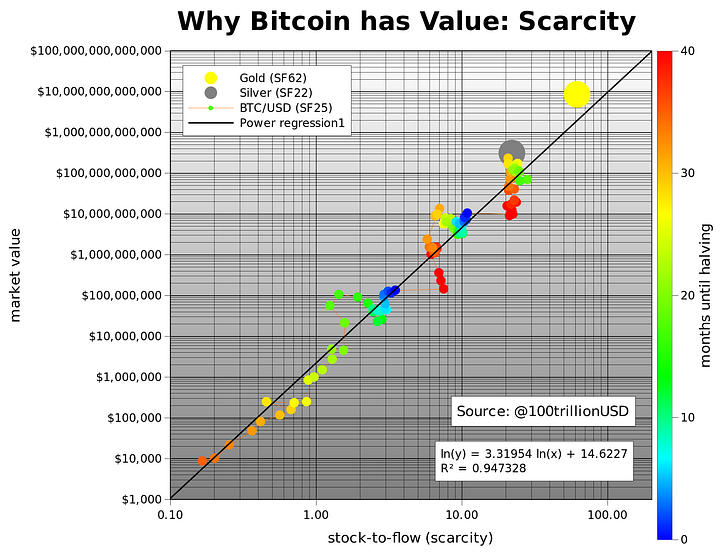
Iako statistički modeli poput ovoga mogu ukazivati na snažnu zavisnu korelaciju, ne mogu uzeti u obzir utjecaje mnogih drugih, najčešće nepredvidljivih faktora, stoga uvijek postoji šansa da u potpunosti krivo prognoziraju budućnost.
Rana faza
Bitcoin je vrlo mlada tehnologija nastala tijekom svjetske financijske krize. U prvih 10 godina postojanja prošao je kroz mnoge faze. Od uporabe na crnom tržištu, trgovanja na nereguliranim burzama i hakerskih napada na njih do reguliranog trgovanja bitcoin terminskim ugovorima (futures contract), teme rasprava i korištenja u financijskim analizama poznatih svjetskih banaka te ostalih financijskih institucija itd.
Zbog povijesnog dugoročnog rasta cijene bitcoina te njegovog velikog potencijala kao nove tehnologije, mnogi se odlučuju ne koristiti ga još kao platno sredstvo nego ga nakon kupnje čuvaju. Do sada se pokazao kao dugoročno dobar instrument očuvanja vrijednosti osobne imovine, poput zlata, no idući pravi test za bitcoin bit će pojavom nove financijske krize.
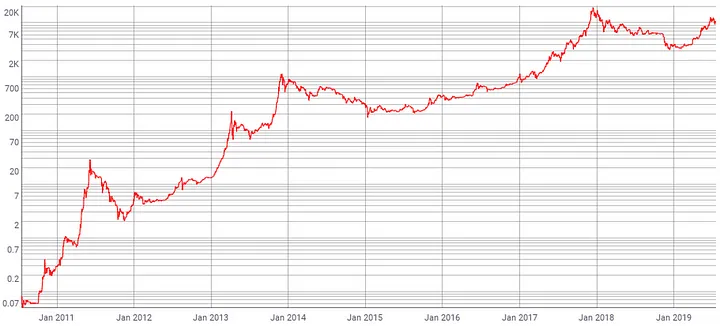
Razvoj bitcoina podsjeća na razvoj interneta ranih 90-ih godina. Mnogi nisu razumjeli što internet predstavlja, korporacije čije je poslove ugrožavao, predviđale su mu propast te su smatrale da kućanstva neće imati potrebu za njime, stvorena je medijska slika da se internetom služe samo kriminalci, pedofili, ljubitelji pornografije. Danas se struktura interneta uvelike razlikuje u odnosu na njegovu ranu fazu te je neizostavan dio naših života koji je pokrenuo digitalnu revoluciju i unaprijedio životni standard ljudi diljem svijeta. Bitcoin se danas naziva i internetom novca.
Lightning network
Drugi sloj protokola na bitcoin mreži pod nazivom Lightning network, predstavljen je 2016. godine kao potencijalno rješenje za problem skalabilnost bitcoin mreže. Skalabilnost trenutno ne predstavlja problem, ali ako uporaba bitcoina postane široko rasprostranjena tj. ako se bitcoin počne koristiti u budućnosti kao svakodnevno platno sredstvo, iznimno je važno da mreža može podržati i obraditi veliki broj transakcija po sekundi. Lightning network je trenutno u beta fazi razvoja te preostaje vidjeti hoće li zaživjeti ili će se možda pojaviti neko drugo naprednije rješenje.
Zaključak
U ovom članku osvrnuli smo se na razine informiranosti o bitcoinu i znanja koja bismo trebali usvojiti za dublje razumijevanje bitcoina. Naveli smo izvore za tehničku i ekonomsku stranu bitcoina pomoću kojih možemo doći do odgovora na mnoga pitanja i dobiti širu sliku o bitcoinu.
Nitko ne zna što budućnost donosi i u kojem smjeru će se bitcoin razvijati — hoće li nadmašiti zlato u ulozi očuvanja vrijednosti osobne imovine, hoće li postati uvaženo globalno platno sredstvo te smanjiti monetarnu moć centralnih banaka ili nešto sasvim treće. Jedino što je sigurno da se svijest o trenutnom velikom nesrazmjeru bogatstva i moći širi, kao i zlouporaba moći za vlastite političke interese pojedinaca, na štetu naroda kojem se oduzimaju privatnost, sloboda, mogućnost izbora te da su u društvu potrebne mnoge promjene.
“The central bank must be trusted not to debase the currency, but the history of fiat currencies is full of breaches of that trust. Banks must be trusted to hold our money and transfer it electronically, but they lend it out in waves of credit bubbles with barely a fraction in reserve.” — Satoshi Nakamoto
Reference
[1] https://bitcoin.org/bitcoin.pdf — Satoshi Nakamoto, 2008
[2] Mastering Bitcoin: Programming the Open Blockchain — Andreas A. Antonopoulos, 2016
[3] https://www.youtube.com/user/aantonop
[4] The Internet of Money (Vol. I, Vol. II) — Andreas A. Antonopoulos, 2016-2017
[5] The Bitcoin Standard: The Decentralized Alternative to Central Banking — Saifedean Ammous, 2018
[6] Modeling Bitcoin’s Value with Scarcity — PlanB @100trillionUSD, 2019
-
 @ 0861144c:e68a1caf
2024-12-27 12:55:14
@ 0861144c:e68a1caf
2024-12-27 12:55:14Recently, I read that @lunaticoin, in his latest interview with @Darthcoin, received a very significant economic value in return. This comes as no surprise, because if you haven’t listened to this particular episode yet, it’s like missing out on an educational rollercoaster ride. It feels as though you already know the topic, but with every passing second, every slide, you find yourself paying close attention—not just for the entertainment value, but because it genuinely seeks to teach alongside the user. It’s a strange sentiment, I know, but that’s how I felt.
Now, dear friends of SN, what brings us to this conversation?
Writing[^2] has many facets. Some write for the sats, earning them the (in)appropriate nickname of “ass-milkers.” They write to earn satoshis but without contributing anything meaningful, simply chasing gains at all costs. Should you sacrifice your thoughts to say something popular, avoid arguments, or avoid being labeled as someone with stupid ideas? The “ass-milker” does just that. They lack authenticity and, in the cultural battle, they’ll be the first to fall because they have nothing to offer except brain junk food.
There are those who write to learn. This category of writers tends to produce long-form content that is often fascinating. In their process of learning, they leave breadcrumbs that, at least in my case, I follow and learn from.
I’ve identified several of these writers here—they’re my favorites. I’ve even subscribed to them, allowing notifications every time they post something. Mind you, I’m someone who keeps my phone on focus mode, only allowing calls from my inner circle and no notifications from any messaging apps. Speaking as a Christian, notifications are Satan’s invention, designed to enslave me.
Then there’s the final category of writers: the others. They write purely for fun, for the sheer joy of it, to share what’s on their mind with the world, and aim to elevate others, encouraging similar thoughts. I’ve found many of them on various forums, and they do monumental work.
Why are we talking about writers?
The recent debates I’ve followed regarding the creative economy have left a strong impression on me. First, a fascinating discussion about music and the economy, and then suggestions on how to improve Stacker News to fairly compensate writers without devolving into just another Reddit.
And this is the main point I’d like to address again: value-for-value aims to be the new focus of the creative economy. Let’s simplify: excluding the first type of writer mentioned above, writers don’t write because they want money; they write because they have to. Many times, we’ve written dozens of articles, essays, even books (in my case) without earning a penny, but with the complete satisfaction of having written. We smile when people ask if we have material to share. Oh, God, do we ever.
Writers are irrational
We are human beings who need to express ourselves. That’s why, when I write on platforms like this, I know I’m making an impact, and I measure it through zaps, downzaps, and comments. Tell me one writer who doesn’t love comments or enjoy leaving comments on others’ work.
Our craft is not about agreeing with the audience. Our craft is not about shaking our hips on a pole for money. Our craft is about intervening in people’s thoughts. One reason I love the V4V economy is that everyone does the best they can with what they have. Sometimes, you’re broke; other times, your wallet overflows, letting you show your generosity. Sometimes, observing comments is better than money. In fact, they tried to turn writers into rational beings, and as a direct result, we’ve flooded the internet with junk food for the brain.
As a writer with profiles on Medium and Substack (previously WordPress, Tumblr, and others), I’m aware of the stats available to me. But at the end of the day—this is something I’ve learned over time—none of those metrics matter except the only one that does:
- Are people talking about your article?
- Have you joined the conversation?
- Are you making your audience think?
Writers don’t write for money. If they do, they’re called salespeople, not writers. That’s why artificial intelligence can write an entire book, but it can’t replicate the essence. AI helps edit and find errors. Believing it will make you a writer is a mistake. Let me share a story. A few days ago, a musician friend and I discussed AI and its capabilities. He mentioned tools that can create music in seconds. We created an avant-garde jazz track with a soul touch, and no sooner had it played than he said, “This isn’t new; it’s Tom Jobim.” Cross-referencing confirmed he was right.
An artist cannot be created artificially. If they could, it would just be junk food. Artificiality cannot create something new; it can only perfect what you’ve already made.
Art as an Investment
I understand copyright very well, having studied it extensively during my Model United Nations days. While I find it fascinating, I also recognize it as a fiat mentality. Instead of promoting art, it builds fences and walls to assign monetary value to music—a concept I’ve debated extensively and concluded doesn’t exist. Let’s admit something you won’t want to say aloud: even if no one reads your work, you’ll keep writing anyway. And you’ll keep writing because you never assigned monetary value to your words. Writing makes you happy.
Creating words that turn into texts, then paragraphs, then sections, and eventually chapters—can they come together as a book? For a long time, few people read my work, and yet... I kept writing. Throughout history, art itself has rarely had an economic value attached to it. This is the lie they want you to believe: that without copyright, art will disappear because people will stop paying for it. Under that premise, platforms like Stacker News or Substack are destined to fail. Yet the data tells a completely different story. So, if value-for-value works, what do we have then?
Our enemy is copyright. Art is not meant for rational economic activity. Writing isn’t essential to others, but it is to us. Writing isn’t intrinsically valuable, but it is intrinsically valuable to me. My goal for 2025 is to explore how my three books in Spanish can thrive in the value-for-value economy, so we as artists can continue creating. As a burgeoning economy formed around the hardest and most resilient money the internet has seen to date, let’s use everything to our advantage.
I hope this inspires you, fellow writer, to keep contributing to the value-for-value economy and to continue the debate on copyright.
[^2]: To clarify all points properly, the craft of writing in this post is considered an art; hence, the writer is an artist. If you don’t feel like an artist when writing, you may need to check if you’re a candidate for imposter syndrome.
originally posted at https://stacker.news/items/826042
-
 @ 31bdca15:aac01582
2024-12-27 10:04:05
@ 31bdca15:aac01582
2024-12-27 10:04:05Honestly, this is hilarious on some level. To anyone with average intelligence it was clear from the beginning that Elon is not for free speech.
Up until today
Here is are the major impediments to free speech on X the every platform as to my knowledge:
- Banning the account that tracks Elons private jet. It is kind of understandable on a human level but this was the first sign that there is no free speech on X. There is no compromise, there isn't even a slippery slope: either there is free speech or there is not. It should also be noted that accounts that track Taylor Swifts jet ARE STILL UP! Hypocrisy.
- Banning the word "cisgender". Even if you're a rightwing "anti-woke" culture warrior I expect you to acknowledge that any compromises to free speech are destroying all free speech, including the ones one does not agree with
Yesterday night
I do not think that freedom of speech is freedom of reach. But I do consider what happened tonight a wakeup call for everyone who is still in denial. Major impediments to reach until yesterday were afaik only on broad strokes on liberal and leftist accounts and maybe a few people personally like probably Grimes and Ron Desantis. Major impediments to reach as of today:
- Laura Loomer personally and a forceful removal of all her paid subscribers
- "The conservative OG" had their organization badge removed, all accounts associated lost their blue check reach multiplier (they are still paying tho)
- Speculative: I suspect but do not know for sure that accounts associated with the VC or tech scene got a malus now. If it's the same malus or a softer one than liberal/leftist have is unclear. Maybe Twitter engineers have programmed a whole system for manual malus factors now.
- Individually suspended accounts:
It seems like Elon personally was angered yesterday night with a few people ratioing him personally and they got a ban personally.
Conclusion
You do not get free speech just because it's "your guy" who's in charge. A digital town square must not centralized. It could consist of multiple plattforms (e.g. Fediverse) or one decentralized plattform (e.g. Nostr). But it cannot be one plattform.
originally posted at https://stacker.news/items/825944
-
 @ 16d11430:61640947
2024-12-26 11:31:05
@ 16d11430:61640947
2024-12-26 11:31:05For centuries, financial markets have been shackled by an archaic mindset rooted in Newtonian physics: "What goes up must come down." This belief has dominated the thinking of old-school fiat economists, who view the rise and fall of markets as a natural cycle of gravity-bound economics. But Bitcoin, the digital phoenix, was designed to defy this outdated paradigm. It isn't just an asset class or a currency—it's a revolution in financial physics, unshackling value from centralized control and rewriting the rules of money.
The Fiat Fallacy: Gravity Economics
Fiat systems are inherently cyclical, prone to inflation, manipulation, and collapse. Central banks print money endlessly, causing value to "come down" as purchasing power erodes. For fiat thinkers, this is unavoidable—a gravitational force they accept as immutable. Yet this mindset ignores Bitcoin’s game-changing properties: its hard cap of 21 million coins, decentralized consensus, and permissionless architecture.
Bitcoin is fundamentally non-Newtonian. It doesn’t adhere to traditional financial laws because it isn't bound by the same forces of supply and control. Instead, it operates in a new paradigm: deflationary, transparent, and immune to political meddling.
Bitcoin's Escape Velocity
Bitcoin's dominance lies in its ability to achieve escape velocity. Unlike fiat currencies, which are constantly being pulled back by inflationary policies, Bitcoin is propelled by its scarcity, adoption, and network effects. Every halving event tightens the supply, creating an upward pressure that fiat systems can't replicate. And as global trust in traditional systems erodes, Bitcoin's gravitational pull grows stronger.
This phenomenon is evident in the adoption curve. Institutions, governments, and individuals worldwide are recognizing Bitcoin as a superior store of value, an inflation hedge, and the ultimate form of financial sovereignty. The more participants enter the network, the more its value compounds, creating a virtuous cycle of exponential growth.
Humiliating the Old Guard
The fiat establishment—steeped in centuries of centralized control—has long dismissed Bitcoin as a bubble, a fad, or even a Ponzi scheme. Yet, year after year, Bitcoin rises from the ashes of their predictions. Its resilience, transparency, and provable scarcity expose the fragility and corruption of fiat systems.
The ultimate humiliation for fiat thinkers is Bitcoin's ability to thrive in crises. Where traditional systems falter—be it through hyperinflation, bank failures, or geopolitical instability—Bitcoin becomes a lifeboat. It doesn’t just resist gravity; it flips the entire script. Fiat currencies are revealed as infinite-print illusions, while Bitcoin’s immutable ledger stands as the ultimate arbiter of truth and value.
A New Financial Paradigm
Bitcoin’s ascent is not merely about price; it’s about domination. It represents a shift from centralized control to individual empowerment, from opaque systems to transparent protocols, from inflationary theft to deflationary savings. It’s a financial singularity, an escape from the gravitational pull of outdated thinking.
As Bitcoin continues its trajectory, the old world of "what goes up must come down" will look increasingly absurd. In its place, a new principle will reign: what’s decentralized cannot be stopped. Bitcoin isn’t just leaving Earth’s orbit; it’s becoming the financial universe’s North Star.
So buckle up, because Bitcoin isn’t just going up—it’s transcending. And as it does, it will leave the Newtonian thinkers in the dust, staring in disbelief at the rocket that left them behind.
-
 @ 188302bb:9052db11
2024-12-26 09:27:23
@ 188302bb:9052db11
2024-12-26 09:27:23I took a brief look and saw it was only used to buy drugs. I didn't have a use for that so I dismissed it. Around 2012 I started buying once I understood the implications. Had i known earlier I'd be a billlioinaire today.
originally posted at https://stacker.news/items/824601
-
 @ fd208ee8:0fd927c1
2024-12-26 07:02:59
@ fd208ee8:0fd927c1
2024-12-26 07:02:59I just read this, and found it enlightening.
Jung... notes that intelligence can be seen as problem solving at an everyday level..., whereas creativity may represent problem solving for less common issues
Other studies have used metaphor creation as a creativity measure instead of divergent thinking and a spectrum of CHC components instead of just g and have found much higher relationships between creativity and intelligence than past studies
https://www.mdpi.com/2079-3200/3/3/59
I'm unusually intelligent (Who isn't?), but I'm much more creative, than intelligent, and I think that confuses people. The ability to apply intelligence, to solve completely novel problems, on the fly, is something IQ tests don't even claim to measure. They just claim a correlation.
Creativity requires taking wild, mental leaps out into nothingness; simply trusting that your brain will land you safely. And this is why I've been at the forefront of massive innovation, over and over, but never got rich off of it.
I'm a starving autist.
Zaps are the first time I've ever made money directly, for solving novel problems. Companies don't do this because there is a span of time between providing a solution and the solution being implemented, and the person building the implementation (or their boss) receives all the credit for the existence of the solution. At best, you can hope to get pawned off with a small bonus.
Nobody can remember who came up with the solution, originally, and that person might not even be there, anymore, and probably never filed a patent, and may have no idea that their idea has even been built. They just run across it, later, in a tech magazine or museum, and say, "Well, will you look at that! Someone actually went and built it! Isn't that nice!"
Universities at least had the idea of cementing novel solutions in academic papers, but that: 1) only works if you're an academic, and at a university, 2) is an incredibly slow process, not appropriate for a truly innovative field, 3) leads to manifestations of perverse incentives and biased research frameworks, coming from 'publish or perish' policies.
But I think long-form notes and zaps solve for this problem. #Alexandria, especially, is being built to cater to this long-suffering class of chronic underachievers. It leaves a written, public, time-stamped record of Clever Ideas We Have Had.
Because they are clever, the ideas. And we have had them.
-
 @ bf47c19e:c3d2573b
2025-01-07 16:53:25
@ bf47c19e:c3d2573b
2025-01-07 16:53:25Originalni tekst na luxb.substack.com.
27.10.2022 / Autor: Lux Bitcoin
Najosnovniji način prijenosa vrijednosti je trampa.
Trampa, međutim, ima tri glavna ograničenja: zahtijeva podudarnost razmjera, prostora i vremena.
Podudarnost razmjera: ono što želite možda nema istu vrijednost kao ono što želite dati.
Podudarnost prostora: ono što želite može biti na različitim mjestima od onoga što želite dati.
Podudarnost vremena: ono što želite možda nema istu kvarljivost kao ono što želite dati.
Kako bi se prevladala ova ograničenja, pokušalo se koristiti intermedijarni dobra, s funkcijom novca.
Ta su dobra morala biti lako djeljiva, lako prenosiva, lako prepoznatljiva i nekvarljiva. Stoga su morala biti potrošna u razmjeru, prostoru i vremenu.
Potrošnost kroz vrijeme je najzanimljivije svojstvo.
Neko dobro se može potrošiti kroz vrijeme ako je fizički nepromjenjivo. Ali nepromjenjivost materijala nije dovoljna za očuvanje vrijednosti, potrebno je i održavati stabilnom količinu dostupnu na tržištu.
Da bismo razumjeli ovaj koncept, uzmimo primjer RAI kamenja, koje se koristilo kao valuta na otoku Yap.

Izvorno je nabaviti ovo kamenje bilo vrlo teško, pa nije bilo načina da se ih se previše inflacionira, ali iskrcavanjem kapetana O'Keefea 1871. situacija se promijenila. Zahvaljujući tehnološki naprednijim alatima kapetan je bio u stanju nabaviti nebrojeno kamenje, stvorivši inflaciju i uzrokovao da RAI izgubi status valute.
Inflacija nekog dobra uzrokuje mu gubitak vrijednosti.
Gubitak vrijednosti dobra otežava njegovu trošnost.
Povijest novca
Nakon pokušaja sa stokom, kamenjem, školjkama, žitaricama i solju, odlučeno je da se metalima pripiše funkciju novca, budući da ih se moglo modelirati u jednakim jedinicama.
Među metalima koji su se koristili kao novac, zlato je postalo dominantno zbog svoje nepromjenjivosti i iznimne teškoće u pronalaženju. Ove dvije karakteristike omogućile su mu da zadrži svoju vrijednost tijekom godina.
Novac koji ne zadržava svoju vrijednost tijekom vremena uzrokuje ogromnu štetu zajednicama. Uzmimo primjer Rimskog carstva.
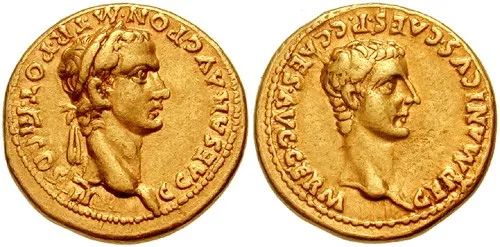
Uvođenje Aureusa od strane Julija Cezara omogućilo je ogromno i uspješno tržište koje se širilo diljem Europe i Mediterana.
Međutim, Neron je, u nedostatku sredstava, počeo kovati novac sa sve manjom količinom plemenitog metala. S ovim trikom mogao je računati na mnogo više sredstava da ugodi narodu, primjerice davanjem kruha i igara.
Što su financije bile lošije, to se više metala oduzimalo. Od 8 grama Cezarovog Aureusa, sa godinama se prešlo na novčić sa samo 4,5 grama zlata. To je omogućilo carevima da troše iznad svojih mogućnosti, stvarajući osnove za ekonomsku propast carstva.
Kraj Carigrada također se poklopio sa devalvacijom novca. Sa novčanim padom dogodio se i kulturni, financijski i vojni pad.
Pad rimskog carstva i stalna devalvacija novca stvorili su ozbiljne prepreke trgovini i naveli stanovništvo da se organizira u male samodostatne zajednice nepovjerljive jedna prema drugoj.
Preporod nakon razdoblja ratova i gladi koincidirao je s usvajanjem novog novčanog standarda. Sve je počelo u Firenci 1252. godine kada je grad uveo florin, zlatnik s fiksnom težinom. Zahvaljujući svojoj stabilnosti, florin je postupno zamijenio sve bakrene i brončane kovanice koje se lako inflatiralo i predstavljao je uzor cijeloj Europi. Venecija je bila prva koja je slijedila primjer Firence kujući Dukat, ali još 150 drugih gradova prilagodilo se novom standardu.
S procvatom trgovine Europa, a posebno Italija, doživjeli su veliki gospodarski i kulturni procvat.
Usvajanje jakog novca kroz povijest uvijek je bilo nagrađeno rastom i prosperitetom. Drugi primjer je Britansko Carstvo, najveće u ljudskoj povijesti, koje je usvojilo moderni zlatni standard 1717. Iako se zlatom nije više trgovalo u malim transakcijama, ono je i dalje ostalo kao referenca za novčanice.
Zemlje poput Indije i Kine skupo su platile izbor kasnije prilagodbe zlatnom standardu.

Dok je veći dio planeta usvajao zlatno standard, stigla je La Belle Epoque, jedno od najprosperitetnijih razdoblja u ljudskoj povijesti. Uz jaki novac zajednički svim zemljama poticana je trgovina, a stabilnost novca tijekom vremena omogućila je akumulaciju kapitala potrebnog za ulaganja.
Godine 1914., s Prvim svjetskim ratom, zlatni standard je suspendiran.
Ako su sa jakim novcem ratovi završavali kad je državi nedostajalo novca, sa slabim novcem to više nije bio problem. Skriveni porez, inflacija, omogućio je nastavak ratova sve dok cjelokupno nacionalno bogatstvo nije erodirano.

Nakon rata, Sjedinjene Države doživjele su najgoru gospodarsku krizu ikada zabilježenu: Veliku depresiju. Uvriježeneo je mišljenje da se iz depresije izašlo zahvaljujući povećanju javne potrošnje (New Deal). Zapravo, kreditna ekspanzija 1920-ih je to uzrokovala, a New Deal je samo pogoršao situaciju.
U 1930-ima države su nastavile napuhavati valute.
Totalitarni režimi imali su svaki interes financirati se bez ubiranja poreza.
Keynes, ekonomist koji je rat smatrao učinkovitim načinom borbe protiv nezaposlenosti, teoretizirao je izlazak iz zlatnog standarda.
Drugi svjetski rat doista nije kasnio.
Godine 1971. Sjedinjene države definitivno napuštaju zlatni standard, započevši neobuzdanu monetarnu ekspanziju koja traje sve do danas. Za predodžbu: ako je 1971. unca zlata vrijedila 35 dolara, danas vrijedi 1500.

Korištenjem lako inflatornih valuta riskira se hiperinflaciju, odnosno drastičan gubitak kupovne moći u kratkom vremenu.
Primjeri hiperinflacije su Njemačka 1920-ih s dnevnom inflacijom od 20%, te Mađarska 1940-ih s dnevnom inflacijom od 207%.
U Mađarskoj su se cijene udvostručavale svakih 15 sati, što je učinilo apsolutno nemogućim uštedu i prijenos vrijednosti tijekom vremena.
Očigledno sve to ne bi bilo moguće s novcem koji teško podliježe inflaciji.
Bitcoin
Prije Bitcoina bile su moguće samo dvije vrste plaćanja:
-
Gotovinska plaćanja bez posrednika
-
Elektronička plaćanja putem posrednika
Gotovinska plaćanja su trenutna, ali zahtijevaju fizičku prisutnost obiju strana. Elektronička plaćanja mogu se izvršiti i na daljinu, ali za to je potreban posrednik koji ovjerava plaćanje i naplatu.
Bitcoin je prvi oblik novca koji omogućuje elektronička plaćanja bez uključivanja posrednika kao što su države ili banke, a to ga također čini prvom valutom koja nije podložna inflaciji, koja se ne može zaplijeniti, koja se ne može cenzurirati, koja može prenijeti vrijednost bolje od bilo čega kroz redove veličine, prostor i vrijeme.
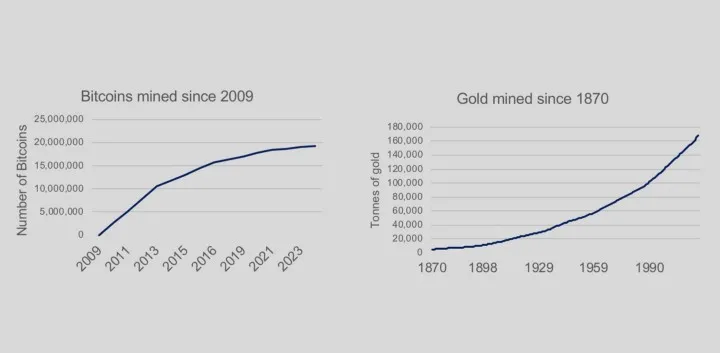
Ako zlato ima inflaciju koja fluktuira oko 2%, Bitcoin ima inflaciju koja se prepolovi svake 4 godine sve dok ne dosegne nulu i ostane tamo zauvijek. Bitcoin je, dakle, prva valuta u povijesti koja će imati nultu inflaciju.
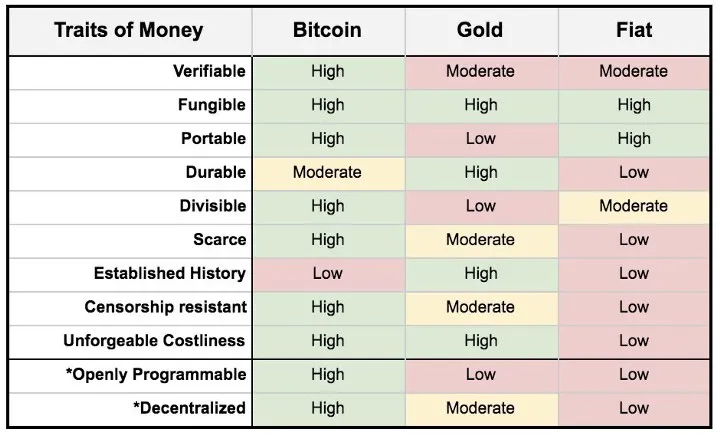
Prednosti Bitcoina u odnosu na zlato su ogromne: lakše ga je prenositi, omogućuje veću transparentnost i jamči manju inflaciju.
S manje inflacije:
1 - čuva se vrijednost tijekom vremena;
2 - olakšava se trgovanje;
3 - olakšava se ekonomska računica;
4 - jamči se sloboda pojedincima neovisno od središta moći.
Vremenska preferencija
Racionalnim pojedincima je uvijek bolje odmah pristupiti nekom dobru nego to odgađati tijekom vremena. Upravo zato se čekanje u gospodarstvu uvijek mora nagraditi.
Vrednovanje budućnosti u odnosu na sadašnjost omogućuje proizvodnju kapitalnih dobara, odnosno dobara stvorenih ne za potrošnju, već korisnih za proizvodnju budućih dobara.
Primjer: s čamcem se ulovi više ribe nego golim rukama, ali da bi se izgradio čamac potrebno je žrtvovati vrijeme i energiju bez istančane nagrade.
Zamislimo dvije individue na pustom otoku.
Laura budućnost shvaća vrlo ozbiljno;
Mario preferira trenutačno zadovoljstvo.
Mario provodi 8 sati dnevno kako bi golim rukama ulovio potrebnu ribu. Laura čini isto, ali nakon pecanja još dva sata posvećuje izradi štapa za pecanje. Nakon tjedan dana Laura je dovršila štap za pecanje i time može pokriti svoje dnevne potrebe u pola vremena koliko je potrebno Mariu. Sljedećih mjeseci, radeći isto sati kao i Mario, Laura ima vremena izgraditi čamac, mrežu i druge alate koji joj omogućuju da u jednom satu ulovi puno više ribe nego što Mario ulovi kroz cijele dane.

Na Stanfordu, 1960. napravljen je eksperiment.
Djeci je ponuđen slatkiš uz obećanje da će dobiti još jedan ako izdrže 15 minuta da ga ne pojedu. Djeca su stoga morala birati hoće li odmah dobiti jedan slatkiš ili dva nakon 15 minuta. Godinama kasnije, pronađena je korelacija između onih koji su uspjeli odgoditi zadovoljstvo i onih koji su postigli veće akademske i sportske rezultate.
Odgađanje zadovoljstva omogućuje štednju.
Štednja omogućuje investicije.
Investicije povećavaju produktivnost.
Štednja se općenito potiče u sigurnim društvima, gdje su porezi niski i gdje je vlasništvo zaštićeno. Temeljni čimbenik u jamčenju štednje je imati jaku valutu, koju se ne može lako napuhati. Ako valuta stalno gubi vrijednost, više se potiče da je se potroši nego da je se sačuva.
Prijelaz s valute koja gubi vrijednost na valutu koja svoju vrijednost zadržava stoga je ključno na duge staze, jer to može činiti razliku izmađu rasta ili pada jednog društva.

Valuta koja s vremenom gubi vrijednost obeshrabruje štednju u korist potrošnje, rizičnih ulaganja i zaduživanja.
Jaka valuta, osim što pogoduje štednji, poboljšava i ekonomsku računicu, odnosno omogućuje mjerenje iskusnosti resursa i donošenje racionalnih odluka o proizvodnji i potrošnji.
Npr: ako je roba za kojom postoji velika potražnja oskudna, povećanje cijene potiče njezinu proizvodnju i obeshrabruje potrošnju.
Obrnuto, ako dobra za kojim nema potražnje ima puno, pad cijene obeshrabruje njegovu proizvodnju i potiče potrošnju.
Ista dinamika vrijedi i za novac čija se cijena naziva “kamatna stopa”.
Trošak zajmova trebao bi se smanjiti ako je štednje puno, a porasti ako je štednje malo, kako bi uvijek postojala ispravna ravnoteža i ispravni poticaji.
Ponovimo koncept: ako malo tko posuđuje, kamate bi trebale pasti, tako da olakšava posuđivanje novca. Ako pak mnogi traže posudbe, kamate bi trebale porasti, kako bi se destimuliralo traženje kredita i poticala štednja.
Sa slabom valutom događa se umjesto toga da kamatne stope ne odražavaju ravnotežu između štednje i ulaganja. Centralne banke stvaraju kamatne stope koje su niže od tržišnih, potičući potrošnju i ulaganja čak i kad je štednja oskudna.
Uz investicije koje zahtijevaju više sredstava nego što su stvarno dostupna, sistemske krize su neizbježne.
Djeluje ovako:
-
Stvori se nova valuta
-
Povećaju se investicije
-
Smanjuje se štednja
-
Pokreće se više ulaganja nego što ima raspoloživih sredstava
-
Investicije propadaju
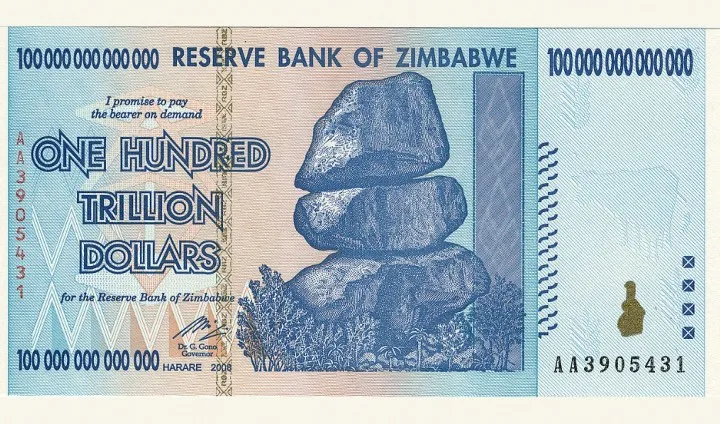
Valute koje gube vrijednost ne dopuštaju cijenama da signaliziraju stvarnu oskudicu resursa, dakle da koordiniraju proizvodnju i potrošnju.
Loše investicije, nastale zbog niskih kamata i gubitka vrijednosti valute, glavni su uzrok gospodarskih kriza.
Cilj centralnih banaka je “jamčiti stabilnost cijena” povećanjem i smanjenjem količine novca. Ali osigurati stabilnost cijena promjenom mjerne jedinice je apsurdno. Mjerna jedinica je fiksna po definiciji, ne može se mijenjati ovisno o mjerenom objektu.
Stalno mijenjanje mjernih jedinica samo stvara zbunjenost, otežava ekonomsku kalkulaciju i onemogućuje pravilnu raspodjelu resursa.
Primjer: tvrtka kojoj su trebale godine da stekne konkurentsku prednost može gledati kako ona nestaje u nekoliko minuta ako je valuta zemlje dobavljača precijenjena, a valuta kupca devalvira. Tvrtka će stoga biti prisiljena zatvoriti se unatoč činjenici da realno proizvodi veliku vrijednost.
Postojanje stotina različitih valuta čija se vrijednost stalno mijenja stvara ekonomsku štetu, ne samo za resurse koji se koriste u razmjeni, već prije svega zbog nemogućnosti ekonomske kalkulacije.
Vjerujući da favoriziraju izvoz, države teže devalviranju valuta, ne shvaćajući da zapravo favoriziraju strane kupce. Novčana devalvacija nije ništa drugo nego javno financiranje izvoza, odnosno prodaja vlastite robe ispod cijene.
Ovi bi problemi nestali kad bi se koristila jedna globalna referentna valuta sa sigurnom vrijednošću.
Najveća iluzija suvremenog svijeta je ideja da vlada mora upravljati valutom.

Po Keynesu, vlada je morala poticati potrošnju u sadašnjosti i obeshrabrivati štednju za budućnost. Onima koji su mu isticali da su te politike dugoročno pogubne odgovarao bi da smo “dugoročno svi mrtvi”. Ali dugoročno, prije ili kasnije, stigne.
Jaku valutu po Keynesu je trebalo izbjegavati jer je obeshrabrivala potrošnju. Ono što nije razumio je da samo štednja dugoročno omogućuje održiva ulaganja.
Slabe valute i ratovi
Postoje tri faktora koji povezuju slabe valute i ratove:
-
Tečajne razlike i konkurentske devalvacije su prepreke slobodnoj trgovini koje se često rješavaju vojnim intervencijama. Jaka transnacionalna valuta olakšava trgovinu, ako prolazi roba nema potrebe za prolaskom vojske.
-
Ako su sa jakom valutom resursi za rat ograničeni na poreze, s inflatornom valutom država može izvlačiti bogatstvo bez ograničenja. Mogućnost stvaranja novca stoga omogućuje državama nastavak ratova i nakon što im ponestane sredstava u proračunu, sve do potpune erozije nacionalnog bogatstva.
-
Jaka valuta potiče suradnju i obeshrabruje sukobe koji bi mogli biti korisni samo kratkoročno. Što je više suradnje, što je veće tržište, to je više mogućnosti za specijalizaciju, a što je veća podjela rada, to je veća produktivnost.
Imati neinflatornu valutu također je jamstvo slobode protiv tirana.

Ako tiranin ne može stvarati novac, prisiljen ga je tražiti u obliku poreza ili posudbi, a ako se građani ne slažu sa suludom politikom tiranina mogu ga prestati financirati ili mu barem zagorčati život.
Slaba valuta, s druge strane, daje vladama mogućnost neograničene potrošnje i kupovanja pristanka stanovništva kratkoročnim ulaganjima.
Sposobnost stvaranja novca znači potencijalno neograničenu moć, a povijest je puna primjera u kojima je ta moć korištena na razorne načine.
Nije slučajnost da su svi najgori tirani u povijesti (Lenjin, Staljin, Mao, Hitler, Robespierre, Pol Pot, Mussolini, Kim Jon Il itd.) operirali sa slabom valutom koju su mogli stvarati po svom nahođenju. Jer izvlastiti je puno lakše nego naplatiti porez.
Bitcoin omogućuje prijenos novca i njegovo pohranjivanje bez potrebe za traženjem bilo čijeg dopuštenja.
Bitcoin se ne može uništiti, ne može se konfiscirati, ne može se krivotvoriti. Zbog toga je i osiguranje od pretjerane moći vlada i banaka.
Bitcoin je ekstremno učinkovit kao sredstvo razmjene budući da je digitalan, a iznimno je učinkovit kao pohrana vrijednosti imajući inflaciju koja teži ka nuli. Još uvijek je prevolatilan da bi bio obračunska jedinica, ali ima sve karakteristike da postane najbolja obračunska jedinica u povijesti.
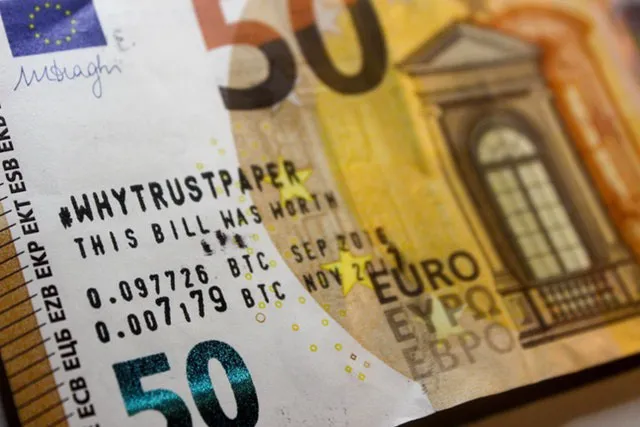
-
-
 @ 19279658:92b3da05
2024-12-26 06:13:27
@ 19279658:92b3da05
2024-12-26 06:13:27What better way to test out Stacker News to Nostr cross-posting than with a Meme.
Opt-in to Bitcoin and reduce your exposure to banks. Unless you are getting a loan from a bank to buy more bitcoin then I believe that's a solid play (within reason).
Meme isn't my own
originally posted at https://stacker.news/items/824519
-
 @ dfc7c785:4c3c6174
2025-01-07 15:28:43
@ dfc7c785:4c3c6174
2025-01-07 15:28:43For many years I’ve been researching my family tree. I’ve always been intrigued by my middle name of Brewster which many of you (perhaps) might associate with William Brewster of the pilgrim fathers who settled in America some 400 years ago, after a treacherous journey across the Atlantic that lasted weeks; scary to think I crossed it in just 10 hours not so long ago much like tens of thousands do year upon year.
My grandmother was convinced he was a direct ancestor of ours. My Grandad disagreed on the basis that they set sail childless, their first born entering the world once they had settled on American shores. So how could it be possible that we were descendants?
Anyway I inherited my middle name from hers and was thus christened Nicholas Euan Brewster in 1972.
During my school years other kids found it amusing and being a bespectacled nerd, they teased me no end. I instead learnt to love it because for me, as I’ve learnt over the years, it represents bravery, ingenuity, leadership and a general resilience to the world around me. Surviving against all the odds.
I’ve never been able to draw a direct connection between myself and William, other than to learn about a city of the same name on Cape Cod, that I flew over recently on that same flight but still have never visited to this day. Not far from there in the American version of Plymouth they came ashore, some distance from their intended destination of Virginia. Weather prevented them from making their way down the coast, so Massachusetts became their new settlement point.
Many years ago I was researching the Brewsters and spoke to a fellow Brewster in the USA via Compuserve, who sent me a massive box of DVDs with genealogical data on them; holy Moses, I was overwhelmed and came to realise there were perhaps zillions of us. The information was interesting but I had no real way of making that link, even if there ever was one to be found.
In the end I turned back to reading the bundle of notes my late grandmother had left us, including a family tree and some papers on another man who became just as interesting to me. His name was Alfred Berry Brewster born of Victorian London.
The following was sourced from - https://www.soldiersofthequeen.com/softheq-nile-valley
Egypt, the Nile Valley & Sudan
In Khedival Service
What was the [[Khedival Service]]?
Alfred Berry Brewster was born in London, England on 7 November 1856.
Whereabouts in London was he born?
Brewster Bey entered Egyptian Service in 1877 (aged 21) in the Customs Administration and Coastguard Service. In 1879 he was appointed to the position of Director of Customs at [[Suakin]] by [[General Gordon]]. He served in the Commissariat staff during the Egyptian Campaign and was awarded the Egypt Medal w/Clasp as well as the Khedive's Star. He returned to Suakin and in 1883 did duty in Valentine Baker Pasha's Intelligence Department (1884).
In 1885 he served under General Graham at Suakin as Chief Interpreter and Secretary to the Intelligence Department.
He took part in several engagements and received a Mention in Despatches from General Graham (30 May 1885). Most notably Brewster entered the Dervish camp alone before a planned attack on Saukin and convinced a large number of the enemy to come over to the British side. These same men later served in the capture of Tamai.
Brewster remained Director of Customs for Saukin until 1890 when he transferred to the Coastguard Service as Secretary and Controller. He was chosen as Private Secretary by both Khedive Mohammed Tewfik and Abbas II.
![[Pasted image 20241229083331.png]] Further reading
https://www.britishmuseum.org/collection/term/BIOG121543
https://www.soldiersofthequeen.com/alfredberrybrewsterbey
https://www.soldiersofthequeen.com/alfredberrybrewsterbey
-
 @ 434a234c:0a2f68b4
2024-12-25 21:25:17
@ 434a234c:0a2f68b4
2024-12-25 21:25:17To Review Part 6 (https://stacker.news/items/800668/r/AndyAdvance)
Scoring rubric is as follows: 5 - This law promoted 360 degrees of freedom. Bitcoiners around the world would champion this 4 3 2 1 - This bill is something straight out the communist/socialist playbook very anti freedom. Leads to forever wars endless spending and bad wellbeing for the american people
Now a look at the seventh bill that became law. Public Law No: 111-164 (05/07/2010)
H.R.4360 - To designate the Department of Veterans Affairs blind rehabilitation center in Long Beach, California, as the "Major Charles Robert Soltes, Jr., O.D. Department of Veterans Affairs Blind Rehabilitation Center"
Source( https://www.congress.gov/bill/111th-congress/house-bill/4360?q=%7B%22search%22%3A%22lummis%22%7D&s=1&r=52)
The Bill in Summary:
Designates the Department of Veterans Affairs blind rehabilitation center in Long Beach, California, as the "Major Charles Robert Soltes, Jr., O.D. Department of Veterans Affairs Blind Rehabilitation Center."
The Score (2/5)
Yawn. A naming bill. No offence to Major Roberts and his family but once again Congress is serving a special interest here. The time and resources wasted on voting on such a bill is ridiculous. Stuff like this could be delegated down to the Governor of the State or the Director of the VA if the duty is inherently federal. Instead of wasting time and resources of the American public this can be easily managed within the VA alone no need for an act of Congress. Create a board within the VA appointed by the President and name the VA facilities. Task done at the fraction of the time and cost of an act of Congress.
I gave this a score of two because naming buildings does nothing for 99.99% of Americans. Not to disrespect the service Major Roberts provided to the country but we don't need 100 Senators and almost 500 House Representatives who all make more that $170k (1.5 BTC!) a year to vote on naming bills. Time and resources can be better spent somewhere else.
Total Score (17/35)
After seven bills Sen. Lummis has 17 points out of a total 35. That is good for 48% freedom score.
The more I dig into these bills the more I am finding out that Congress passes a lot of laws that 99.99999% Americans just don't care about. Sen. Lummis hasn't shown to be raging Neo-Con yet but these coin and building naming bills are a joke. I am sure Major Roberts didn't serve our country for him to be named after a VA center. If he was alive most soldiers are humble and would say no don't name that building after me. But here we are Congress doing more nonsense.
originally posted at https://stacker.news/items/824233
-
 @ 2355757c:5ad3e04d
2025-01-07 15:16:37
@ 2355757c:5ad3e04d
2025-01-07 15:16:37Grounding or Earthing, names for getting your good ole bare feet on the surface of the earth. Sounds simple because it is simple, but are the benefits really that profound? Short answer: YES
Grounding is really only so a modern health hack because we are so disconnected. Until the invention of modern footwear with insulated rubber/plastic soles, we were connected to the surface of the earth pretty much 24/7. Why does this matter? The Earth’s surface is a POOL of free electrons waiting for us to tap into. Electrons? Why do those matter. Electrons are the true currency of energy and the input to our energy production system (Electron Transport Chain) that produces ATP. The human body, like all other living things is electromagnetic. We use electrical signaling to operate our biology. Without a sufficient amount of electrons and sufficient voltage potential, our body will not function properly. However, it is not so simple to say more electrons = more health. If that were the case then we’d all be hooked up to copper wires absorbing current to level up our biology.
TOO MUCH of anything is bad. Our skin has resistance to protect us from shocks and lightning strikes (absorbing too much electrical current at once). However, our hands and feet (with thousands of nerve endings) have lower skin resistance. Lower resistance = better ability to conduct electricity. That is not a mistake. Through contact of our feet or hands on the ground, we are able to sustain a voltage differential up to a few hundred millivolts (depending on the surface). These electrons on the surface of the earth are willing to move to a less negatively charge area (us), and thus we are able to absorb a small amount of free flowing electrons into our body through our semi-conductive tissue on our hands and feet. Sounds cool, right? Now what are the actual benefits?
-
Managing Reactive Oxygen Species (ROS) and/or free radicals
-
Maintaining Proper Blood Flow & Pressure
-
Regulating Cortisol & Circadian Rhythm

Oxidative stress. Anti-oxidants. Free radicals. These are all terms you MAY be familiar with, but what do they actually mean? If you read my newsletter from last week on Travel, you will know a bit more about oxidative stress and the function of anti-oxidants (if not, I will link it HERE). The TLDR is that our energy production process in our mitochondria, otherwise known as the Electron Transport Chain (ETC), is not perfect. As a result of this, free radicals are generated. Free radicals are typically oxygen molecules or molecules that contain oxygen (aka reactive oxygen species) that have an unpaired electron in their valence shell. O2 is supposed to be converted into metabolic water (H2O), but as mentioned the efficiency is not 100%. Therefore you get molecules like superoxide (O2-) or hydroxyl radical (OH) that are hungry to fill the unpaired electron and go back to stability. “Anti-oxidants” combat these radicals by attempting to supply an electron before they steal one from elsewhere in the cell and cause damage. Enter in newly absorbed electrons from grounding. These free electrons absorbed from the earth can help combat the free radicals/ROS by acting as an anti-oxidant. This will in turn help your body get back to redox homeostasis and not suffer cellular damage from oxidative stress. Grounding, in turn “reduces inflammation”. The thermal images often touted alongside grounding (before/after) show a positive response (thermal imaging can be a bit dodgy in accuracy but it captures some essence of effectiveness).

Maintaining proper blood flow and blood pressure. Perhaps the most interesting and fundamentally undebatable benefit of grounding. As stated above we are electromagnetic beings, and our blood flow exemplifies that. Both the lining of the blood vessel and surface of our red blood cells have a negative charge. This negative charge is imperative because it prevents rouleaux and coagulation, or the stacking of blood cells. If you blood cells stack, they are far easier to clump/clot and cause a blockage. Like charges repel, so having a sufficient “zeta potential” or negative charge on our RBCs will keep the blood flowing smoothly. Grounding helps maintain that. A study linked HERE showed how Earthing/Grounding reduces blood viscosity.
“Grounding increases the surface charge on RBCs and thereby reduces blood viscosity and clumping. Grounding appears to be one of the simplest and yet most profound interventions for helping reduce cardiovascular risk and cardiovascular events.”

Regulating our circadian rhythm. A lesser touted benefit to grounding is its ability to influence our circadian rhythm or our “body clock”.
I am under the belief now that our circadian health is THE MOST IMPORTANT ASPECT of HEALTH. Why? Because literally all of our downstream biological functions are dictated by our circadian rhythm. This is why light, meal/exercise timing, sleep, connection to nature are all so important & interconnected.
The main input might be light, but that doesn’t mean there aren’t more inputs to the complex system that is our body. Connection to the earth is another. How do we know? Grounding has been proven to regulate cortisol rhythms. One of the biggest signs of a irregular circadian rhythm is cortisol and melatonin cycles that are out of whack. When you are grounded you are connected to the earth in the position of your geographical location. This is not proven, but its quite logical that the reason grounding helps regulate circadian rhythm is because along with those electrons you are getting a signal sent to your brain about the location/time/season it is where you are in that moment. It is the only logical explanation and it is one of the reasons I am such a big fan of grounding as MUCH as possible, especially after travel.

I recently released my first health optimization guide that includes all the travel hacks I use (including grounding) to completely avoid jet lag on long haul flights: AVOIDING JET LAG-An In Depth Guide to Hacking the Stressors of Travel.
This guide is extremely comprehensive, and application specific. It is a 30 page PDF that goes into WHY travel is so bad for us, and what you can do pre/during/post travel to avoid jet lag completely. If you travel often, this is worth checking out…but I warn you it is dense and only worth purchasing if you are willing to learn.
Grounding PROTOCOLS:
-
Just do it-bare feet on the ground
-
Length? 1 min is better than 0…5 min even better…2 hours even better still. There is no threshold dose.
-
Surfaces? Dirt/Grass/Rocks/Sand/Ocean all great. If it is wet and post thunderstorm, even better. Concrete works but asphalt is not the best.
-
Grounding shoes? Not comparable to barefoot but still better than rubber/plastic soled shoes. I will write more about this in the near future as I am conducting experiments with different shoes on different surfaces.
-
IT IS LITERALLY FREE
Big Grounding did not pay me to write this, even though I am an electrical engineer. Seriously, grounding is a no brainer. You may not “feel” anything, but the more you do it and the more disconnected you are to start…the better you will feel I can guarantee that. We are electromagnetic creates of Earth, it is about damn time we get back to connecting with our natural input signals.
Stay Sovereign,
-Tristan
Originally written July 25th, 2023
-
-
 @ 19279658:92b3da05
2024-12-25 19:15:52
@ 19279658:92b3da05
2024-12-25 19:15:52As the holiday season is here, many of us find joy in gifting toys, gadgets, and other presents to our loved ones, especially children. These gifts often bring smiles and excitement in the moment, creating cherished memories. But alongside the tradition of giving tangible gifts, there’s an opportunity to introduce something more enduring: the gift of sats.
A few thousand sats gifted to children each Christmas may not seem like much today, but their value could grow significantly over time. More than just a financial gesture, it’s a way of introducing them to the concept of sound money and Bitcoin’s potential to store and preserve value. In the future, when they look back at these small yearly contributions, they might come to appreciate not just the sats themselves, but the thoughtfulness behind the gesture.
For instance, I recently started a Bitcoin fund for my two-year-old cousin. I’ve saved 150,000 sats for him in cold storage, a gift he’s completely unaware of. My plan is to hold it safely until he turns 18 and gift it to him as a meaningful contribution to his future. I’ve also done the same for my daughter, but with an added twist—she gets monthly DCA (dollar-cost averaging) contributions into her own cold storage wallet using Bitkey. It’s a simple yet powerful way to ensure her future savings grow steadily over time.
This doesn’t mean you have to forgo traditional gifts. Children should still enjoy the magic of toys, games, and the excitement of unwrapping presents. But alongside those gifts, even a small yearly contribution of, say, 21,000 sats, can build up significantly over time. The key is consistency and ensuring proper UTXO management to keep things organized as these small contributions accumulate.
By starting small and making it a yearly tradition, you can turn the act of gifting sats into a lasting legacy. It’s a simple, thoughtful way to pass on something valuable that they’ll likely come to appreciate as they grow older and begin to understand the world of money and finance.
So, this Christmas (Today), consider adding a few thousand sats to your list of gifts for the ones you love. It’s a small step that could make a big impact in the years to come. Let’s keep up the spirit of giving, not just for today but for their futures.
originally posted at https://stacker.news/items/824140
-
 @ 5d4b6c8d:8a1c1ee3
2024-12-25 16:22:39
@ 5d4b6c8d:8a1c1ee3
2024-12-25 16:22:39The kid's sick this morning and we're awaiting our visiting relatives, so this is an unusually quiet and contemplative Christmas morning.
I've been reflecting on how I've changed since finding Stacker News and becoming a bitcoiner (in that order).
The change really struck me as I was looking through my podcast subscriptions for something to listen to. None of the current-events-focused establishment-critiquing pods appealed to me. I'm kind of over it.
Bitcoin has given me the ability to focus on the positive. We're on the building side. We're on the winning side. We're on the side that's saving the world from all the bad things being described in my podcast feed.
Stacker News has given me direct access to people who are every bit as interesting as those podcast hosts. Now, I can talk to interesting people, rather than just receiving their wisdoms.
I have every confidence that this trend will persist next year and I hope to see you all there.
Stay humble. Stack sats.
Tick-tock. Next block.
originally posted at https://stacker.news/items/823889
-
 @ dd81a8ba:3eb298a5
2025-01-07 15:02:49
@ dd81a8ba:3eb298a5
2025-01-07 15:02:49it's better to read 100 books 10 times than 1,000 books once
I don't know who originated this concept. I've heard it said by Naval. the idea is to go deep on a narrower slice of possible books than to be spread so thin. this isn't so much an algorithm as a heuristic, a tactic for filtering the kinds of books you read, and also a way to measure your own growth over time. I've had the experience of getting something different from reading the same book at different points in my life. deliberately checking in with different books regularly over time is a good way to get an informative but different perspective on your own mentality.
this is my list. I'll be short of 100 for a while, the point is to make a tangible artifact out of it, and update it over time. let me know if you have or make a similar list and I'll add a link to your list here.
update 2/24
since I created the 100 books page and started shaping my reading around it, I have reached 100 books, and now in order to add one to the list I must first evict one already on the list.
I have also encountered a different way to refer to this project, and a sharper take on what I’m doing. it comes from an author with one book on my list already and more to come, Italo Calvino. the introduction to his book “Why Read the Classics?” is a quick read, and well worth it.
A classic is a book that has never finished saying what it has to say.
first, he defines “classic” to mean any book that once read, you return to again and again, and continue finding new takes, new value, fresh perspectives on. actually he lists many criteria, but that’s roughly what it boils down to, books that have meaning to you, which you read repeatedly at different stages in your life, a through-line to return to.
The ranks of the old titles have been decimated, while new ones have proliferated in all modern literatures and cultures. There is nothing for it but for all of us to invent our own ideal libraries of classics. I would say that such a library ought to be composed half of books we have read and that have really counted for us, and half of books we propose to read and presume will come to count—leaving a section of empty shelves for surprises and occasional discoveries.
consider any of these books a welcomed topic of conversation.
the list was last updated on Jan 7th, 2025
| title | Author | Genre | |-------|--------|-------| | "The Myth of Sisyphus" | Albert Camus | philosophy | | "Brave New World" | Aldous Huxley | distopian science fiction | | "The Doors of Perception" | Aldous Huxley | non-fiction | | "The Civil War Short Stories of Ambrose Bierce" | Ambrose Bierce | supernatural horror | | "The Little Prince" | Antoine De Saint Exuprey | children's | | "Nichomachean Ethics" | Aristotle | philosophy | | "Rendezvous With Rama" | Arthur C Clarke | science fiction | | "Atlas Shrugged" | Ayn Rand | fiction | | "The Fountainhead" | Ayn Rand | fiction | | "The Fractal Geometry of Nature" | Benoit Mandelbrot | maths | | "The History of Western Philosophy" | Betrand Russell | philosophy | | "Four Archetypes: Mother/Rebirth/Spirit/Trickster" | Carl Jung | philosophy | | "The Undiscovered Self" | Carl Jung | philosophy | | "Roadside Geology of Missouri" | Charles Spencer | non-fiction | | "A Pattern Language" | Christopher Alexander | non-fiction | | "On the Good Life" | Cicero | philosophy | | "All the Pretty Horses" | Cormac McCarthy | fiction | | "Blood Meridian" | Cormac McCarthy | fiction | | "No Country for Old Men" | Cormac McCarthy | fiction | | "Stella Maris" | Cormac McCarthy | fiction | | "the crossing" | Cormac McCarthy | fiction | | "The Passenger" | Cormac McCarthy | fiction | | "The Road" | Cormac McCarthy | fiction | | "Flowers for Algernon" | Daniel Keyes | fiction | | "The Beginning of Infinity" | David Deutsch | non-fiction | | "Forty Tales From the Afterlives" | David Eagleman | magical realism | | "Networks, Crowds, and Markets: Reasoning about a Highly Connected World" | David Easley and John Kleinberg | non-fiction | | "We Are Legion [We Are Bob]" | Dennis Taylor | science fiction | | "Godel, Escher, Bach" | Douglas Hofstadter | philosophy | | "The Discourses" | Epictetus | philosophy | | "The Revelations" | Erik Hoel | fiction | | "Kafka the Complete Stories" | Franz Kafka | fiction | | "The Mythical Man-Month" | Fred Brooks | non-fiction | | "Thus Spake Zarathustra" | Friedrich Nietzsche | philosophy | | "Crossing the Chasm: Marketing and Selling Disruptive Products to Mainstream Customers" | Geoffrey A. Moore | non-fiction | | "Nineteen Eighty-Four" | George Orwell | distopian science fiction | | "A Swim in a Pond in the Rain" | George Saunders | literature | | "Eon" | Greg Bear | science fiction | | "On Bullshit" | Harry G Frankfurt | philosophy | | "Walden and Other Writings" | Henry David Thoreau | non-fiction | | "Moby Dick" | Herman Melville | fiction | | "Siddhartha" | Hermann Hesse | philosophy | | "I, Roboot" | Isaac Asimov | science fiction | | "The Foundation" | Isaac Asimov | science fiction | | "The Naked Sun" | Isaac Asimov | science fiction | | "The Proper Study of Mankind" | Isaiah Berlin | philosophy | | "Invisible Cities" | Italo Calvino | magical realism | | "The Perigrine" | J A Baker | non-fiction | | "Chaos: Making a New Science" | James Gleick | non-fiction | | "Finite and Infinite Games: A Vision of Life as Play and Possibility" | James P. Carse | philosophy | | "Fancies and Goodnights" | John Collier | fantasy | | "The Dictionary of Obscure Sorrows" | John Koenig | fiction | | "Annals of the Former World: " | John McPhee | non-fiction | | "The Curve of Binding Energy" | John McPhee | non-fiction | | "Collected Fictions" | Jorge Luis Borges | fantasy | | "Hero With a Thousand Faces: The Collected Works of Joseph Campbell" | Joseph Campbell | philosophy | | "Heart of Darkness" | Joseph Conrad | fiction | | "The Death of Ivan Illych and Other Stories" | Leo Tolstoy | literature | | "The Mandibles" | Lionel Schriver | fiction | | "A Wrinkle in Time" | Madeleine L'Engle | young adult | | "M.C. Escher: His Life and Complete Graphic Work" | many | non-fiction | | "Meditations" | Marcus Aurelius | philosophy | | "Genome: The Autobiography of a Species in 23 Chapters" | Matt Ridley | science | | "Prey" | Michael Crichton | science fiction | | "Sphere" | Michael Crichton | fiction | | "Personal Knowledge: Towards a Post-Critical Philosophy" | Michael Polanyi | philosophy | | "Flow: The Psychology of Optimal Experience: Steps Toward Enhancing the Quality of Life" | Mihaly Csikszentmihaly | non-fiction | | "The Epic of Gilgamesh" | N. K. Sandars | legendary fiction | | "An Introduction to Population Genetics" | Nielson and Slatkin | non-fiction | | "Ender's Game" | Orson Scott Card | science fiction | | "Alas Babylon" | Pat Frank | science fiction | | "Hackers and Painters: Big Ideas from the Computer Age" | Paul Graham | non-fiction | | "The Alchemist" | Paulo Coelho | magical realism | | "Do Androids Dream of Electric Sheep" | Philip K Dick | science fiction | | "The Collected Stories of Philip K Dick Volume 5" | Philip K Dick | science fiction | | "The Trial and Death of Socrates" | Plato | philosophy | | "The Soundscape" | R. Murray Schafer | non-fiction | | "Dandelion Wine" | Ray Bradbury | fiction | | "Fahrenheit 451" | Ray Bradbury | fiction | | "Something Wicked This Way Comes" | Ray Bradbury | fiction | | "The Martian Chronicles" | Ray Bradbury | science fiction | | "The Selfish Gene" | Richard Dawkins | non-fiction | | "Surely You're Joking, Mr Feynman" | Richard Feynman | biography | | "The Creative Act: A Way of Living" | Rick Rubin | self-help | | "Zen and the Art of Motorcycle Maintenance: An Inquiry Into Values" | Robert Persig | fiction | | "Letters From a Stoic" | Seneca | philosophy | | "The Art of Living" | Sharon Lebell | philosophy | | "The Dark Tower" | Stephen King | fiction | | "Piranesi" | Susanna Clarke | magical realism | | "Stories of Your Life and Others" | Ted Chiang | science fiction | | "The Structure of Scientific Revolutions" | Thomas Kuhn | non-fiction | | "Common Sense" | Thomas Paine | philosophy | | "The Kon-Tiki Expedition: A Raft Across the South Seas" | Thor Heyerdahl | non-fiction | | "The Kingdom of Speech" | Tom Wolf | non-fiction | | "The Right Stuff" | Tom Wolf | historic fiction | | "True Names: and the Opening of the Cyberspace Frontier" | Vernor Vinge | cyberpunk | | "Man's Search for Meaning" | Viktor Frankl | philosophy | | "The Shape of Things" | Vilem Flusser | non-fiction | | "The Twilight World" | Werner Herzog | historic fiction | | "Neuromancer" | William Gibson | cyberpunk |
